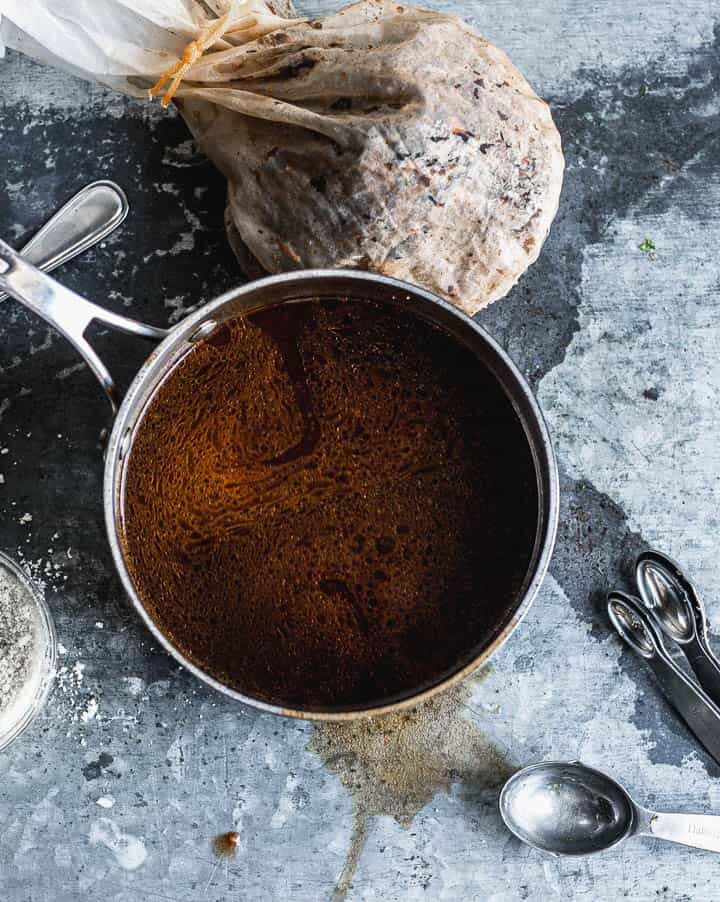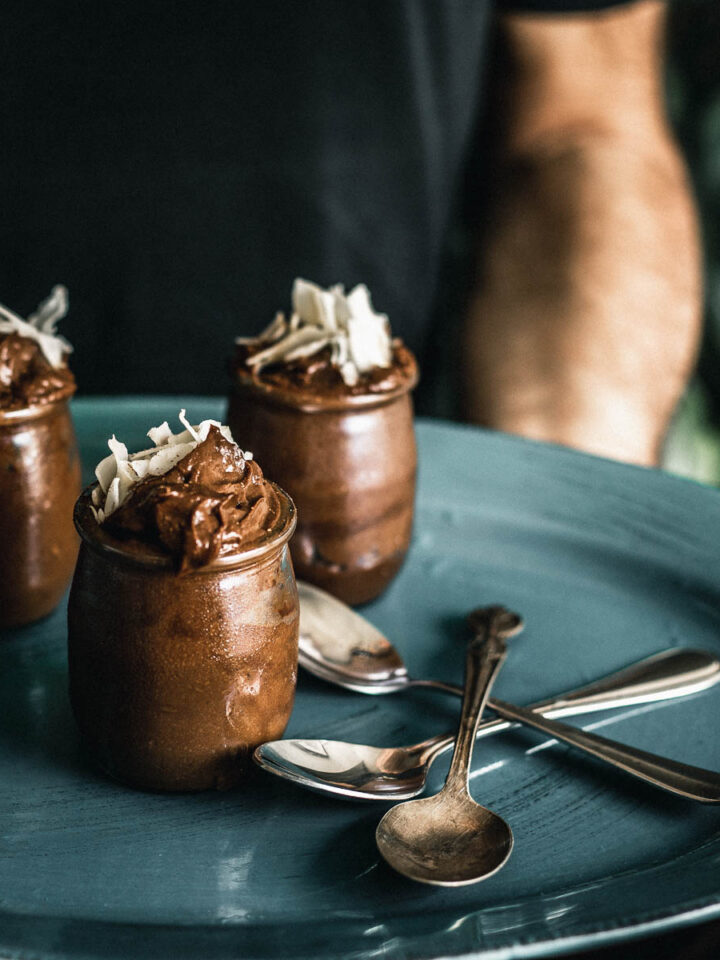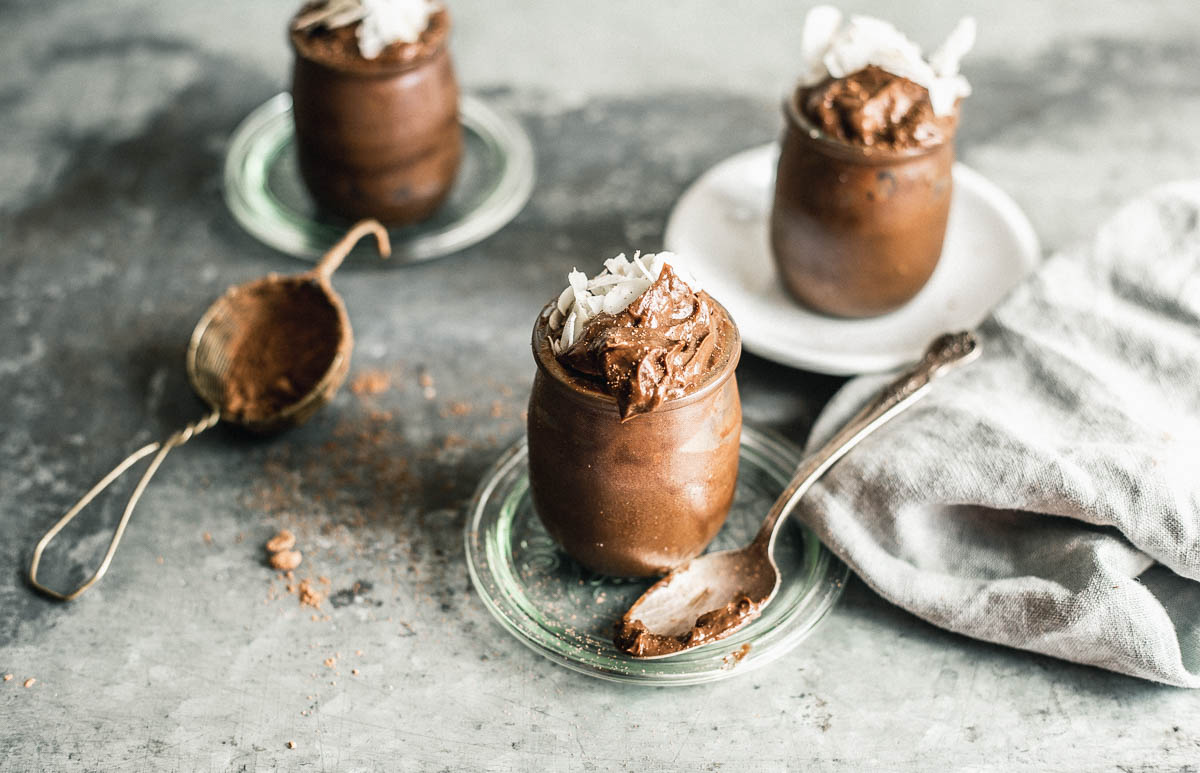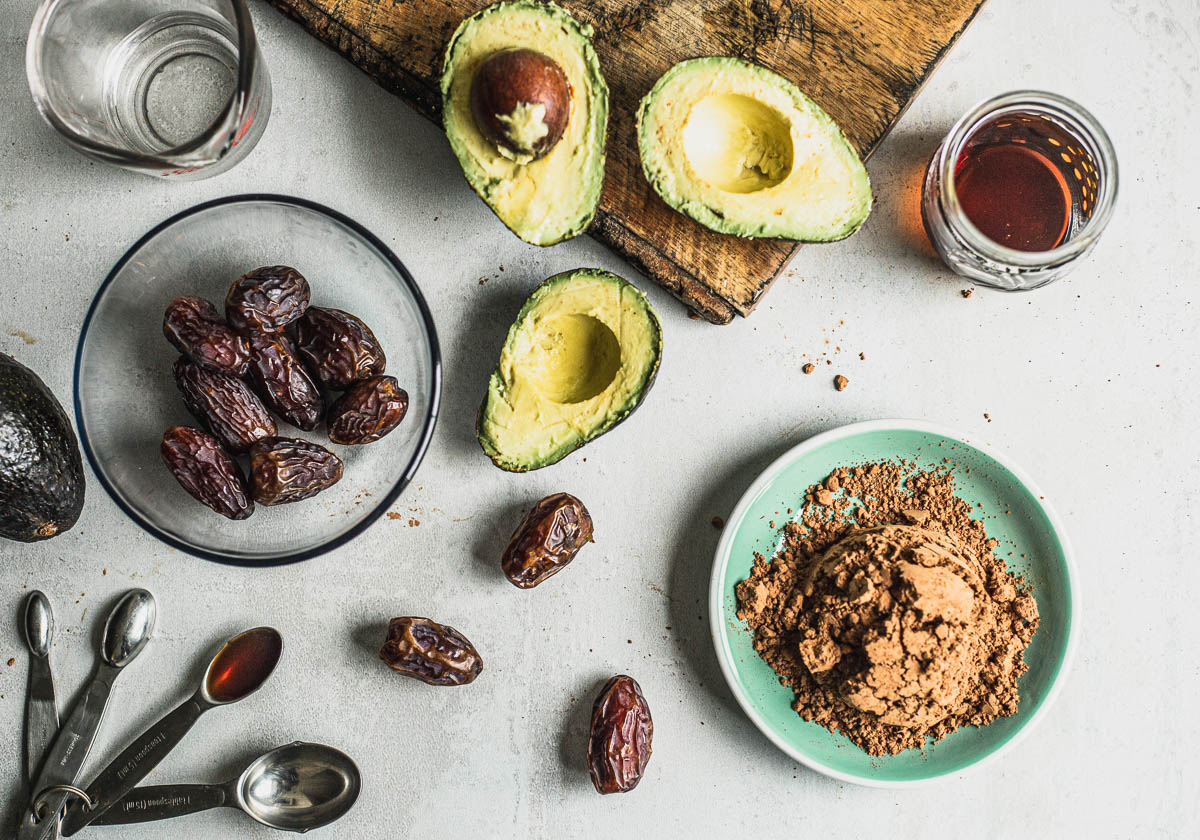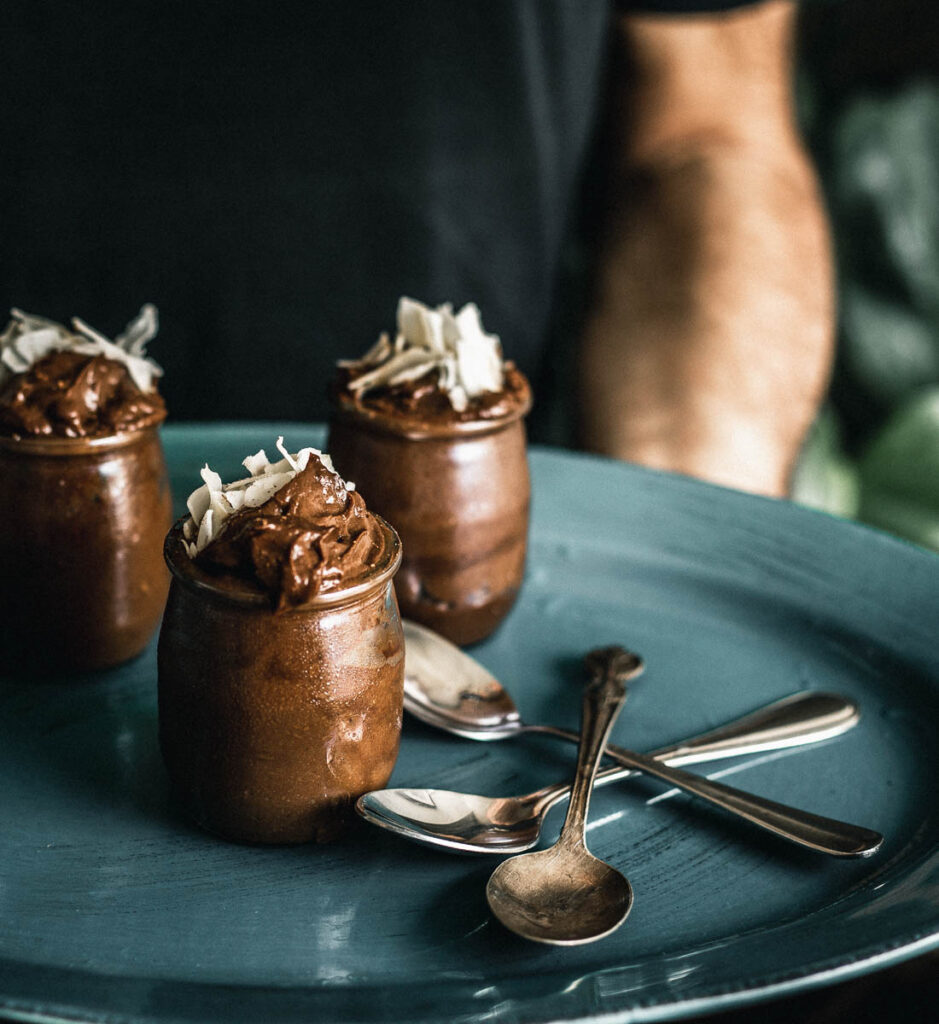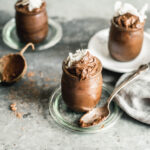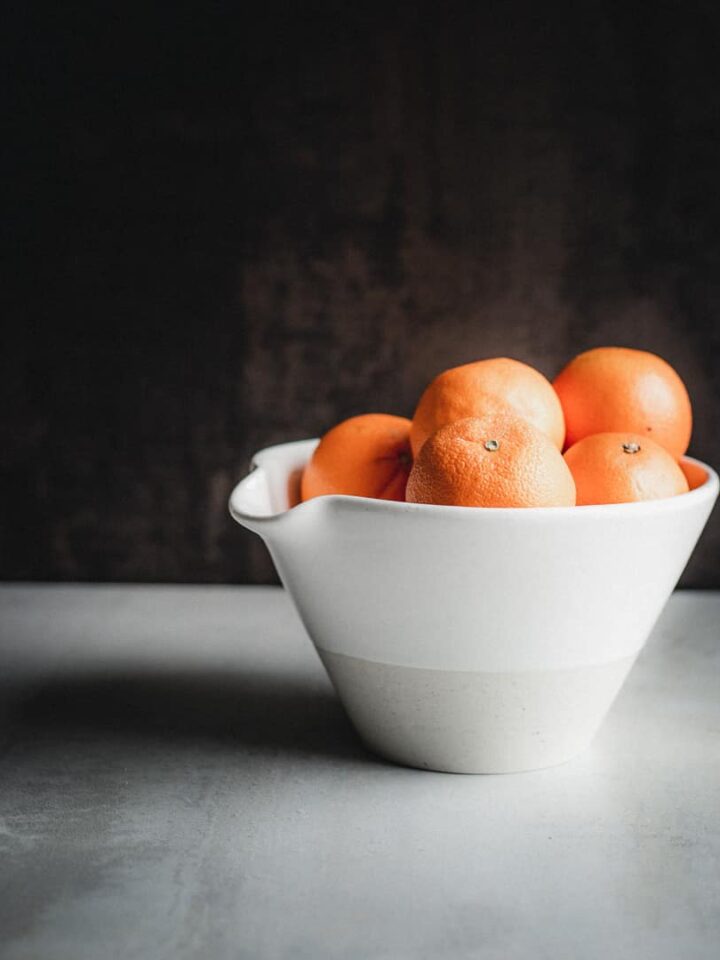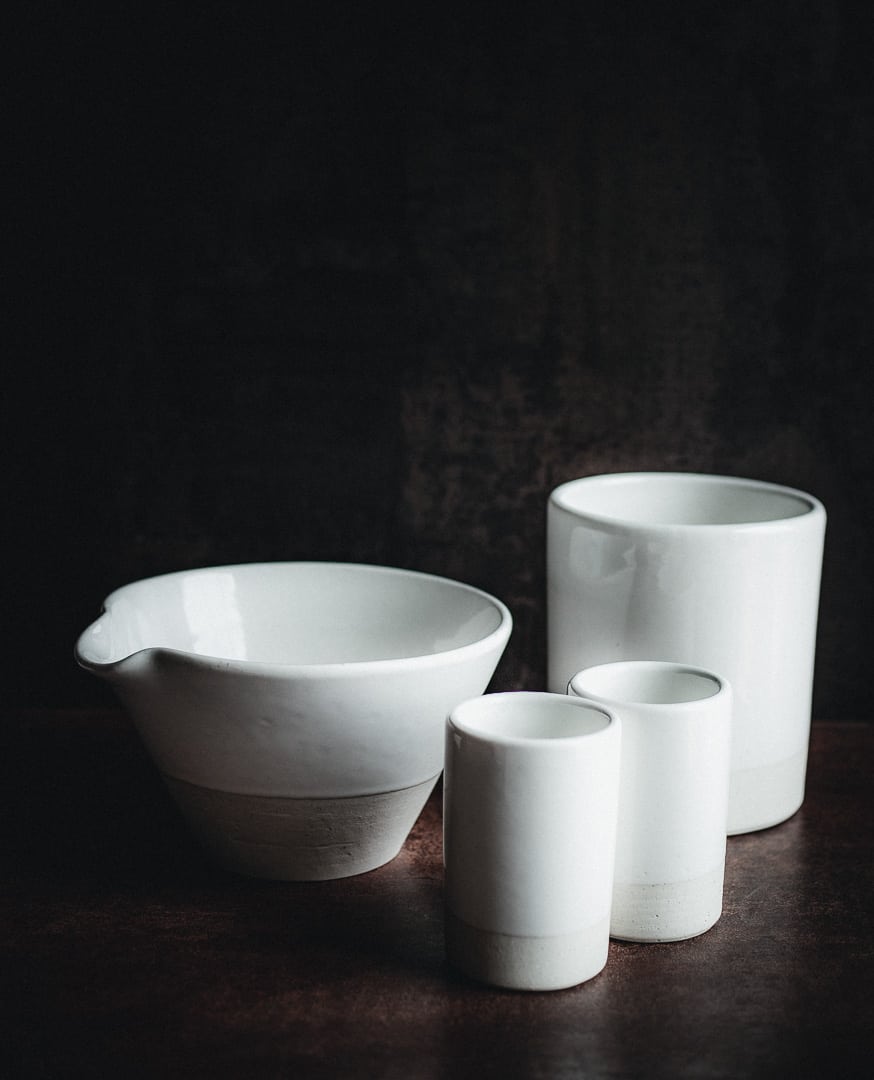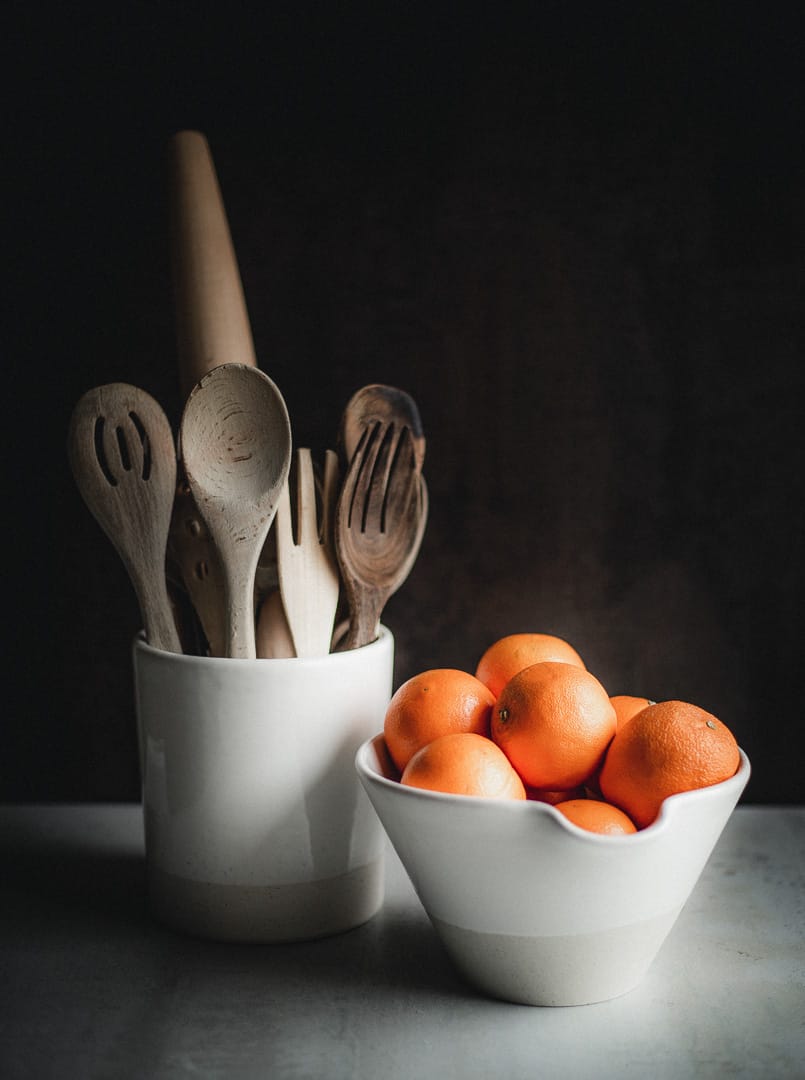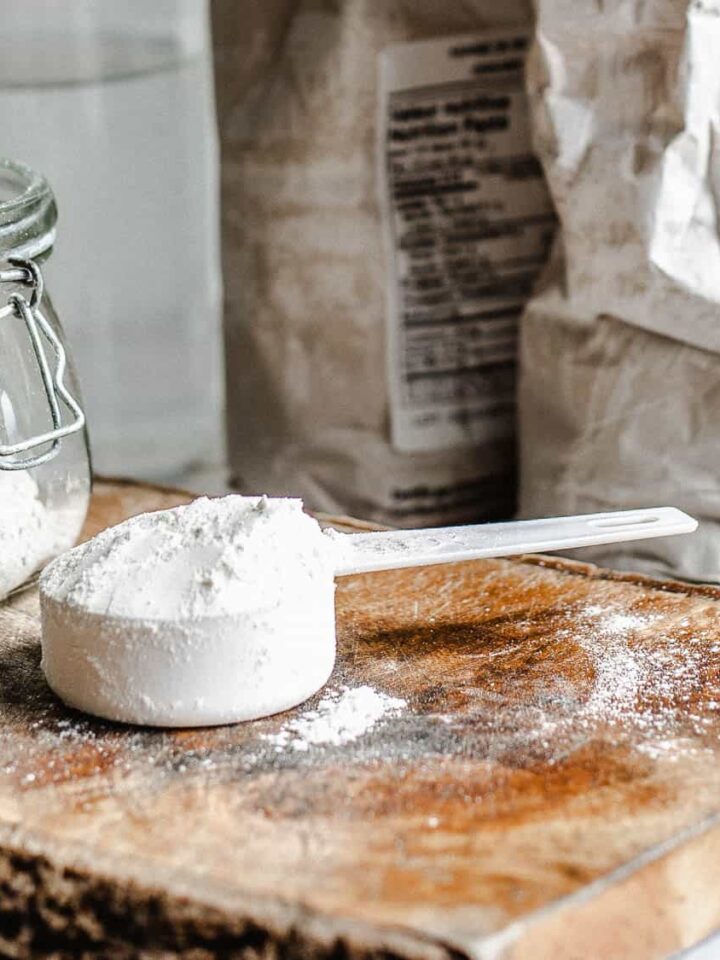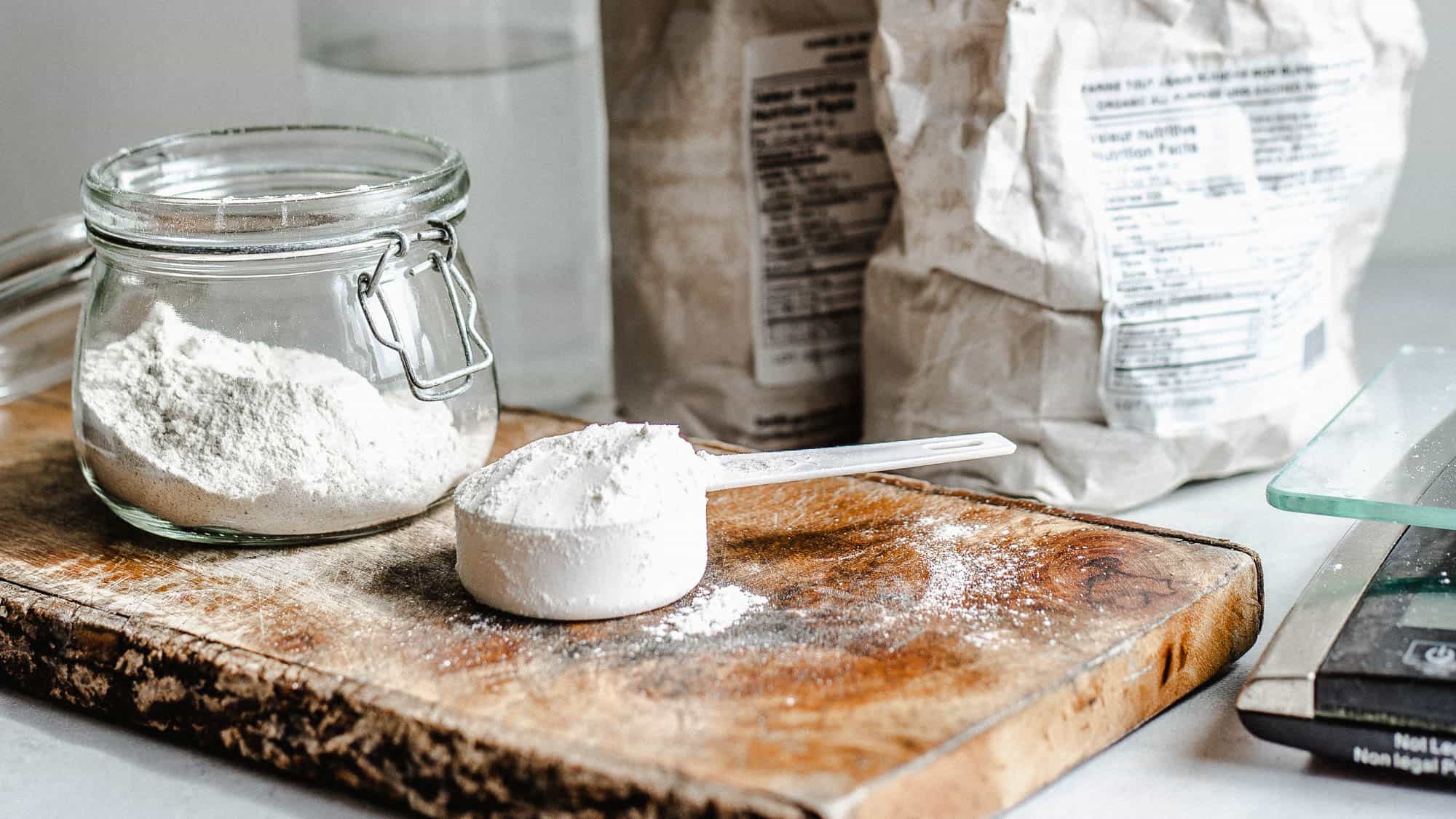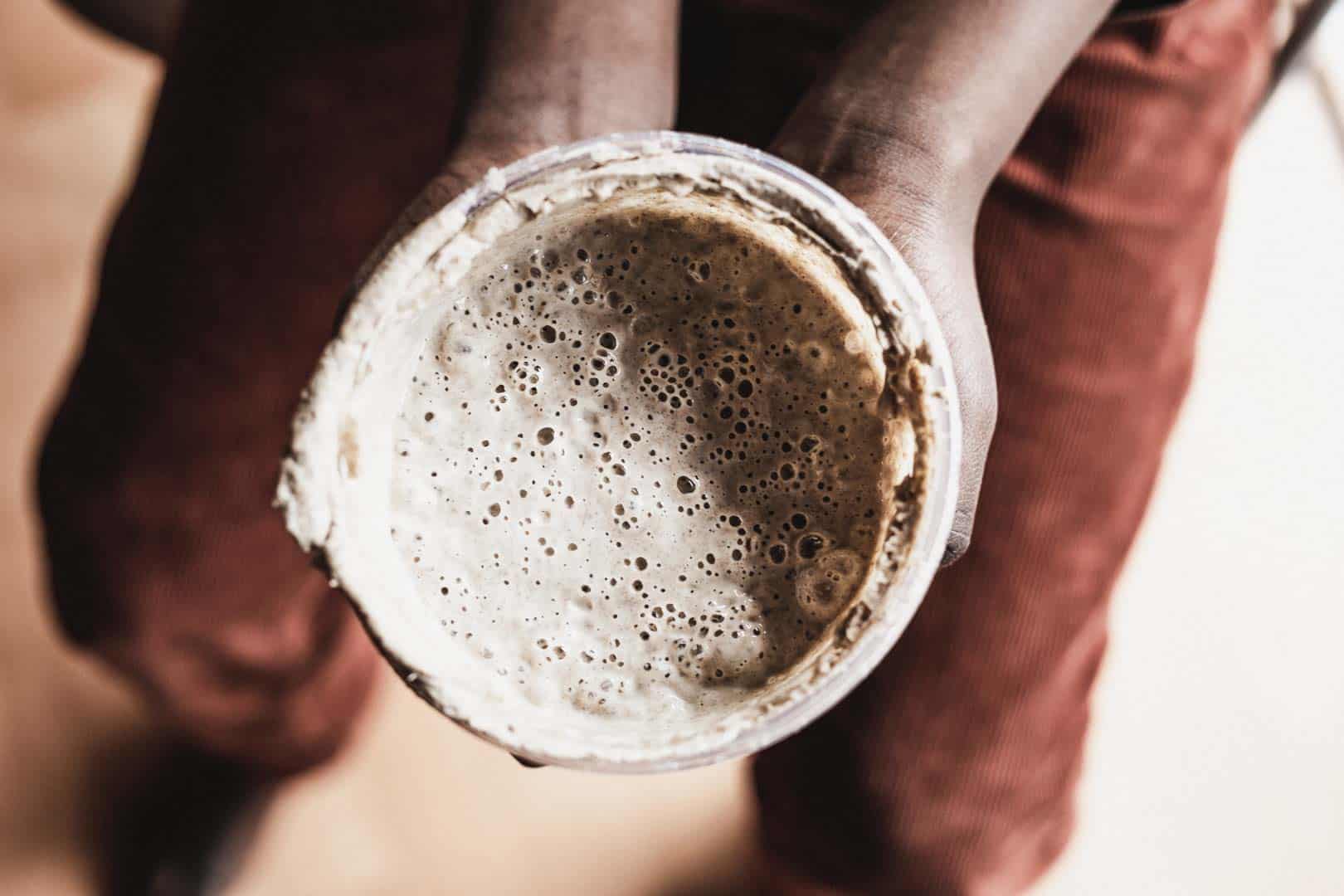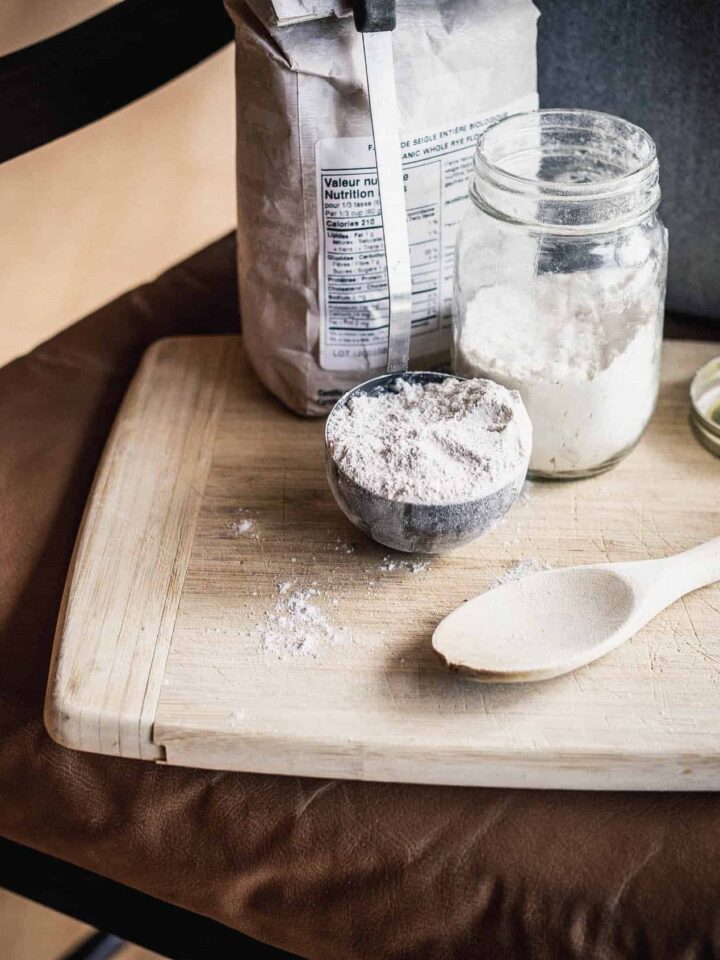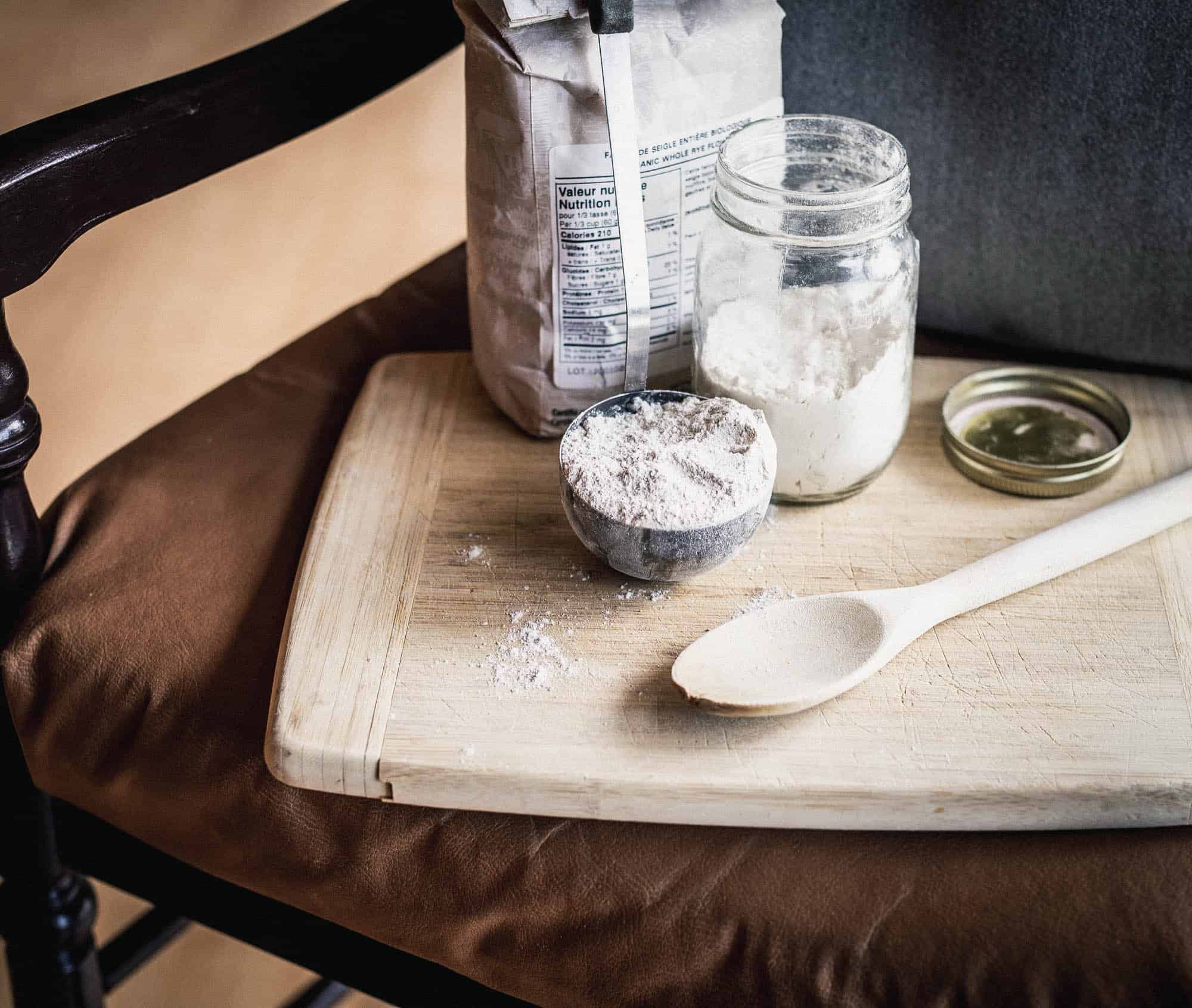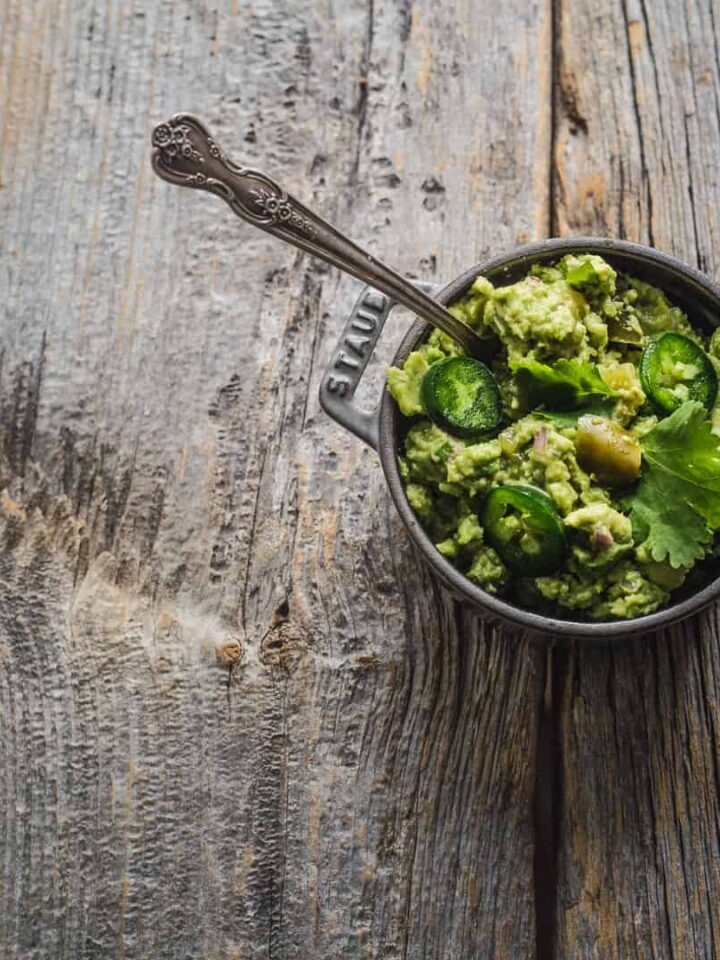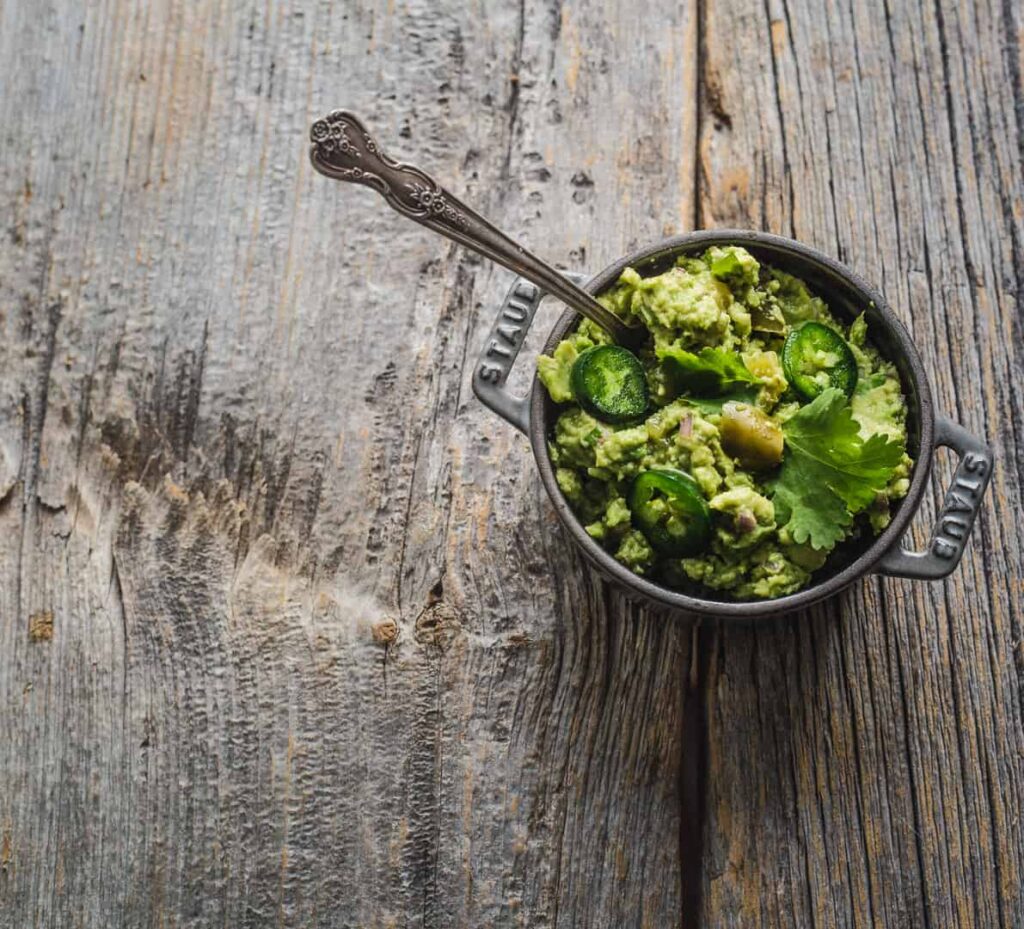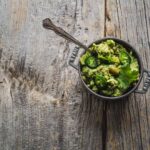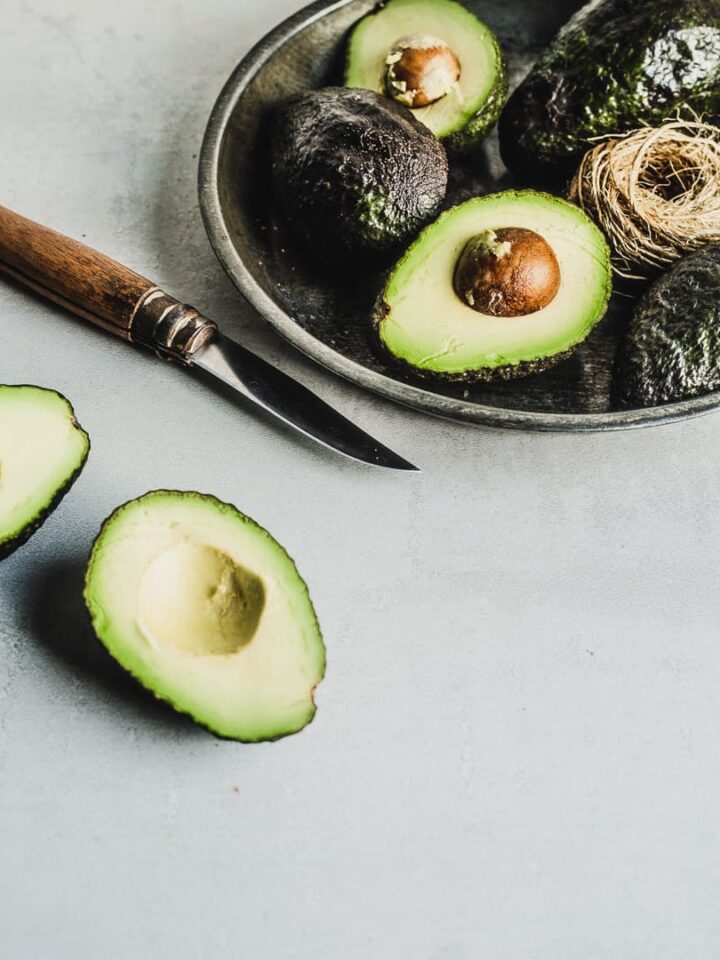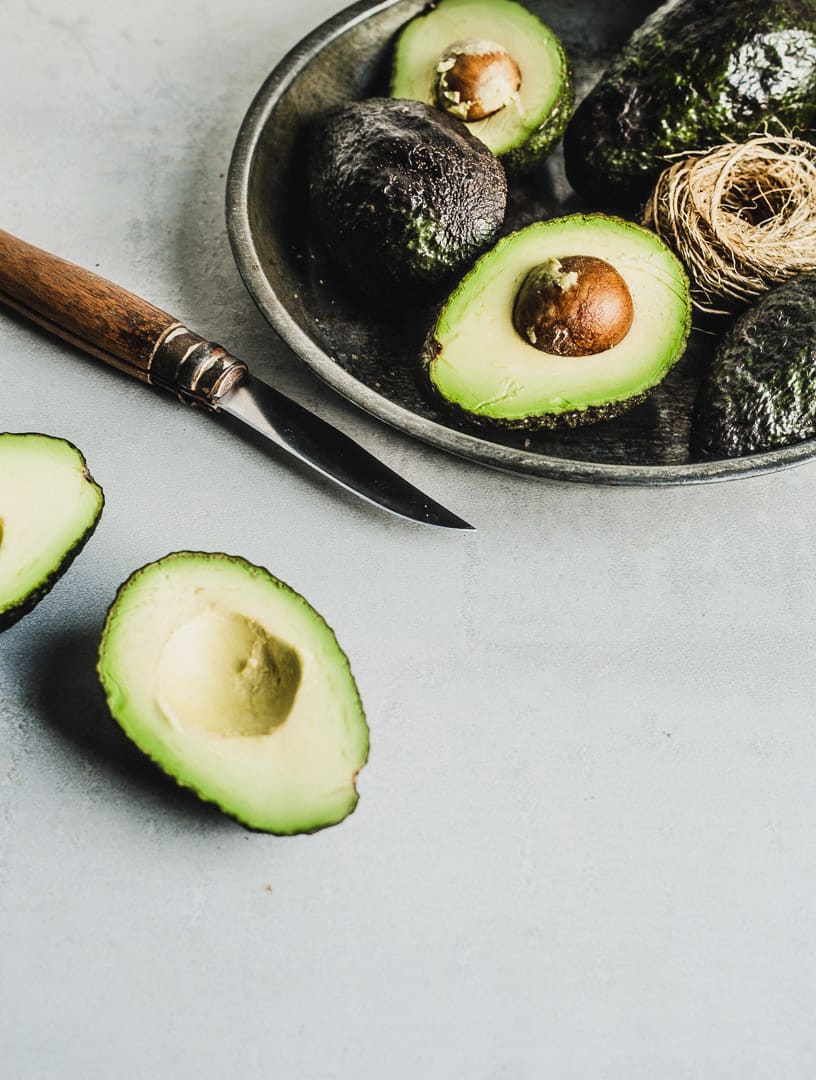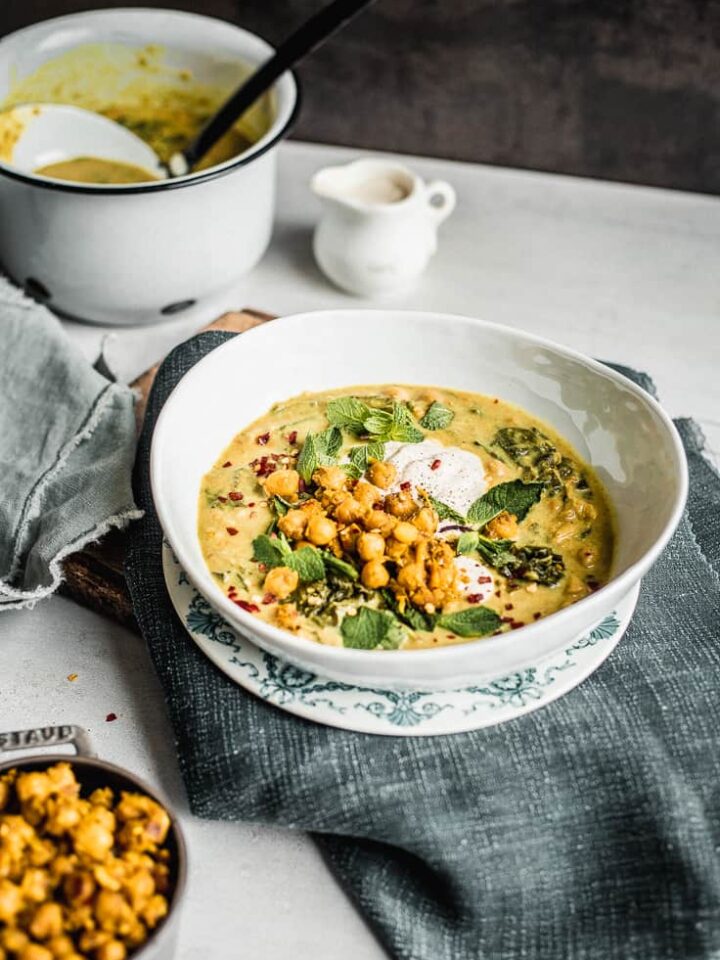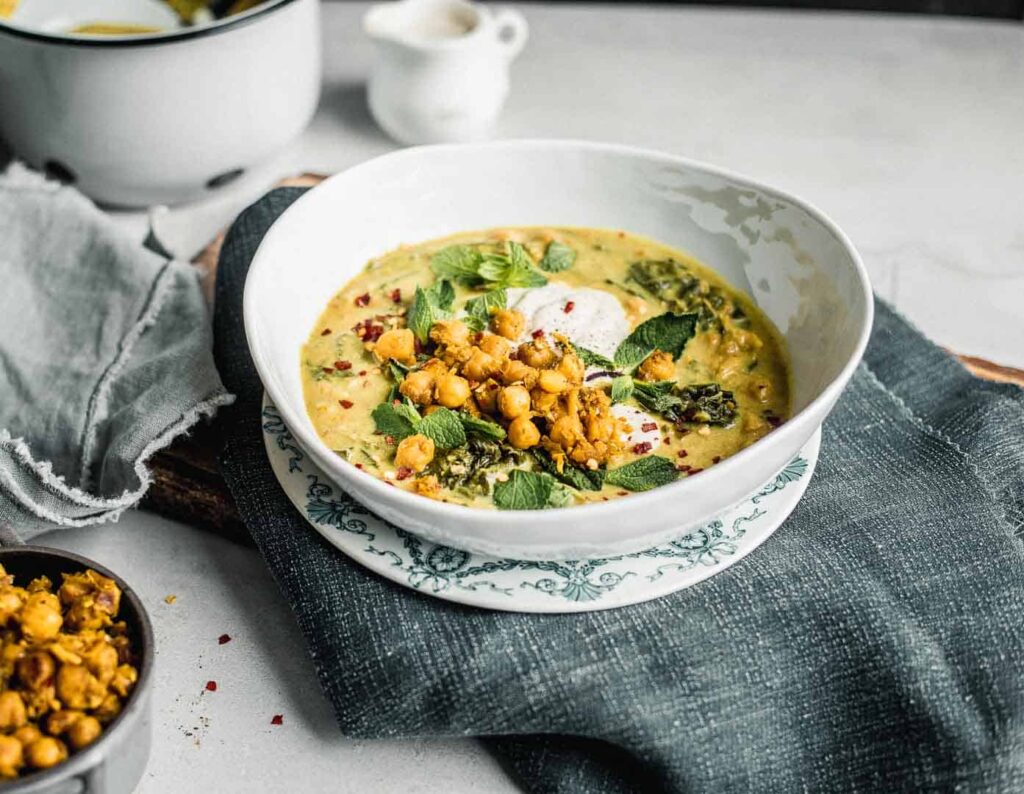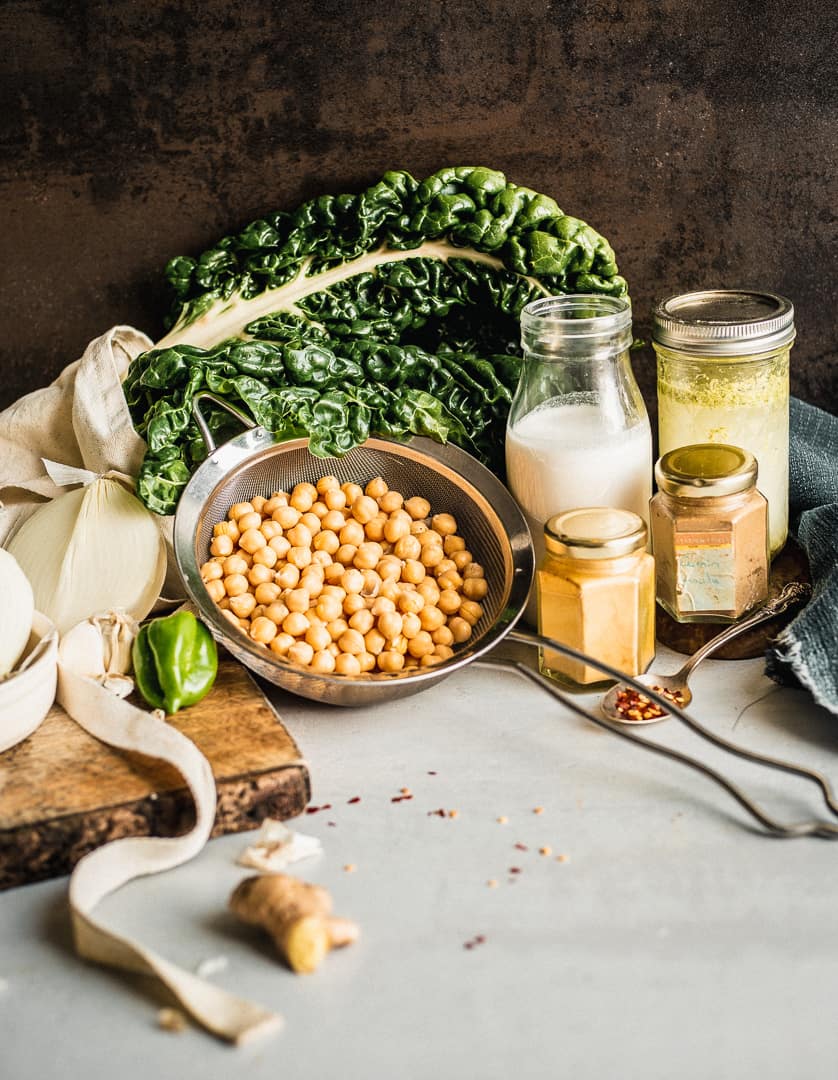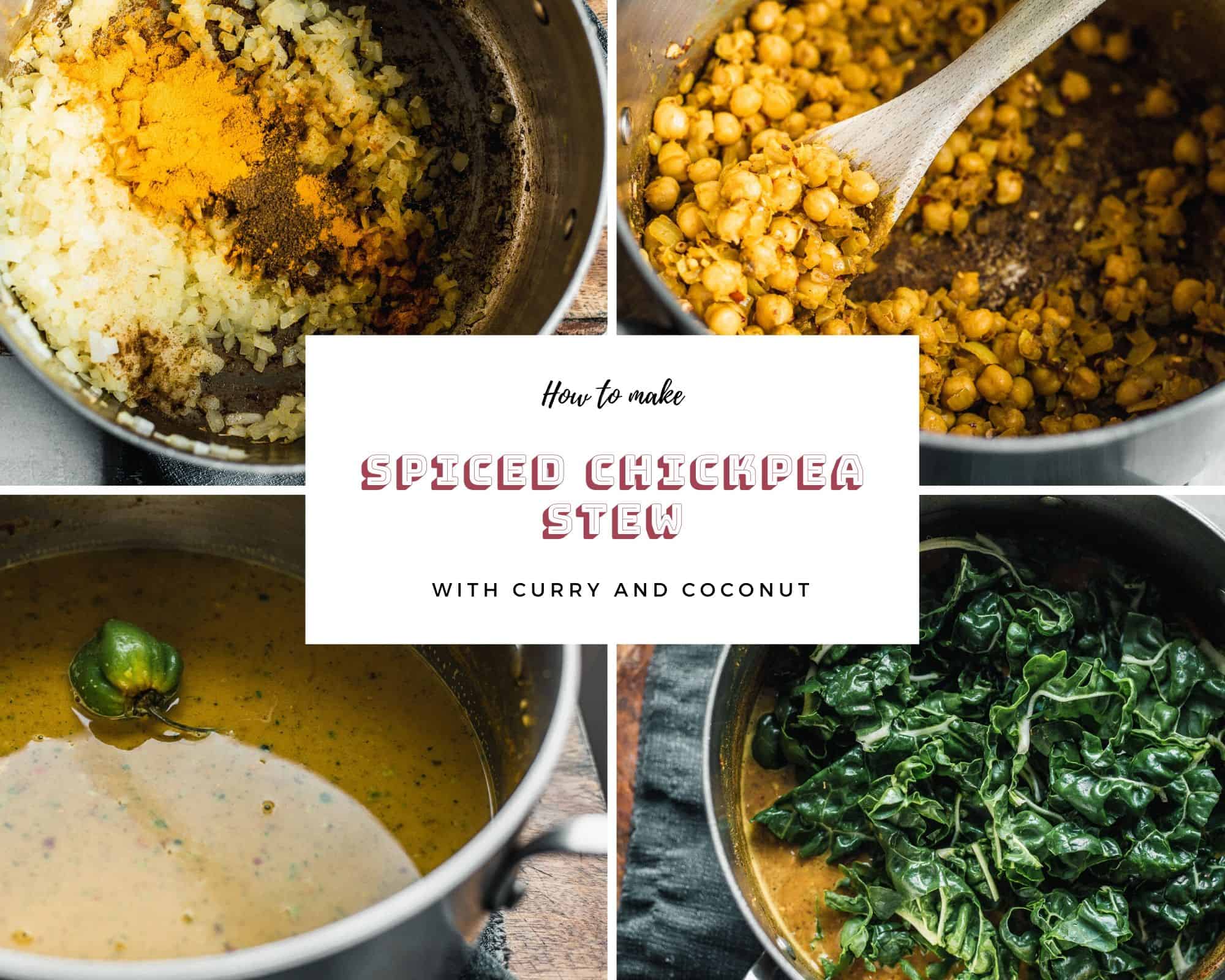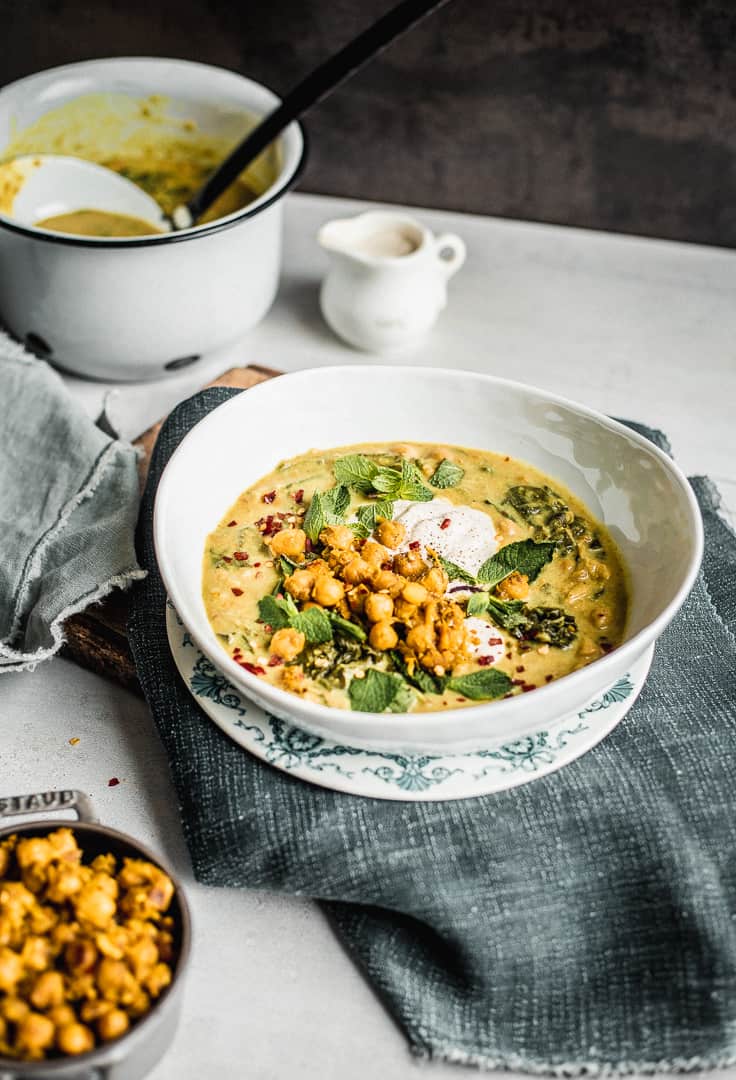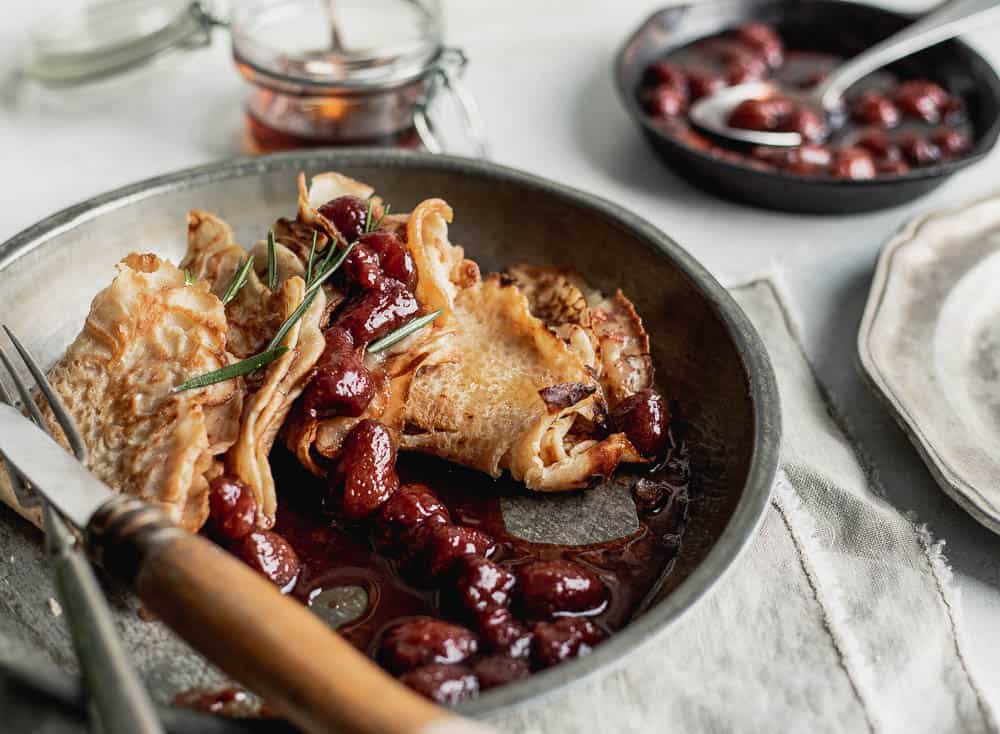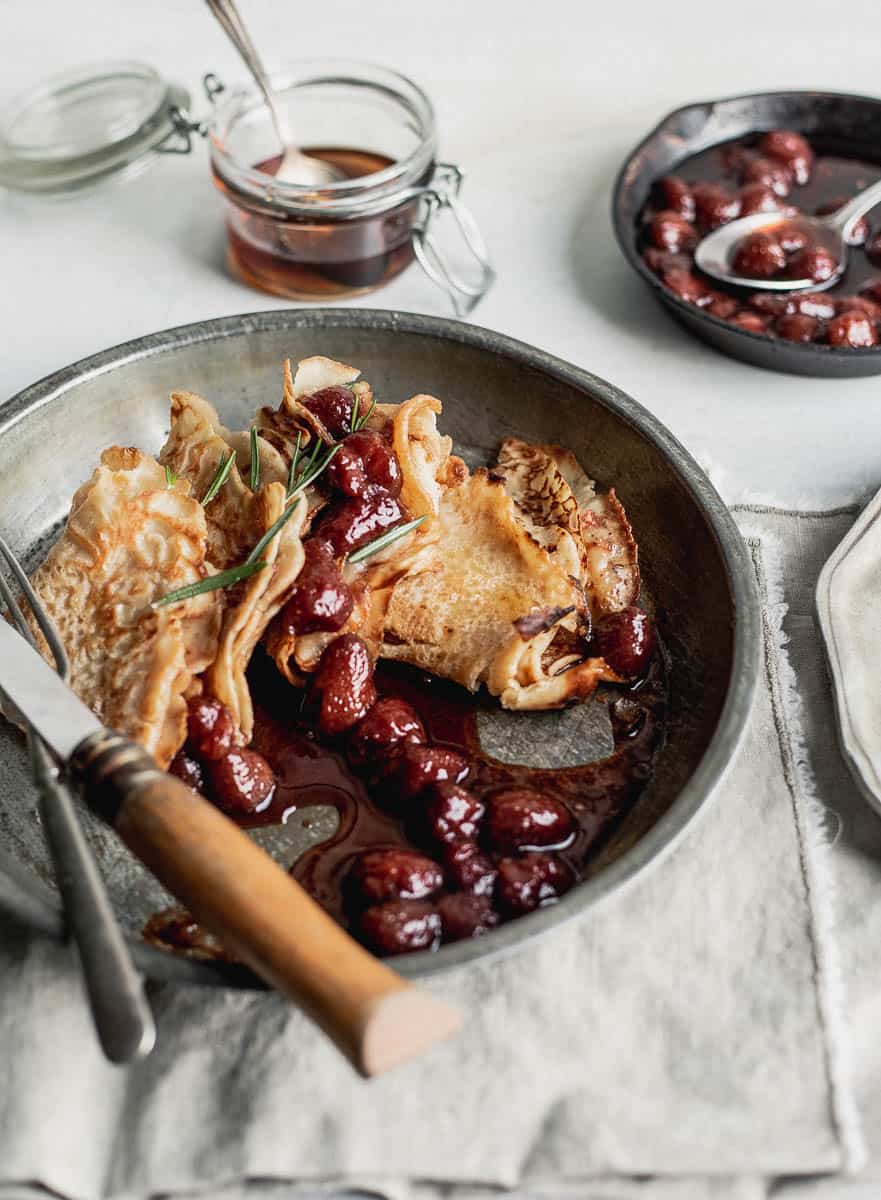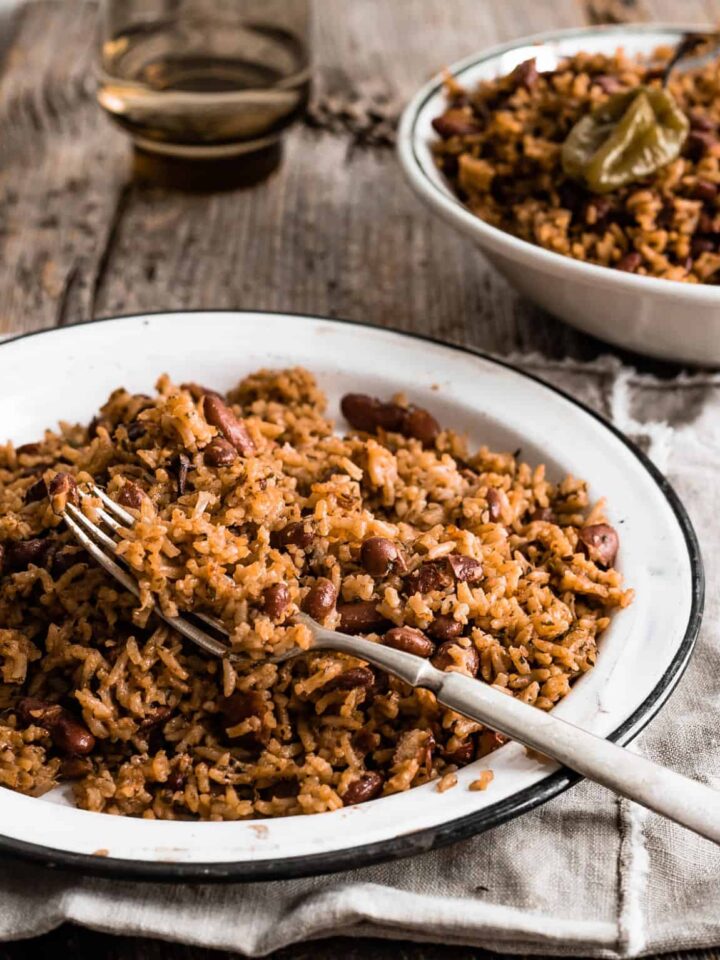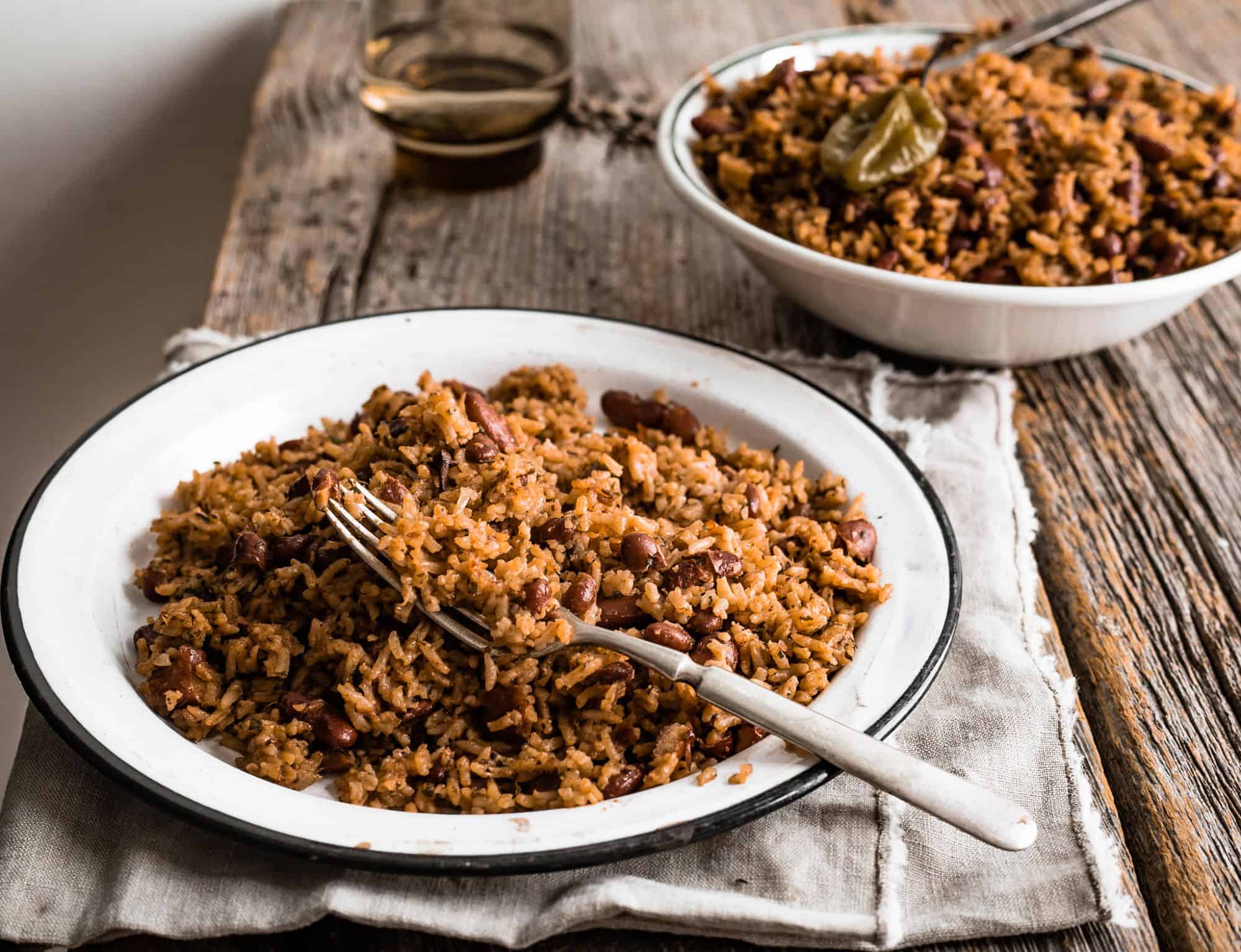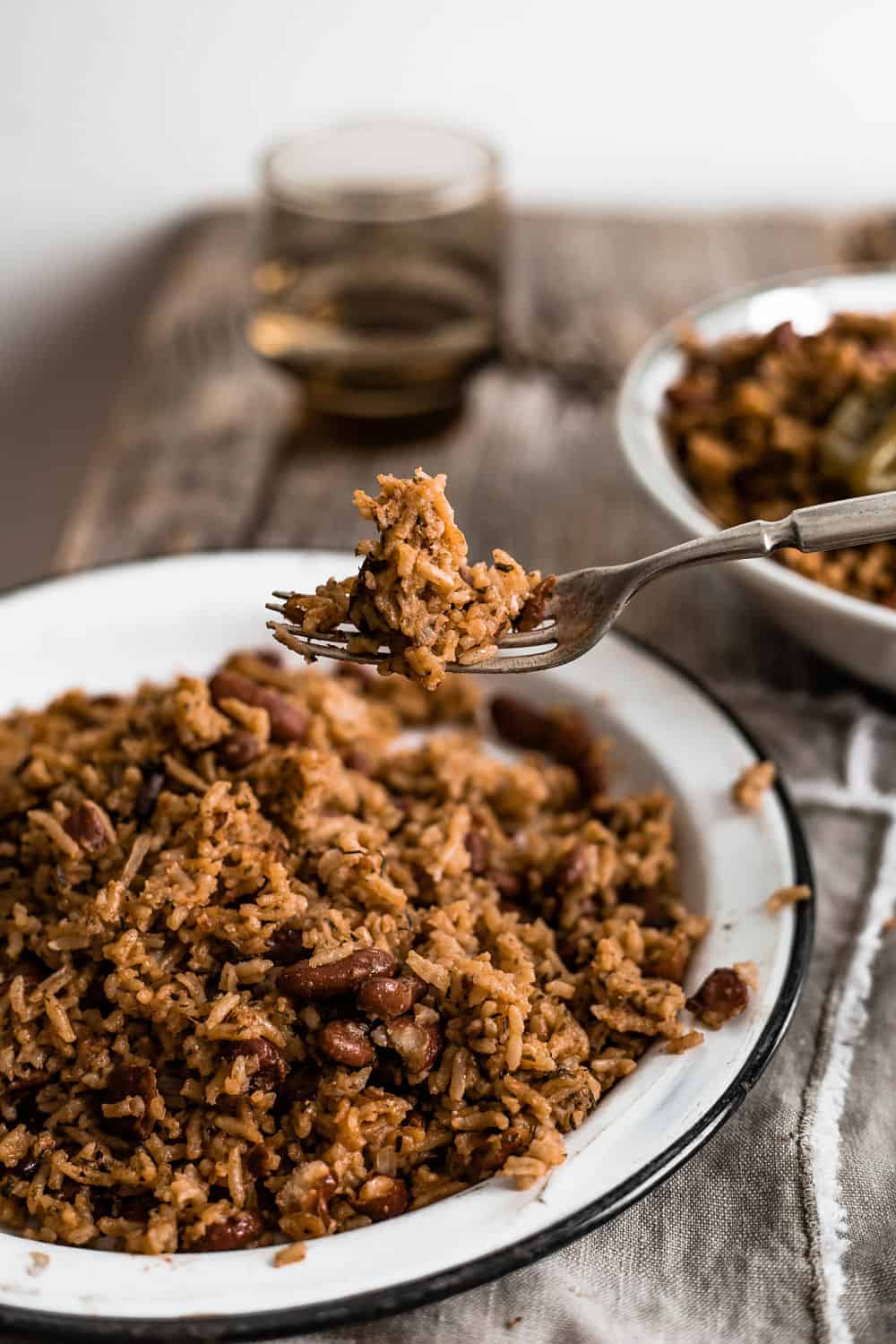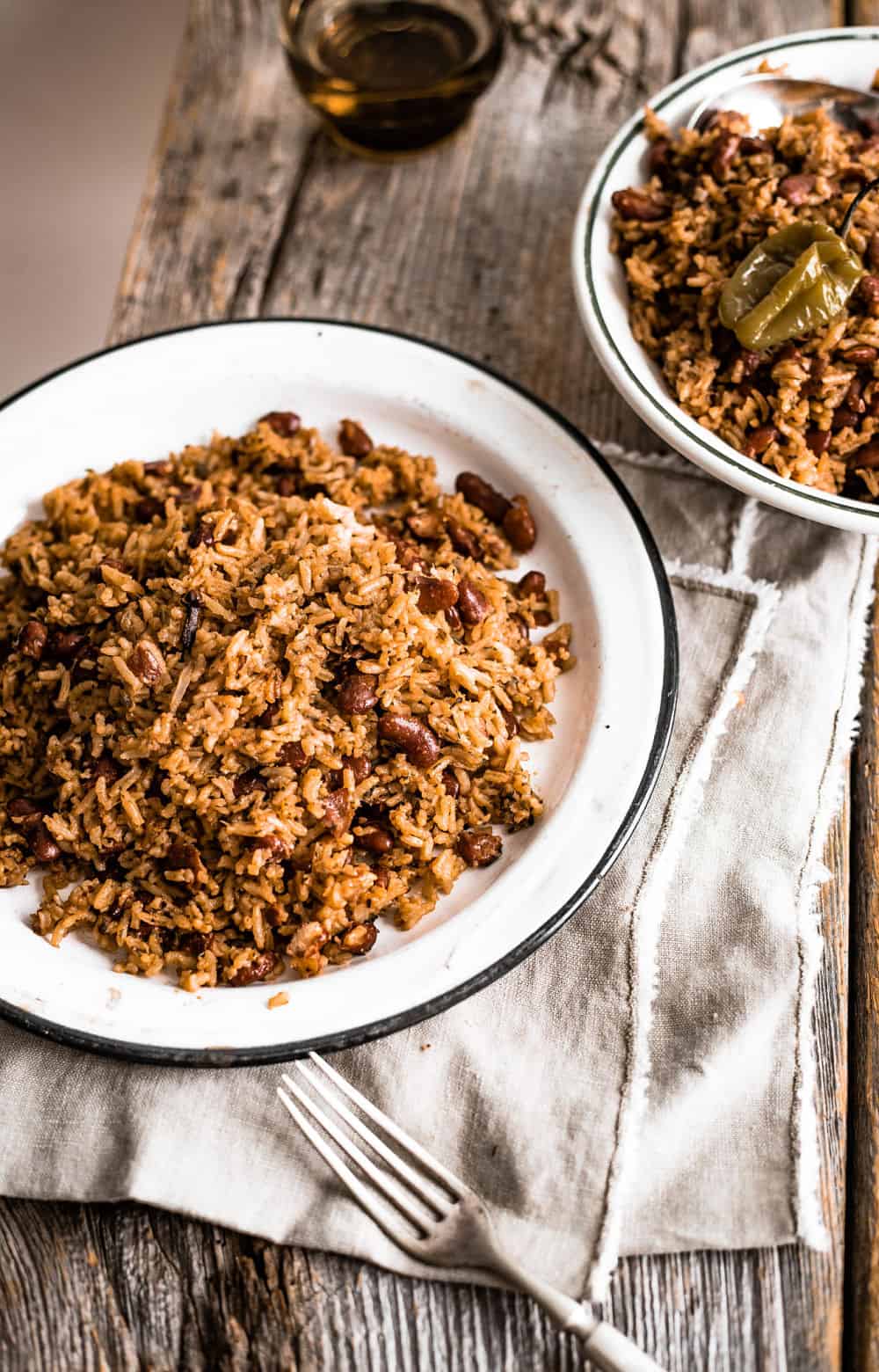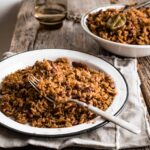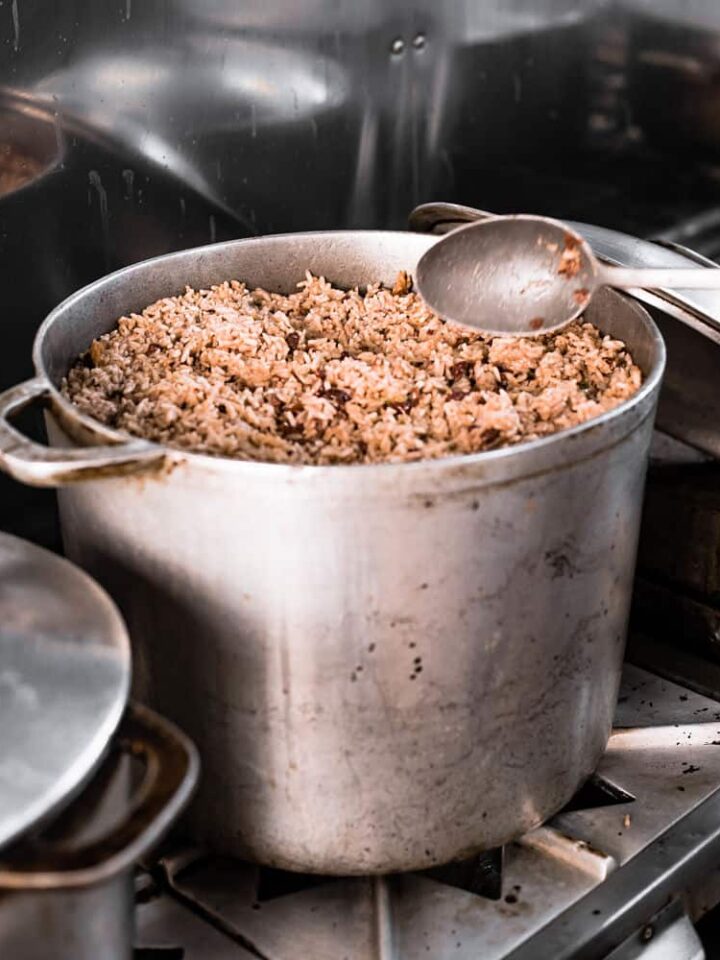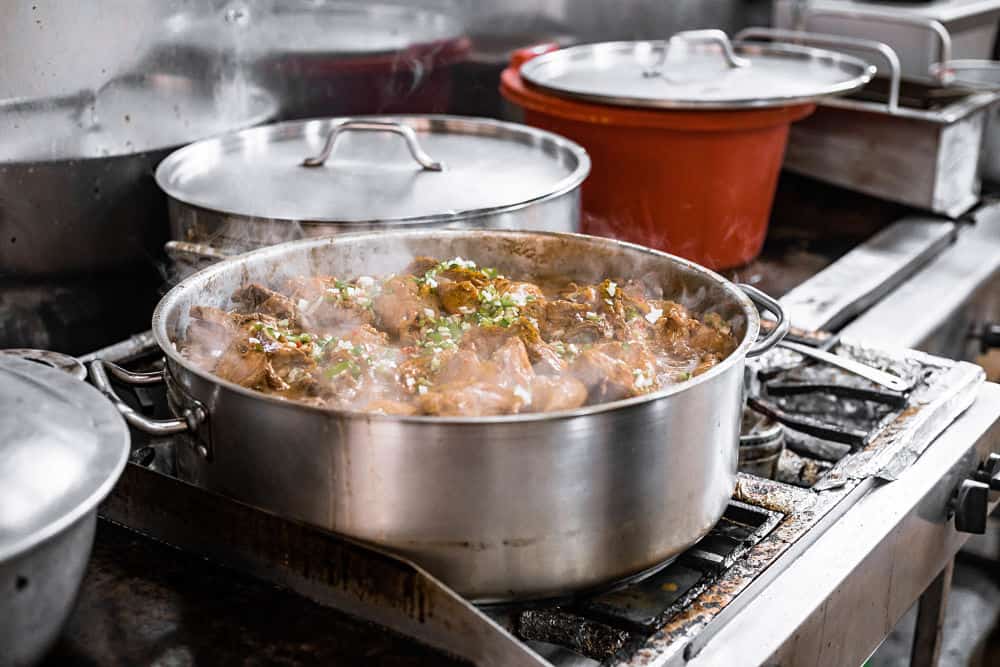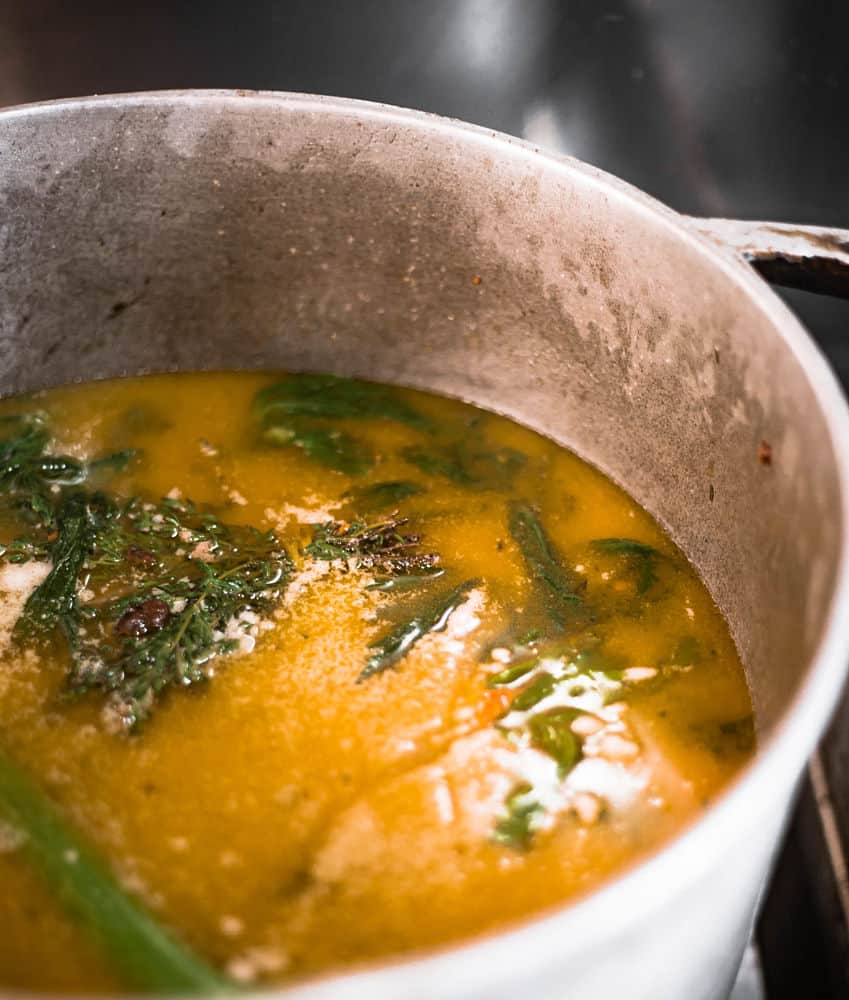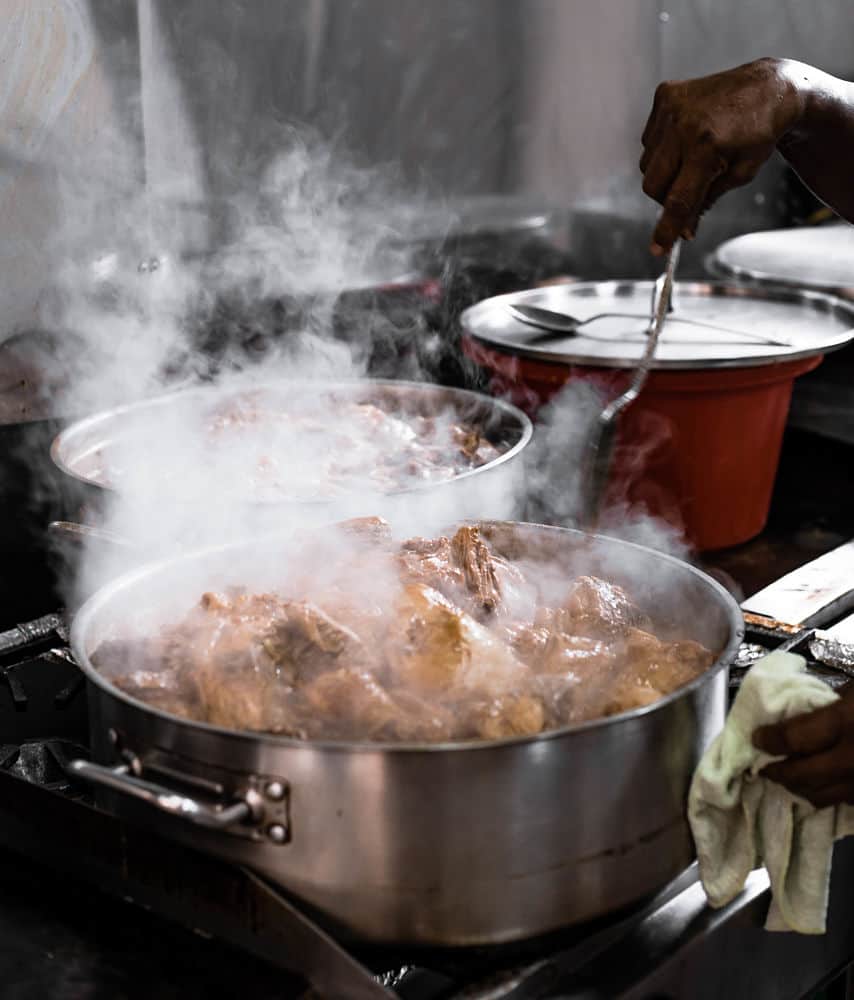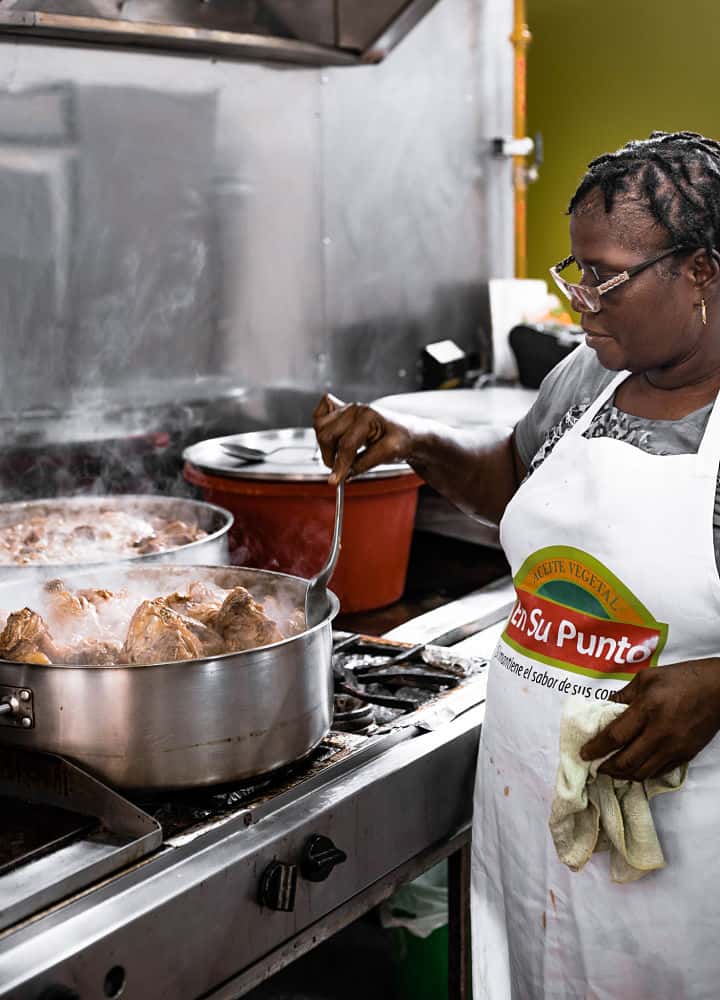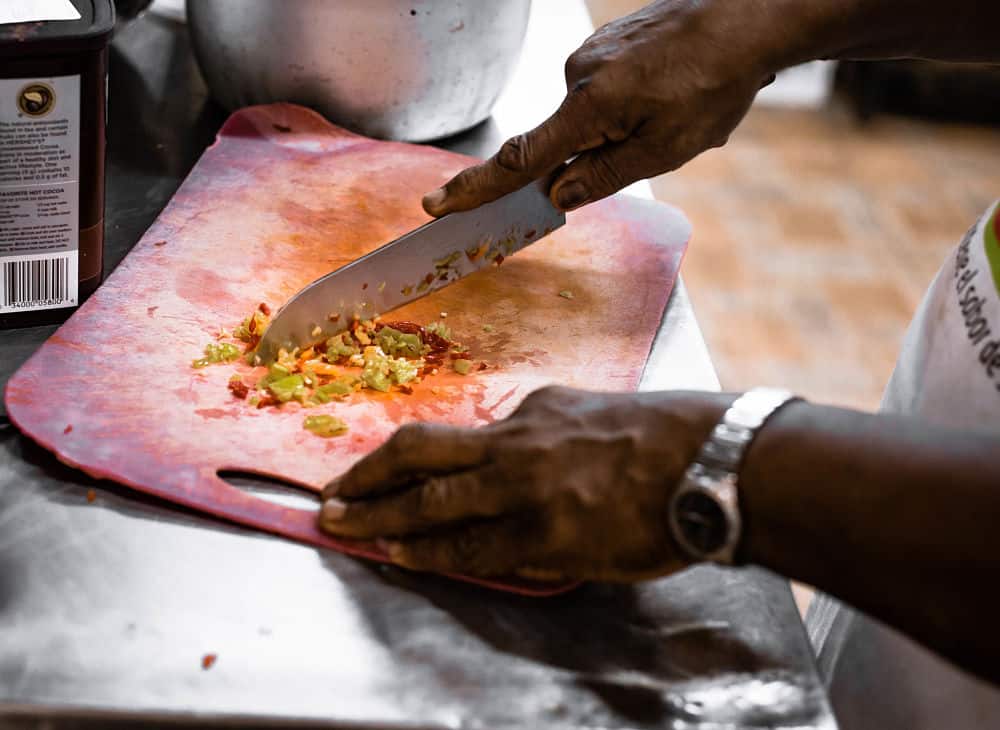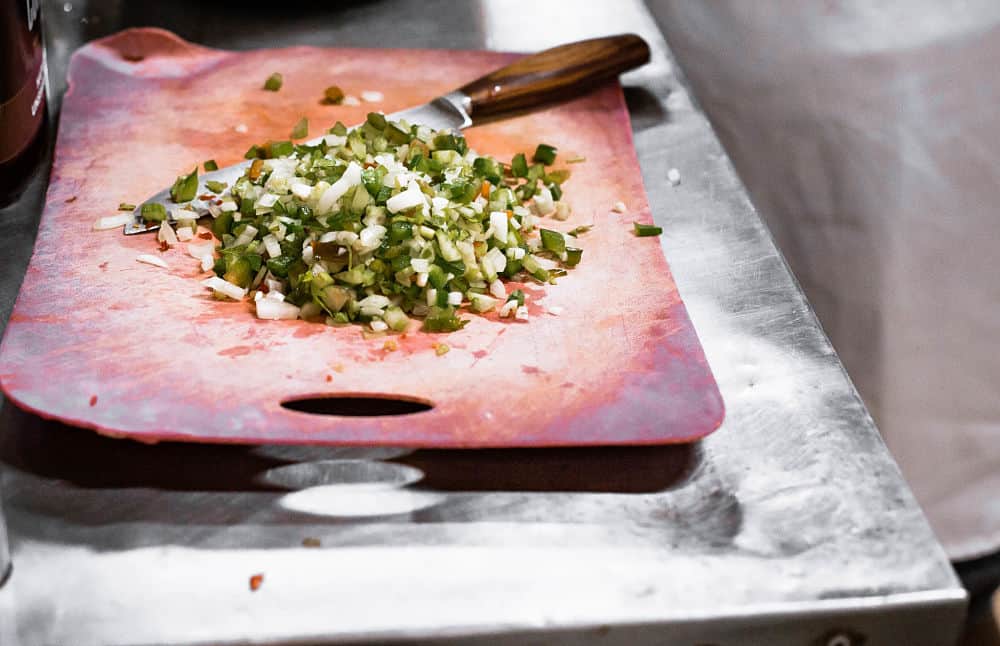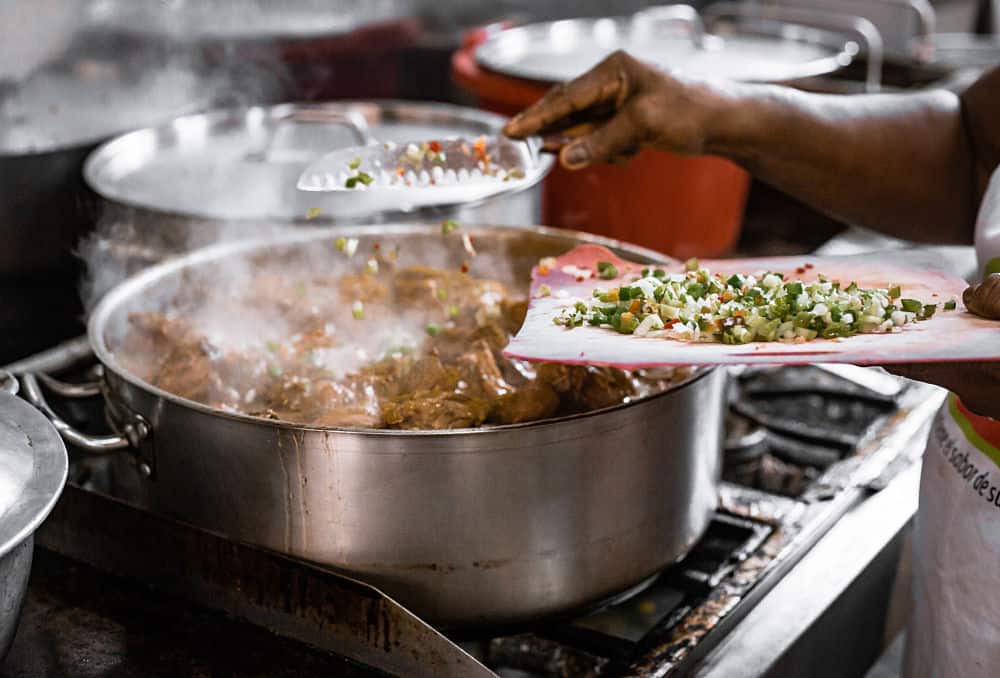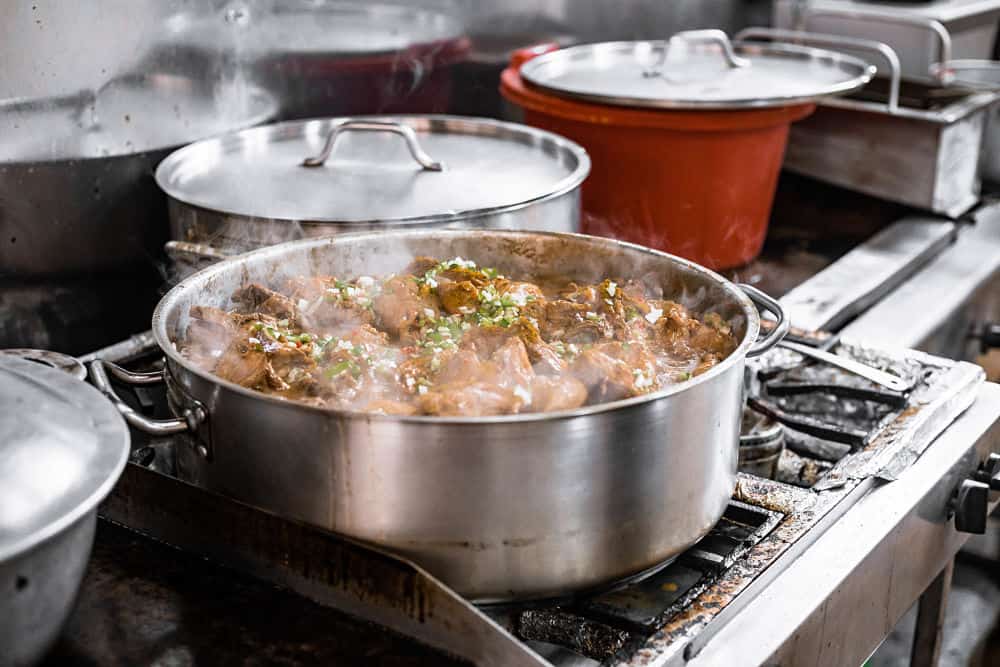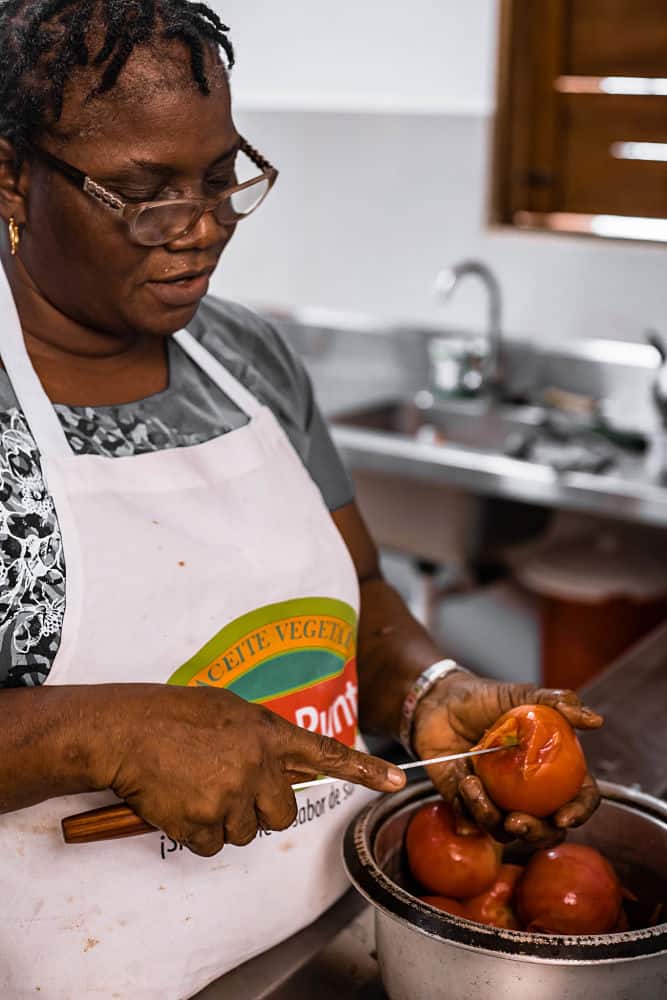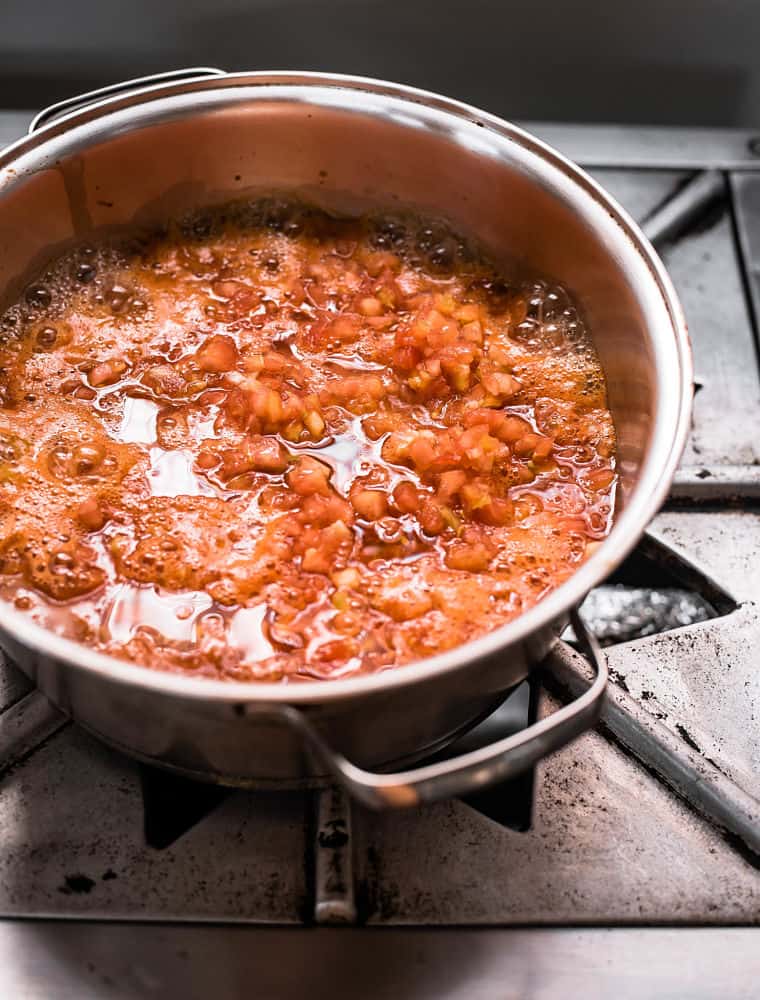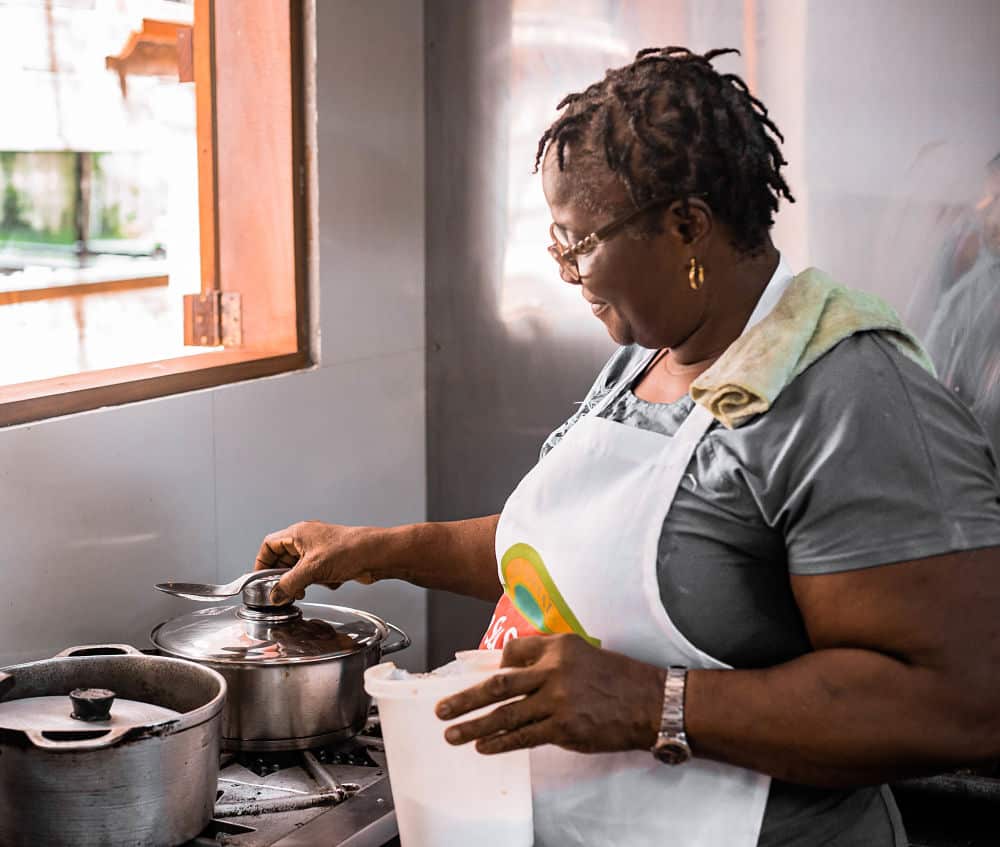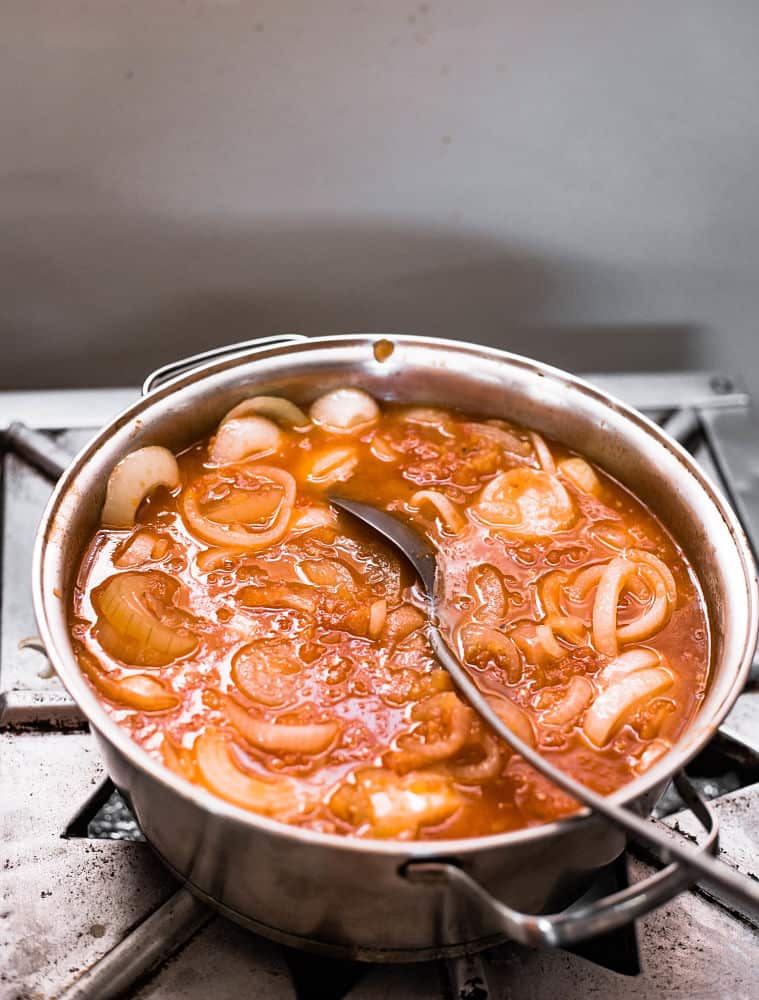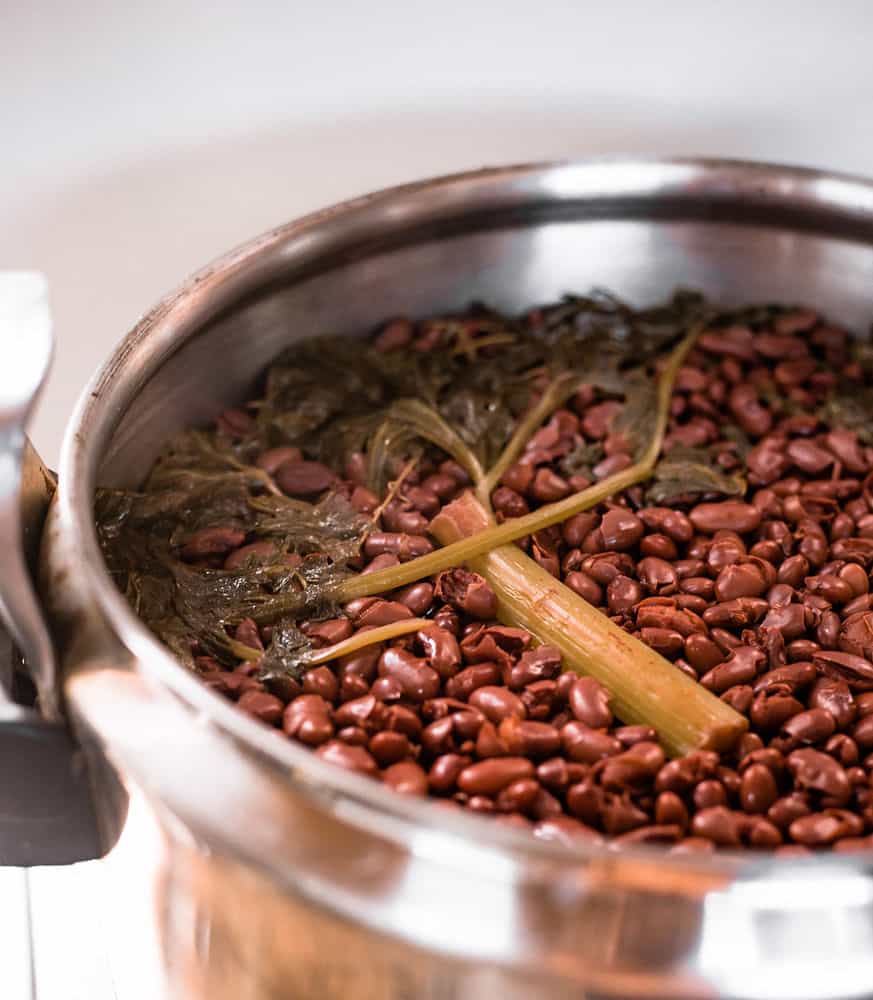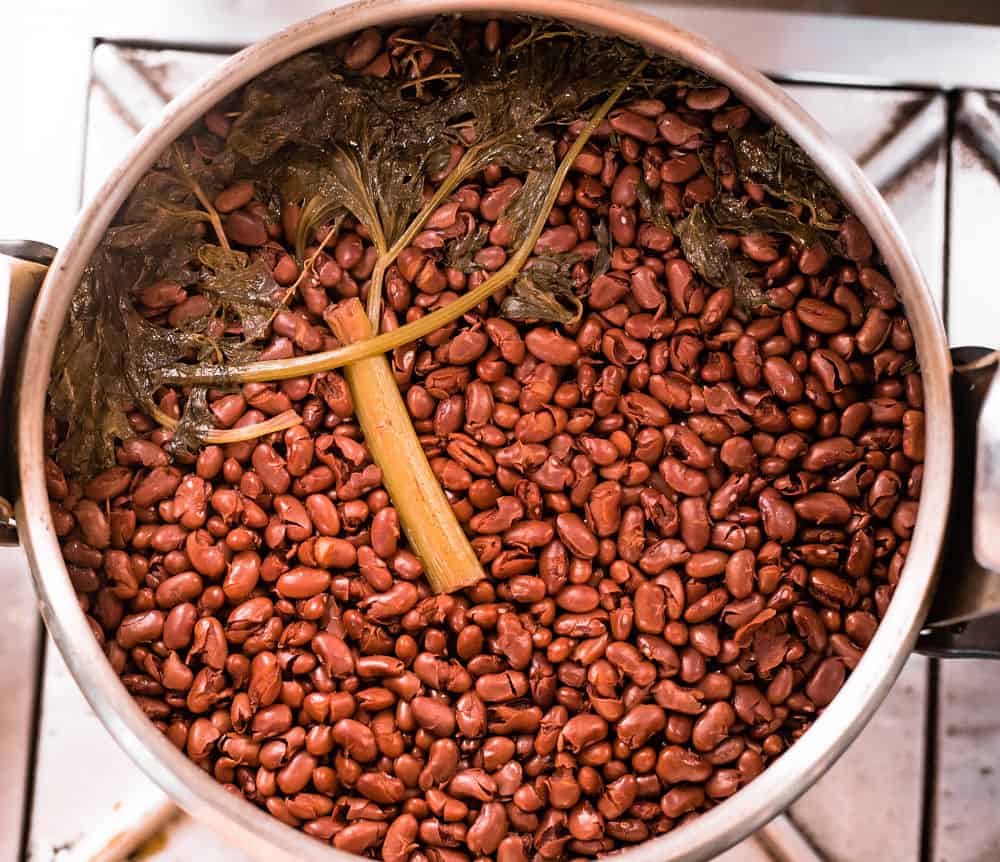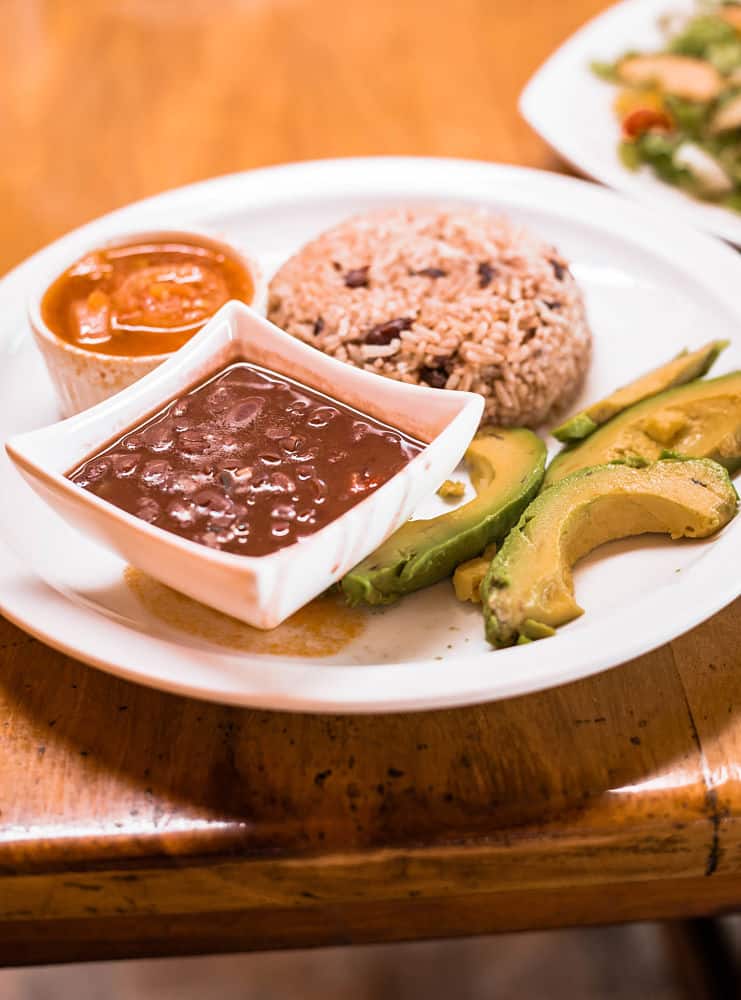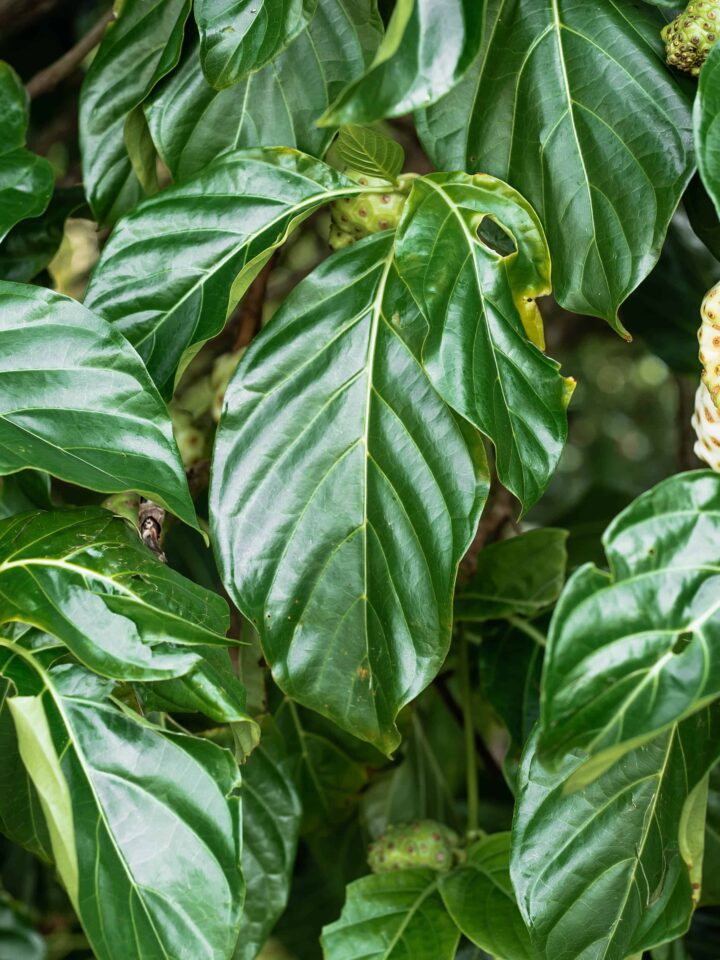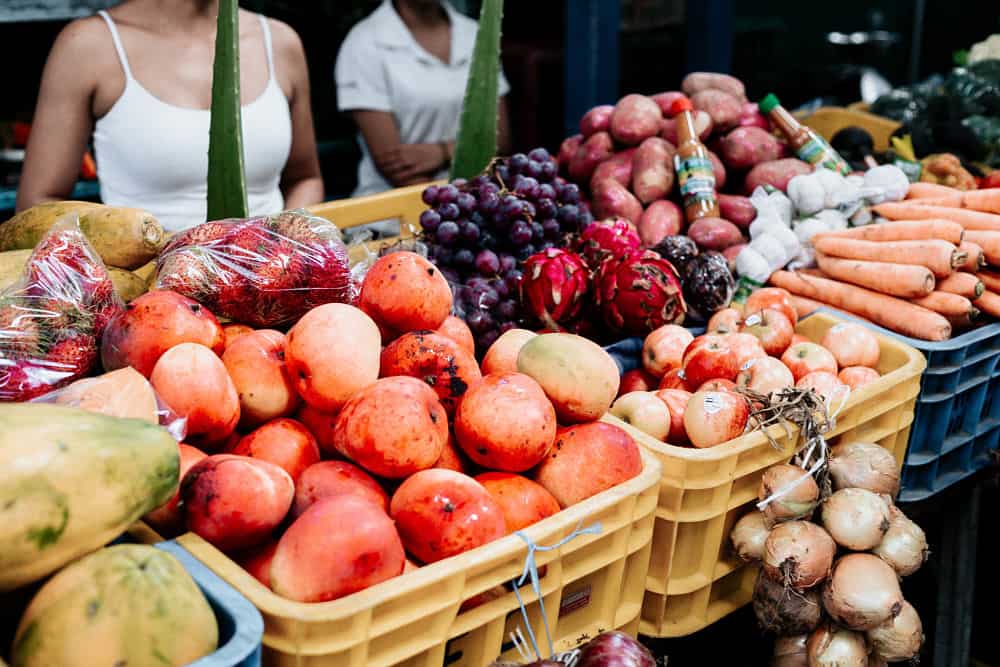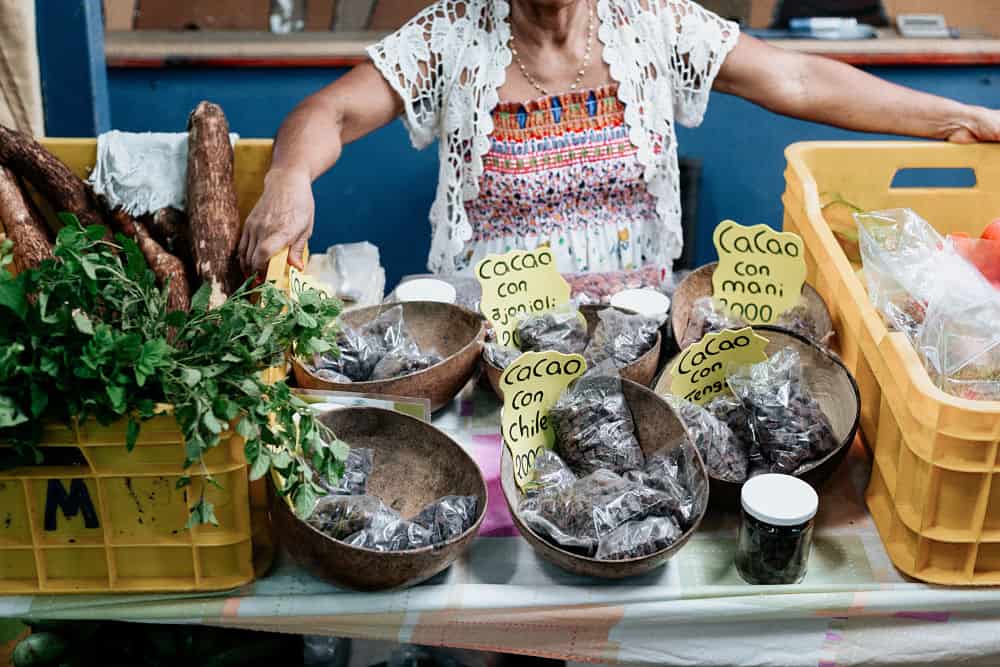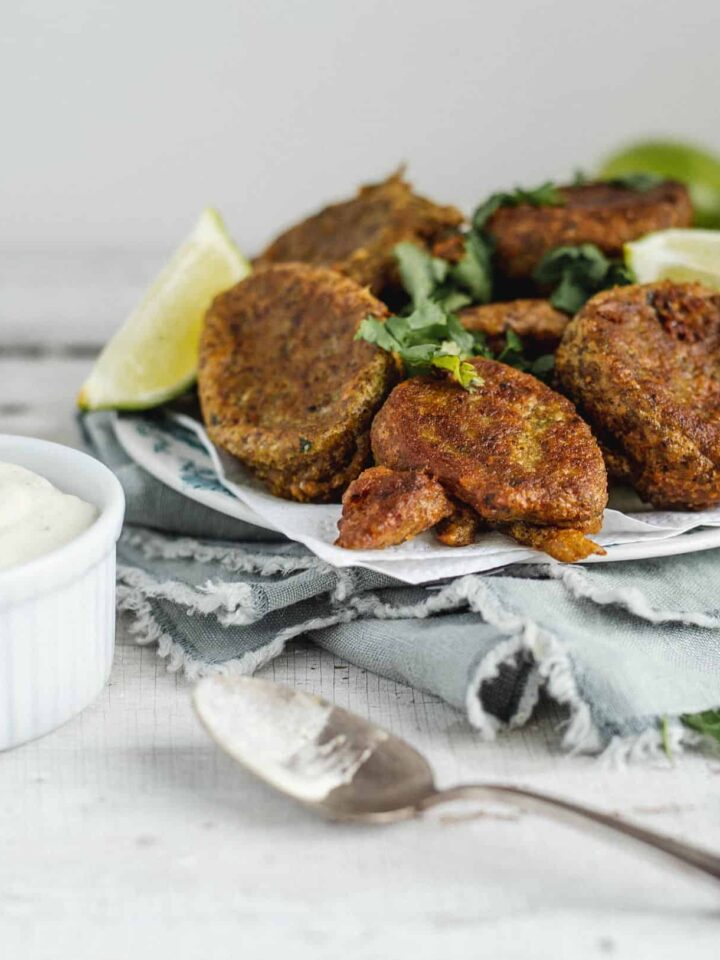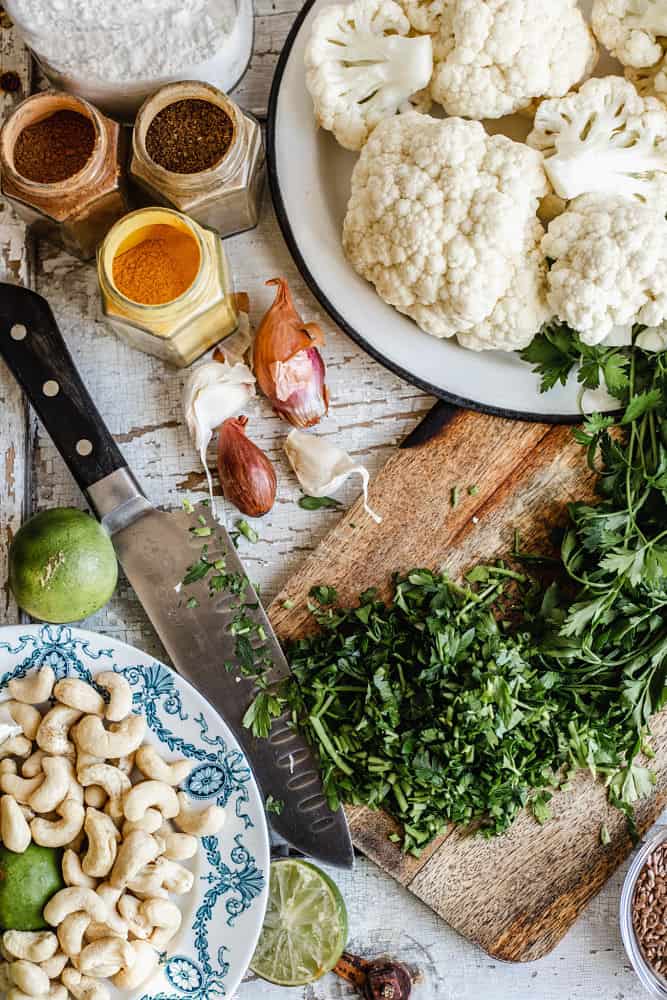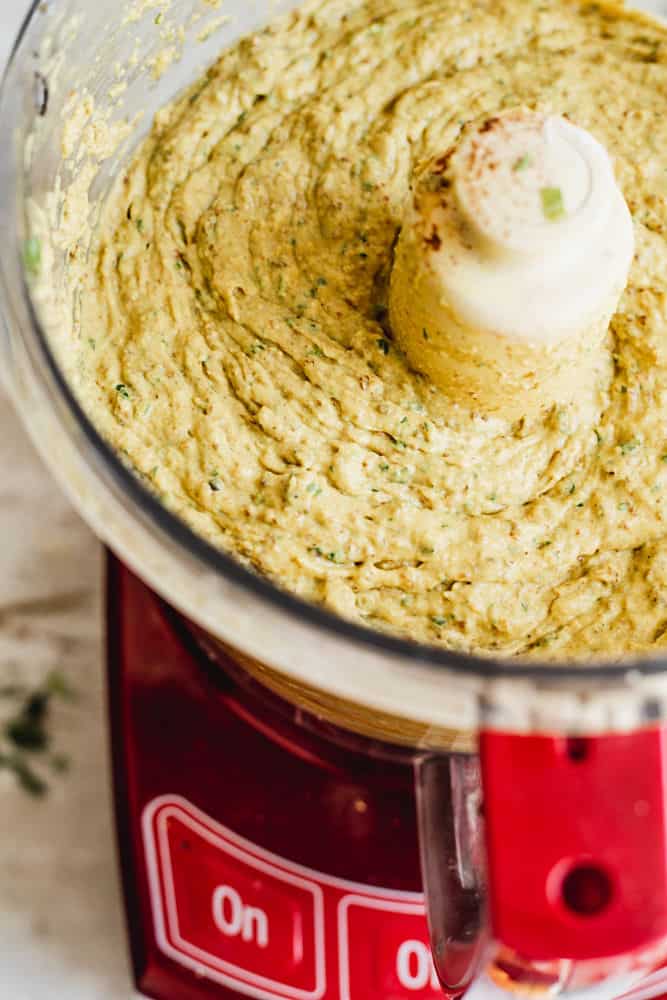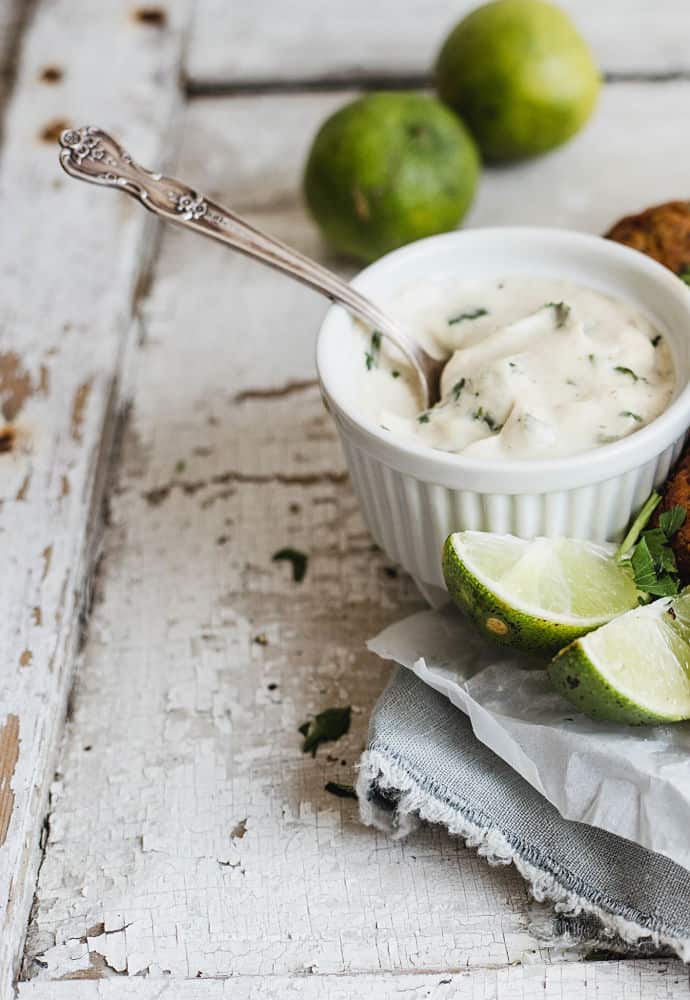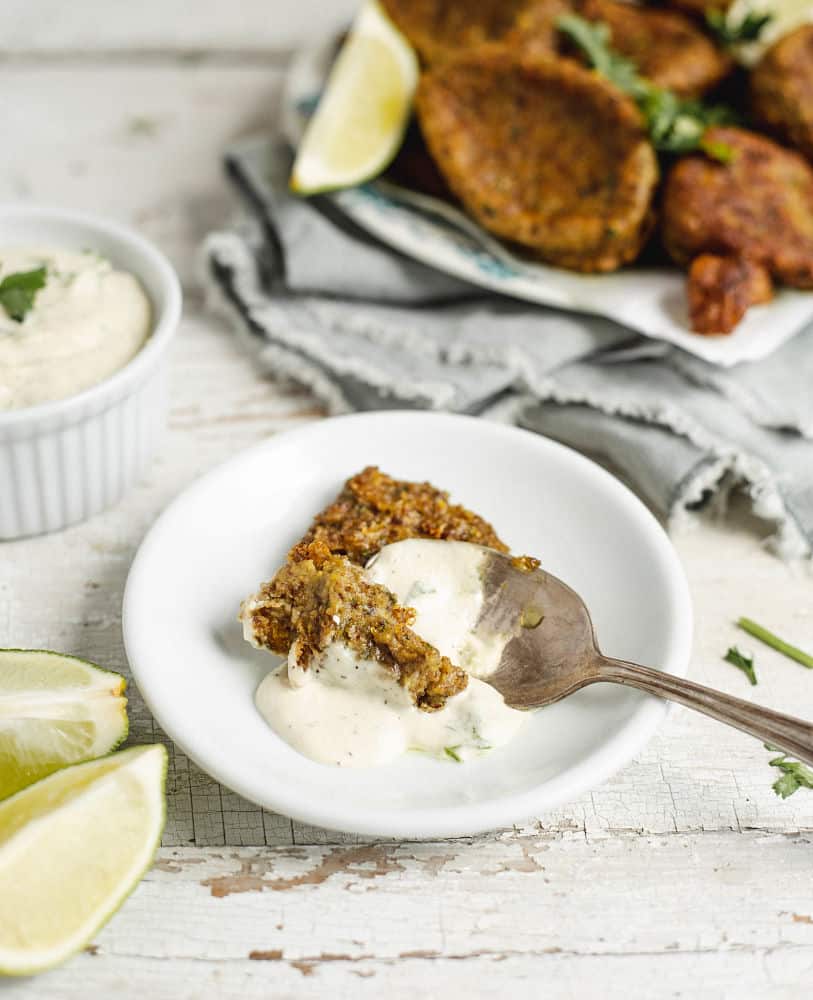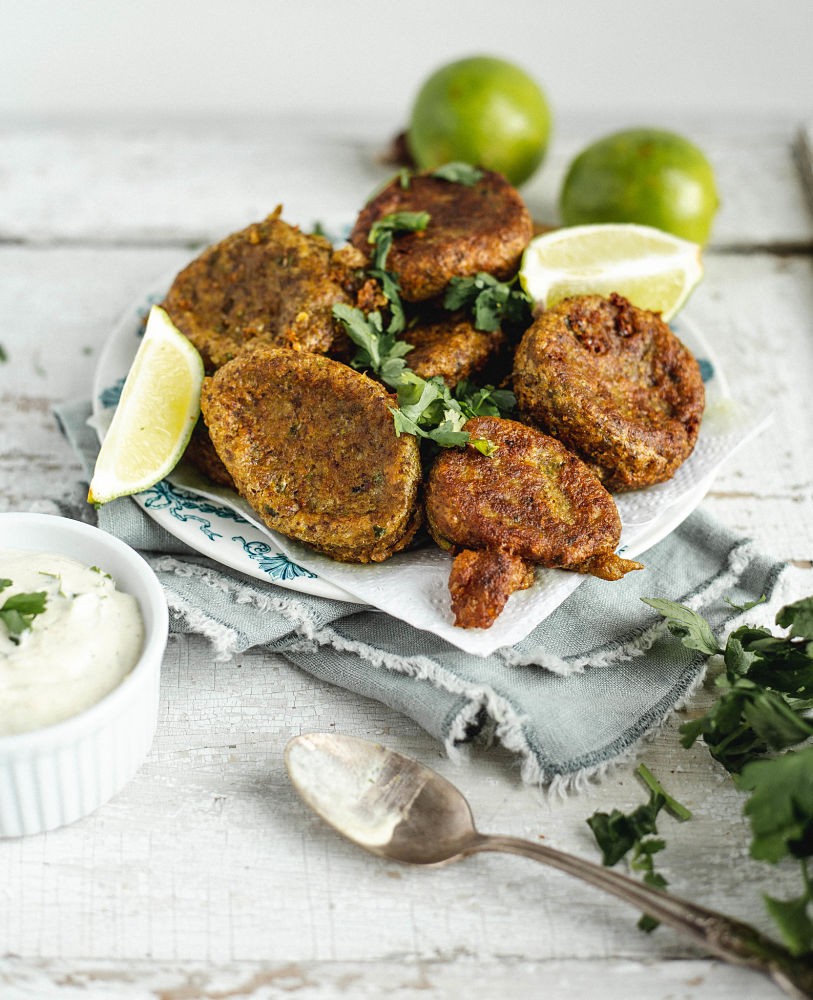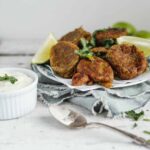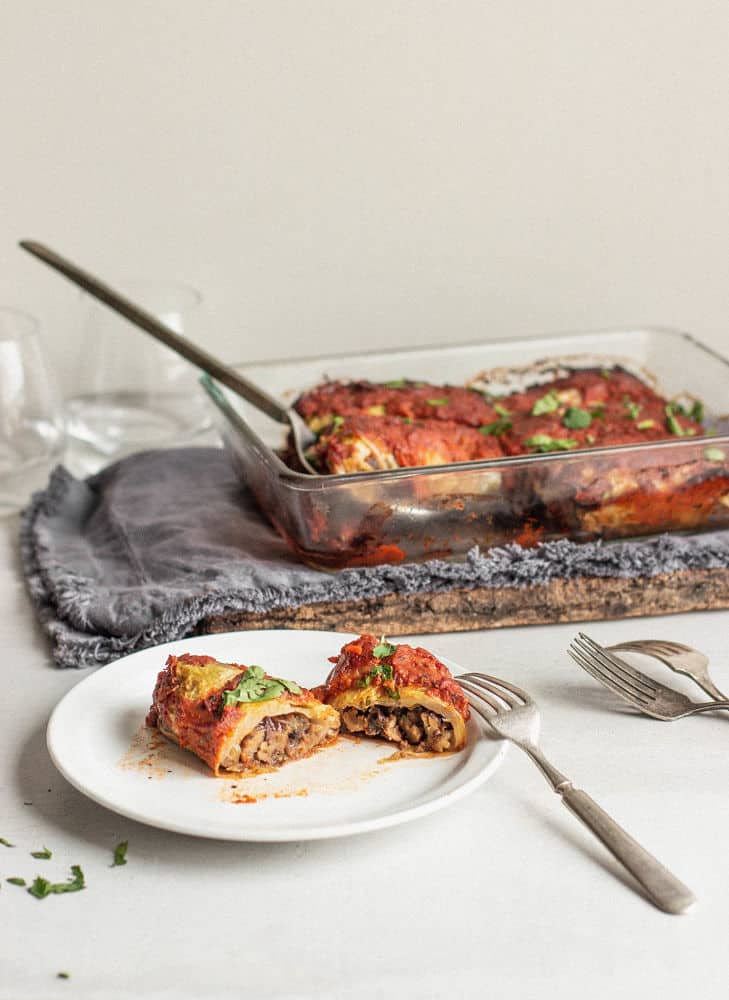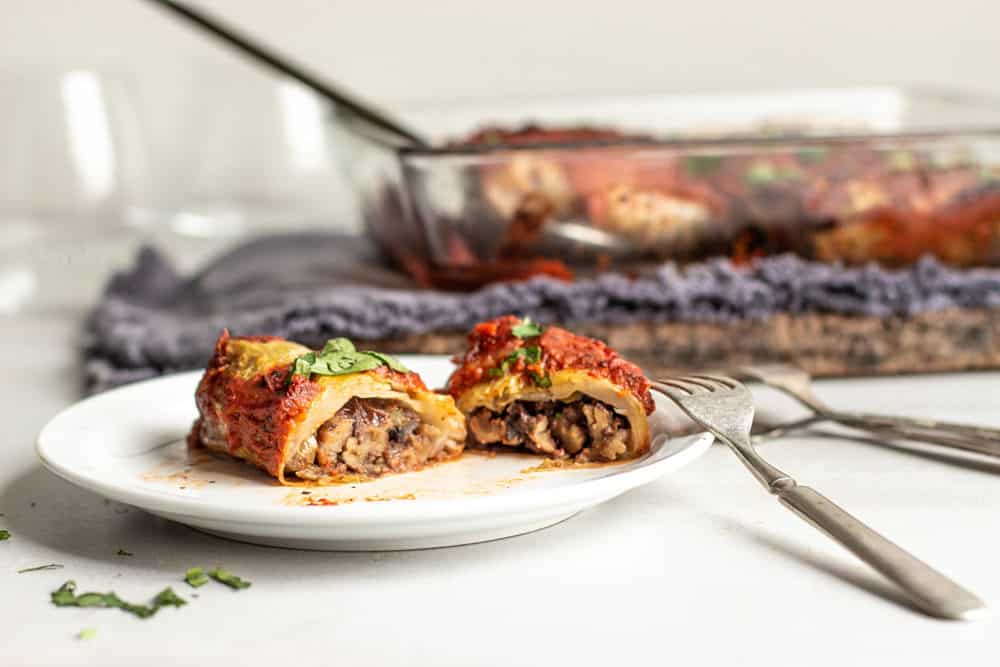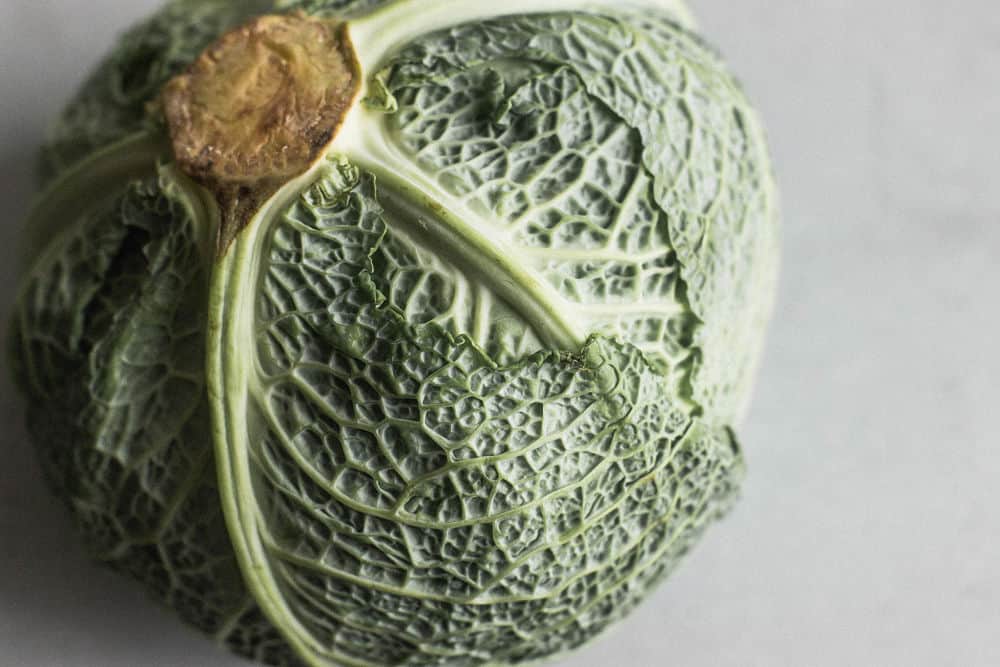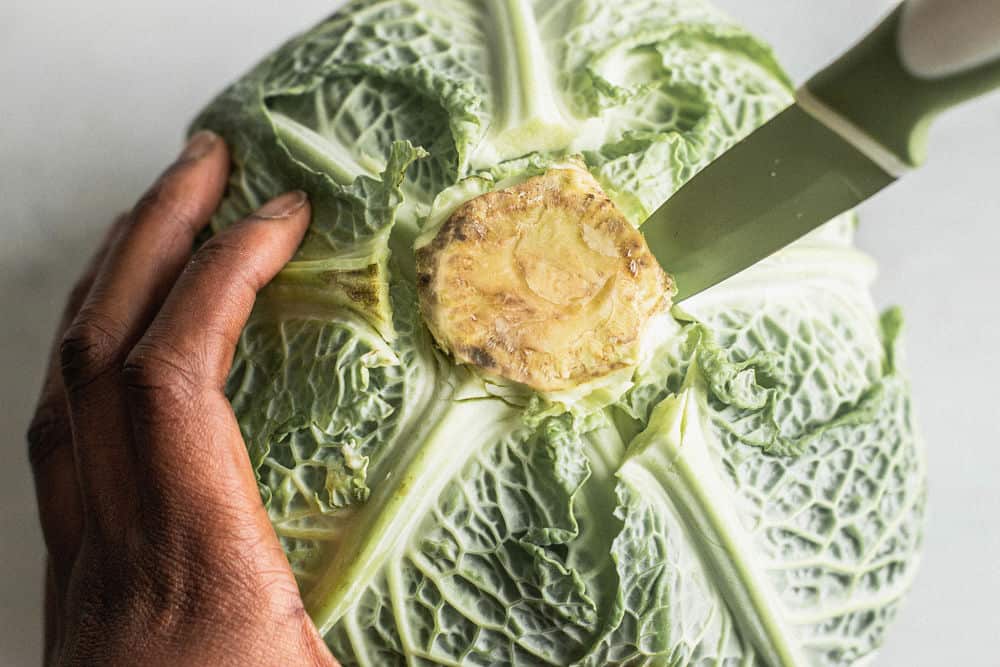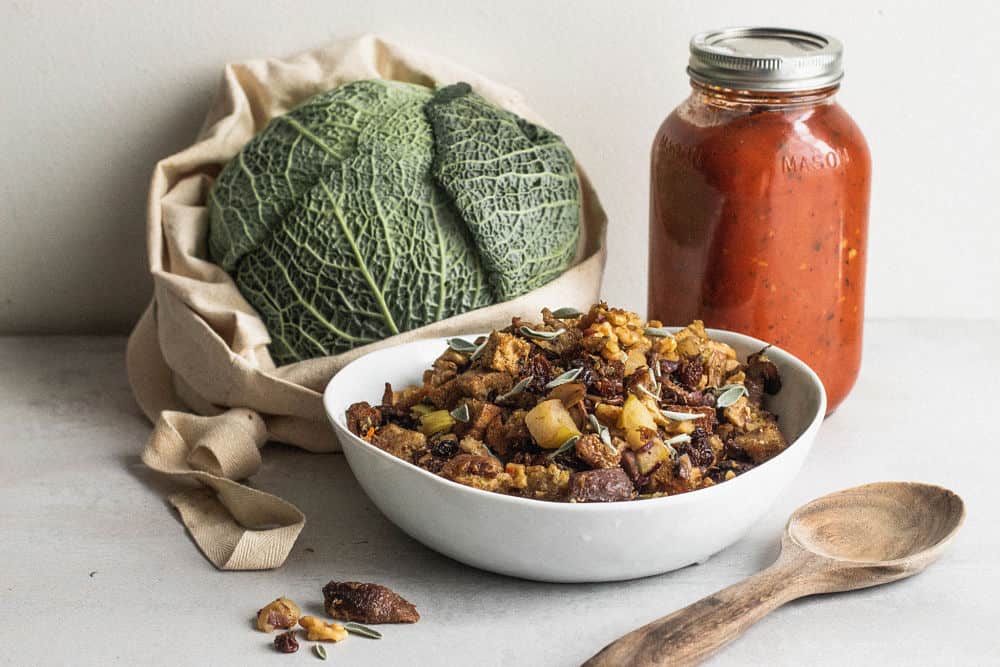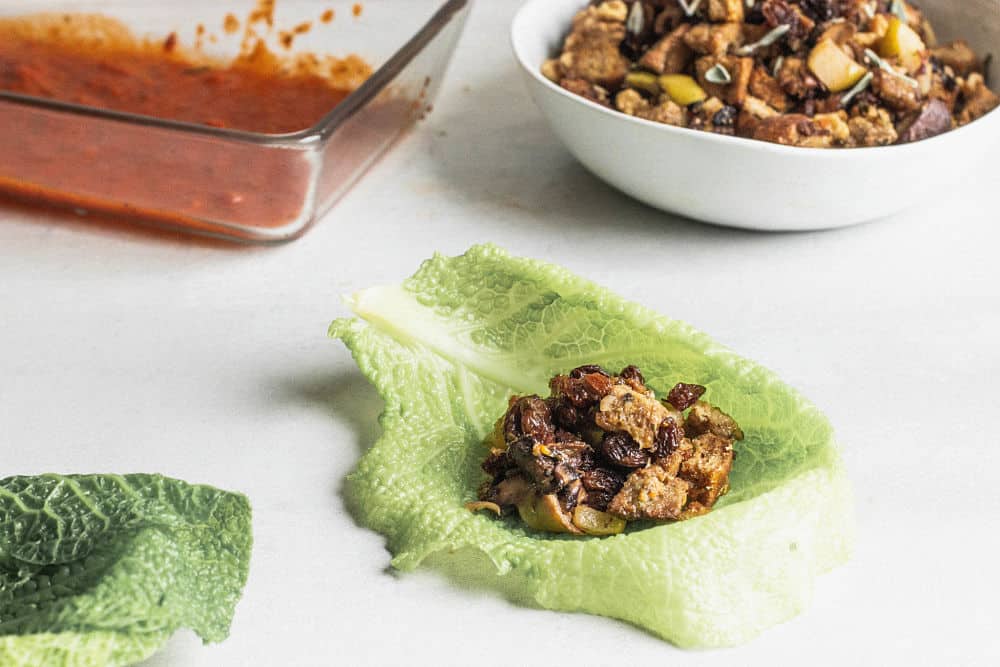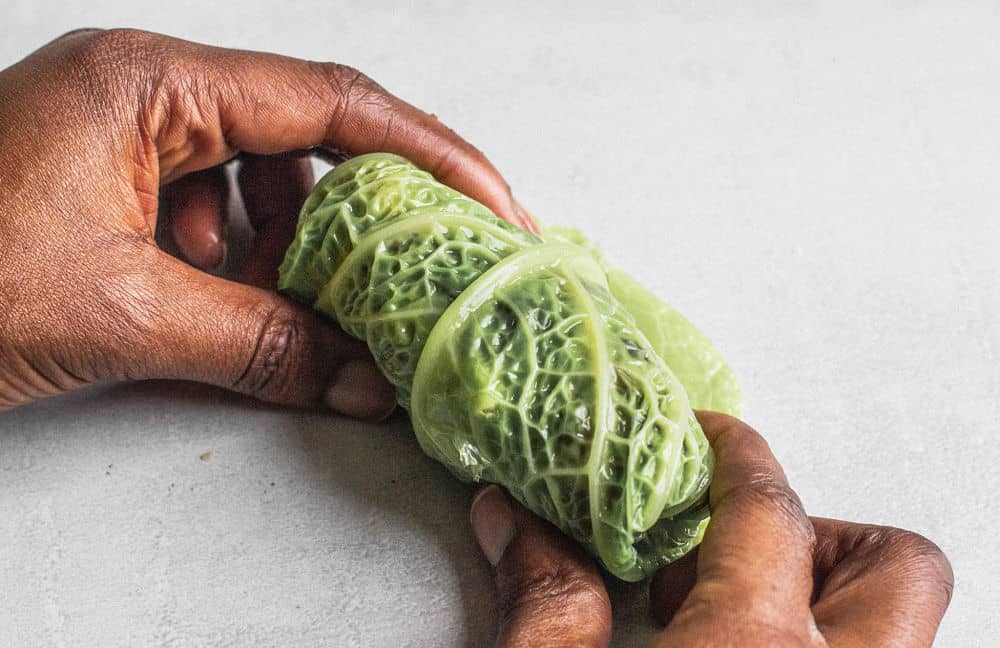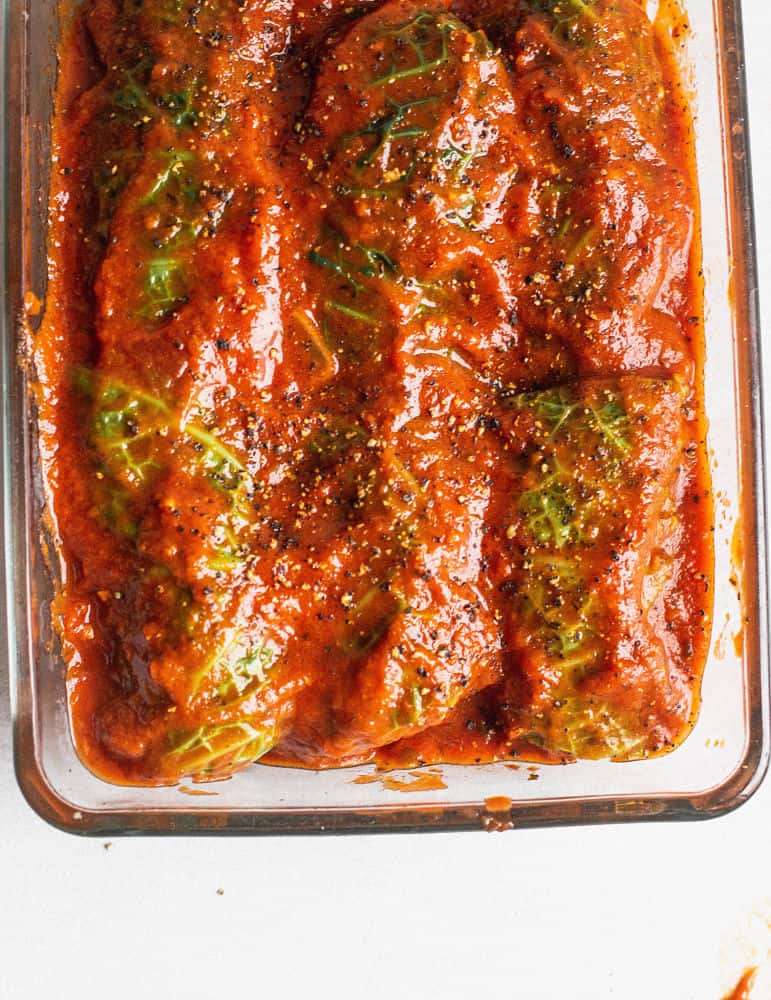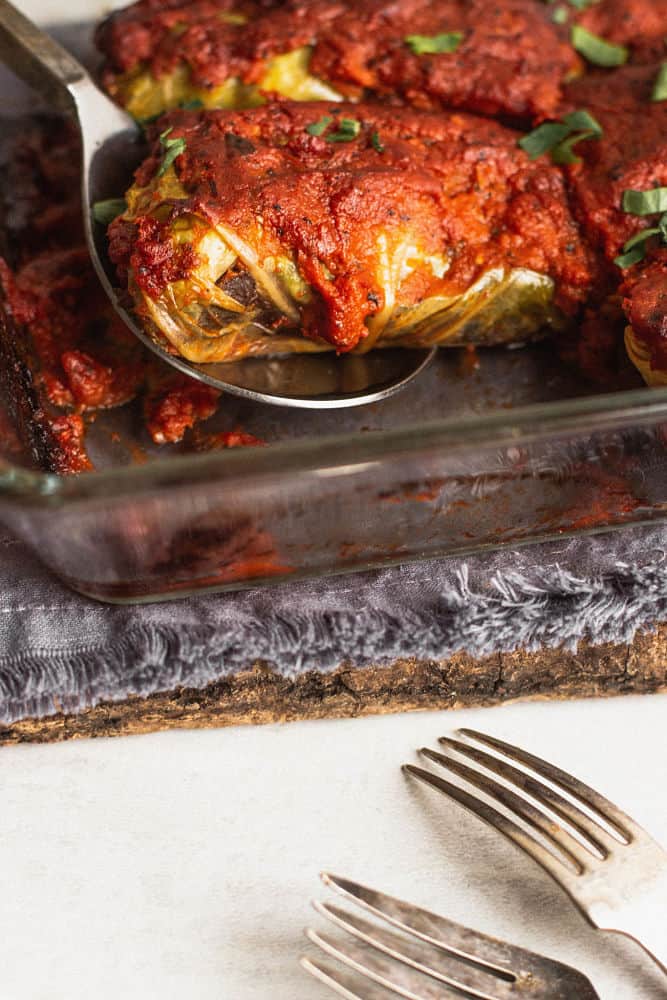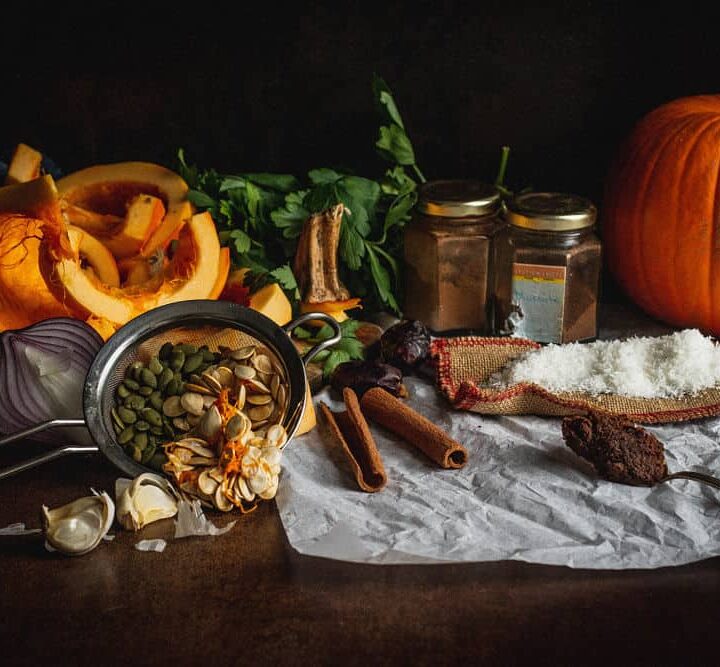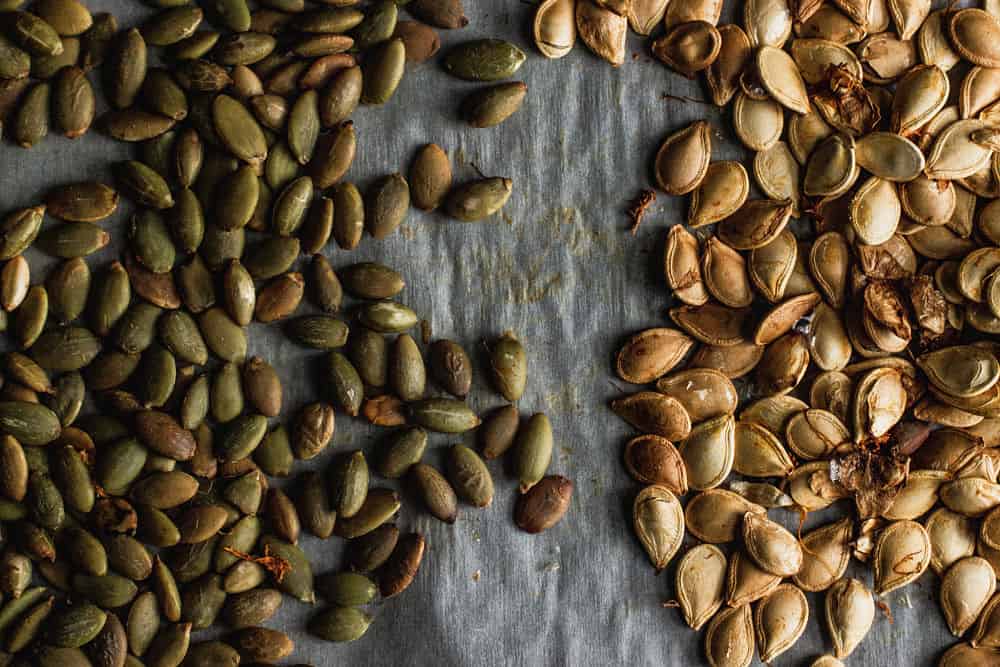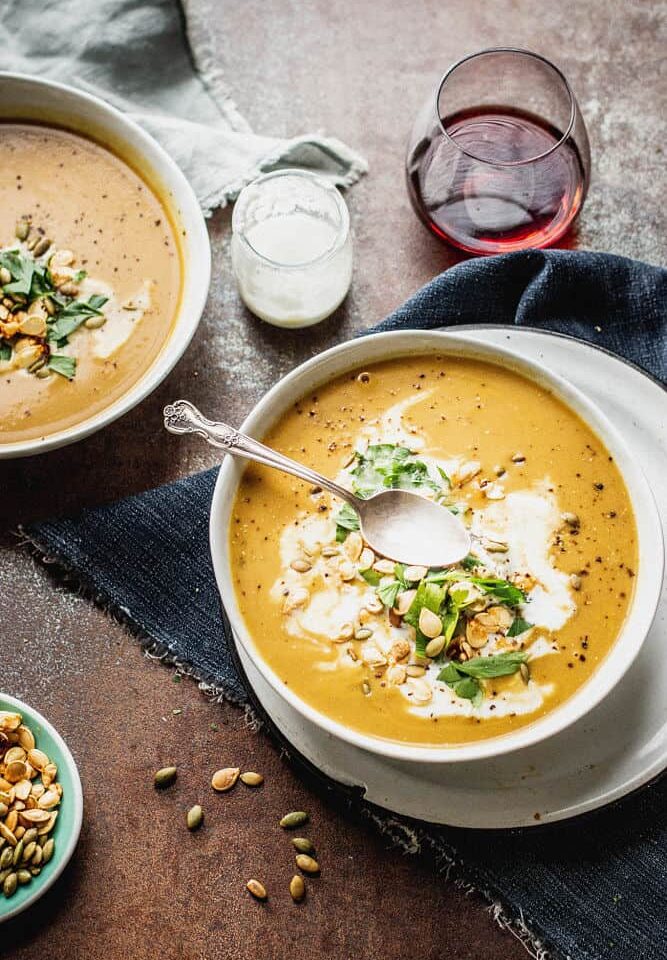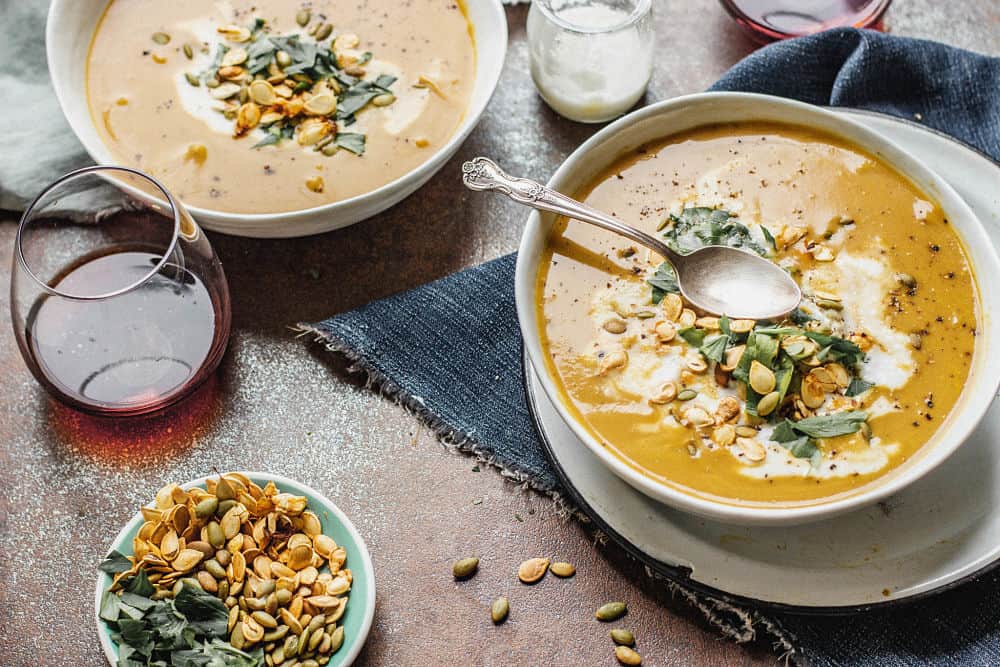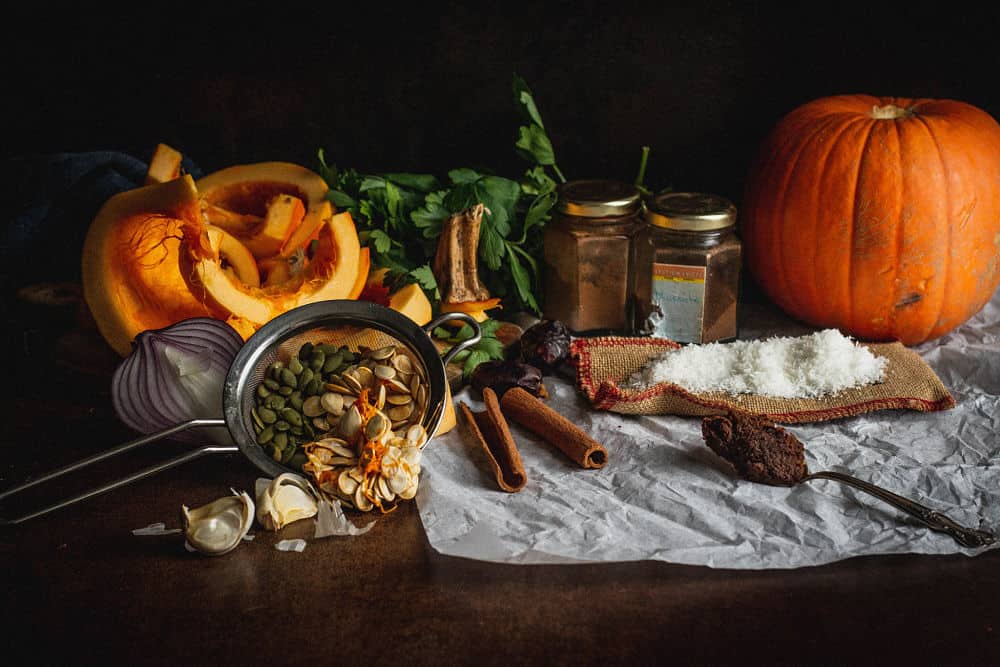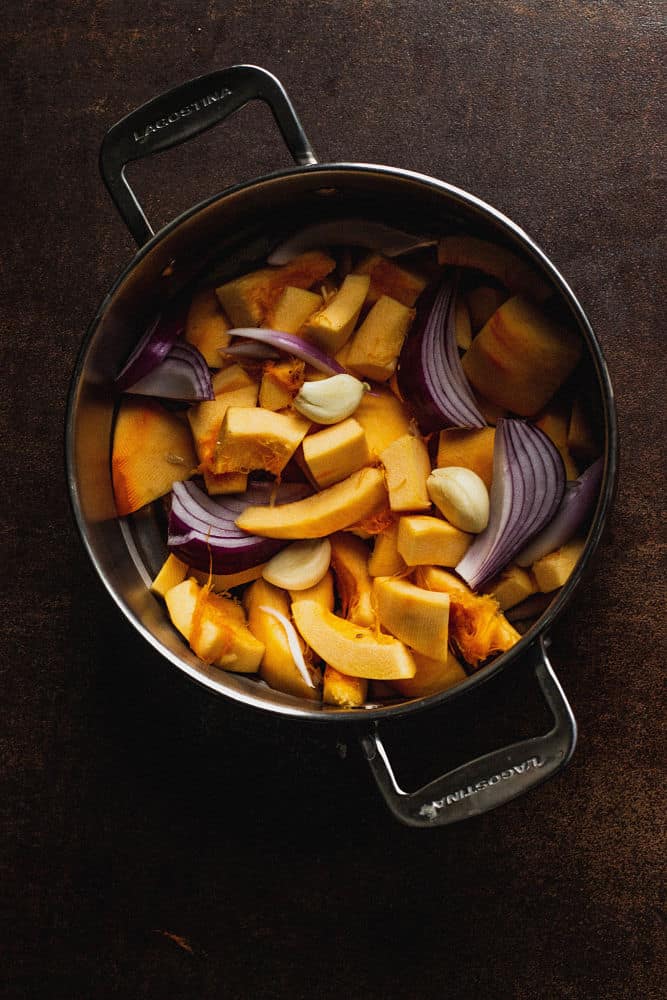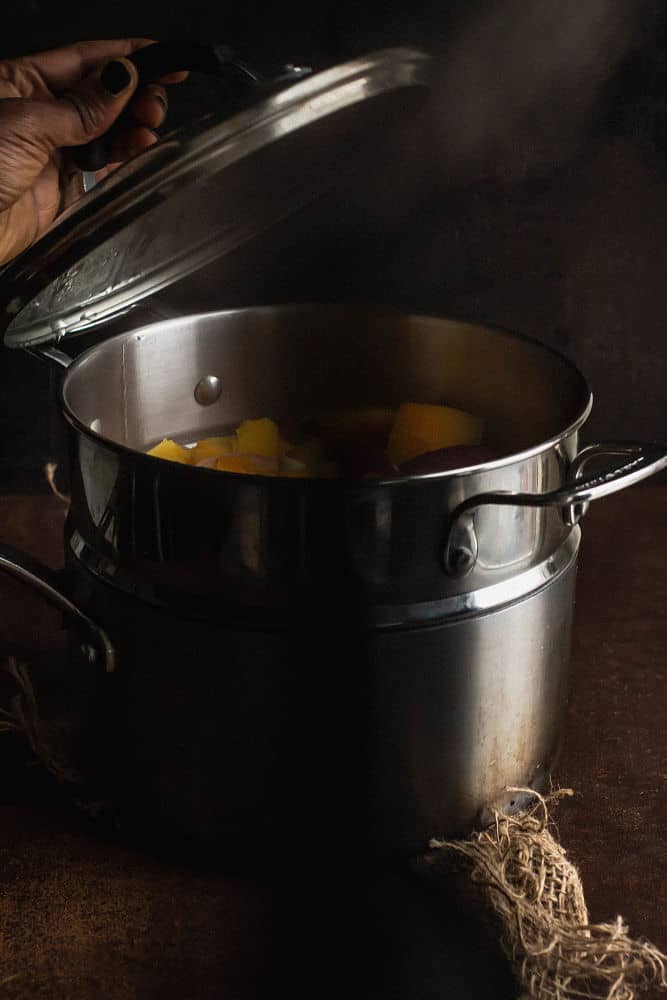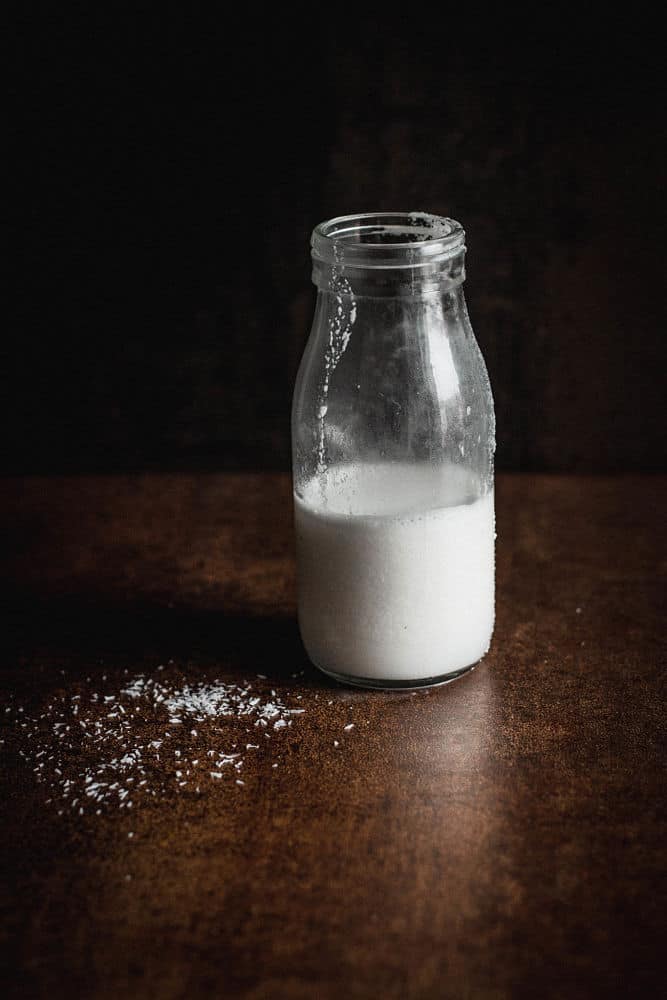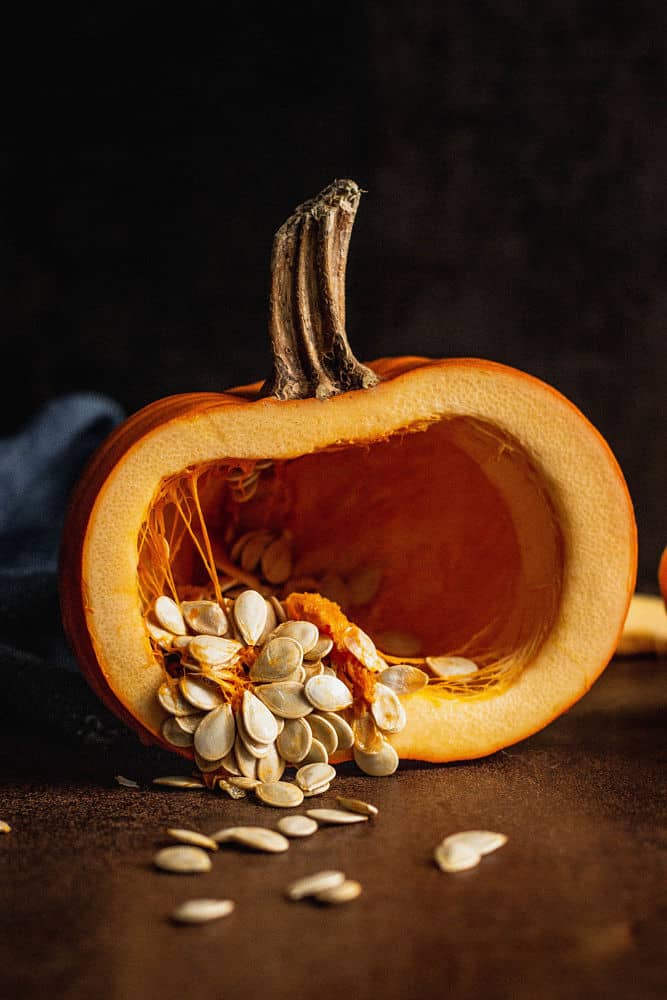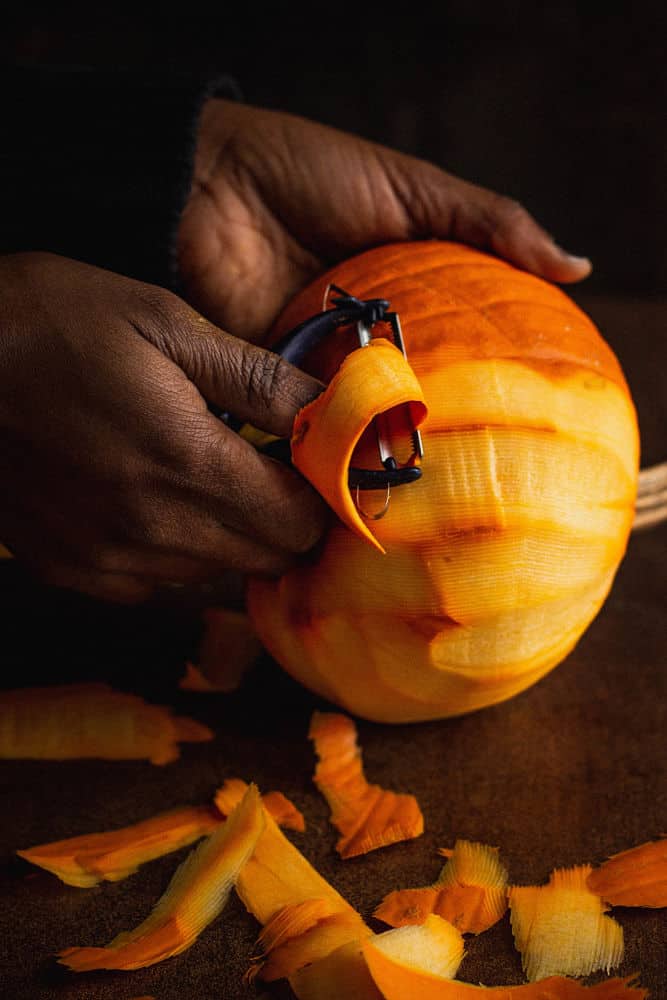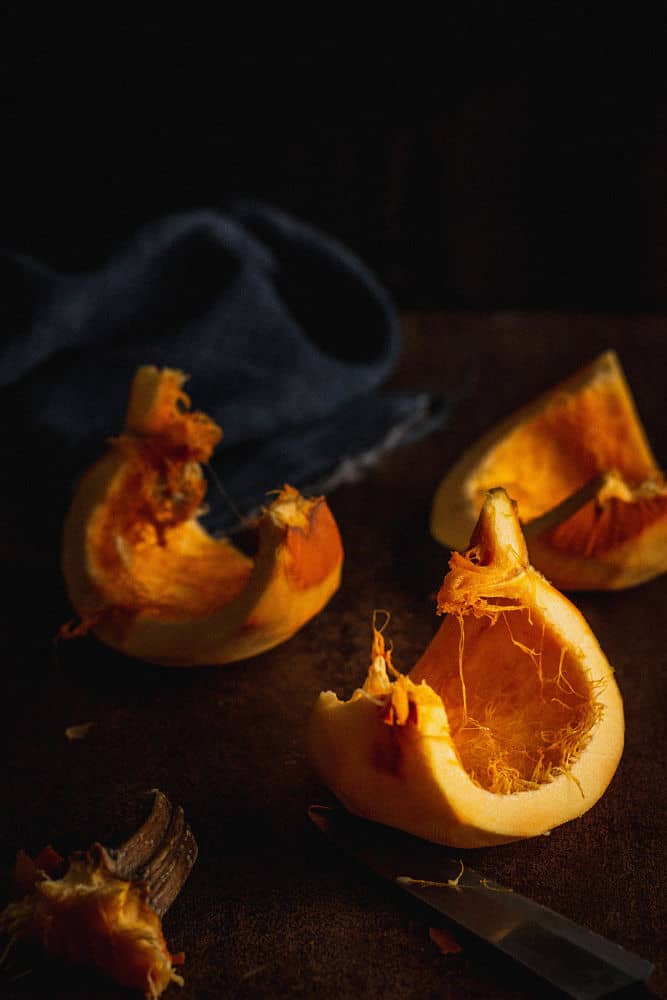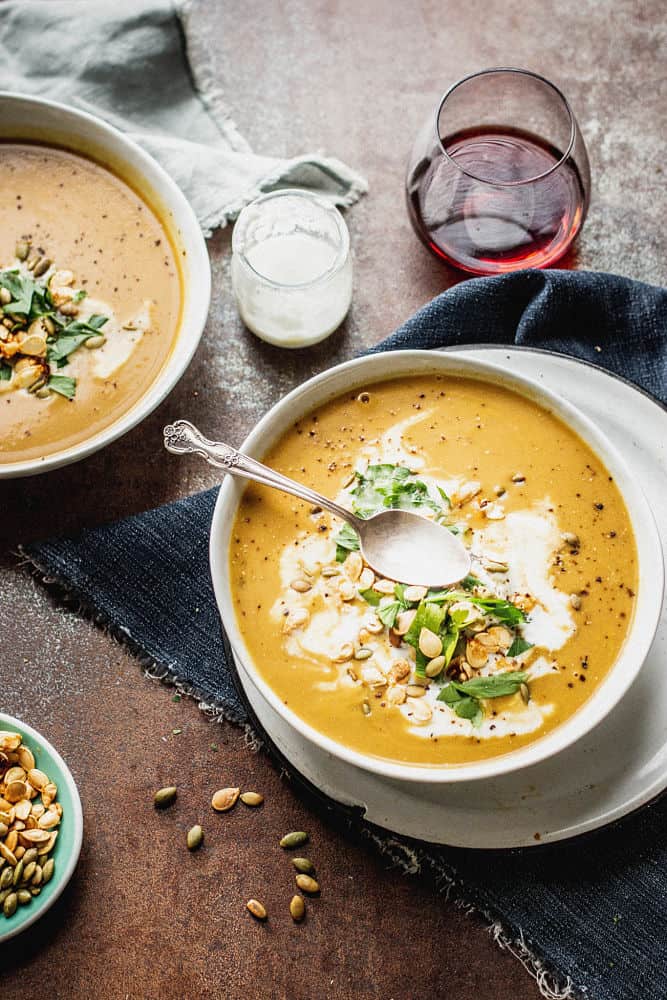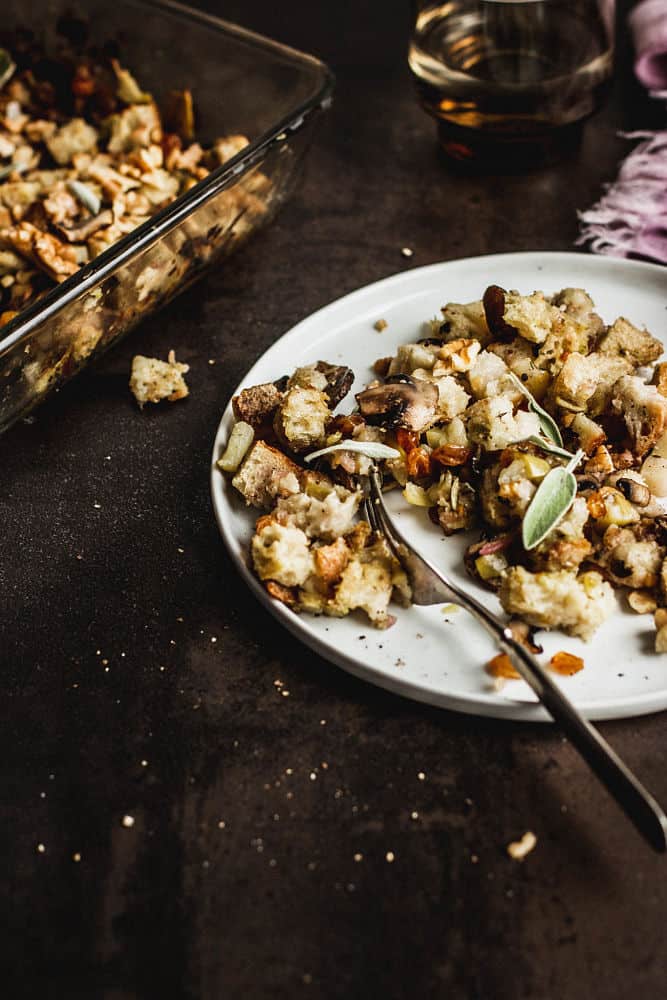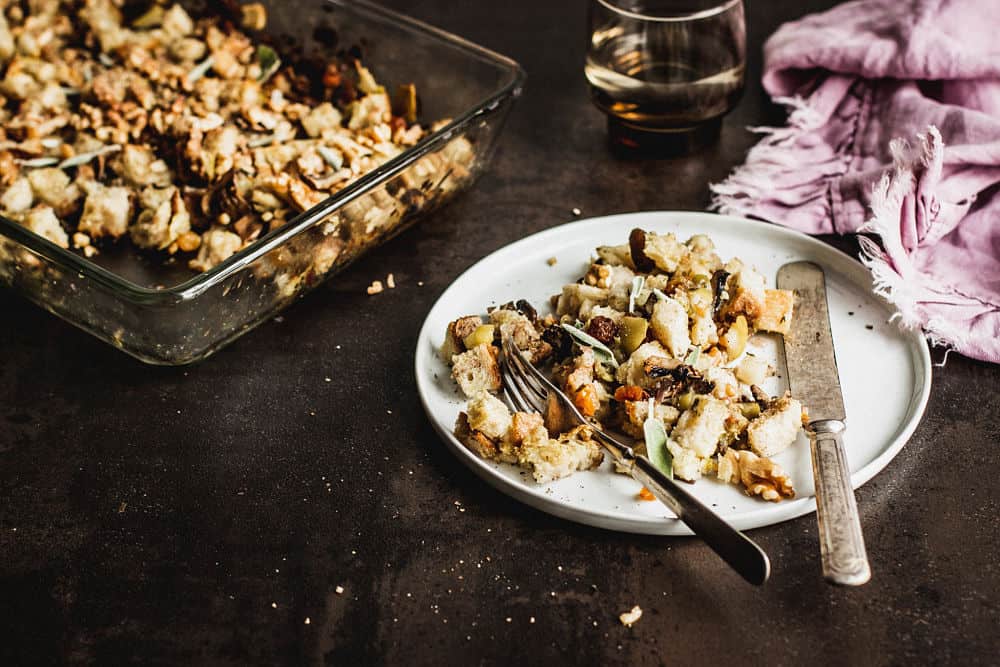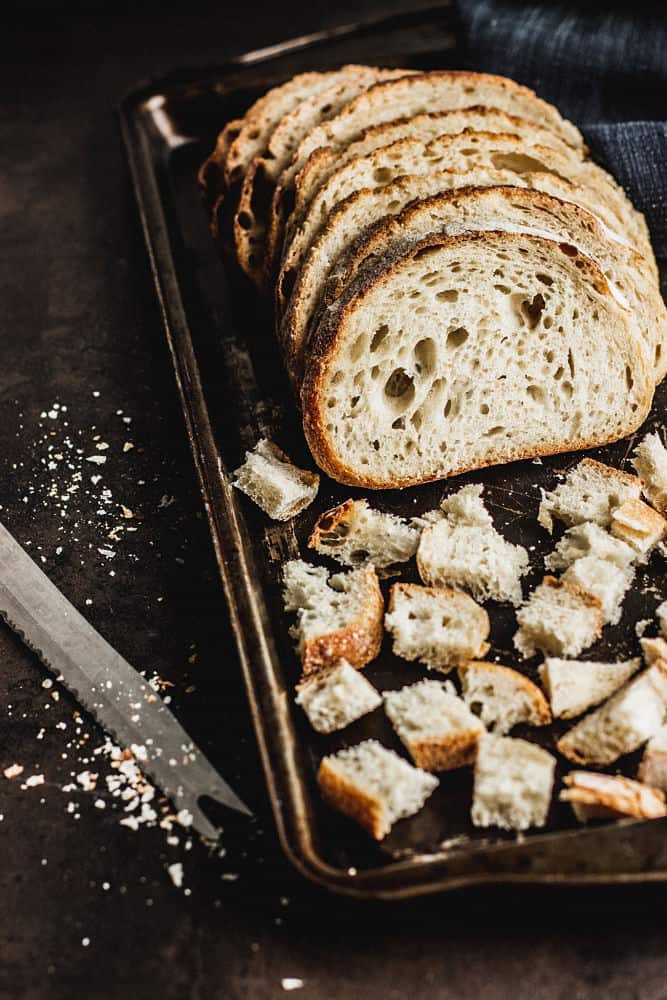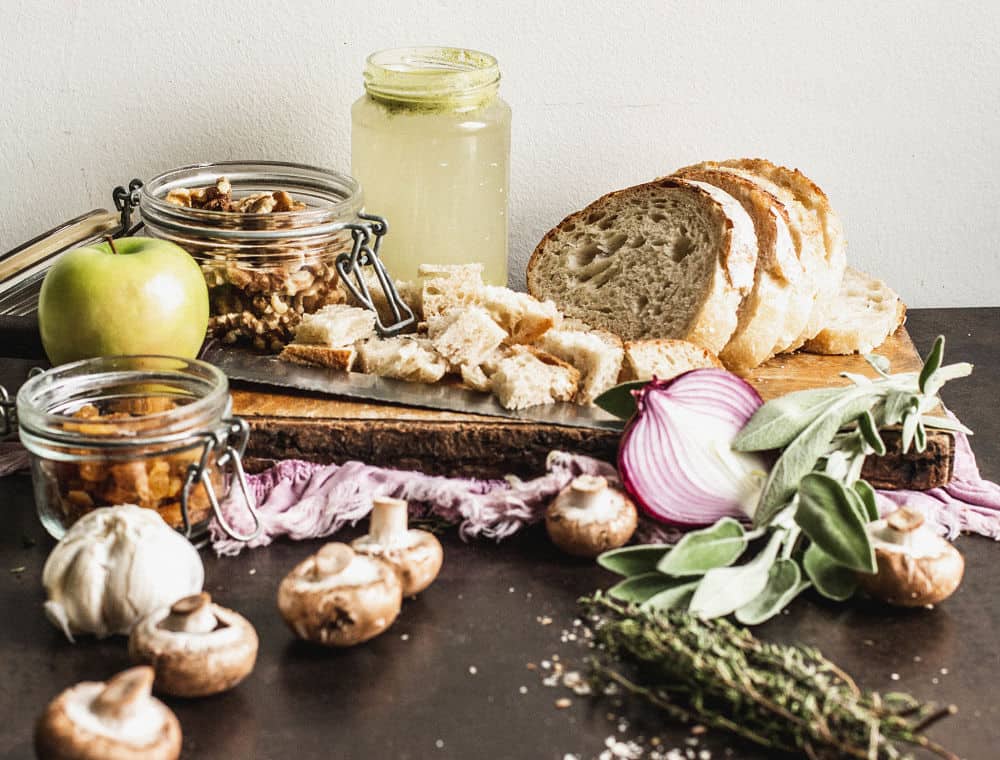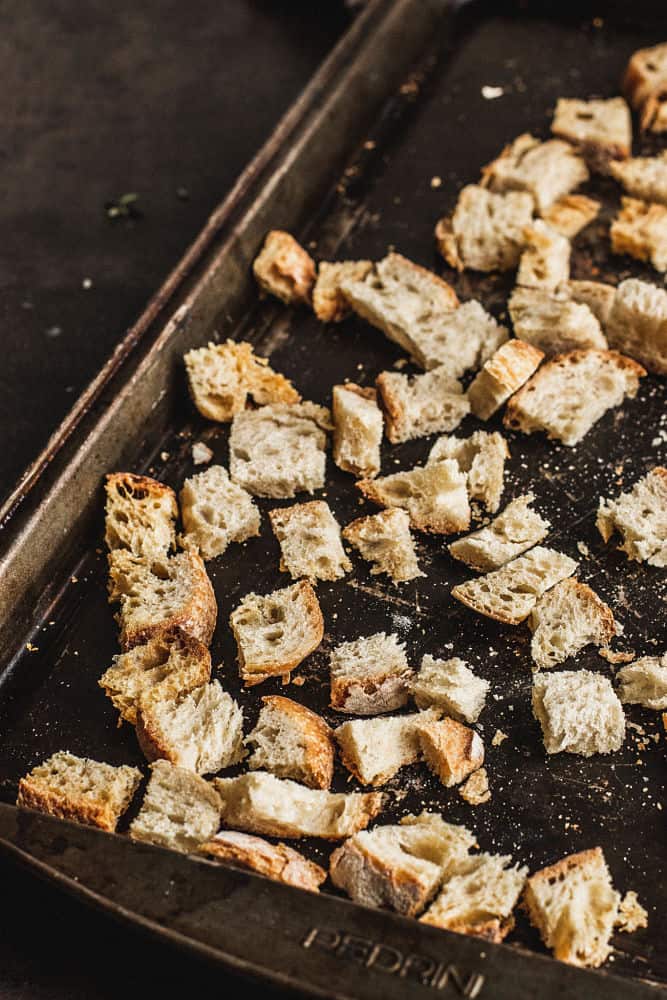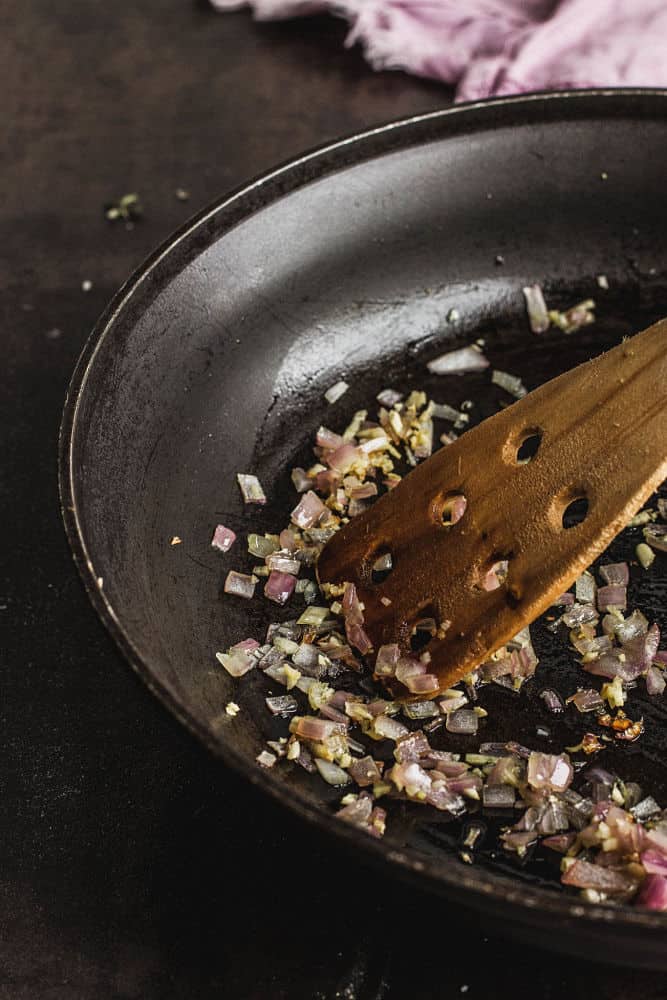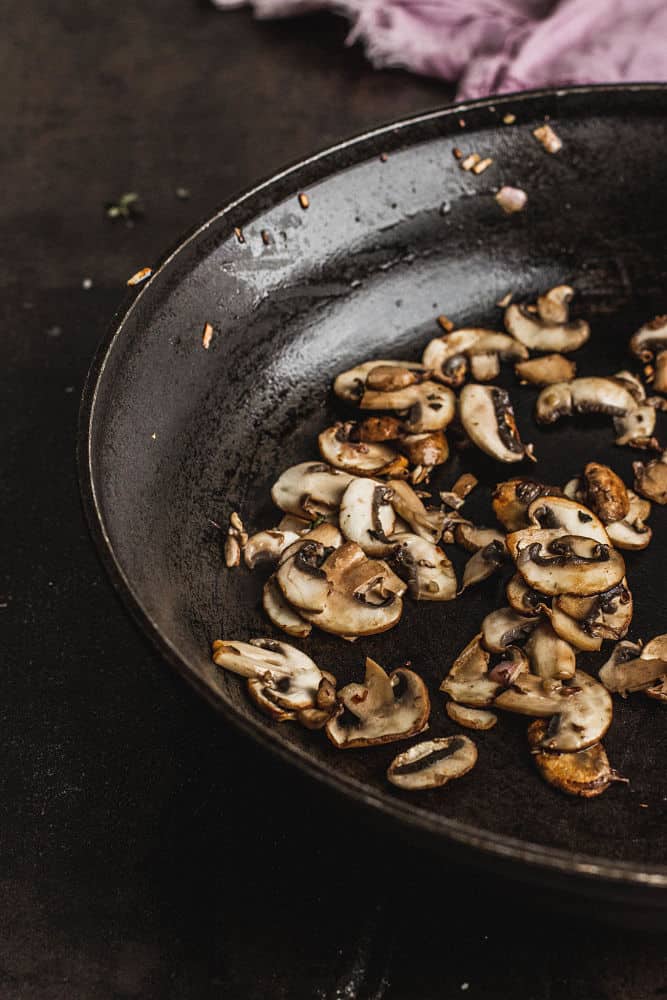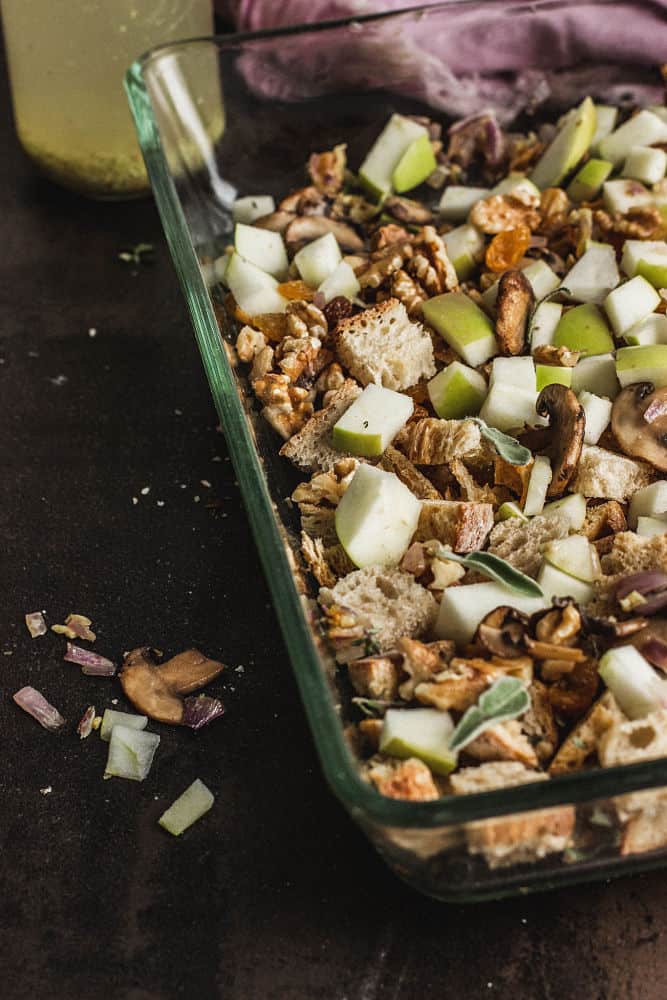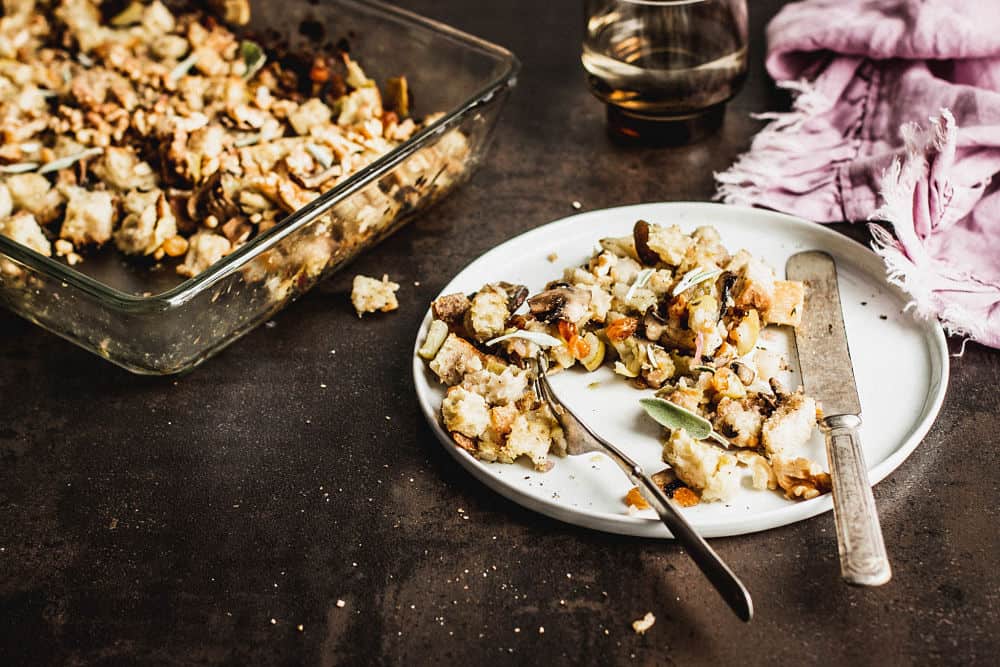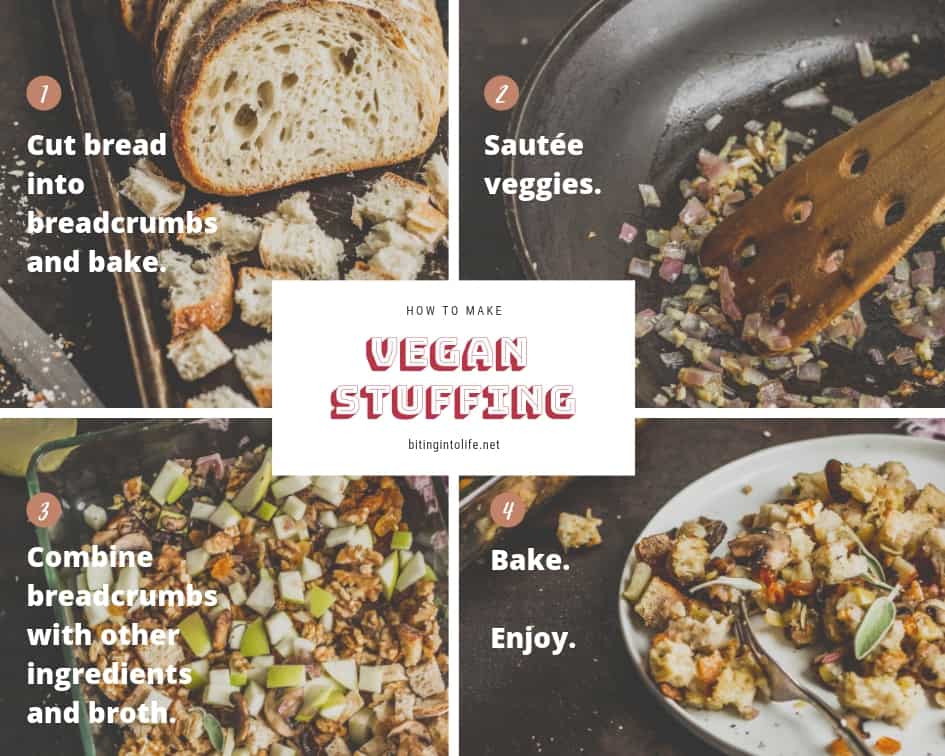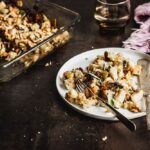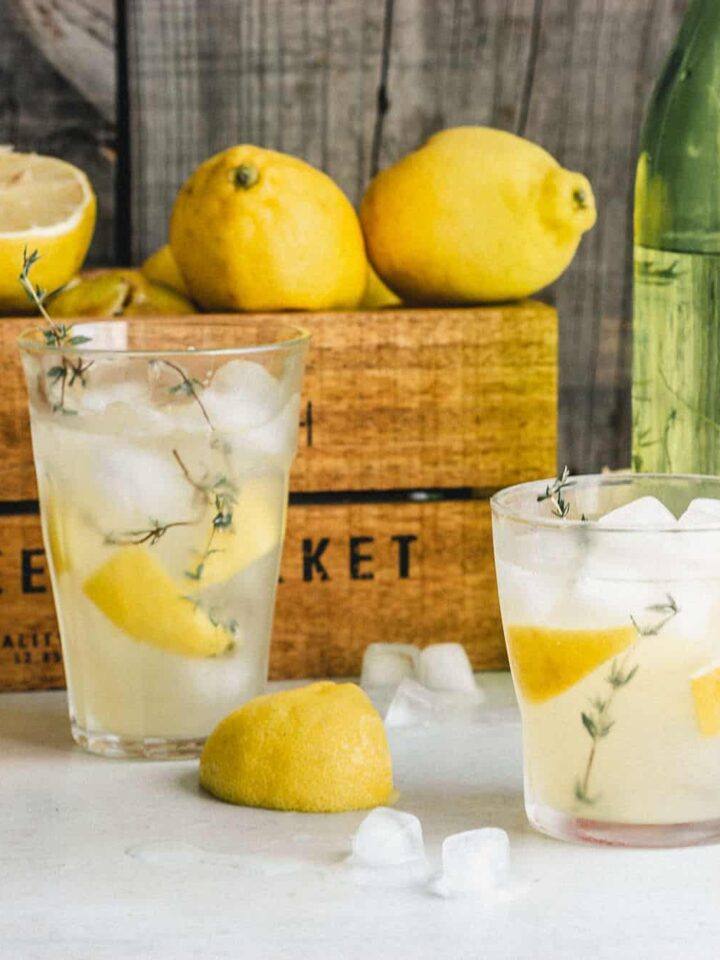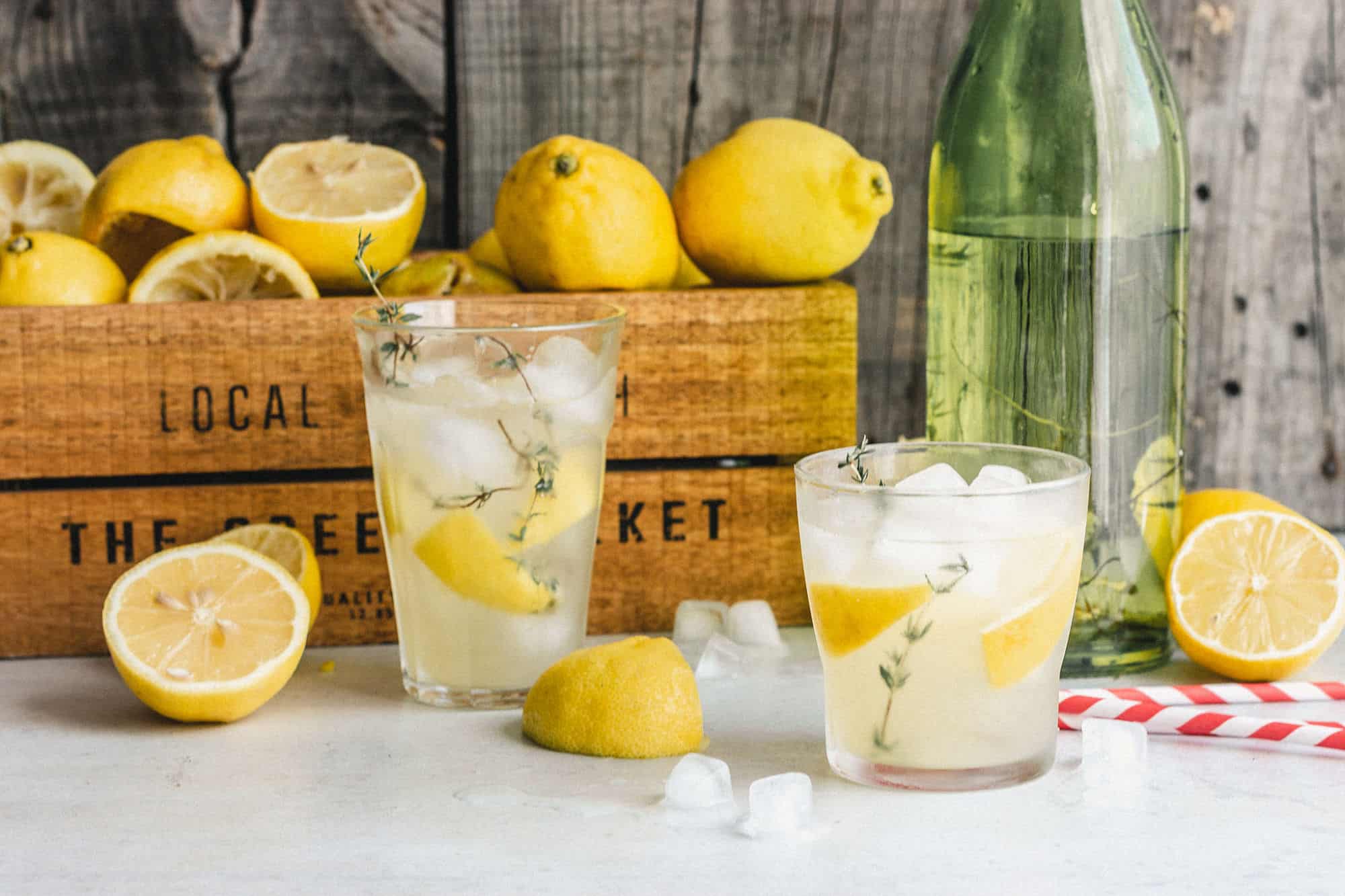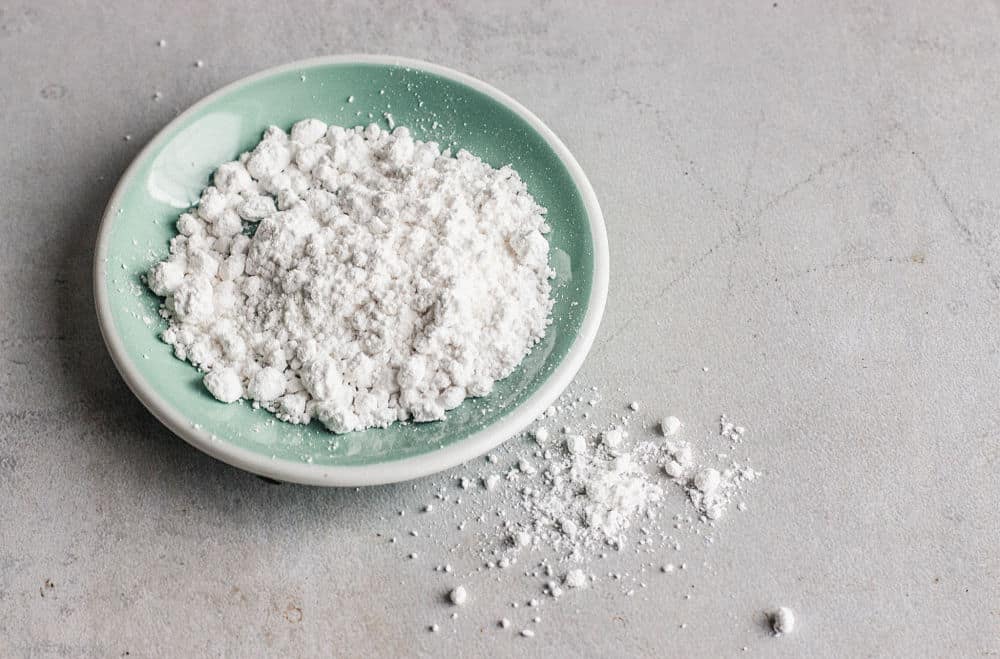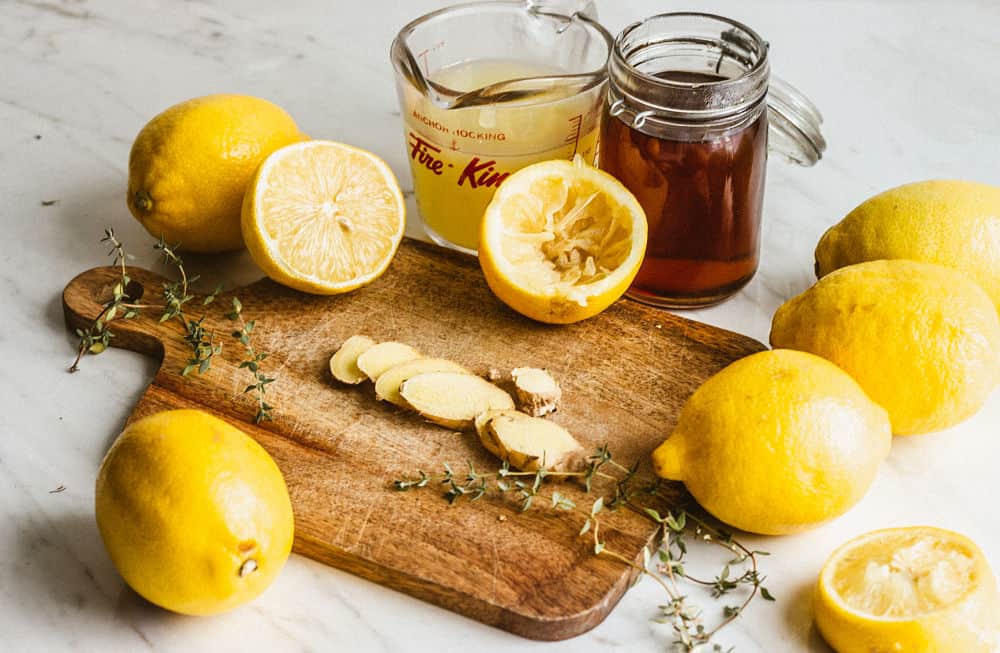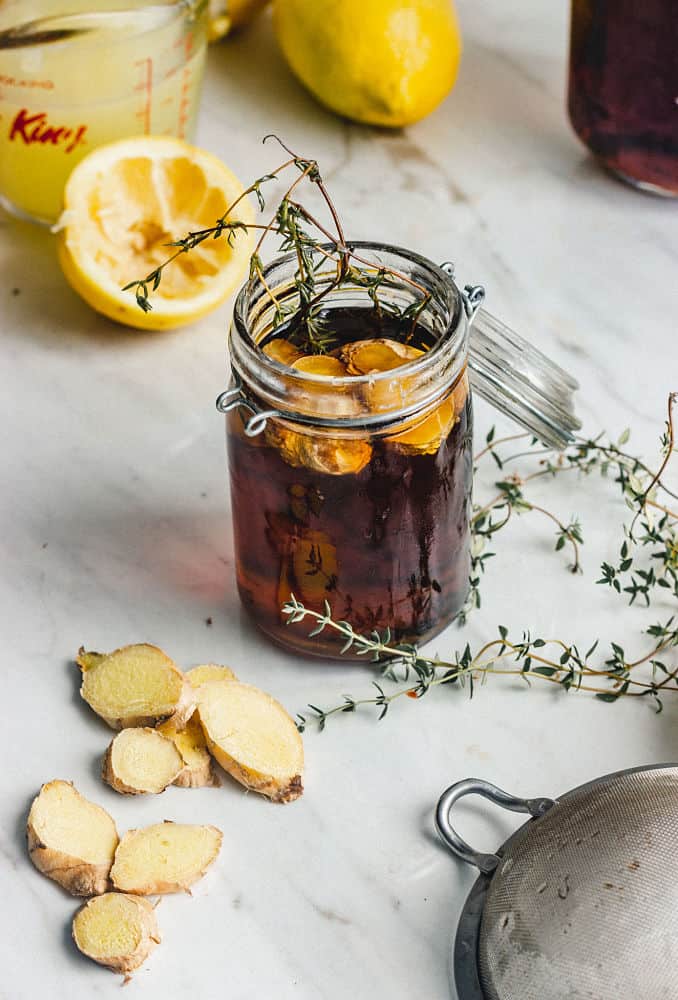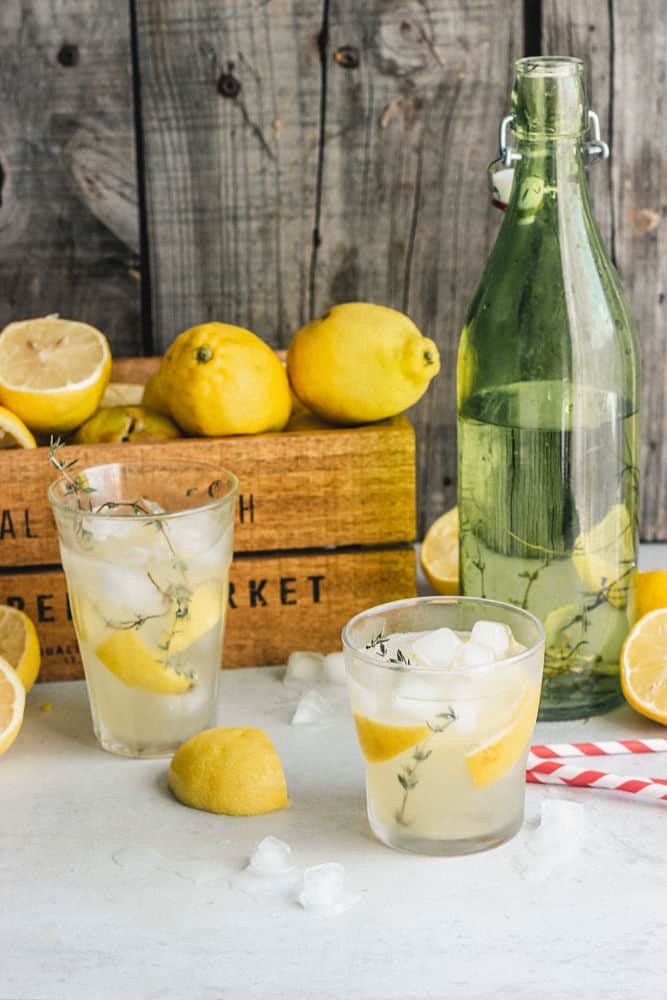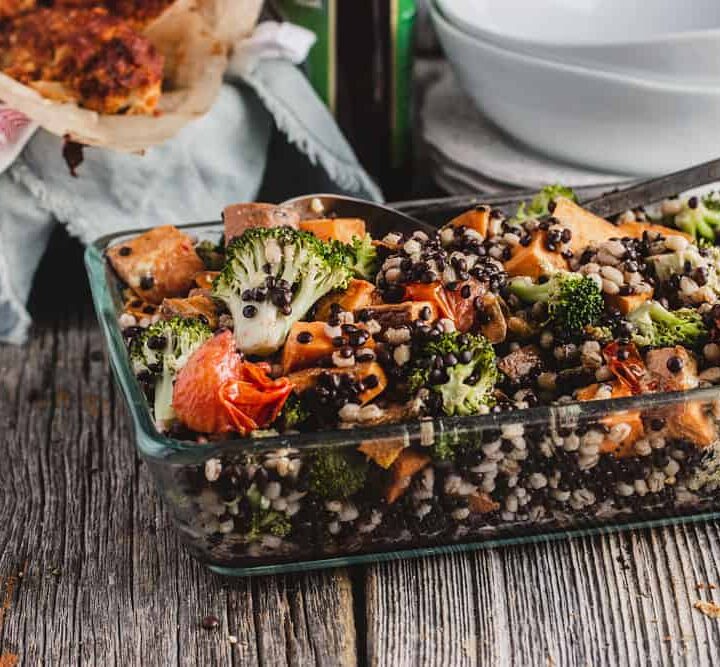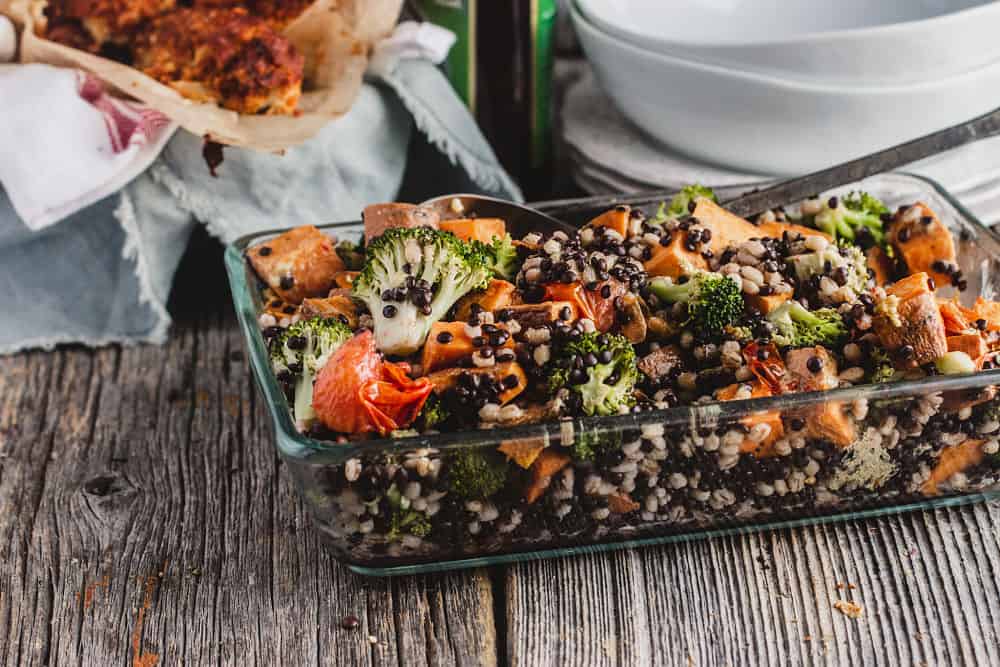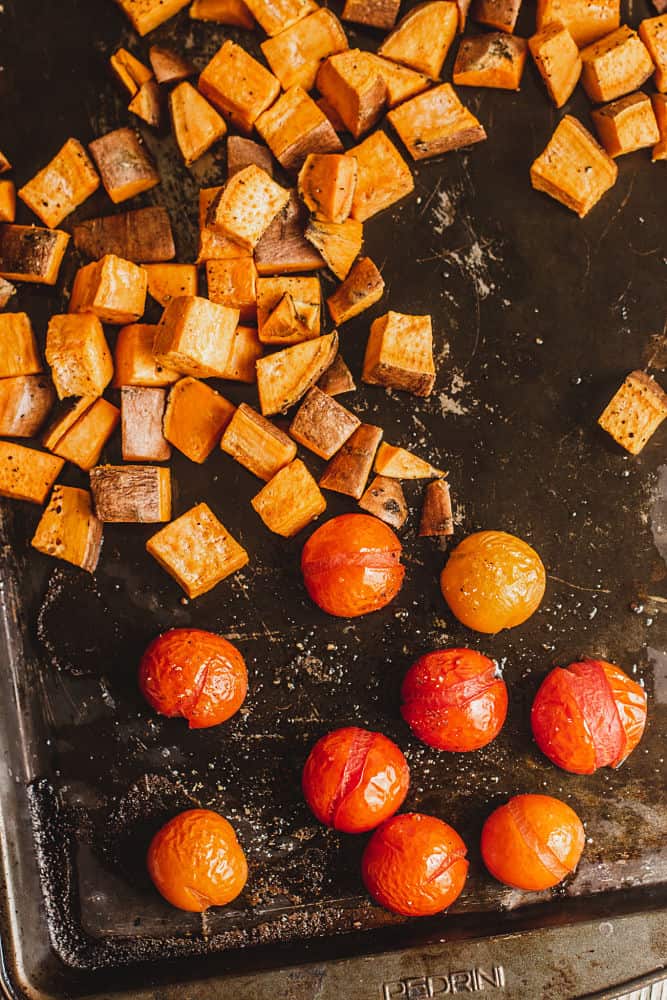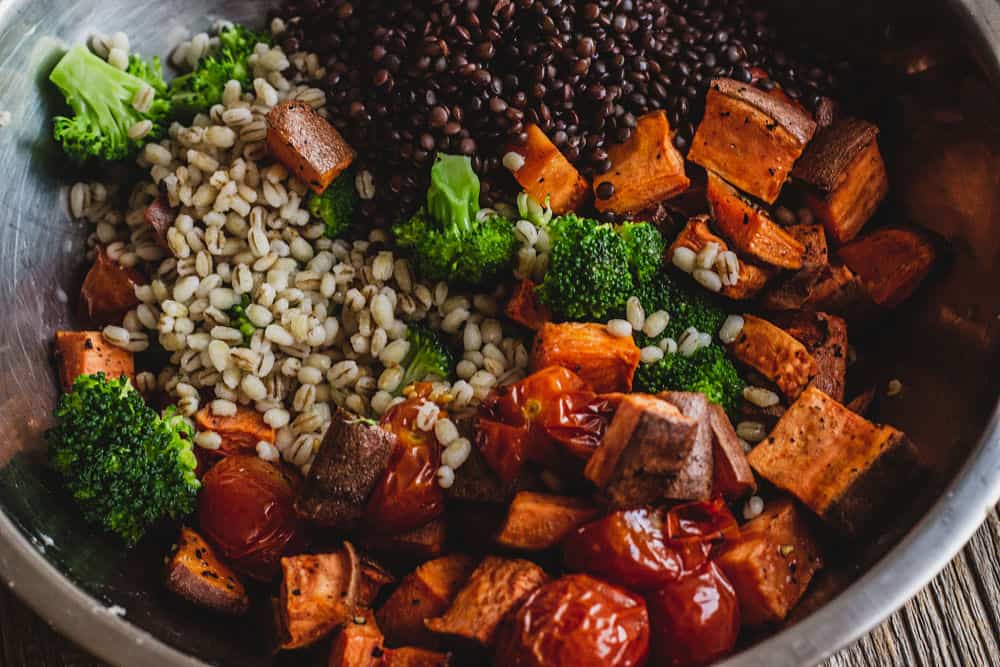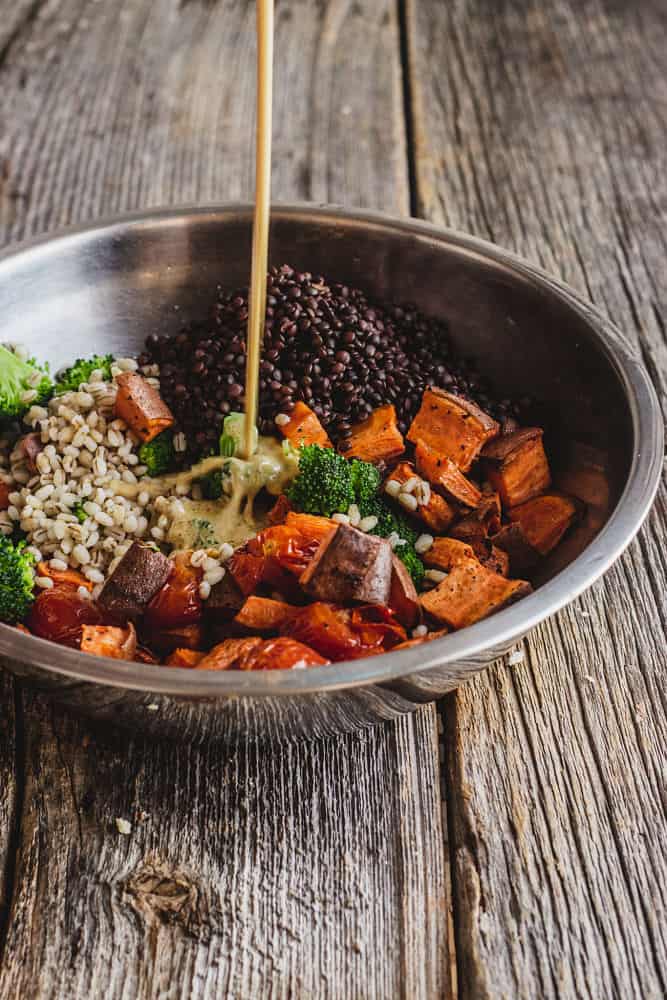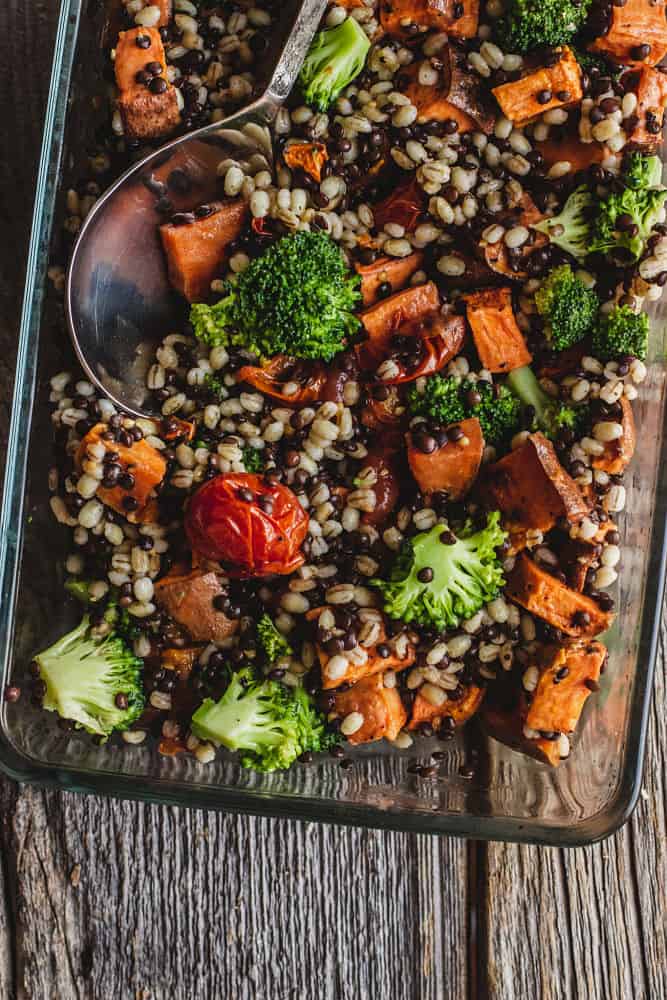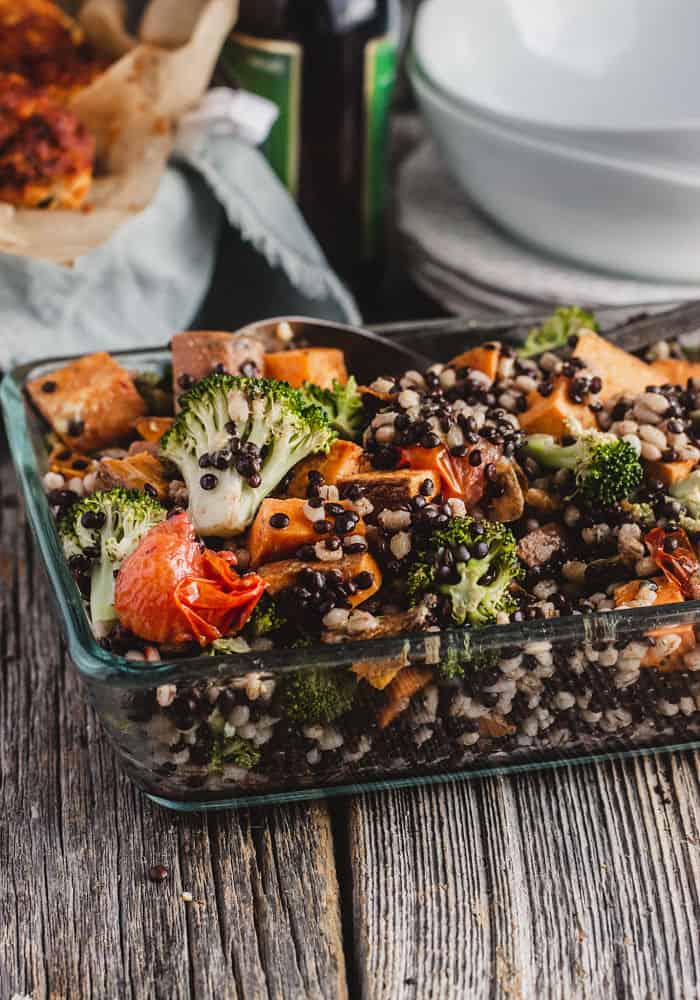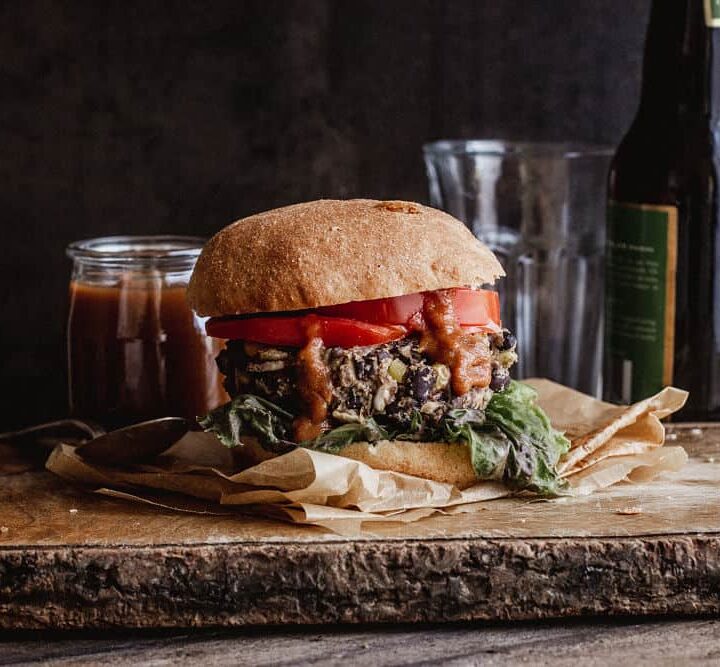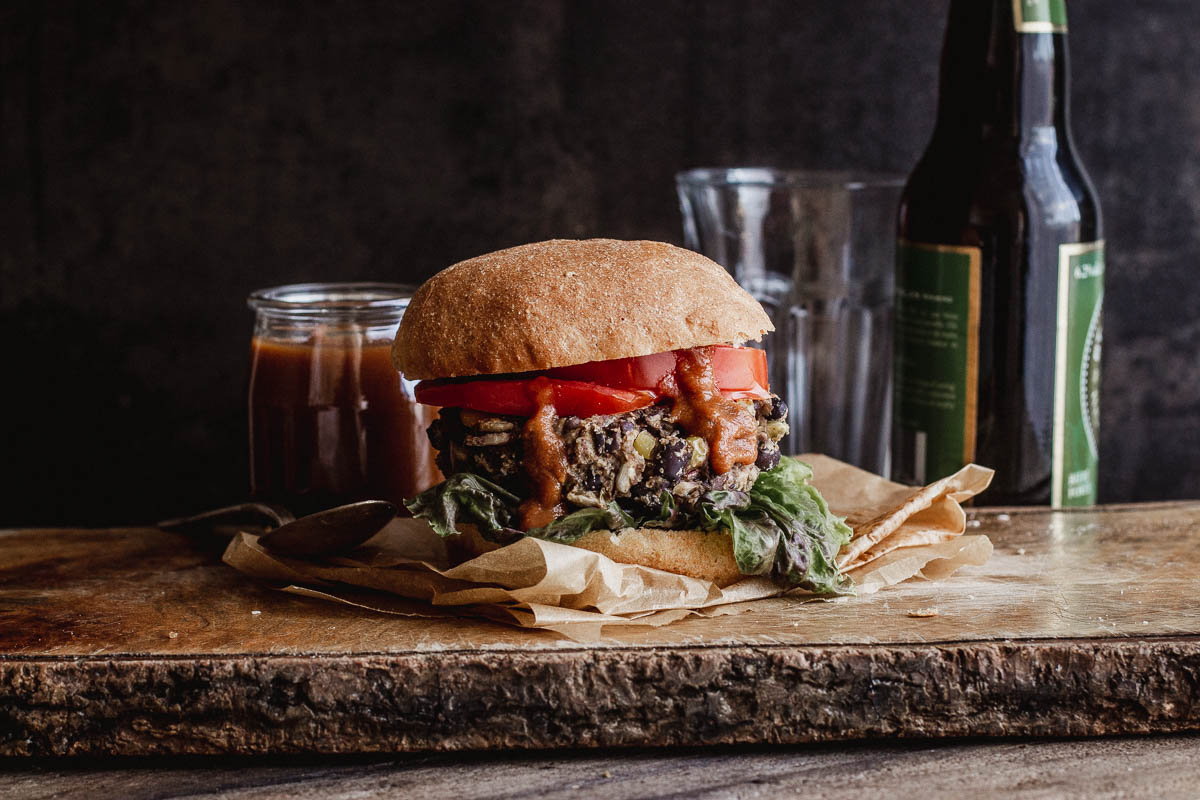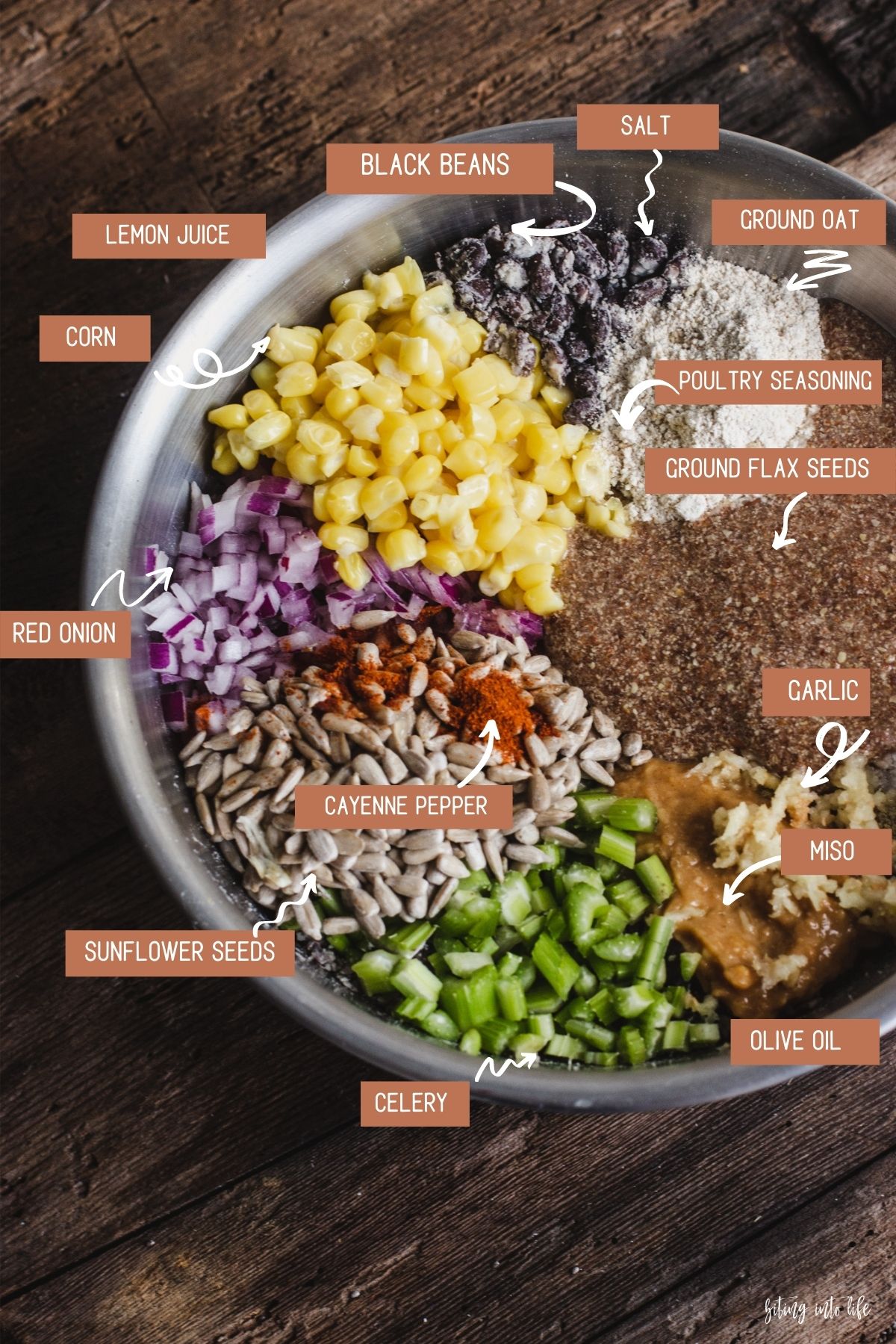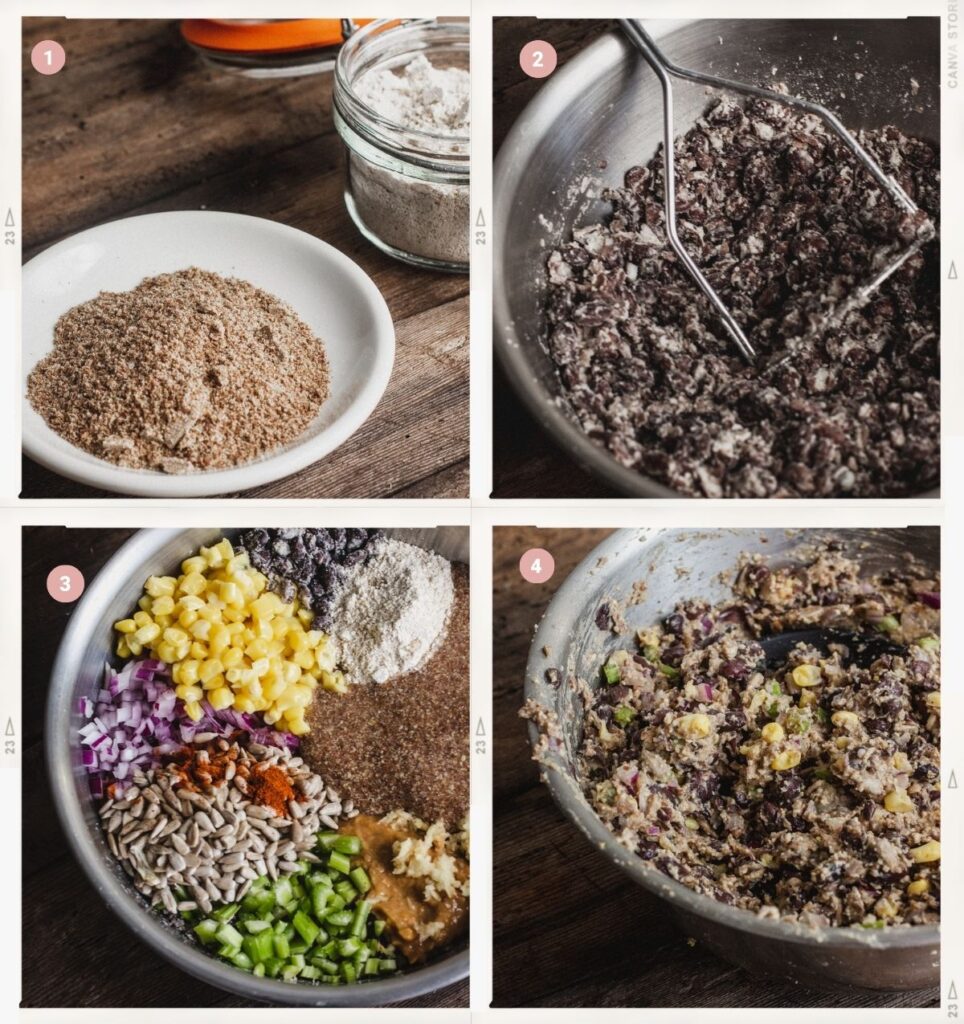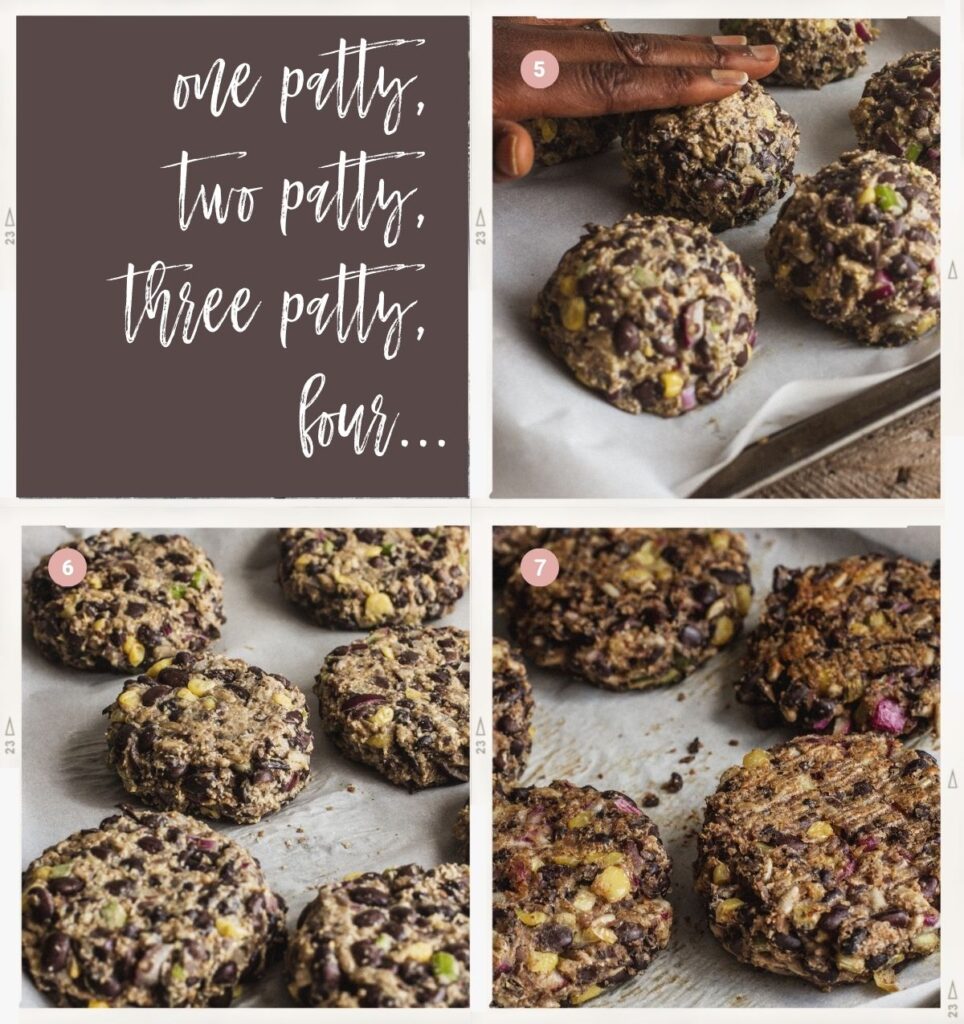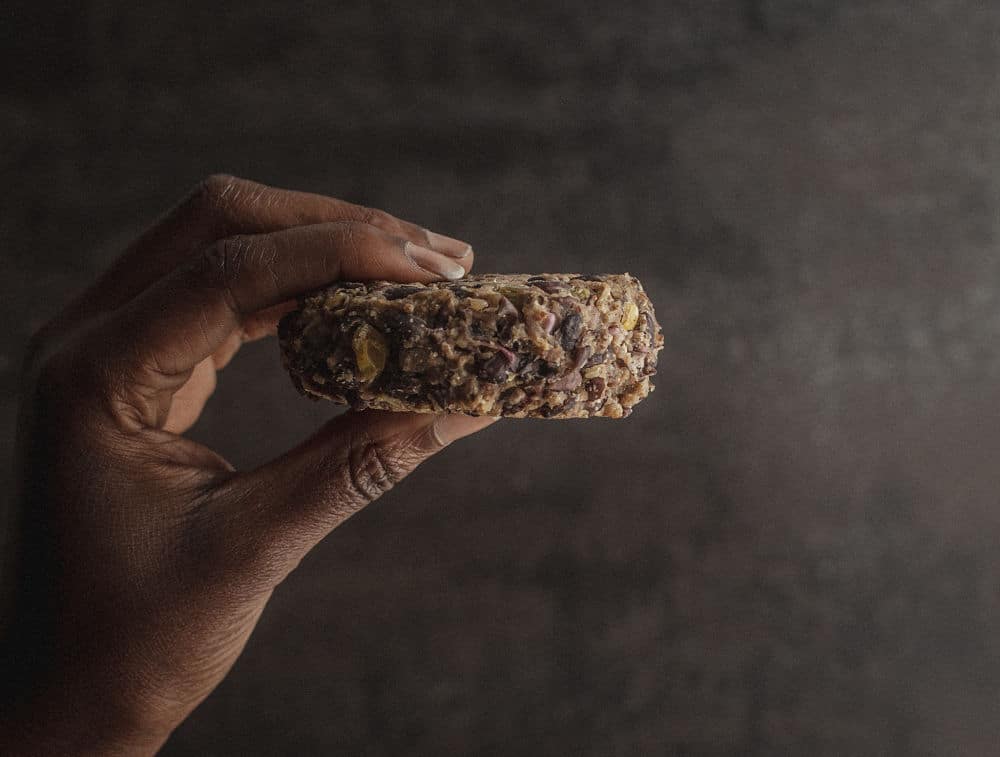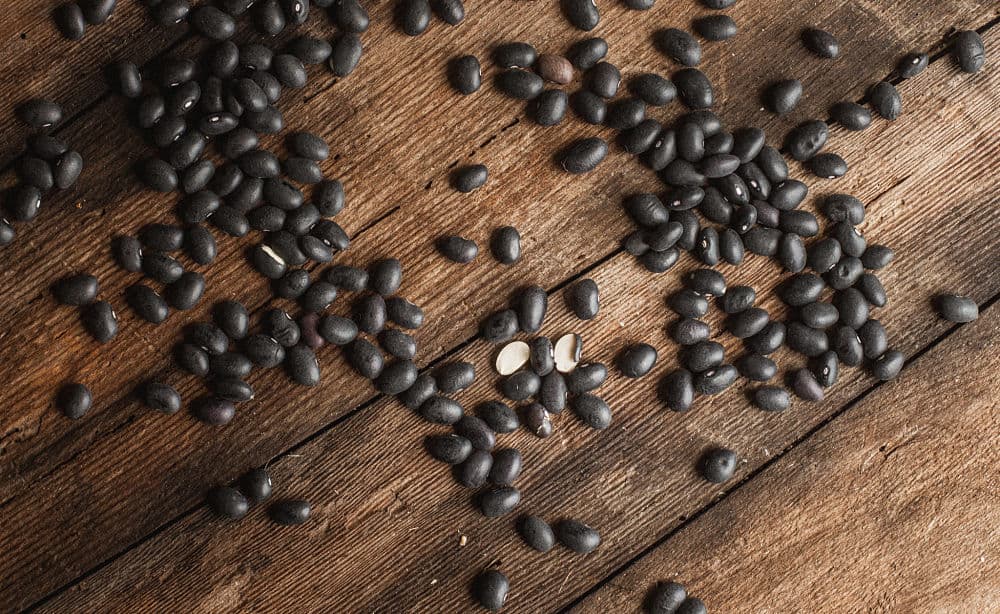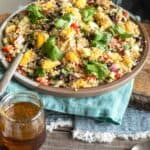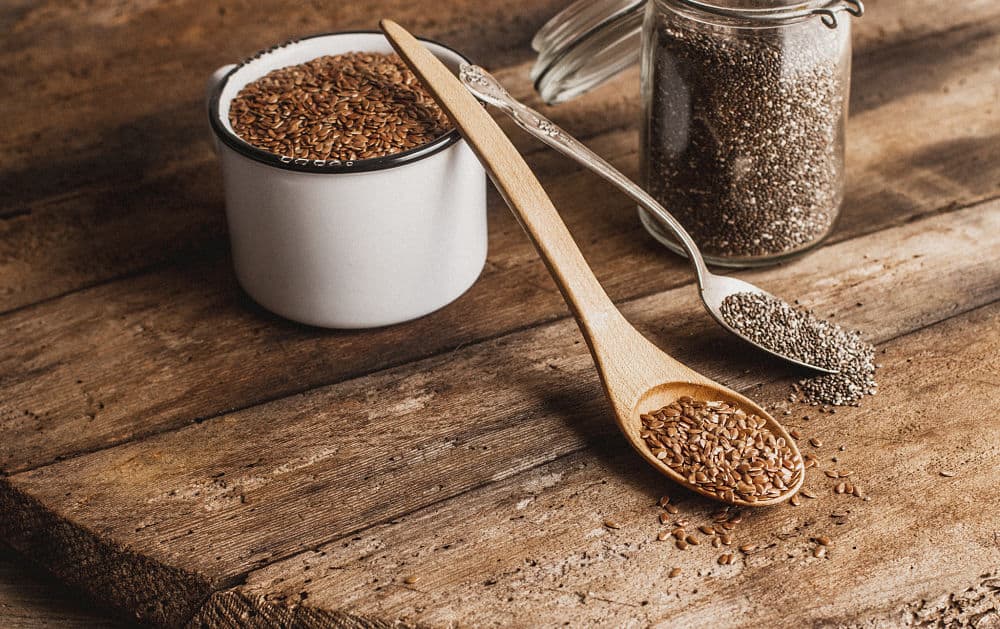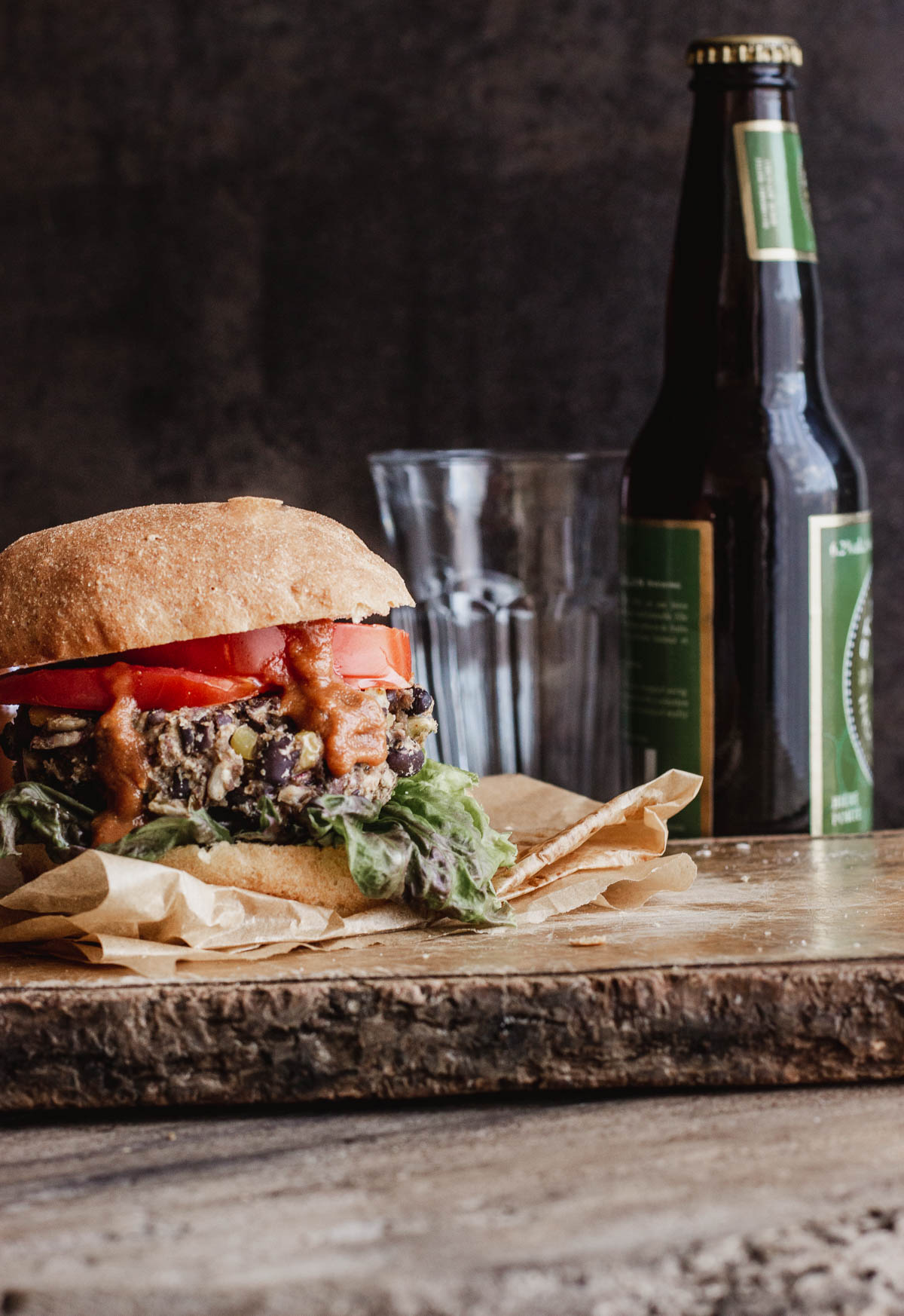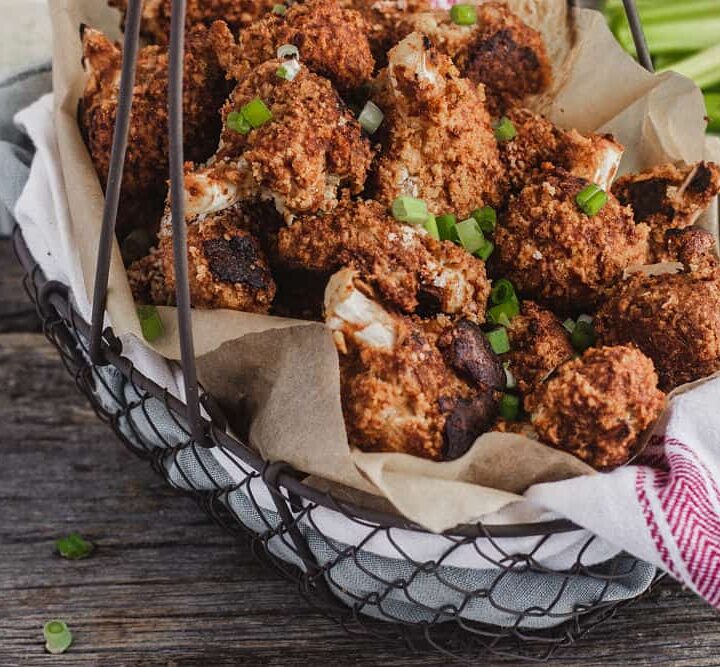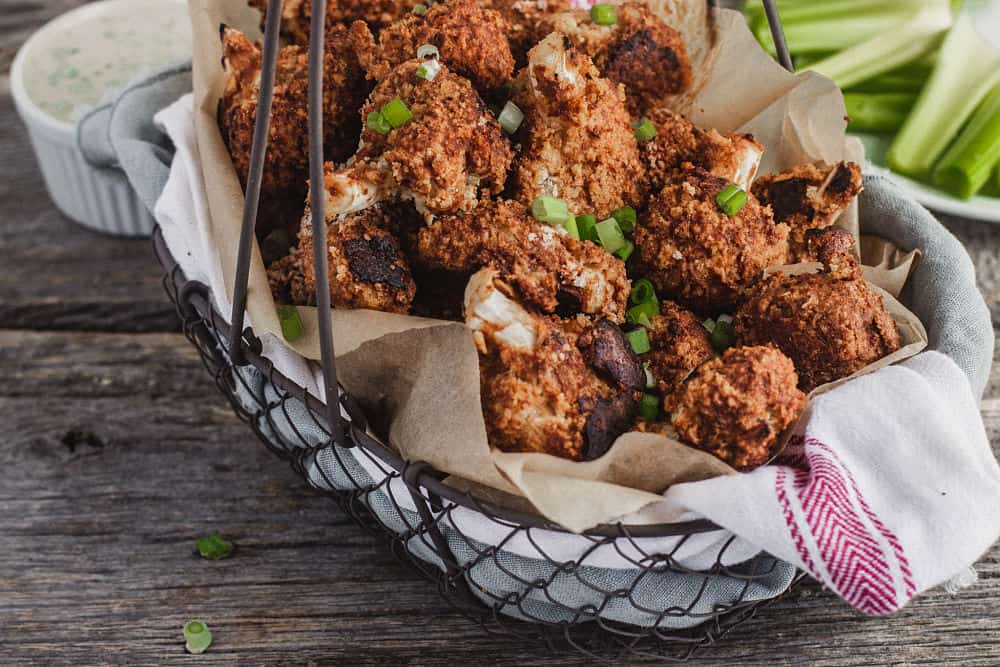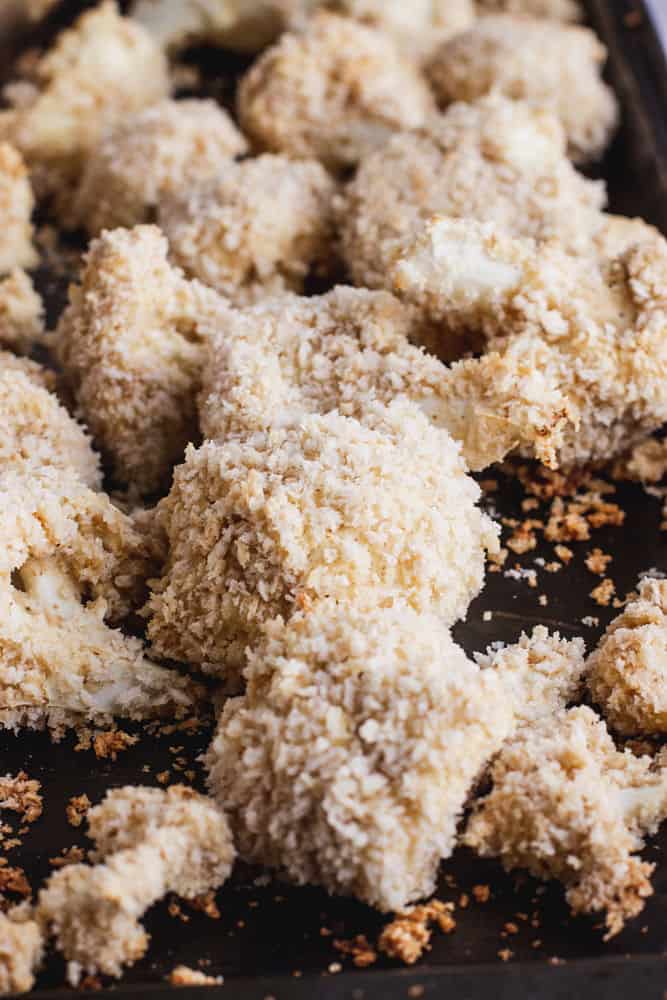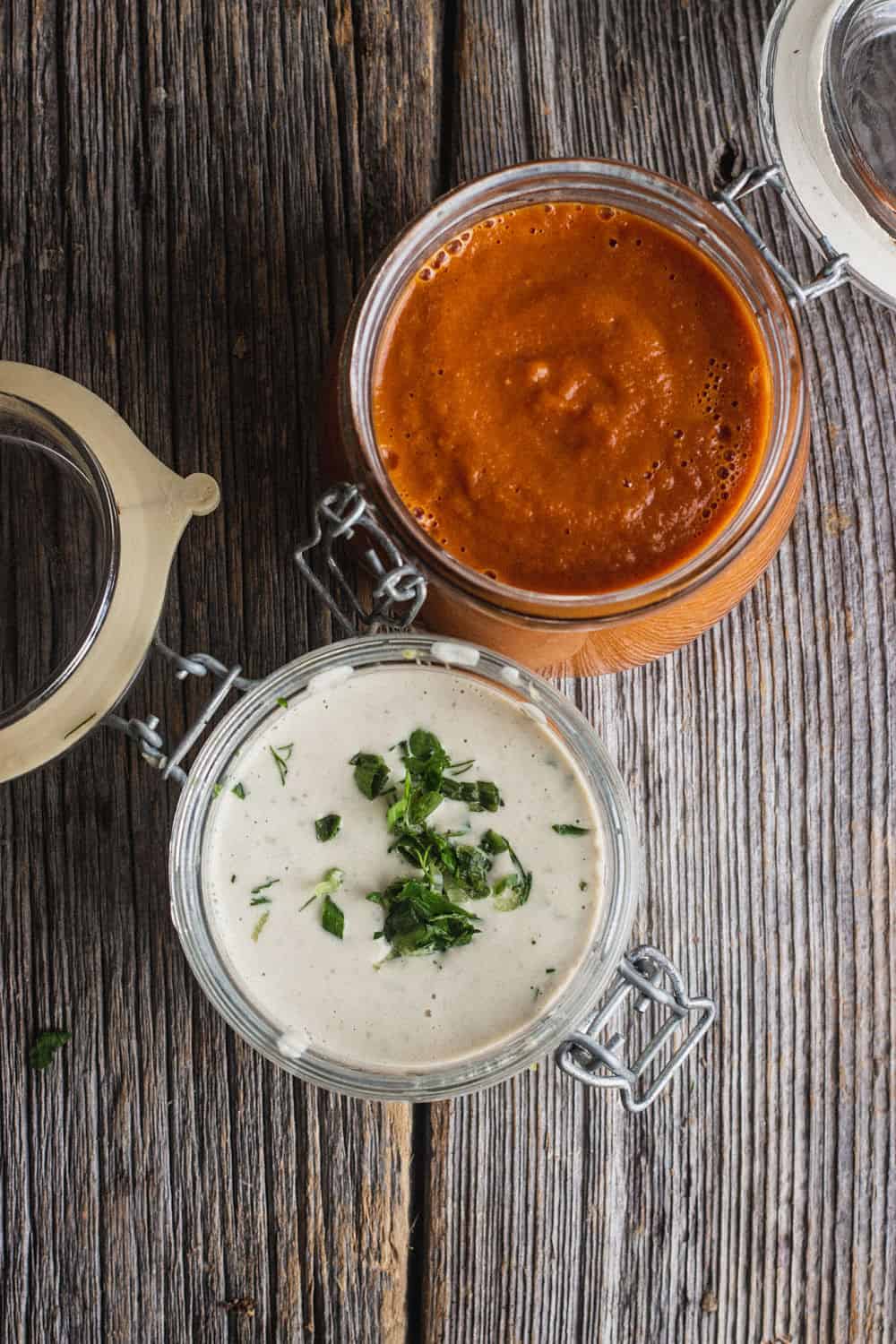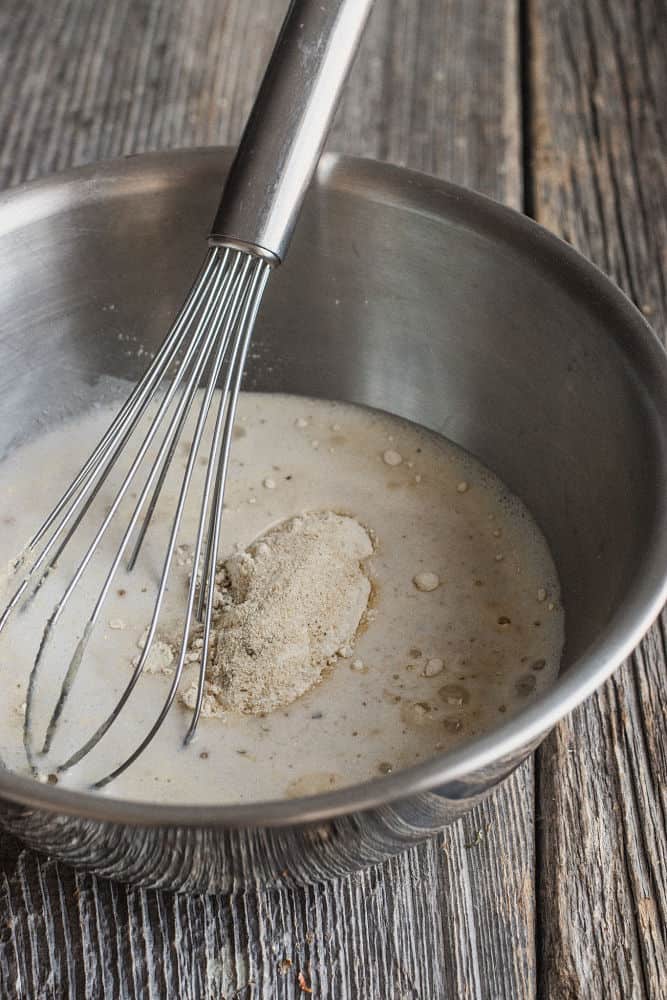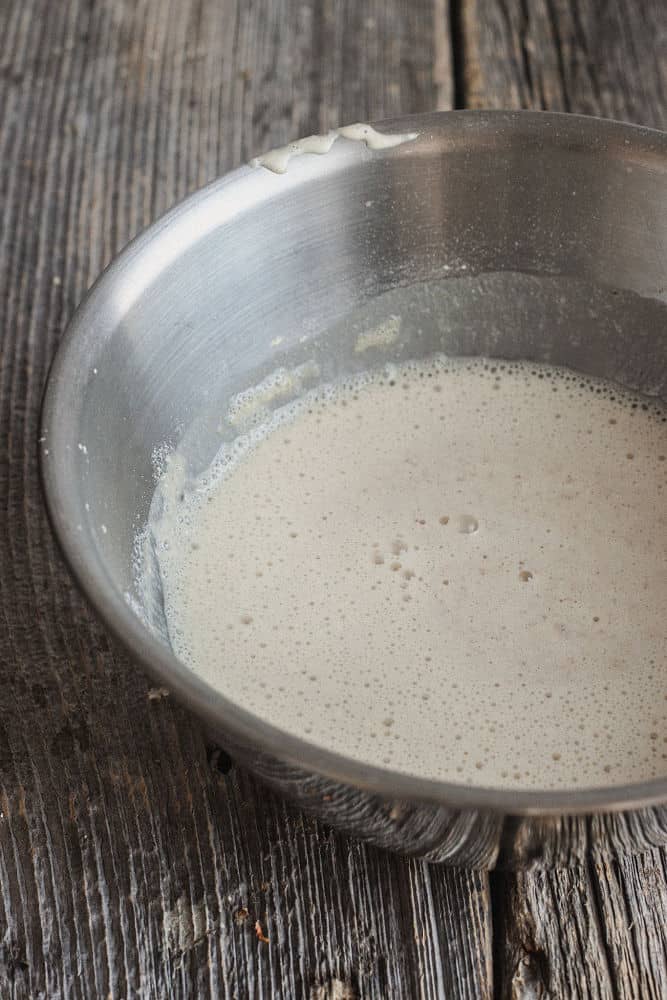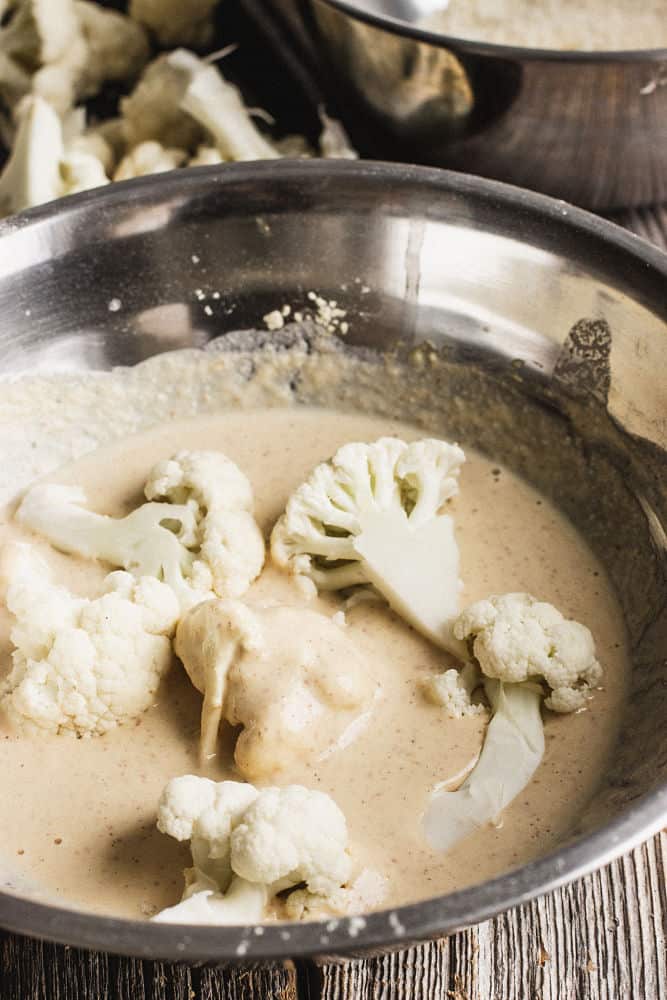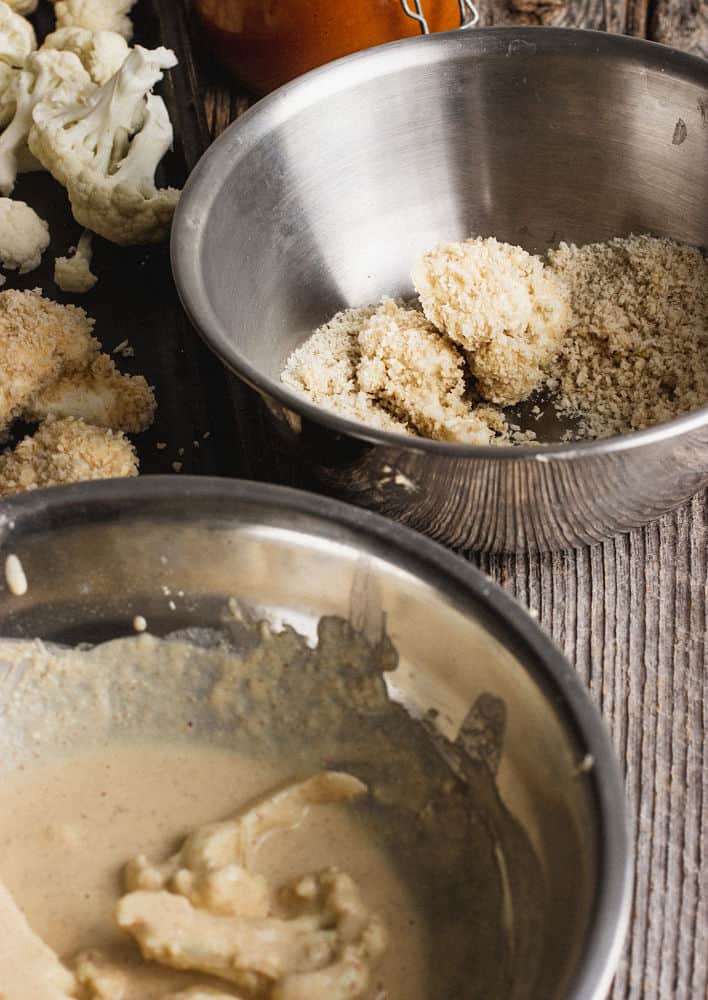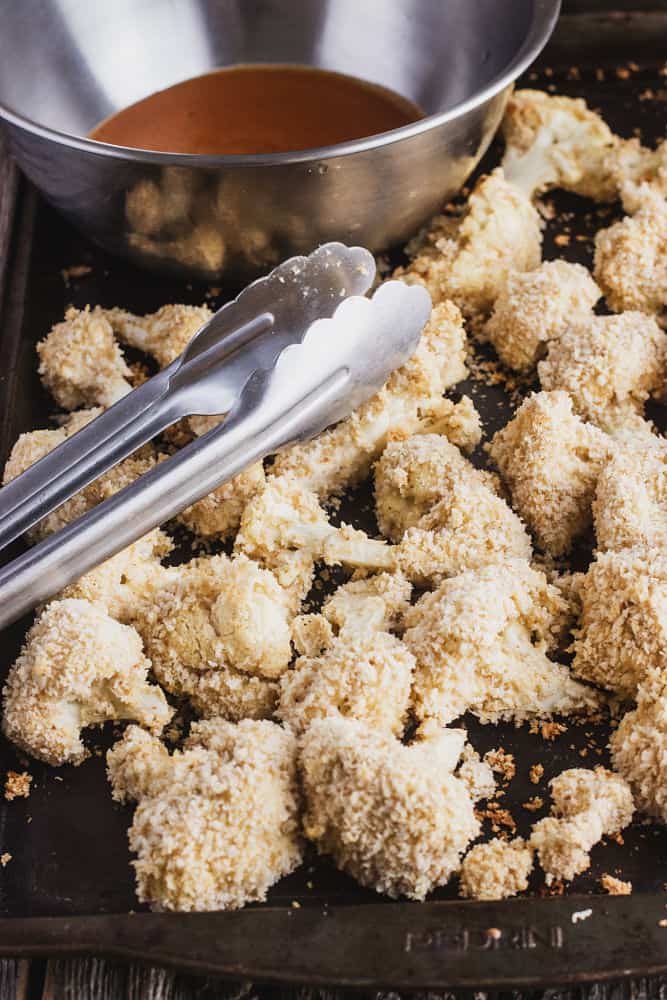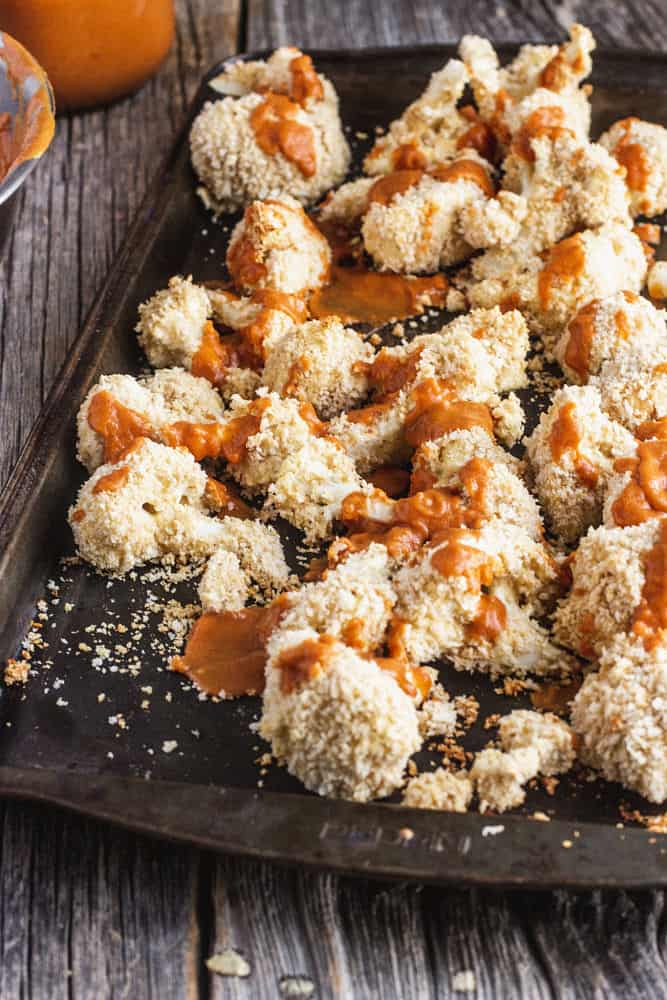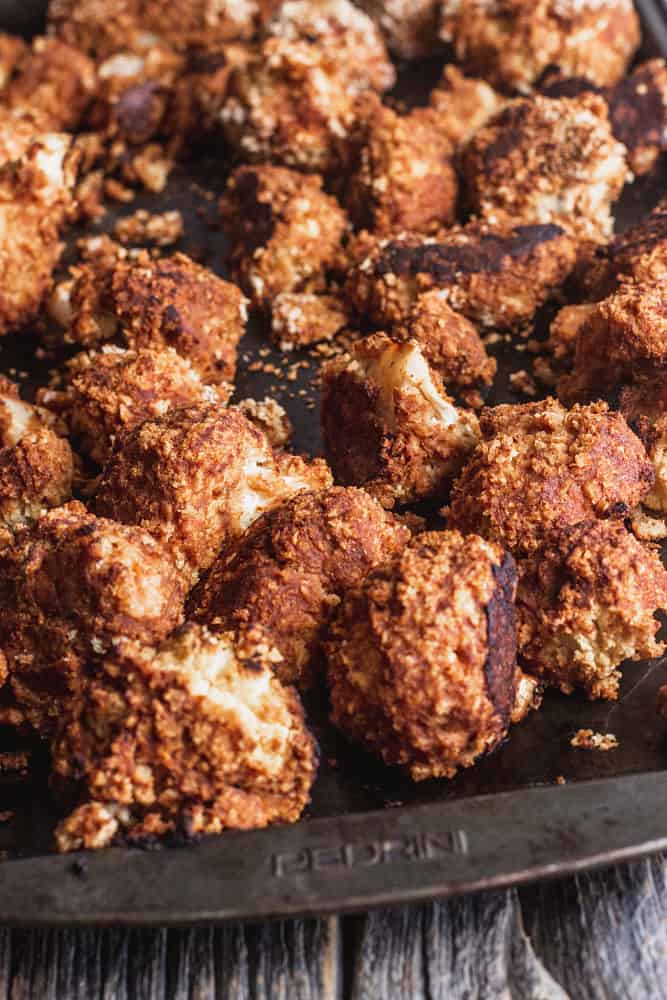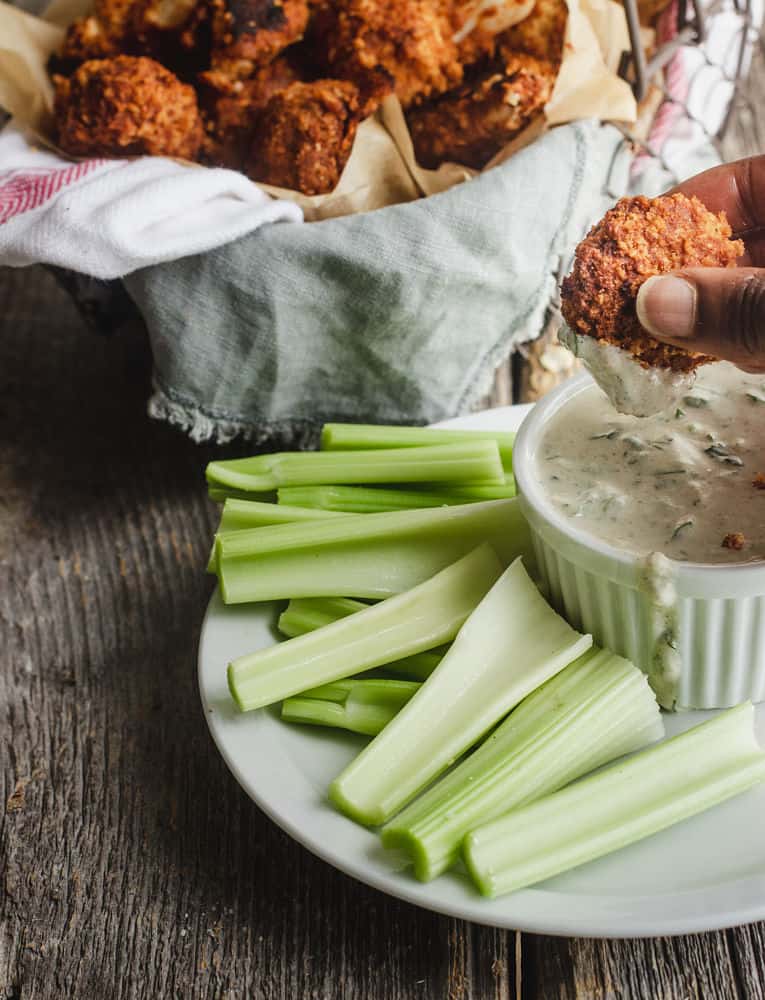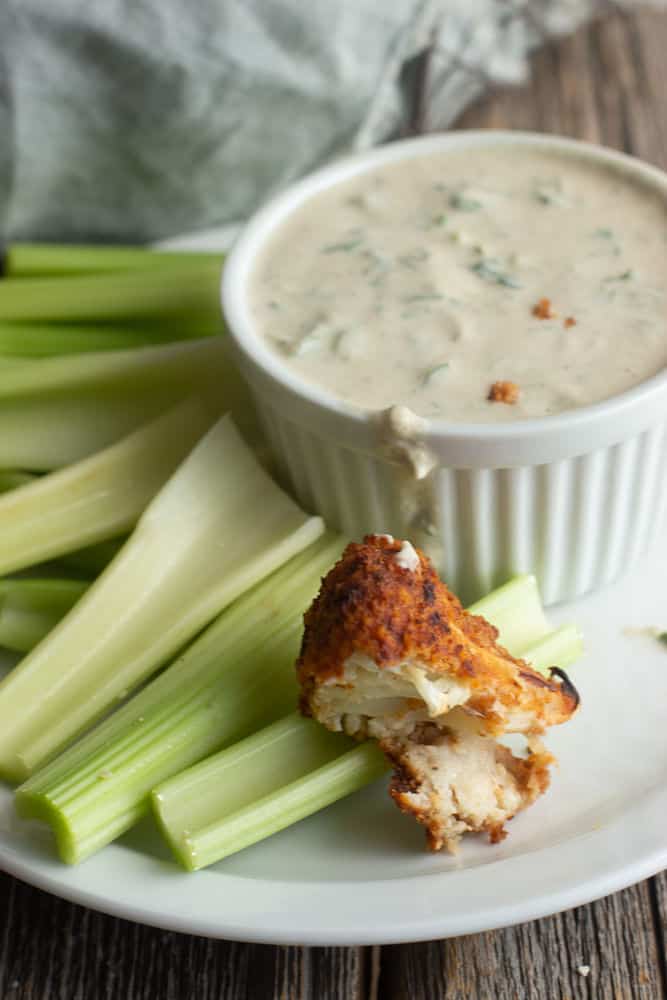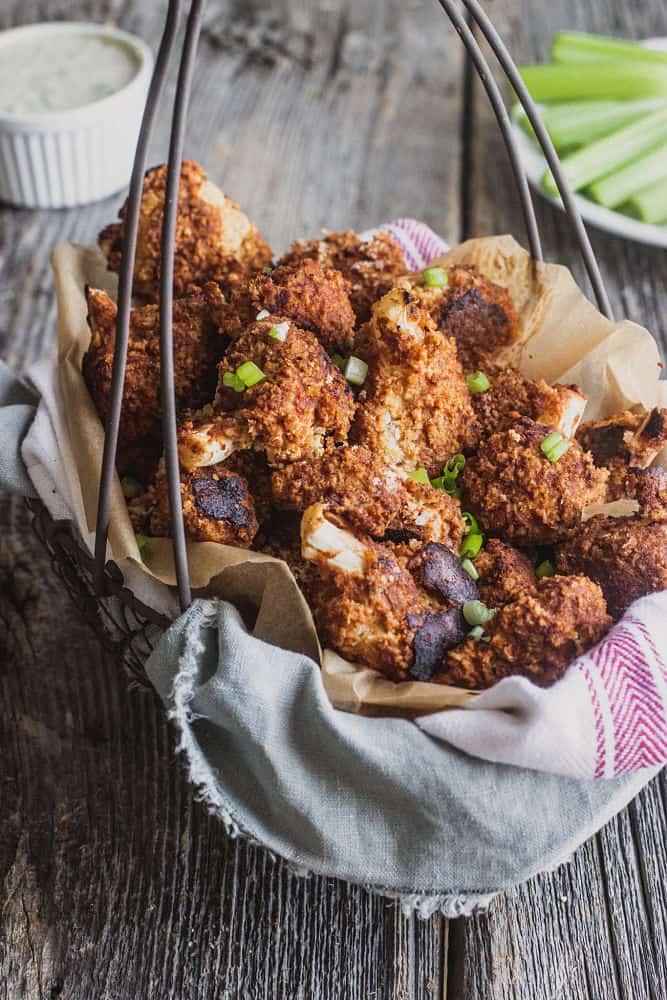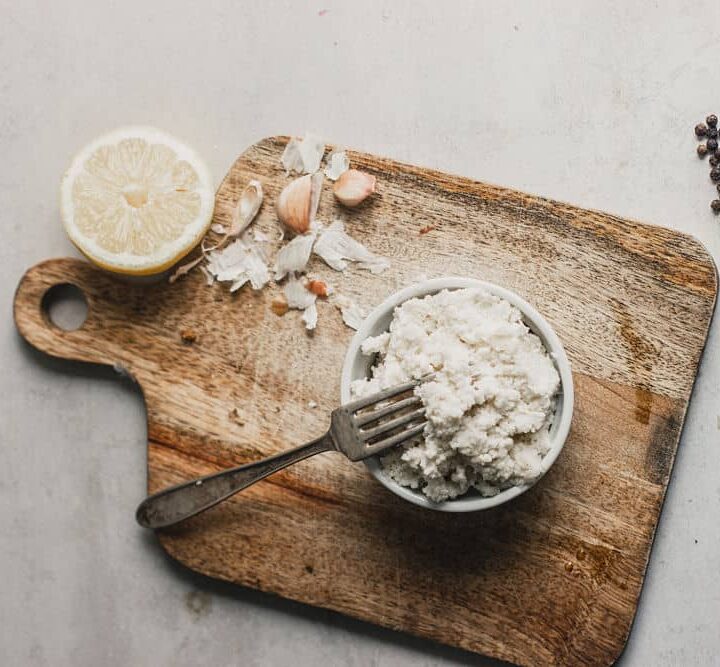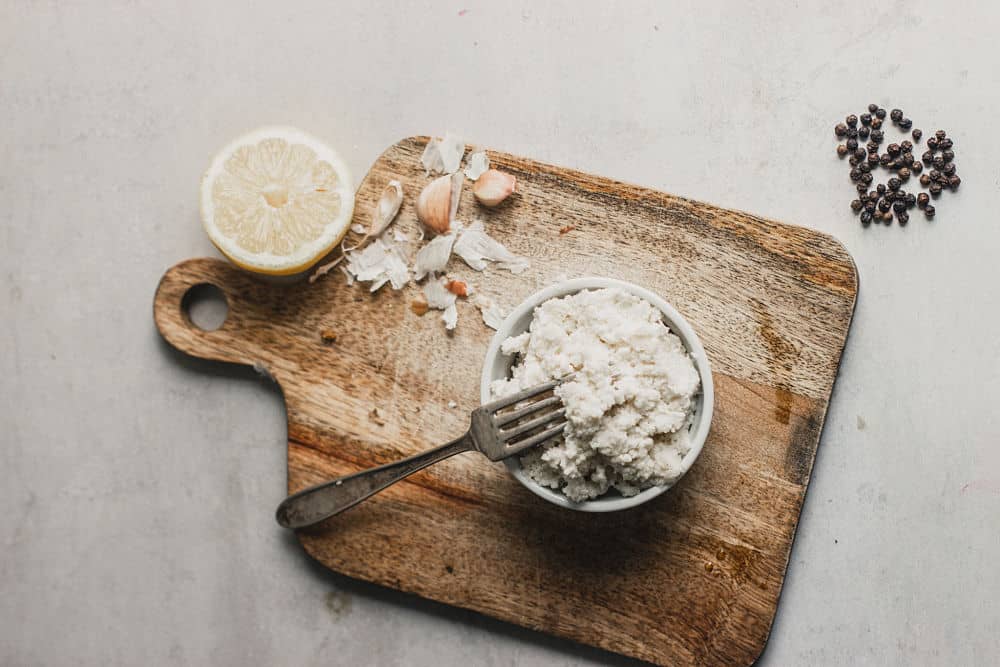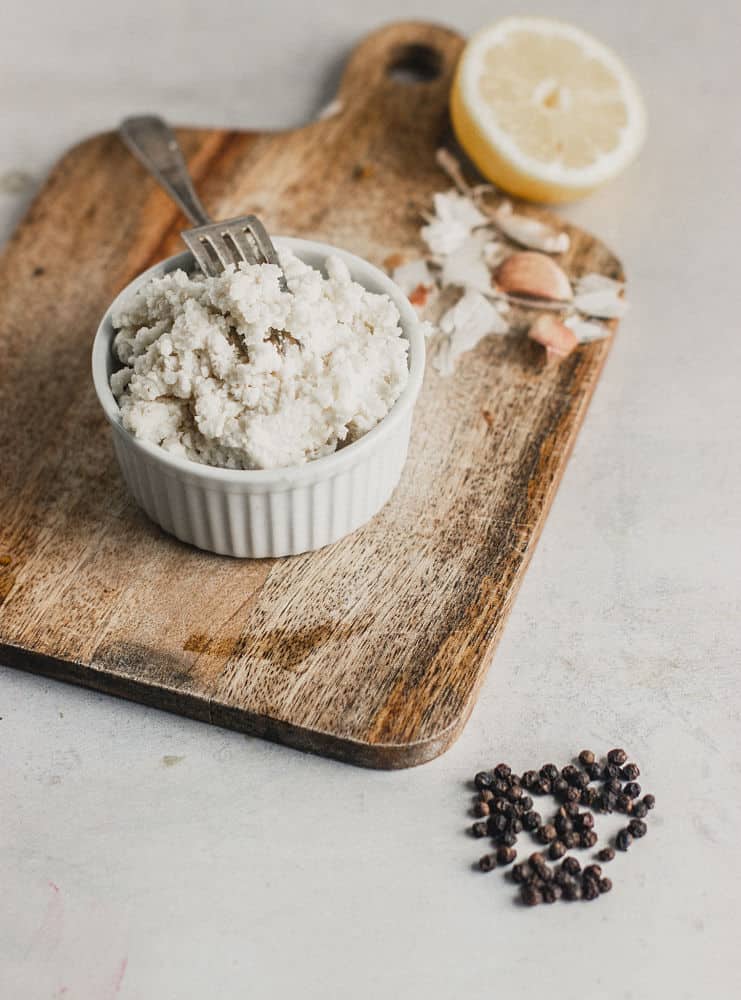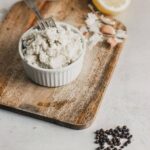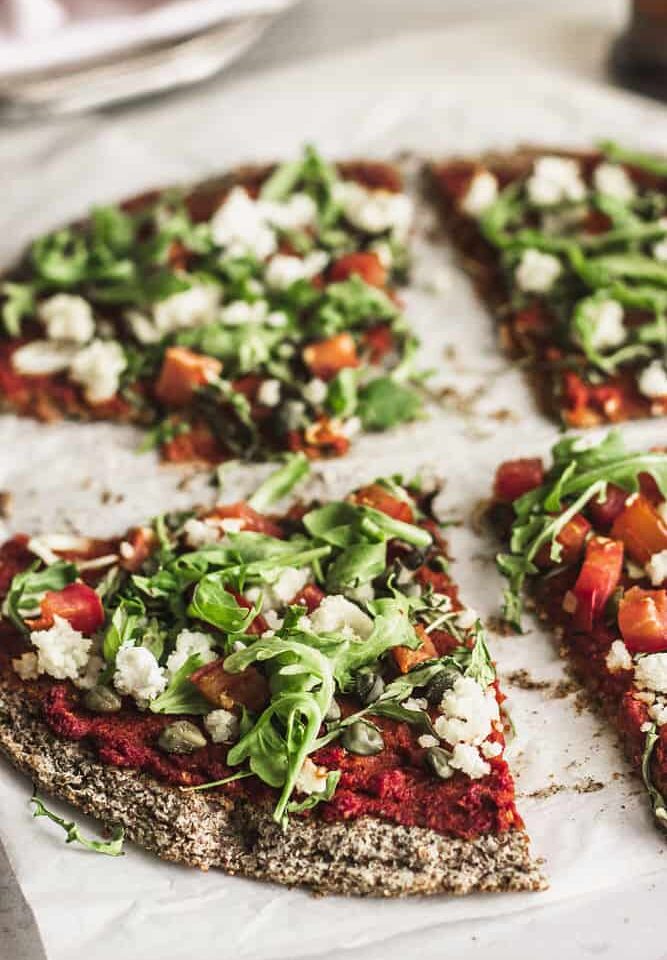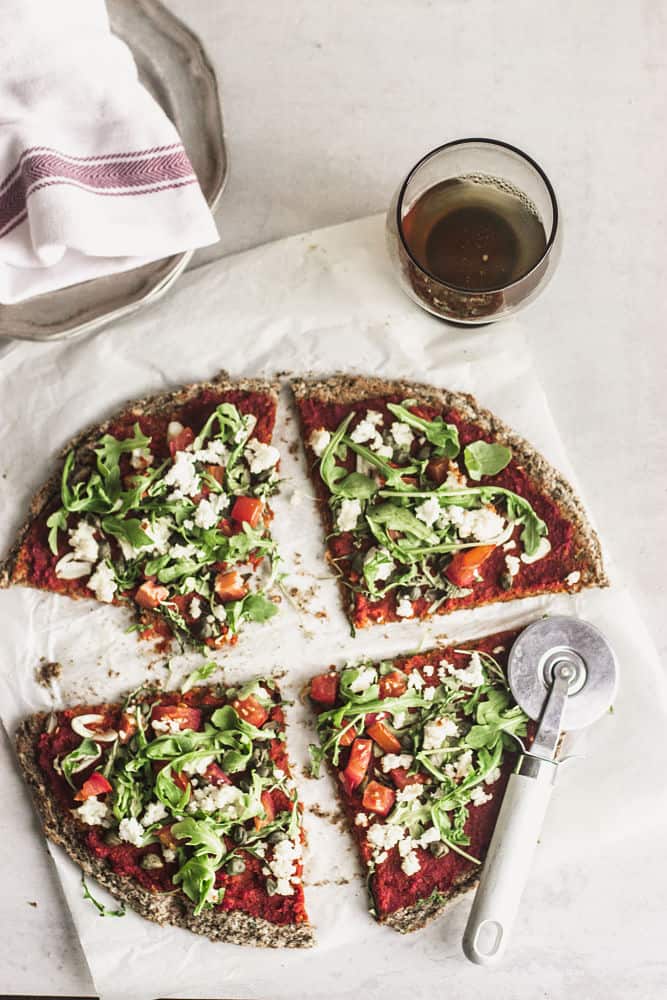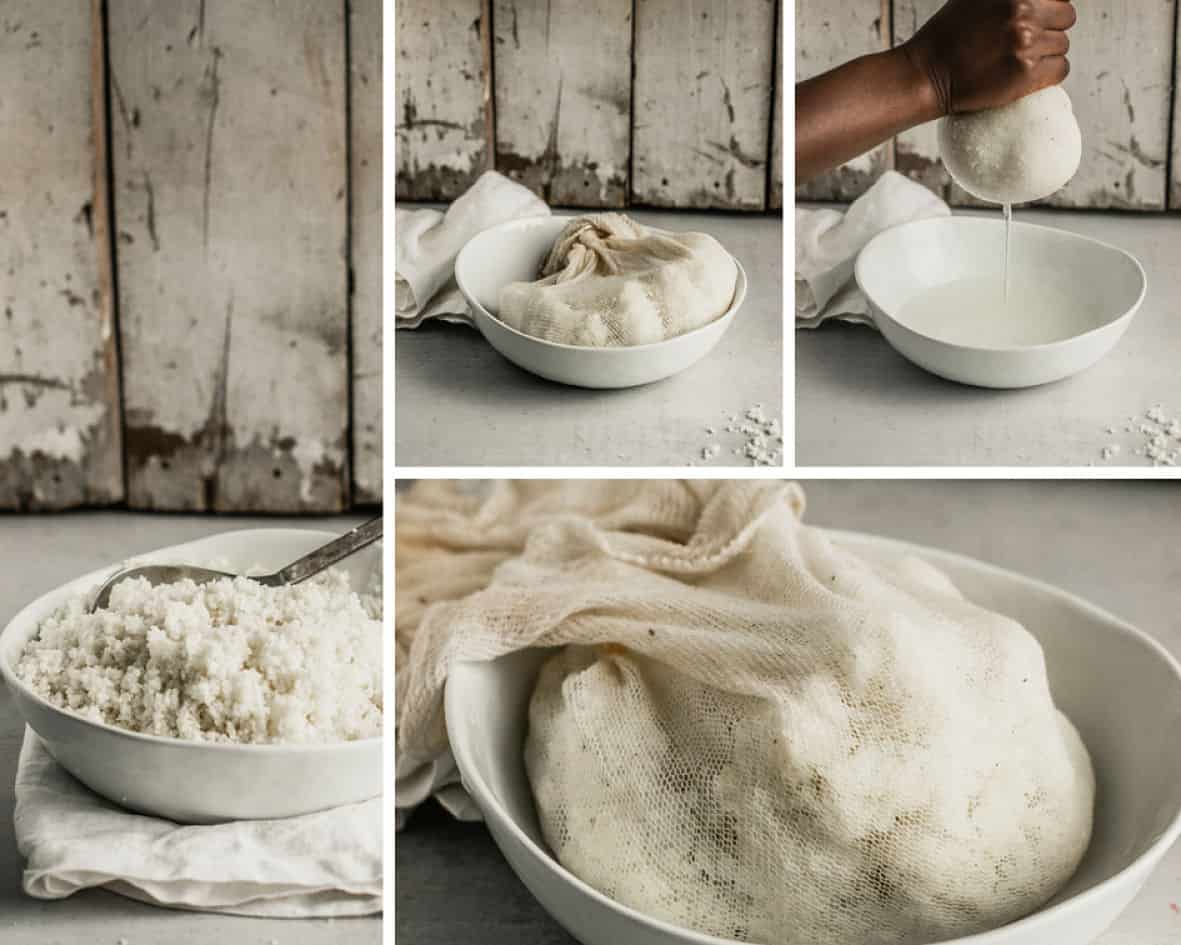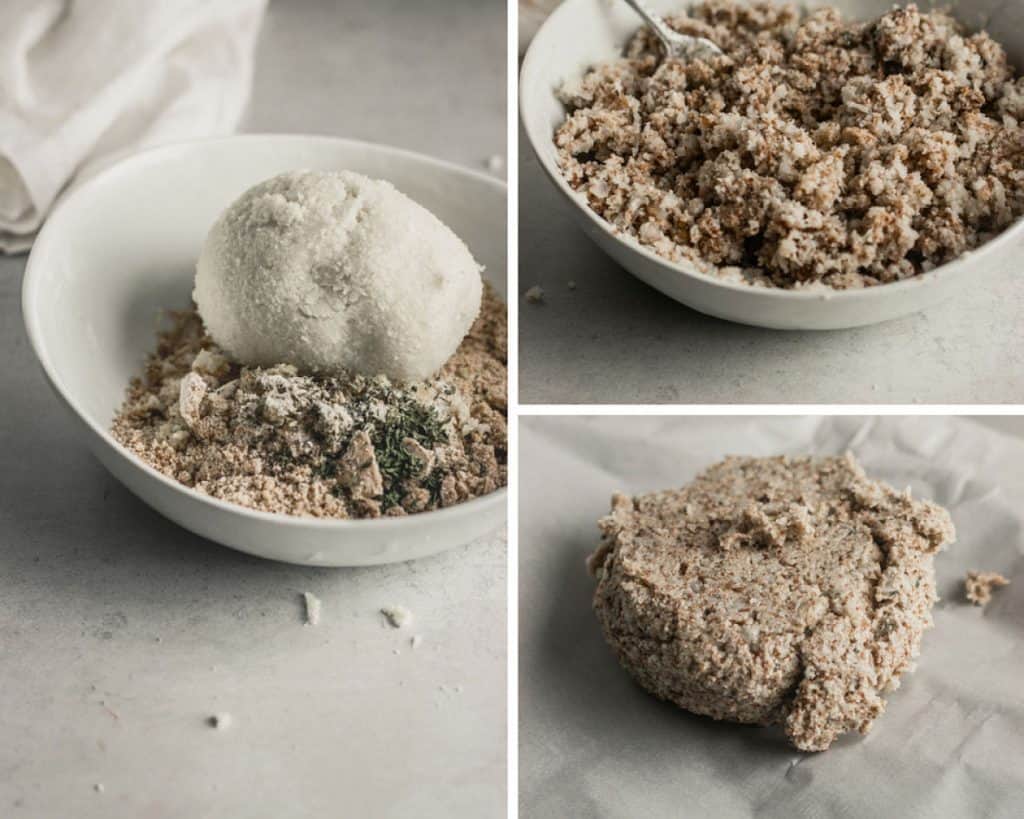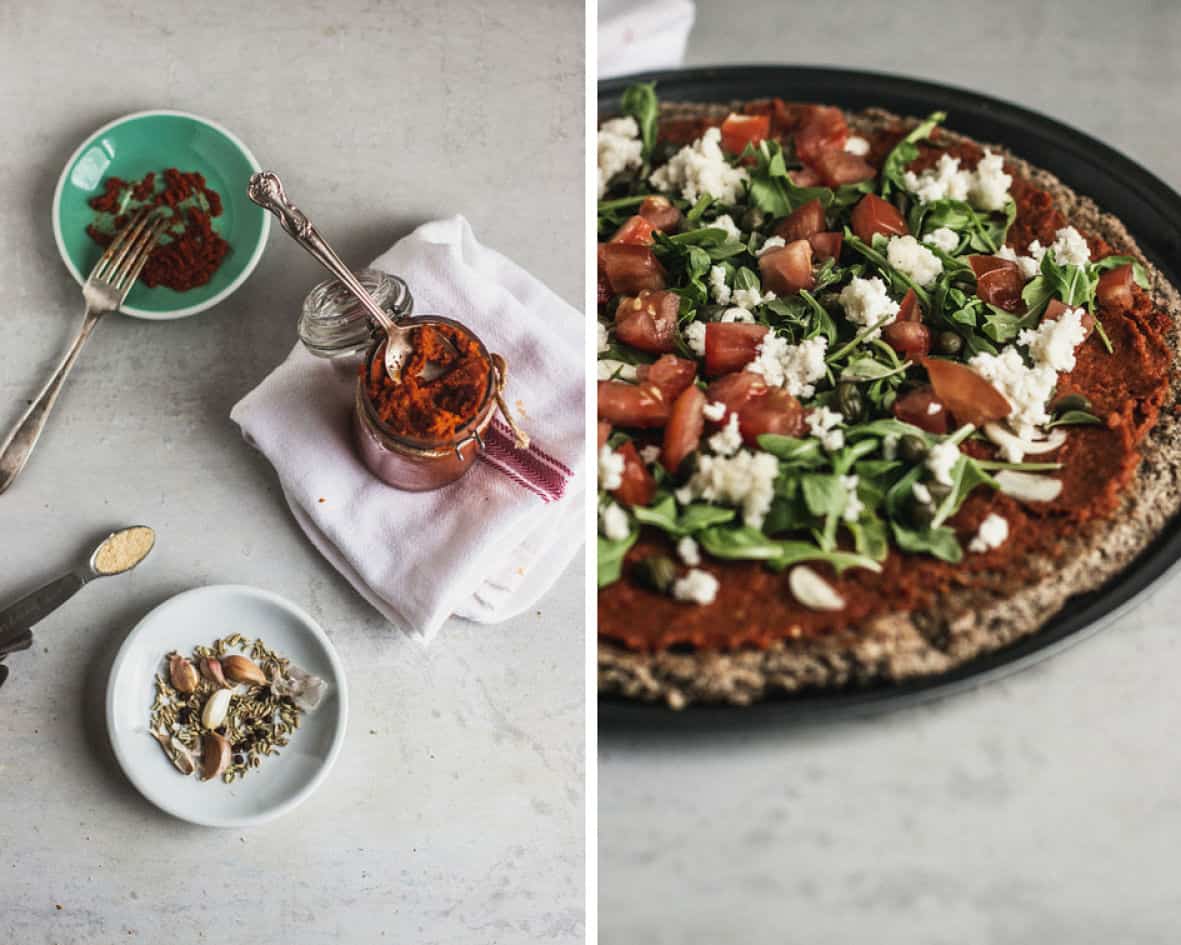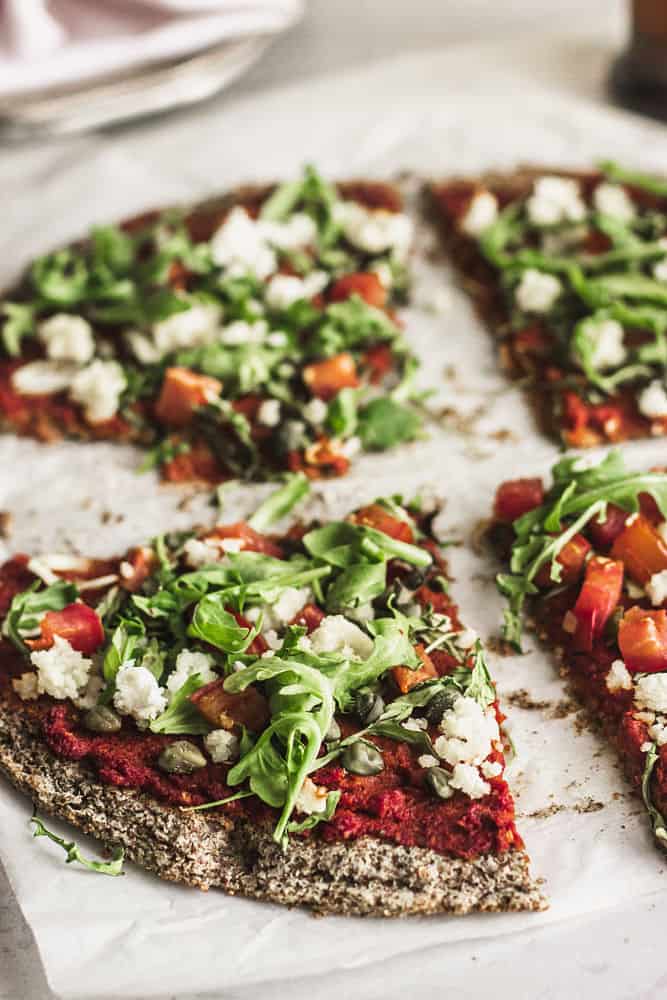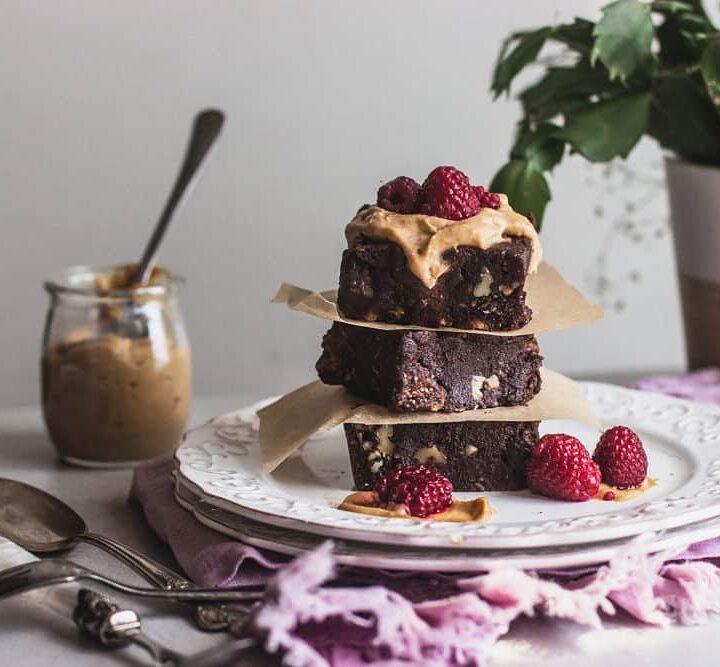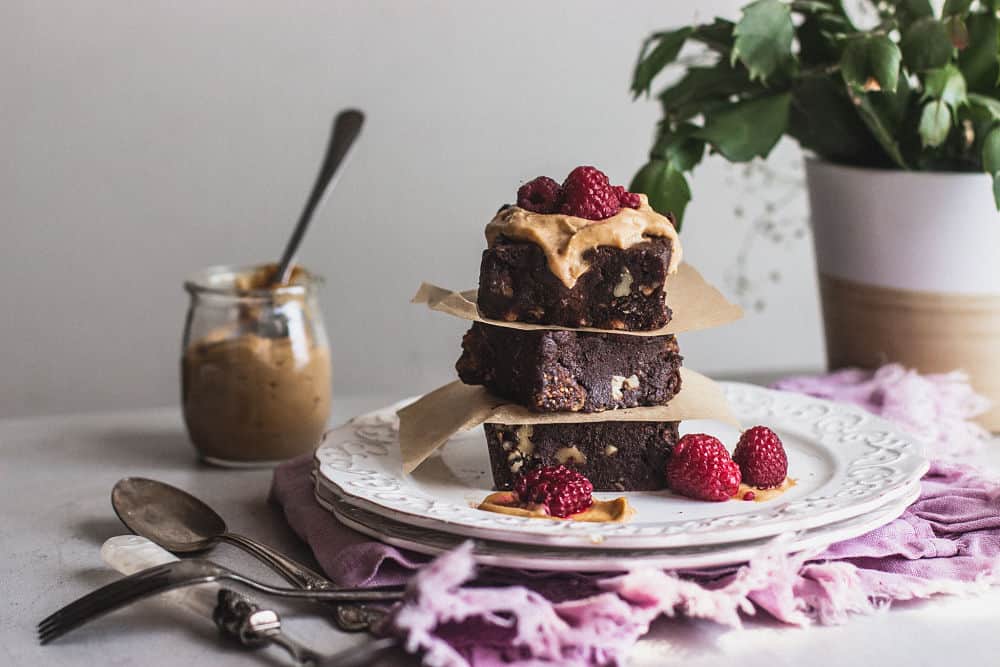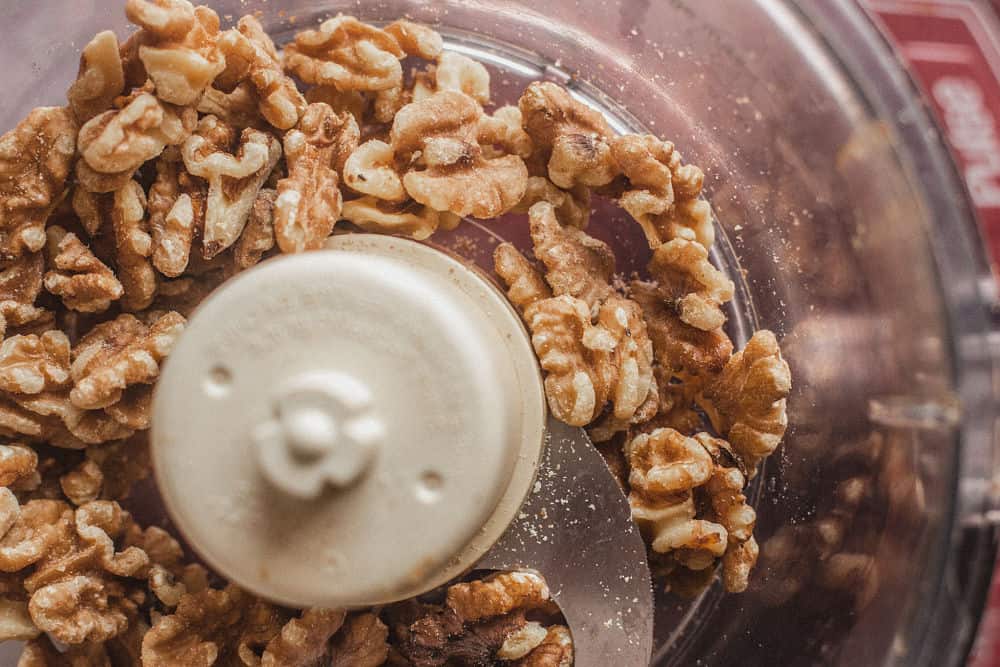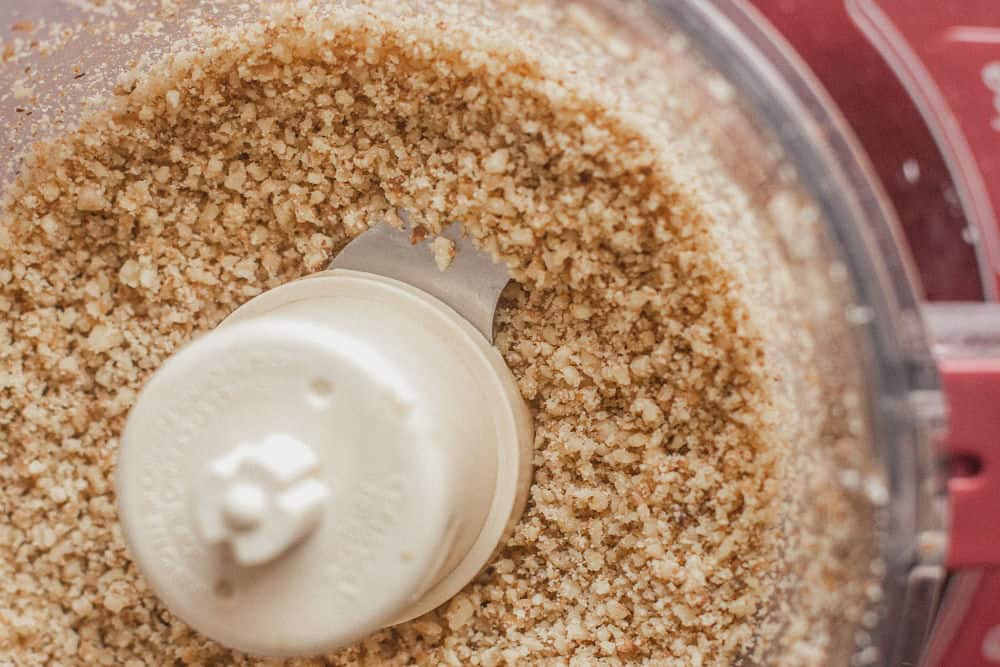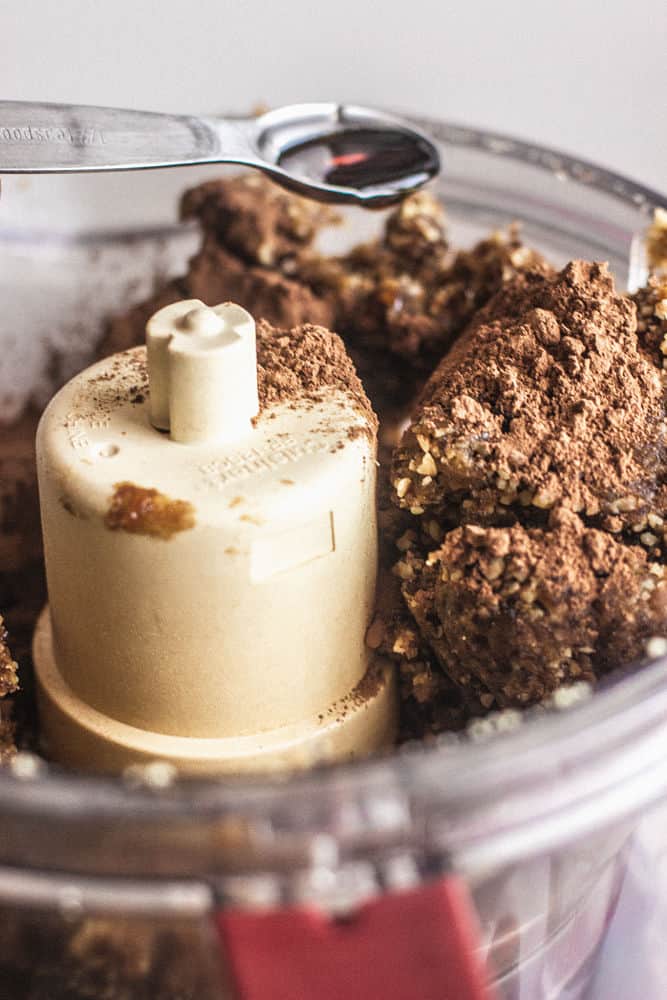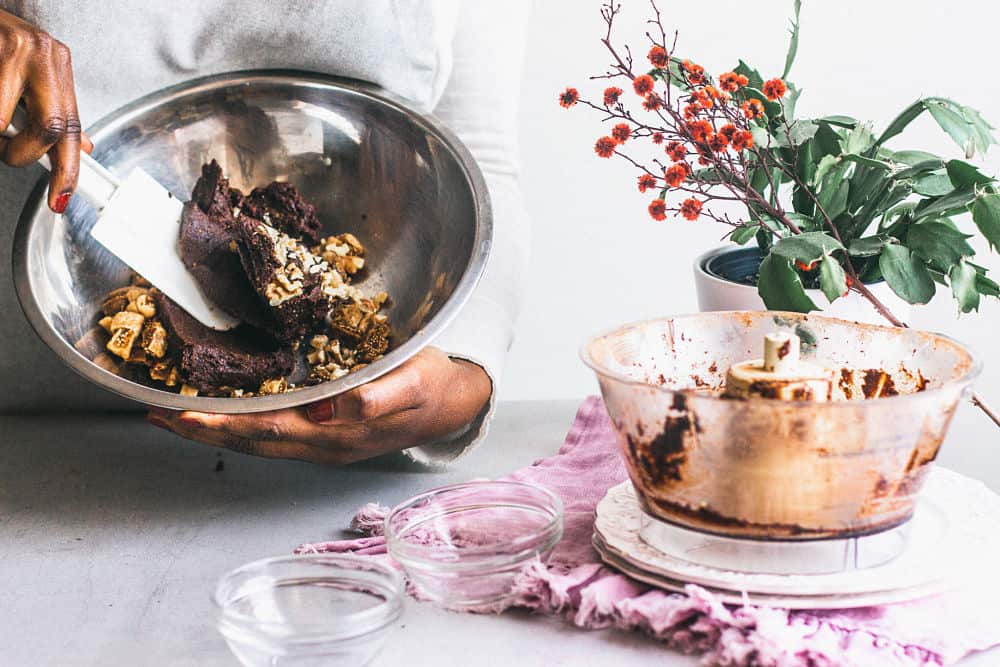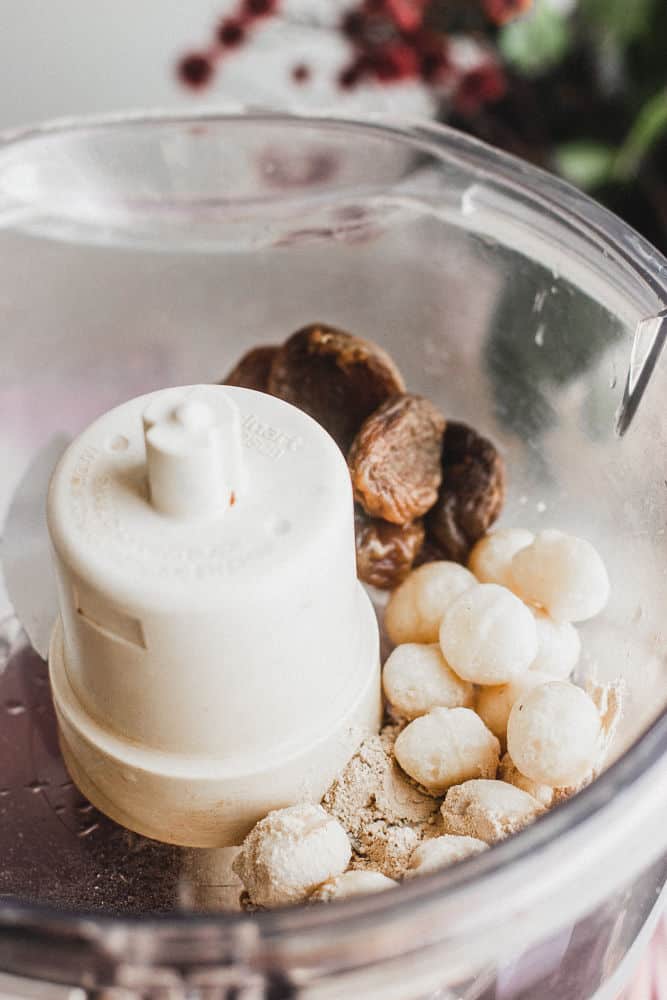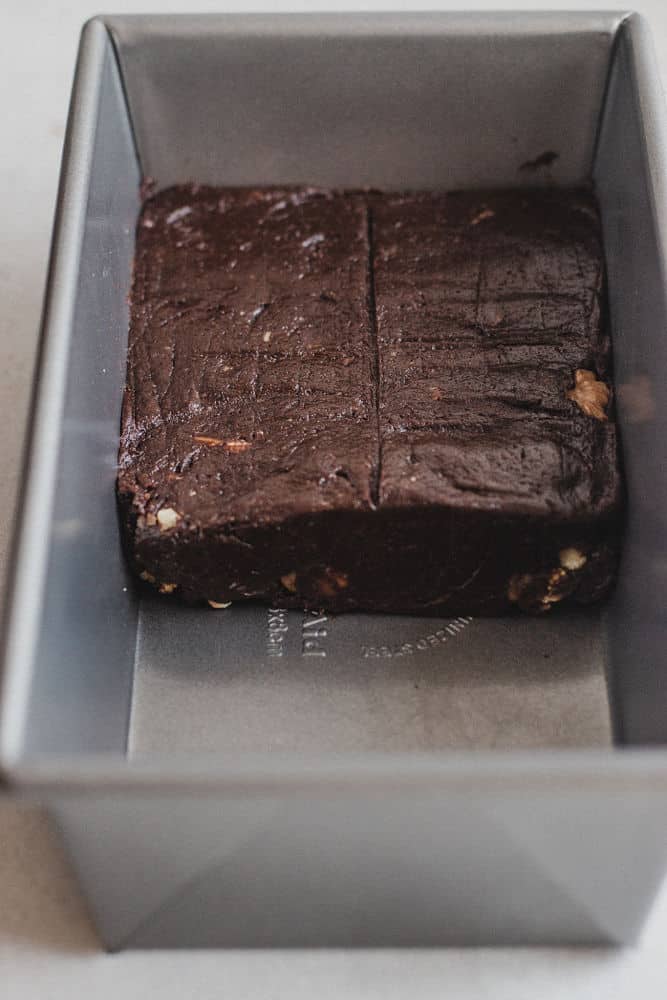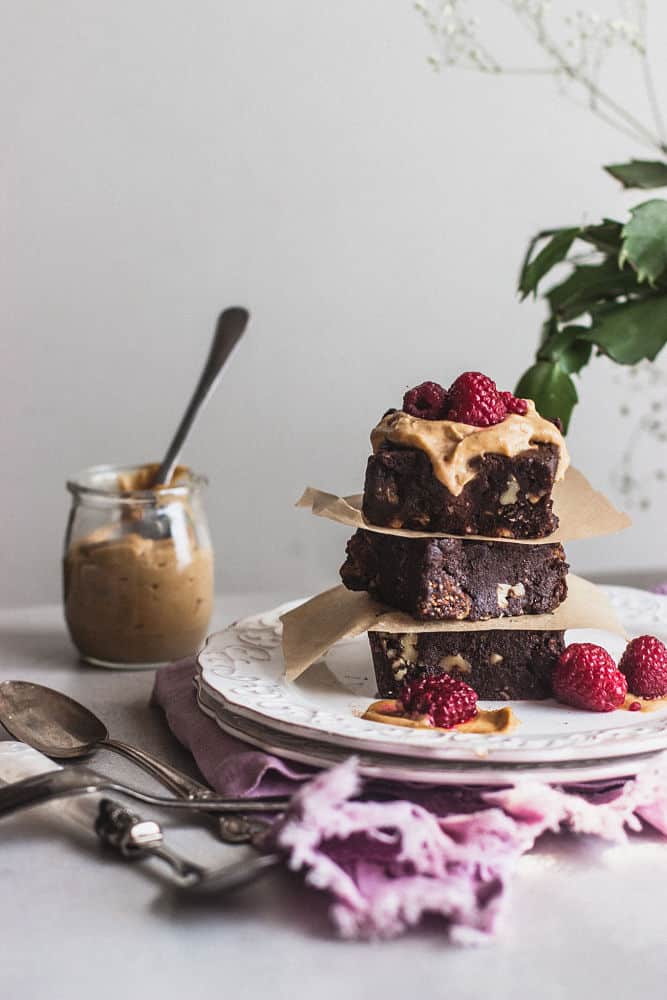Moistened with mashed bananas and speckled with cocoa nibs, this banana bread has a dense but soft crumb. Plus, it has the right balance of crunchiness.
It's the perfect snack to satisfy your cravings.
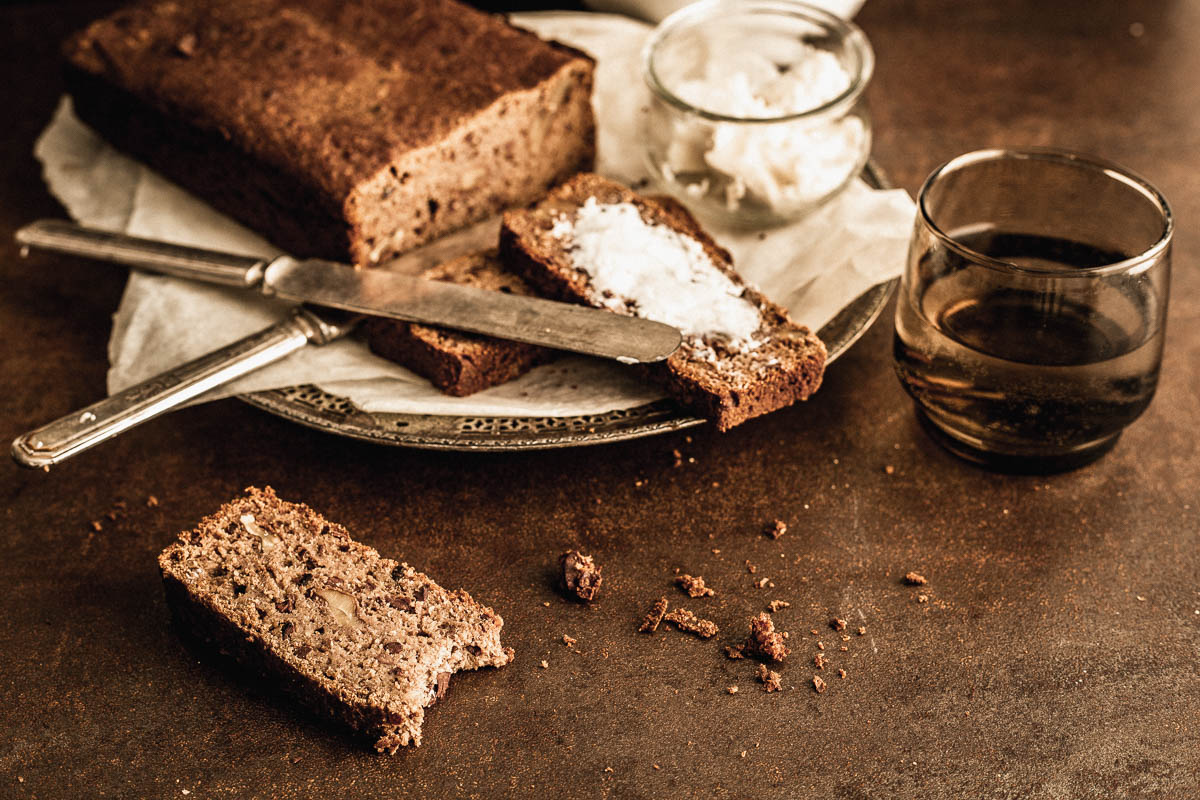
The Healthiest Banana Bread
I'm not a baker, but I have the necessary culinary resources—my countless cookbooks—to understand the mysterious science of baking. I always dreaded making up disasters and destroying any feeling of rejoicing over bites that were supposed to be sweet and divine.
The fear is even stronger when venturing into vegan baking.
Without eggs, without butter, without milk, you have to scratch your head to achieve the desired texture.
My main challenge was to get a soft crumb when bananas should already have done it. Well yes, when we read the reviews of certain recipes on the web, we see that it's the greatest desire of many. Sometimes, it's too dense; sometimes, it's too dry.
I'll admit that my first attempts were not impressive.
My most reckless wish was to concoct super healthy banana bread while optimizing nutrient-density to complicate matters. After a few tweaks and tastings, I'm proud to have made something that is:
- Egg-free
- Dairy-free
- Sugar-free
- Gluten-free
- High-protein
I discovered that the key to achieving the perfect texture, taking into account the required criteria, was not to add oil but applesauce.
And voilà, success! Add a good dose of crunchiness, like nuts and cocoa nibs, and you've got the perfect bite to eat when you're feeling hungry.
Answers to Your Pressing Questions
As a classic baked good, banana bread would have emerged in the United States at the heart of the 1930s' economic crisis. As times were hard and so to not lose anything, people recycled overripe blackening bananas that no one decided to eat.
In Quebecer French, we literally translated banana bread as "Pain aux bananes."
But in Europe, some are led to believe that, in reality, it is a cake aux bananes (gâteau aux bananes), and not bread as the name suggests. However, it seems that Quebecers have it right: this preparation does not contain candied fruit (cake in European French is the short name of "fruitcake") and, what's more, it has a bread shape.
In my humble opinion, calling it gâteau aux bananes (banana cake) would be wrong. Especially since its crumb is lighter and sweeter than banana bread and is normally covered with icing.
Since it does not need time to rise, banana bread is made quickly. In fact, baking soda or baking powder makes the dough rise when baking in the oven.
Most importantly, given denser flours like all-purpose flour or whole wheat, banana bread has a dense crumb and is less sweet.
And that makes it a perfect healthy breakfast or a snack.
It all depends on what you put in it. Many banana breads are high in saturated fat and cholesterol. Also, they're packed with sugar (refined white sugar or even said natural sugar). My preparation is without added sugar. To sweeten the taste, my recipe includes dates.
There are also sources rich in omega-3s and a great dose of plant-based protein to quench your hunger. Finally, my banana bread can boast about being gluten-free, possibly thanks to gluten-free oats, if intolerances are a nuisance.
You have several options for replacing eggs. But to have the desired dense and moist texture, we will mainly use ground flax or chia seeds soaked in water to thicken with applesauce. Coconut oil is also an option, but it would increase fat intake too much.
What Goes in a Banana Bread

Main ingredients
Bananas – the riper, the better. In this way, they're loaded with sugar and aroma.
Rolled oats – have gluten-free if you want.
Ground flax seeds – when added to water, they act as a binder, just like eggs do. Their additional benefit: they are rich in omega-3.
Baking powder – take it without alum, if possible. It helps the dough to rise due to the carbon dioxide production.
Walnuts – these will provide crunch and an extra dose of omega-3.
Dried dates – these will act as your sweetener, only better.
Soy beverage – great for boosting your protein intake. You can use any plant-based drink (preferably organic). Note: if you ever try something akin to plant-based buttermilk, it will be even better, because together with the baking powder, it will help the dough to rise more.
Applesauce – it'll act as a binding agent and is a good susbstitute for eggs or oil when you want to reduce fat and calories.
Almond butter – to make banana bread high in protein.
Seasonings
Vanilla extract – to flavor your preparation.
Optional ingredients
Psyllium – used as an egg substitute, it's a soluble plant-derived fiber. It can be found in the form of envelopes (as in this recipe) or finely ground.
Cocoa nibs or semi-sweet chocolate chips – it's rich in magnesium. Plus, it's an antidepressant. You won't have any reason to feel guilty if you take multiple slices.
How to Make Banana Bread Step by Step
As there are few instruments and technical gestures, it's the ideal baked good for beginners. Combine the dry ingredients with the wet ingredients and pour everything into a classic (28 cm) well-oiled bread/cake pan (rectangular).
1 / Prepare the flax seeds "egg."
2 / Reduce the rolled oats into flour.
3 / Combine the dry ingredients (psyllium, baking powder, walnuts, and cocoa nibs).
4 / Mix the wet ingredients (dates with the soy drink, then with the bananas, vanilla, and almond butter) .
5 / Combine the dry ingredients with the wet preparation, plus the applesauce and flax seeds.
6 / Pour the preparation into a well-oiled 9 x 5 in. (23 x 13 cm) bread/cake pan.
7 / Bake in the middle of the oven for 1 hour.
The Keys to Success: My Top Tips
Most quickbread recipes are made with ingredients that add moisture, such as banana, applesauce, or even zucchini. Some of them omit the applesauce but trust me, that makes all the difference between a dry and a wet prep.
About bananas: the more black spots on the skin of bananas, the better. Ripe bananas are sweeter. And they are definitely easier to mash.
Oh, and while we're at it, let's talk about frozen bananas. I strongly recommend that you always keep a reserve in the freezer. You just have to peel them, put them in a resealable plastic bag and slip them inside.
And when you want to use a few, just take them out. Put them in a bowl and let them thaw at room temperature for a few hours. It doesn't take long. The only downside is that they look pretty naughty. Think wet, slimy, and slug-like.
Other Creative Variations
Add to the dough:
- Nuts: incorporates ⅓ cup chopped hazelnuts, pumpkin or sunflower seeds, pecans, slivered almonds... Roast them in the pan for 10 minutes at low heat to give them more flavor. The options are limitless.
- Fresh fruit: add to the dough 1 apple cut into cubes, 125 g berries, like blueberries or raspberries, or 200 g pineapple pieces. Place a banana cut in half lengthwise on the dough before placing it in the oven.
For a hybrid, half bread, half cake version, decorate your concoction as follows:
- Cover the banana cake with frosting.
- For example, with something like salted caramel. In a food processor, mix ½ cup dates or dried apricots, ¼ to ½ cup macadamia nuts, ½ cup maple syrup with 1 teaspoon maca and a pinch of salt. Spread it on the banana bread.
- Or simply mix 4 tablespoons almond butter, 1 tablespoon maple syrup, and 2 to 3 tablespoons soy beverage.
- Decorate it. Sprinkle as desired with other nuts (almonds, pistachios, pecans, or dried fruits [coconut flakes] and let stand in the fridge for 1 to 2 hours before tasting.
Serve this Recipe with...
As my preparation is quite consistent, it can be eaten well on its own. But accompany it with fresh fruit with a plant-based drink. Who would say no to enjoying it with a chocolate drink?
Or, spread your slices with jam, peanut butter, or plant-based butter, as some do, especially the Australians.
Make this Banana Bread Now
My vegan sugar-free banana bread is the ultimate snack.
My version is downright healthy compared to banana breads packed with saturated fat, cholesterol, and sugar. It contains excellent doses of omega-3s and proteins to nourish your mind.
Also, there are cocoa nibs, which are unequivocally good for morale.
The variations are limitless. Make simple or super gourmet versions, you will certainly be satisfied.
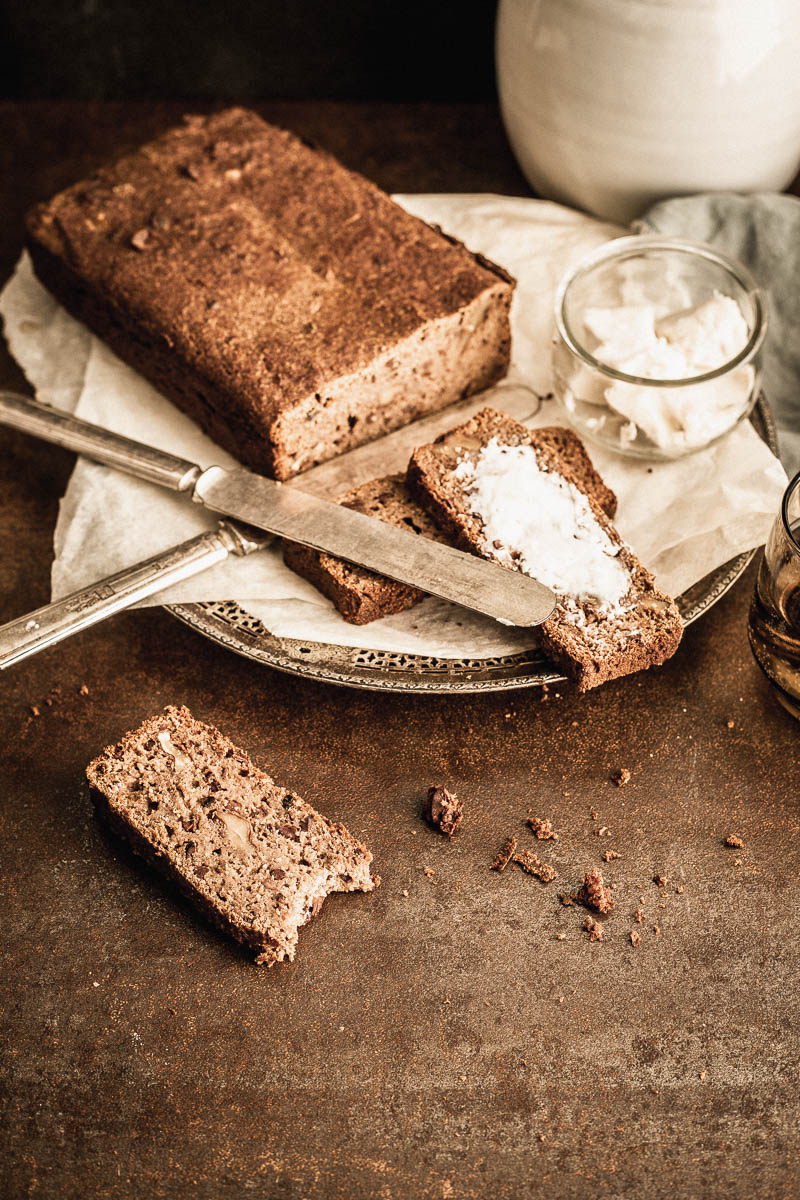
If you try this recipe, I want to know about it! I always appreciate your feedback. Leave a star rating in the recipe card right below and/or a review in the comment section further down the page. You can also follow me on Pinterest, Facebook, or Instagram. Sign up for my email list, too!
Gluten-Free Banana Bread with Cacao Nibs
Ingredients
- 1 tablespoon ground flax seeds
- 3 tablespoons water
- 2 cups rolled oats
- 1 tablespoon psyllium husks
- 1 tablespoon baking powder
- ⅔ cup walnuts coarsely chopped
- 1 cup cocoa nibs or semi-sweet chocolate chips
- ½ cup dried dates pitted and chopped
- ½ cup soy beverage
- 3 bananas
- ¼ cup applesauce
- 2 teaspoons vanilla extract
- 6 tablespoons almond butter
Instructions
- Preheat the oven to 350 ° F/180 ° C.
- In a small bowl, combine the flax seeds and water. Reserve.
- In a food processor or coffee grinder, reduce the rolled oats to flour. In a large bowl, combine these with the psyllium, baking powder, and walnuts.
- In a blender, puree the dates with the soy beverage. Add the bananas, vanilla, and almond butter, then mix until well blended.
- In a bowl, combine the dry ingredients, the wet preparation, and the applesauce and flax seeds.
- Pour the preparation into a well-oiled 9 x 5 in. (23 x 13 cm) loaf pan. Bake in the center of the oven for 1 hour, until a toothpick comes out clean. Let cool before unmolding.
Notes
- Applesauce: don't skimp on this. It makes all the difference between a dry and a wet prep.
- Bananas: The more black spots on the skin of bananas, the better. Ripe bananas are sweeter. And they are definitely easier to crush. I strongly recommend that you always keep some in the freezer. You just have to peel them, put them in a resealable plastic bag and slip them inside.
- Nuts: add ⅓ cup chopped hazelnuts, pumpkin (squash) or sunflower seeds, pecans (pecans), slivered almonds… Roast them in a pan for 10 minutes over low heat to give them more disgust. The options are limitless.
- Fresh fruit: add to the dough 1 apple cut into cubes, 125 g of berries, such as blueberries (blueberries) or raspberries, or 200 g of pineapple pieces. Place a banana cut in half lengthwise on the dough before placing it in the oven.
- Cover the banana cake with frosting.
- For example, with something like salted caramel. In a food processor, mix ½ cup dates or dried apricots, ¼ to ½ cup macadamia nuts, ½ cup maple syrup with 1 teaspoon of maca and a pinch of salt. Spread it on the banana bread.
- Or simply mix 4 tablespoons almond butter, 1 tablespoon maple syrup, and 2 to 3 tablespoons soy beverage
- Decorate it. Sprinkle as desired with other nuts (almonds, pistachios, pecans, or dried fruits (coconut flakes) and let stand in the fridge for 1 to 2 hours before tasting.
Nutrition
Get Your Free Plant-Based Eating Toolkit and More
Subscribe to my newsletter and unlock my plant-based course, nutrition charts, recipe secrets, and exclusive updates to prepare wholesome, varied & balanced meals effortlessly. All you need is a good appetite. Subscribe!


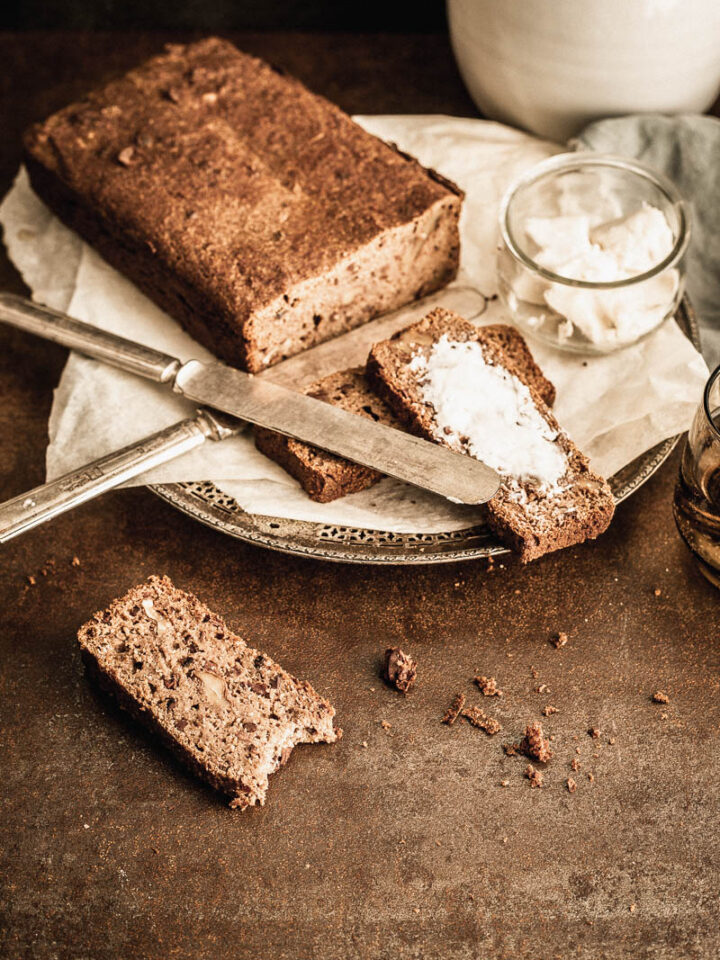
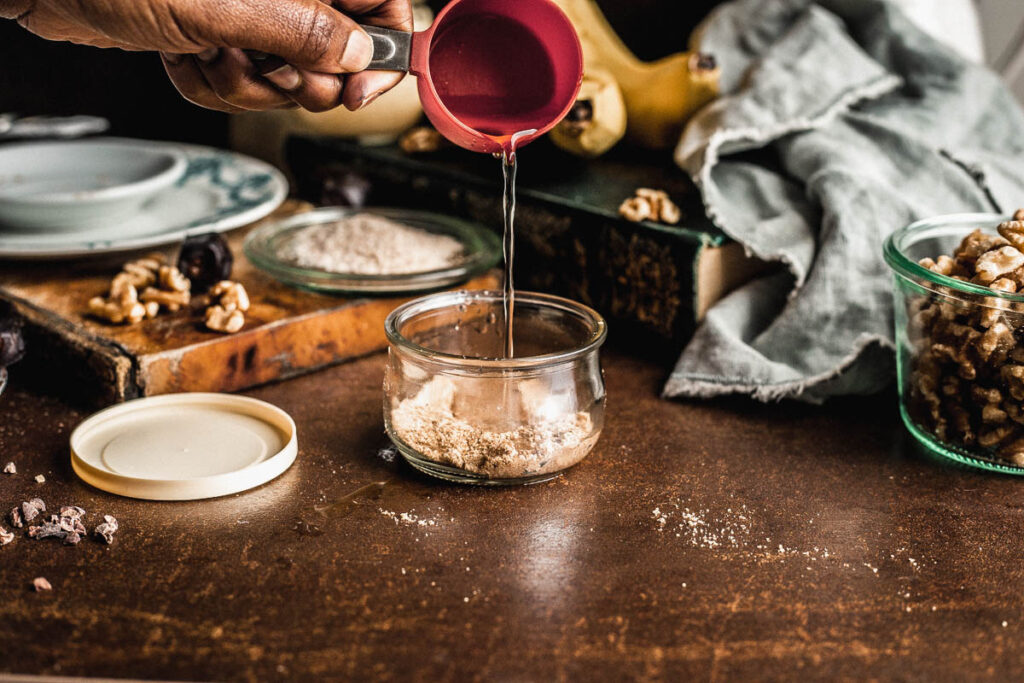
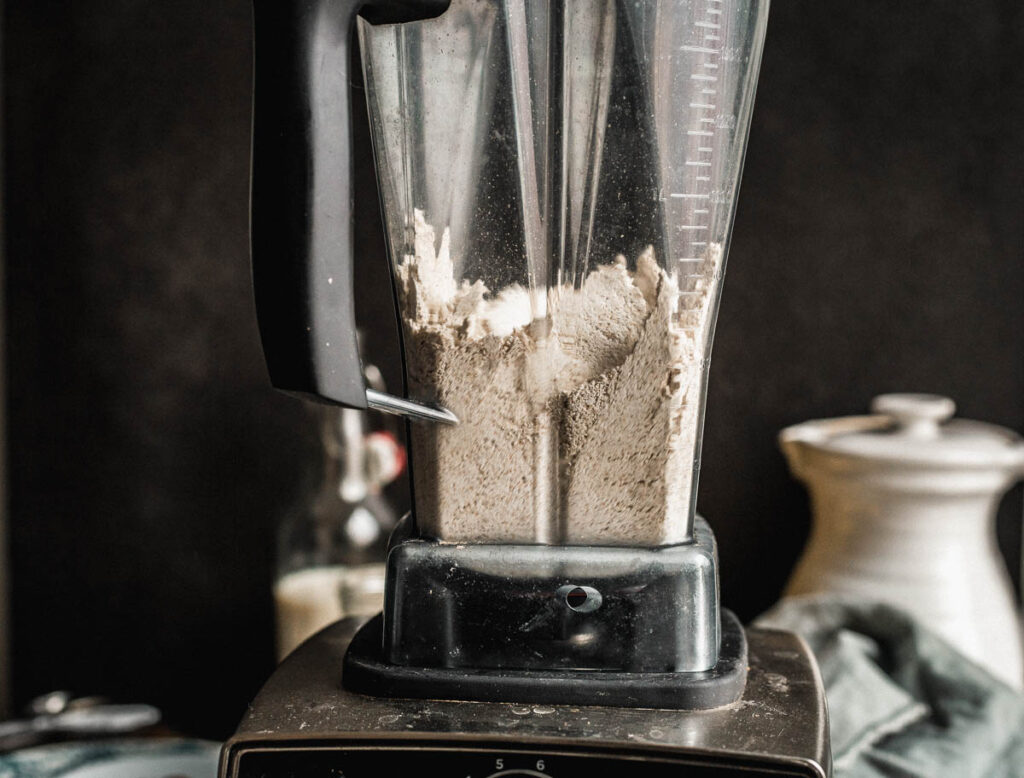
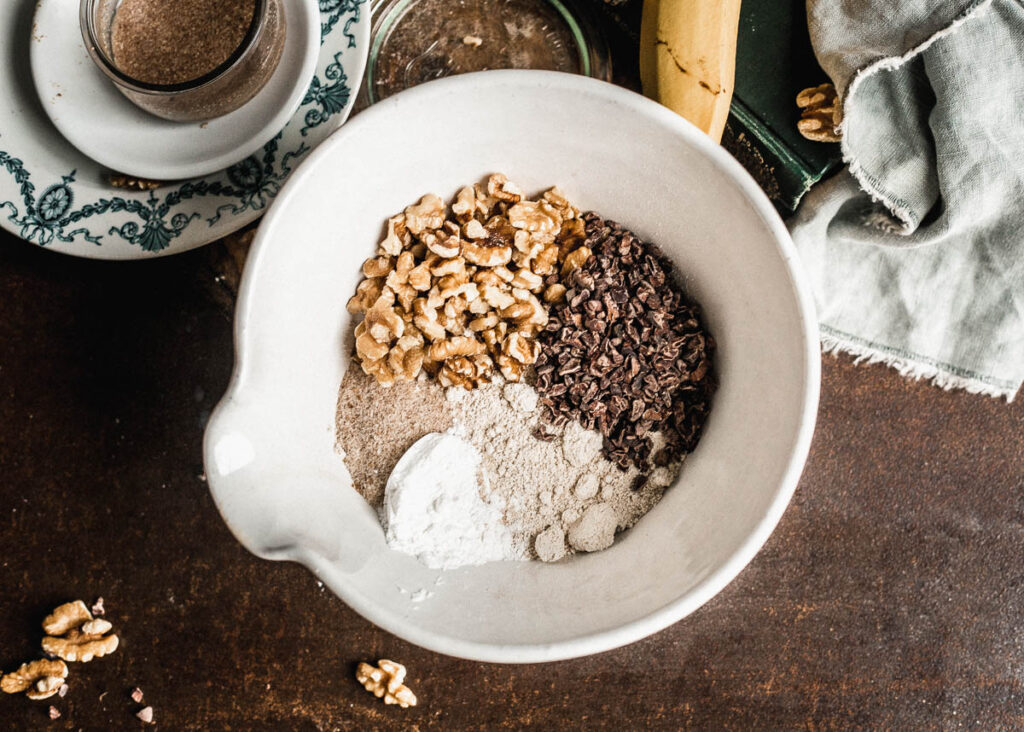
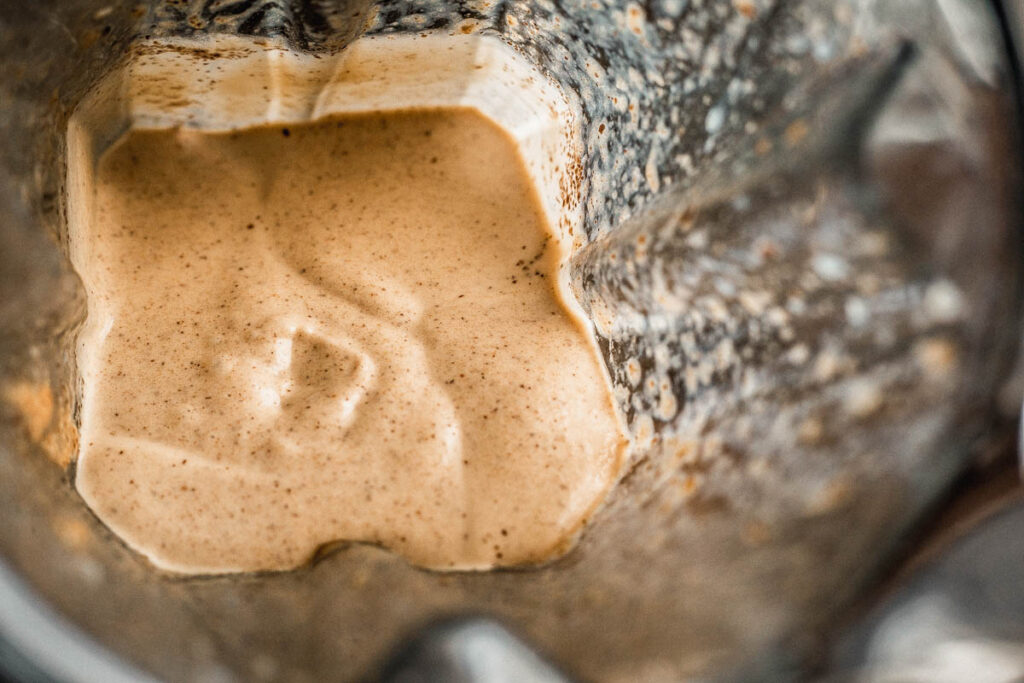
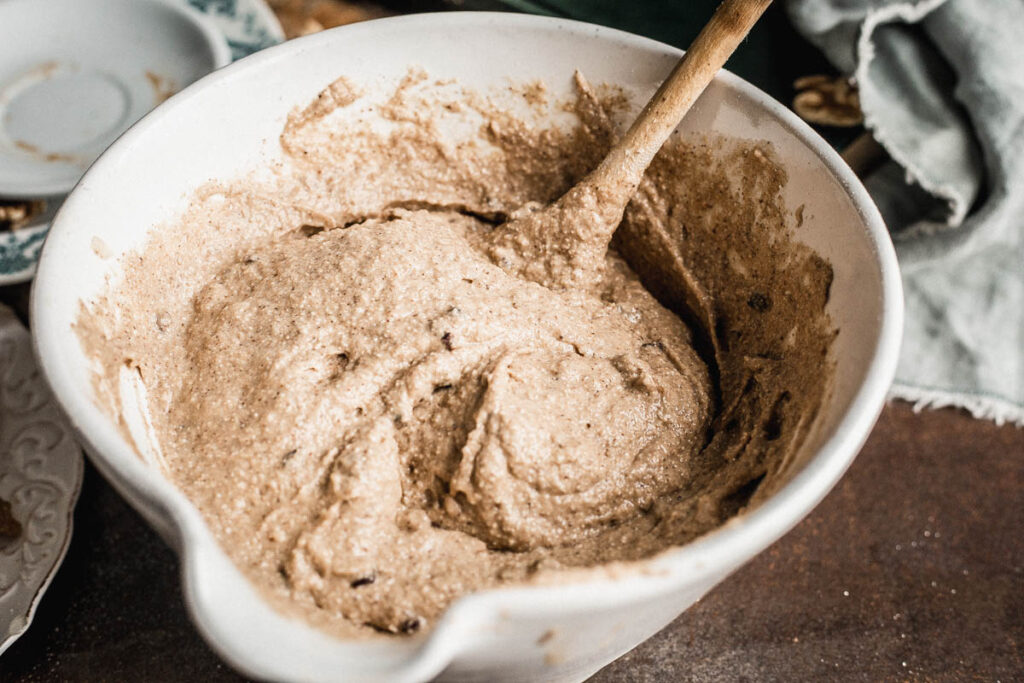
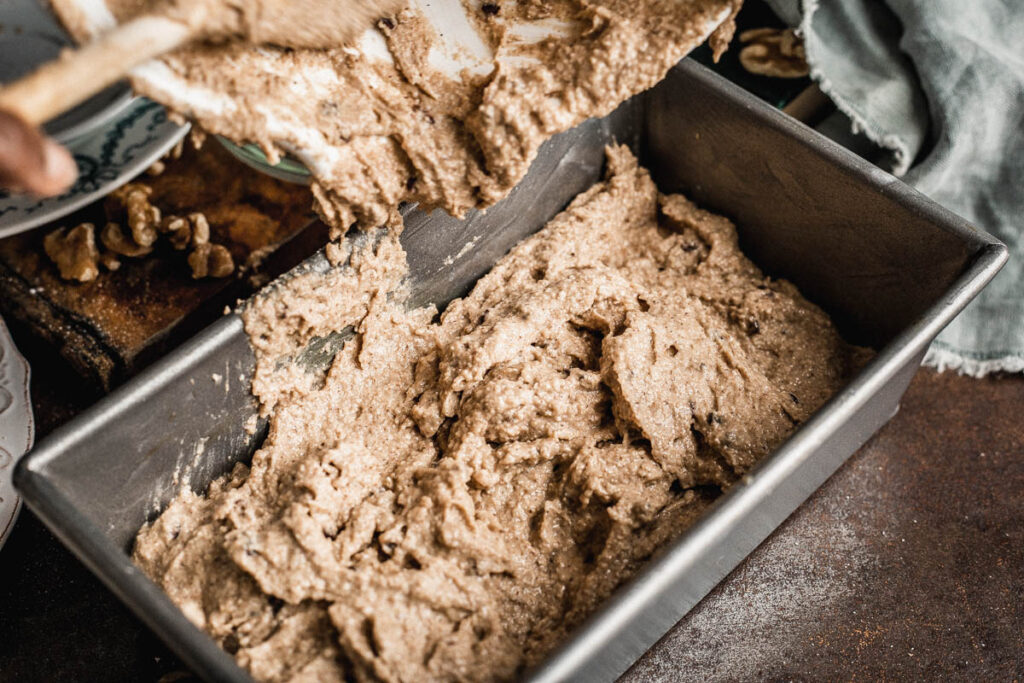
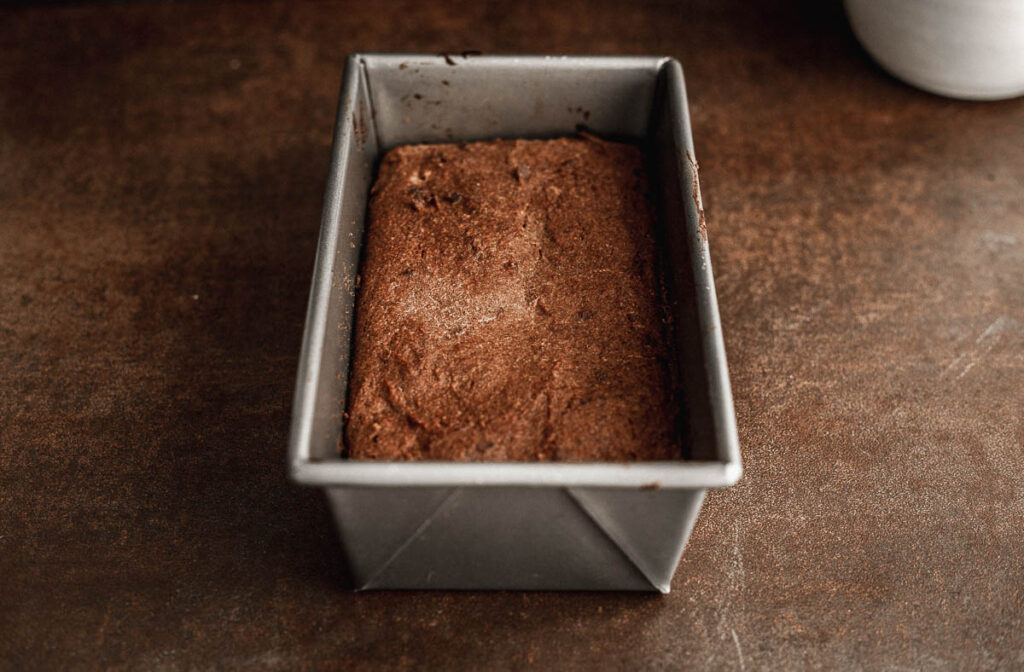


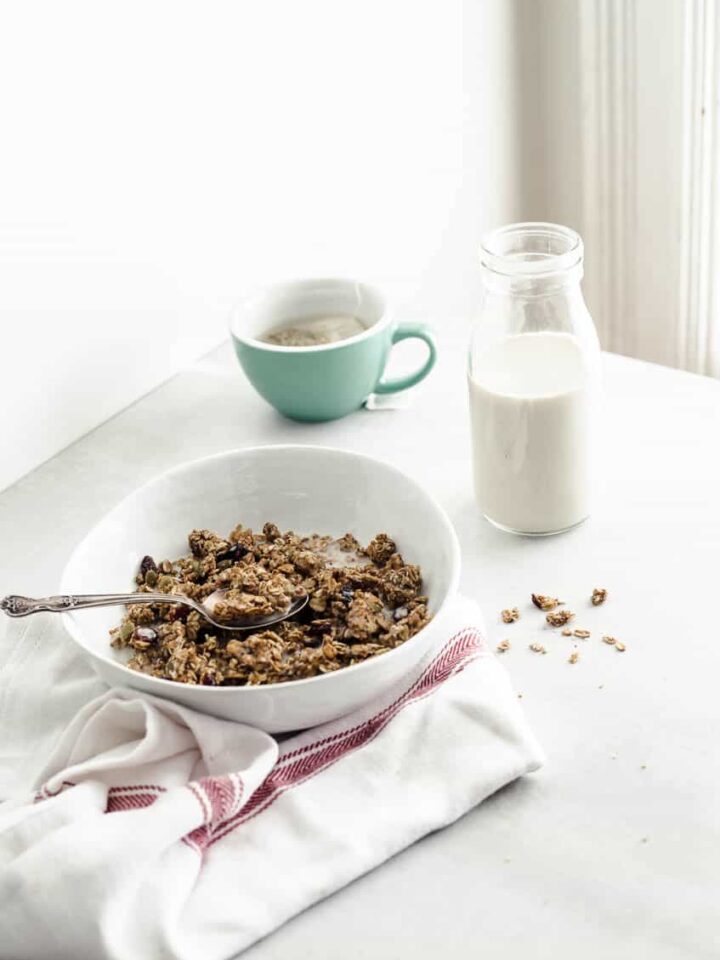
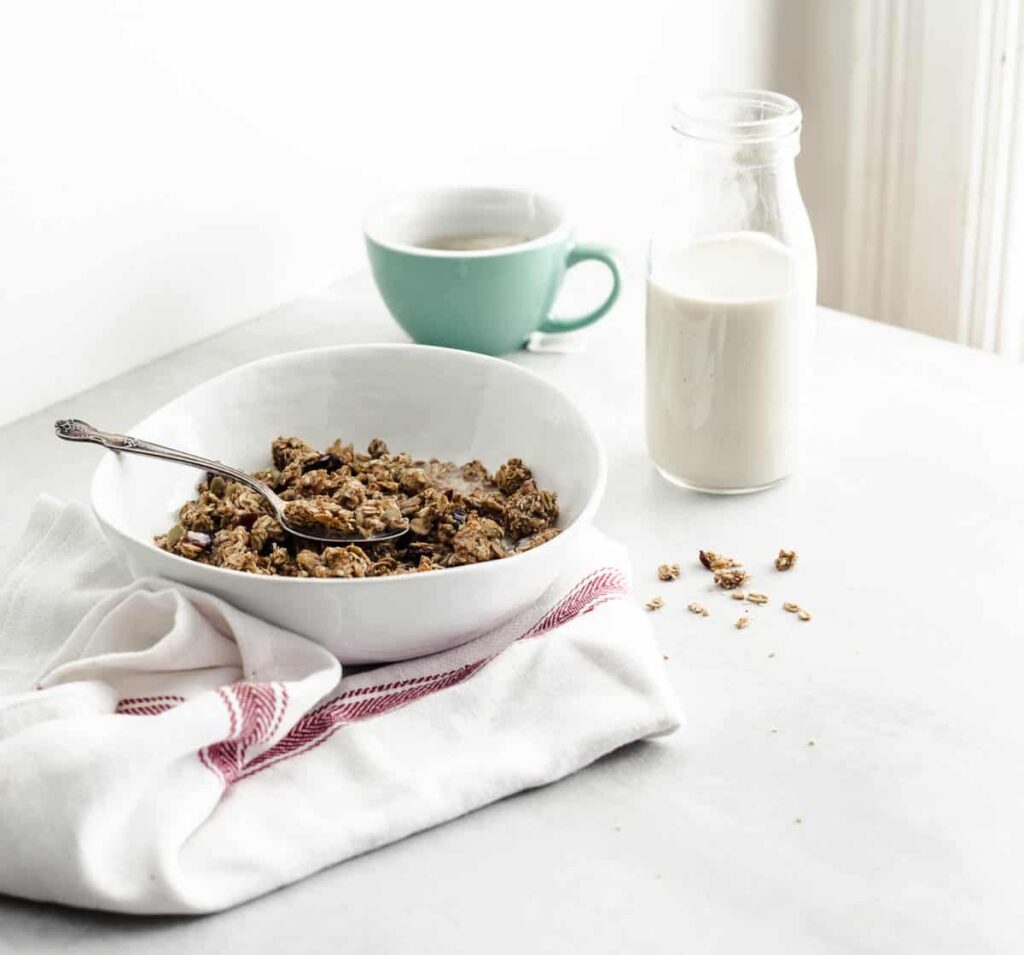
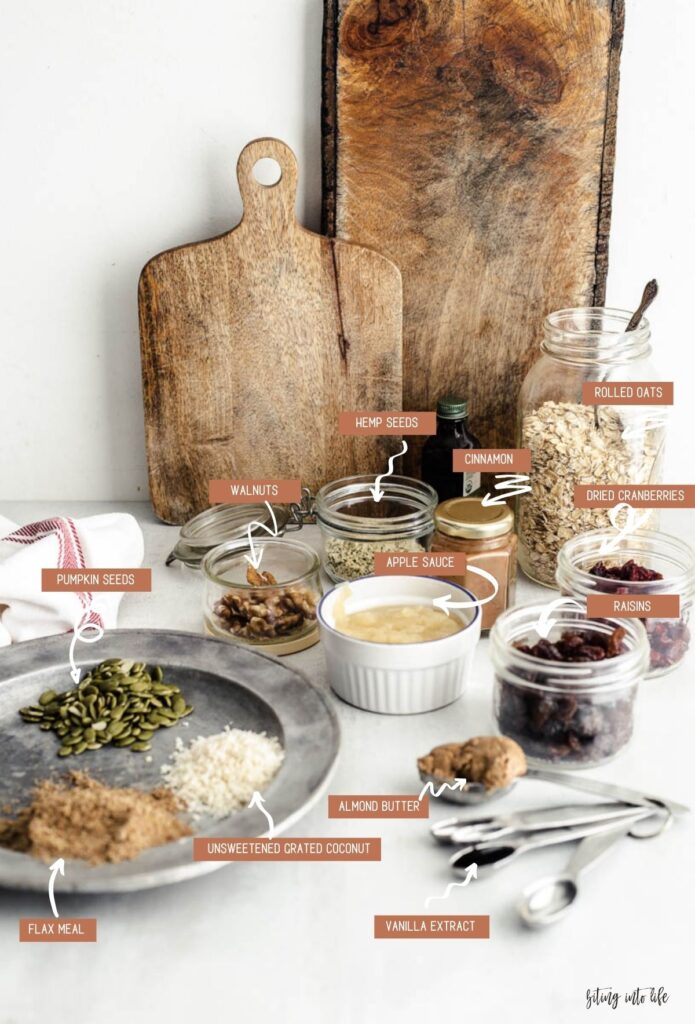
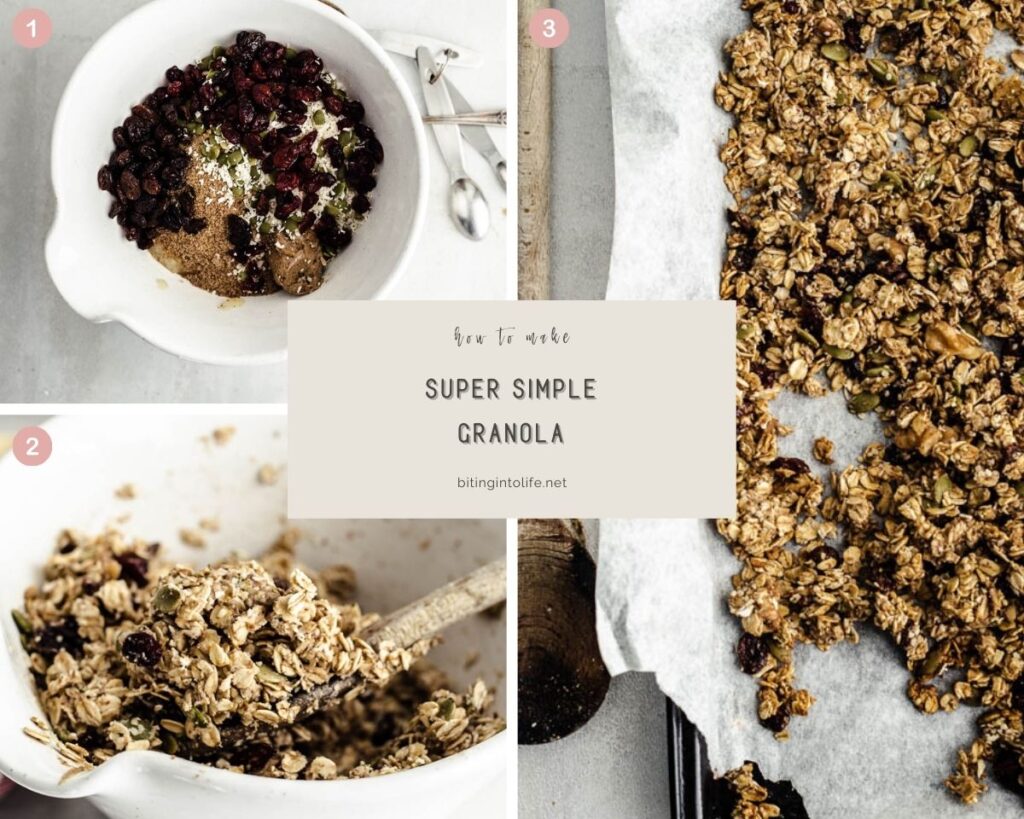
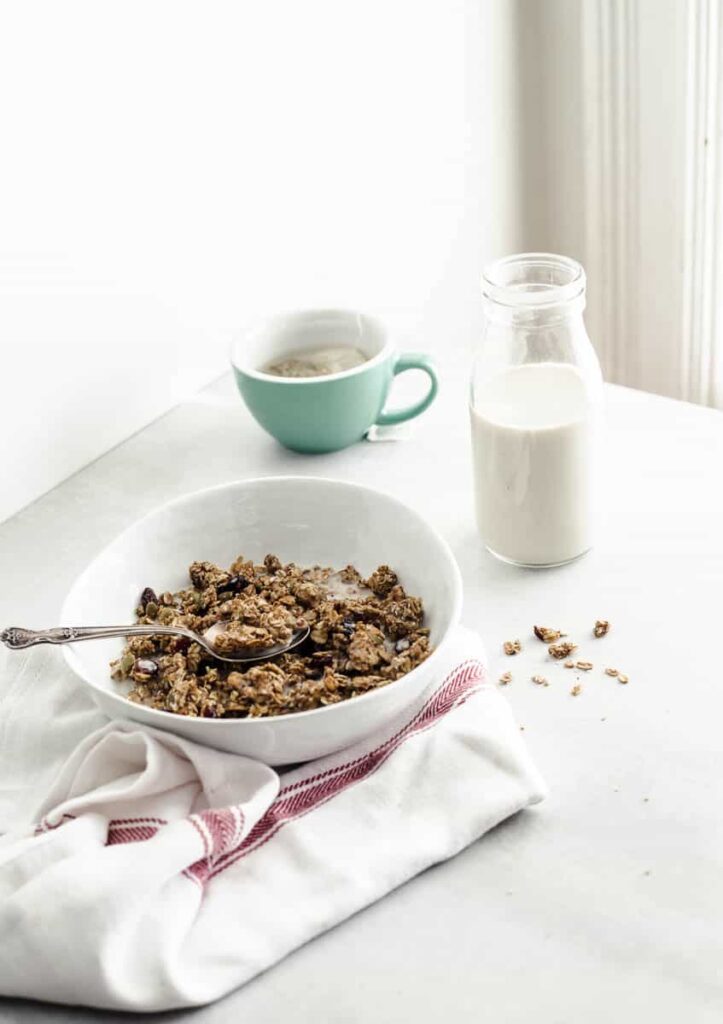
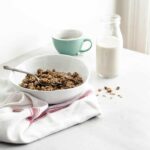
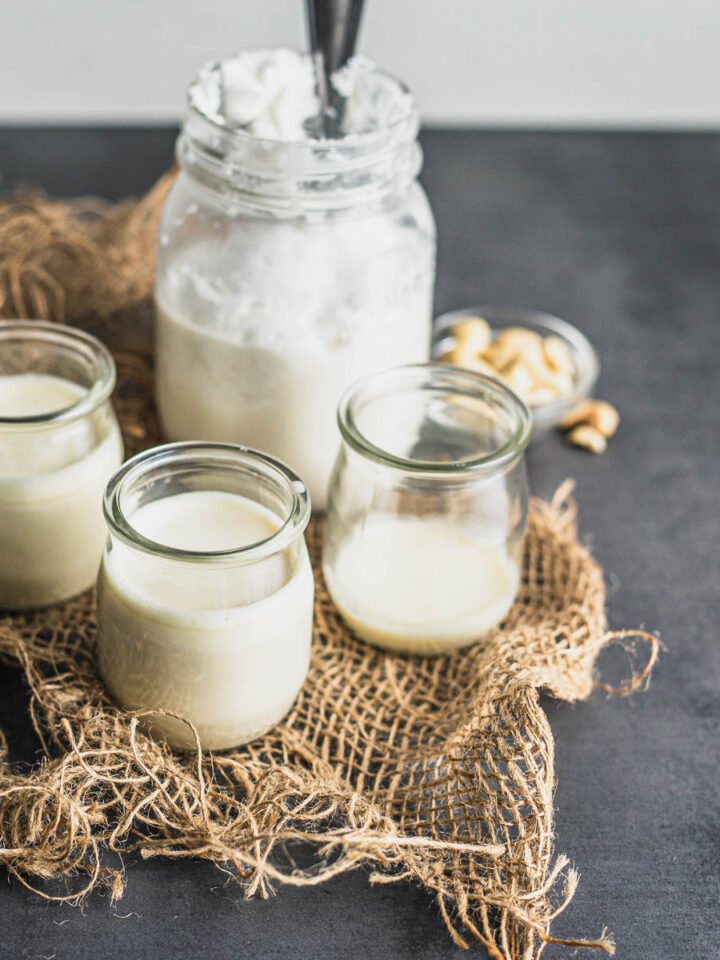
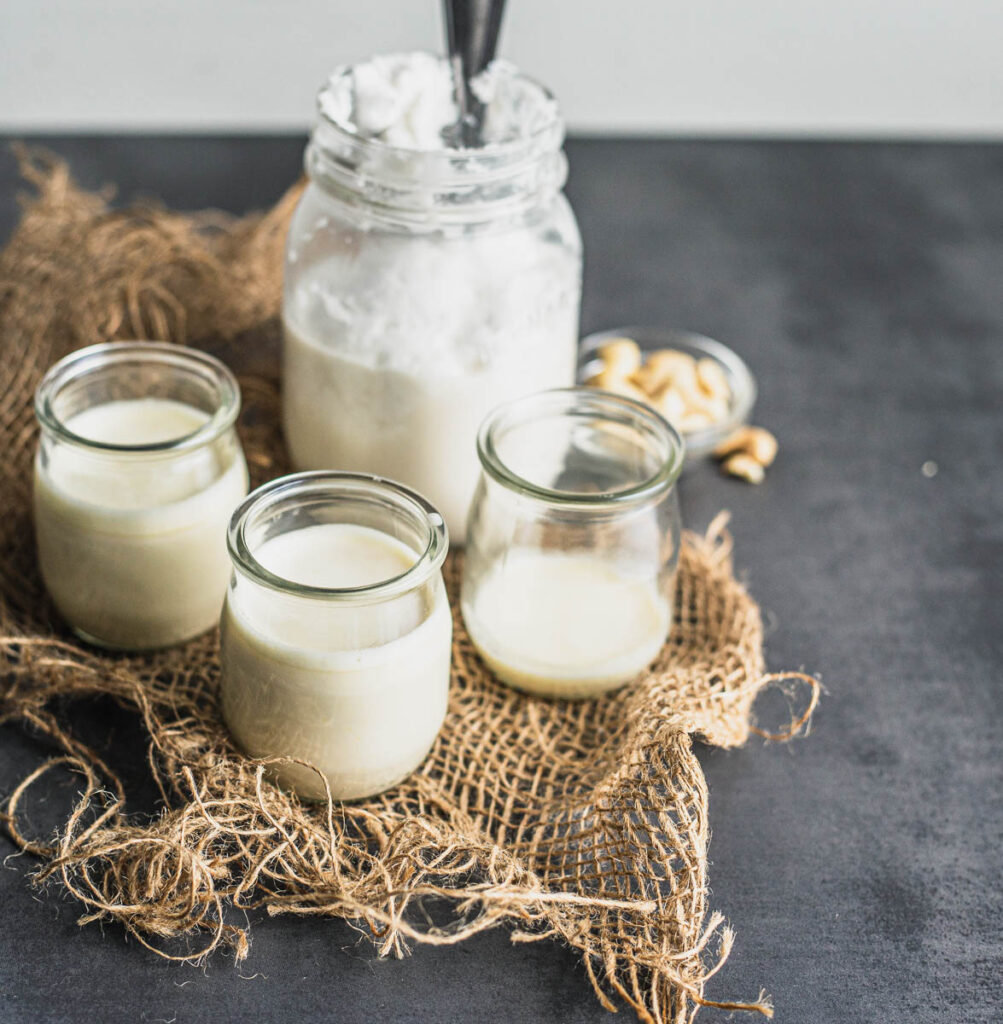
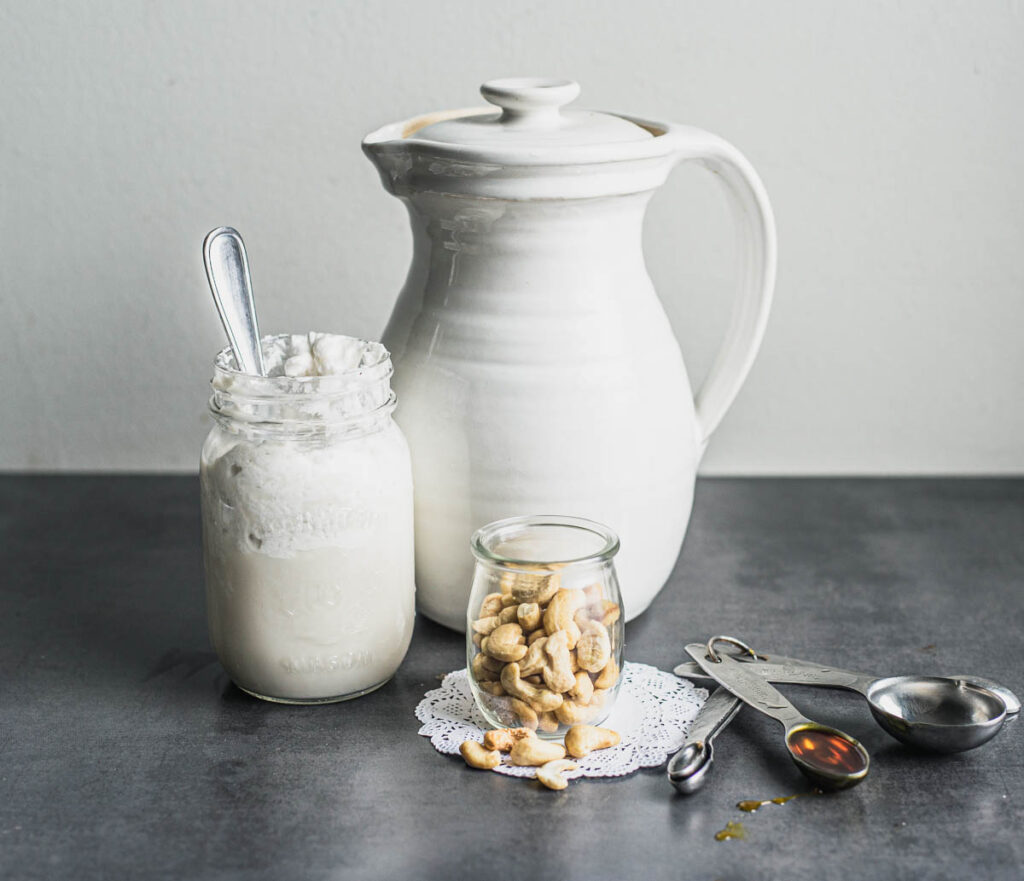
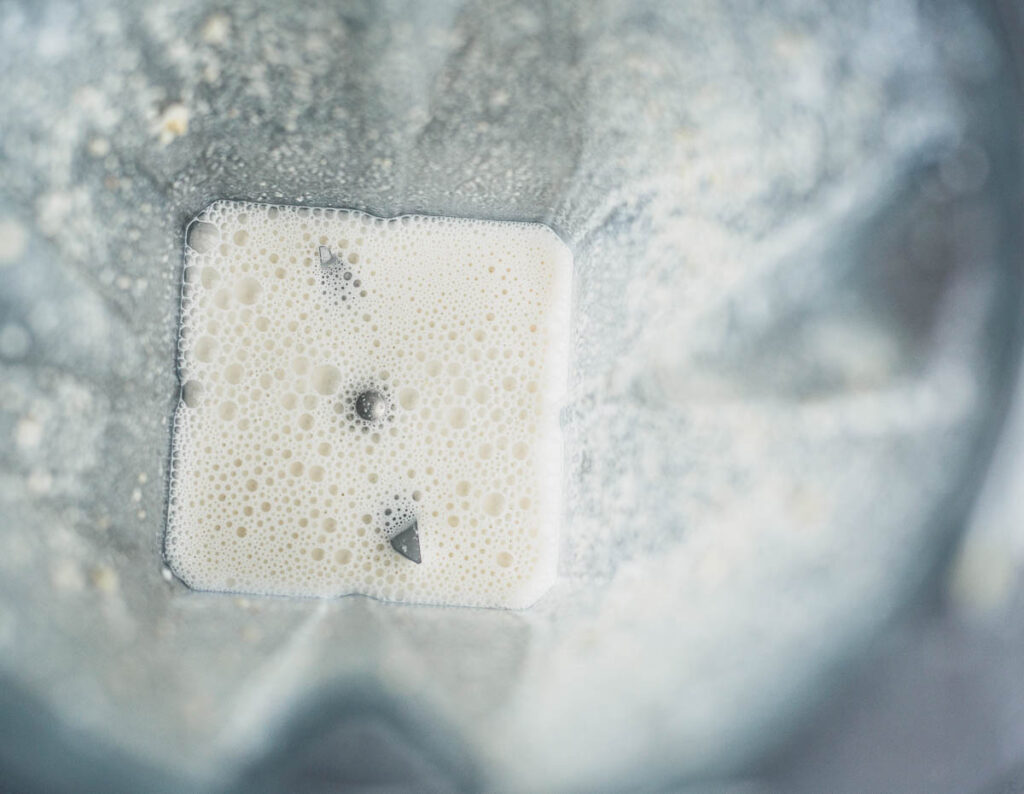



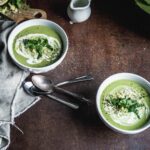


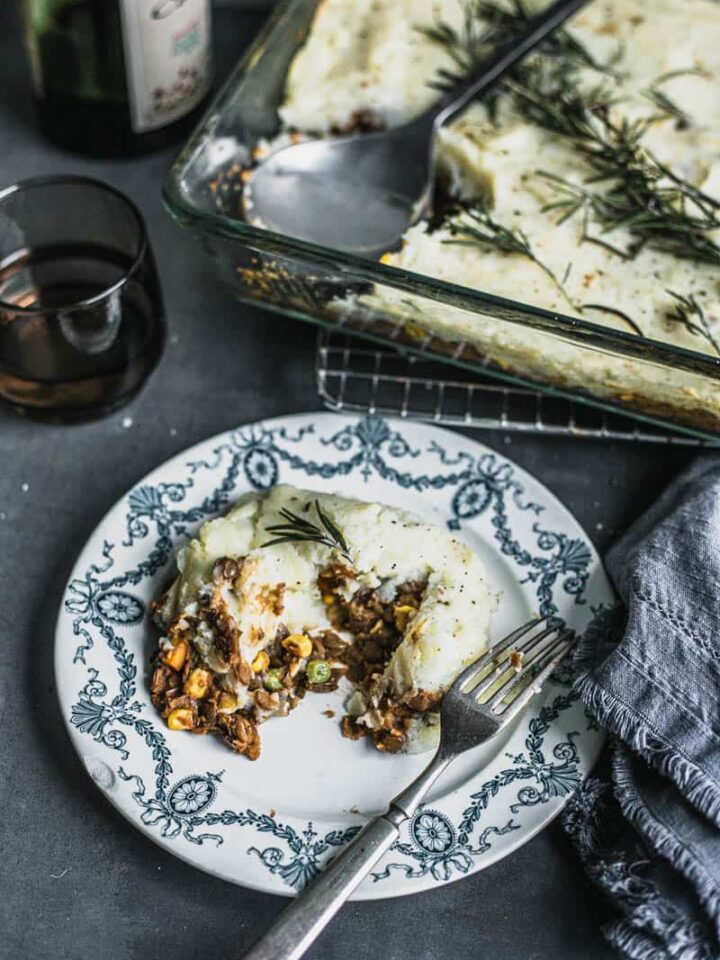
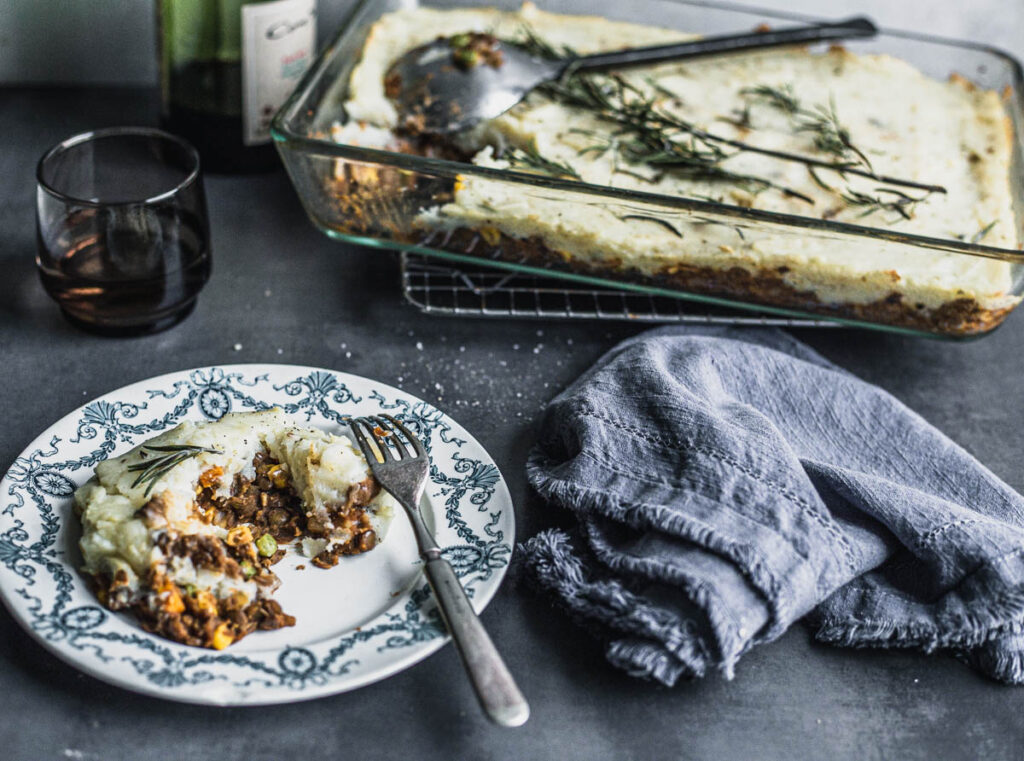
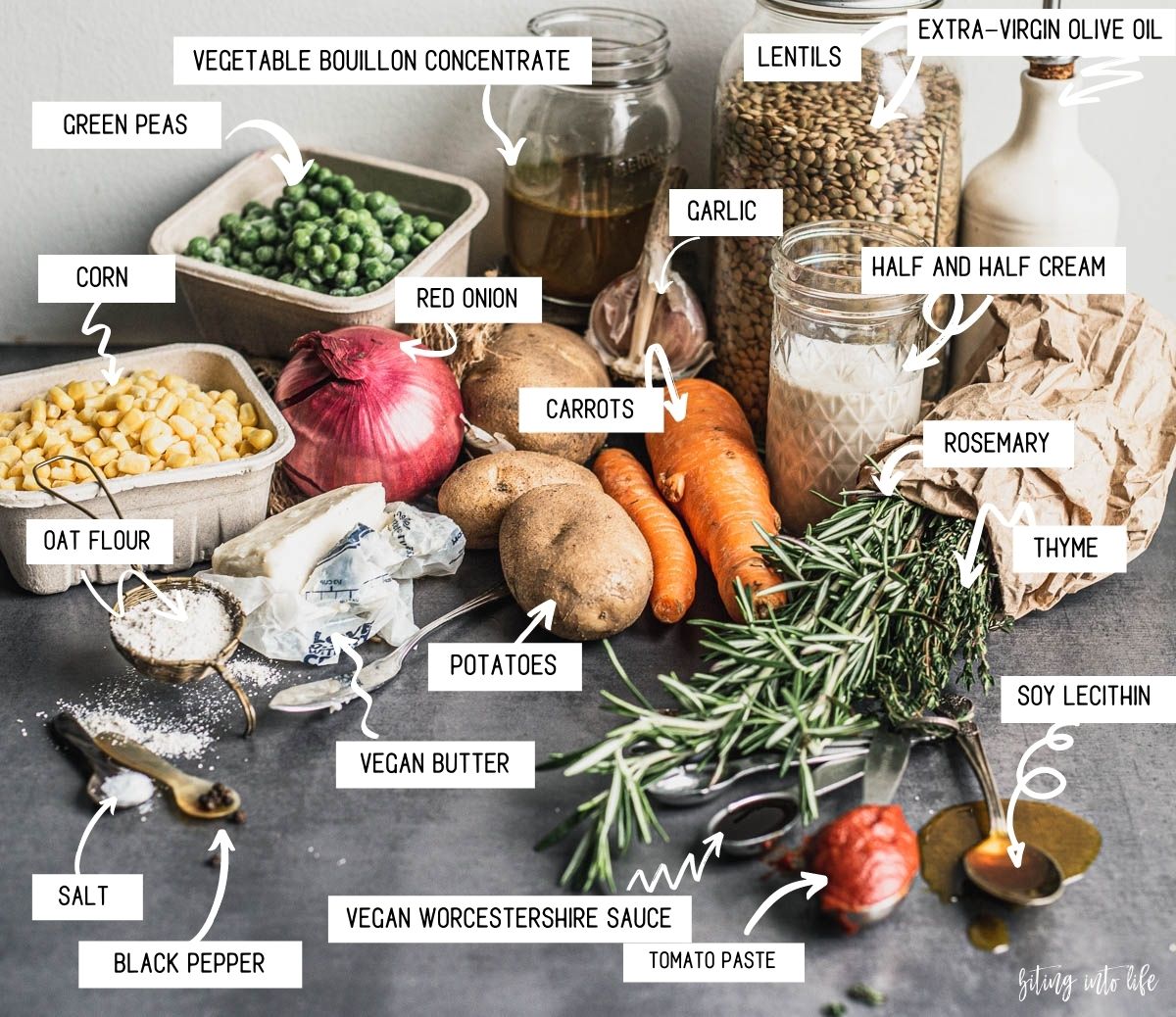
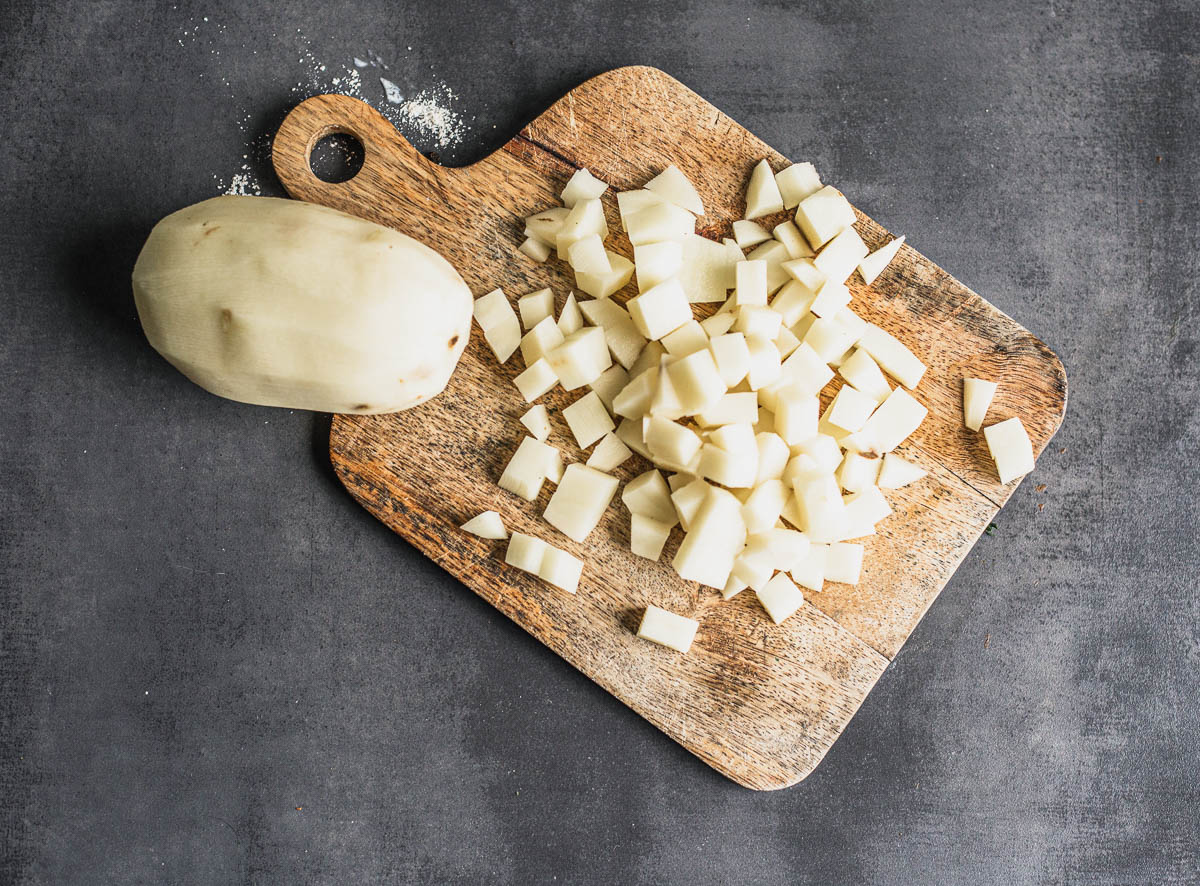
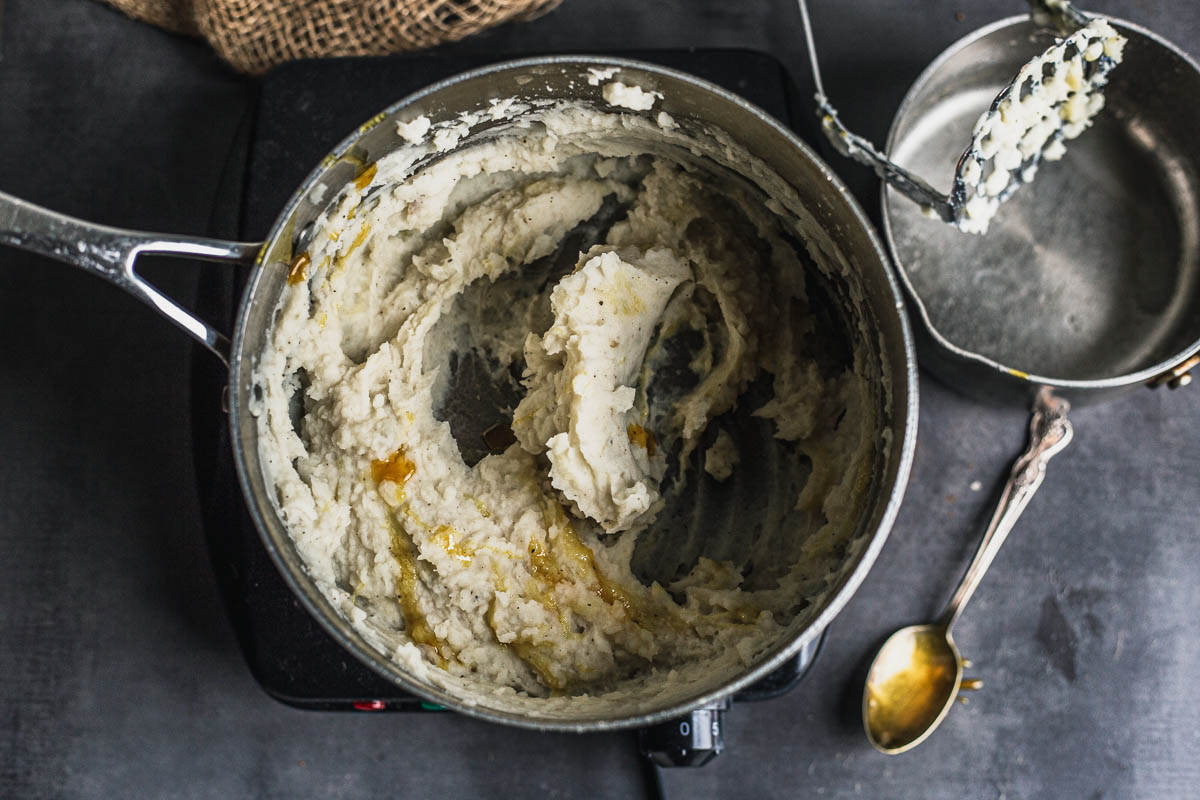
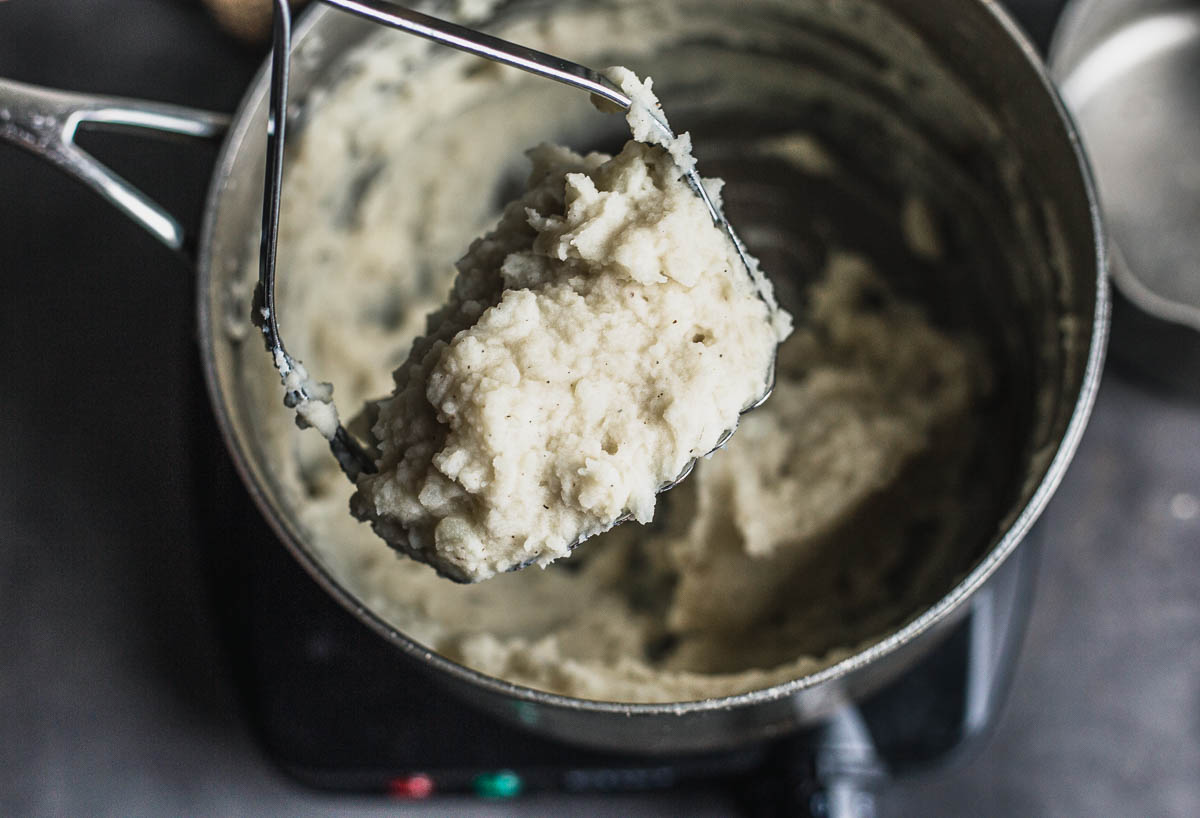


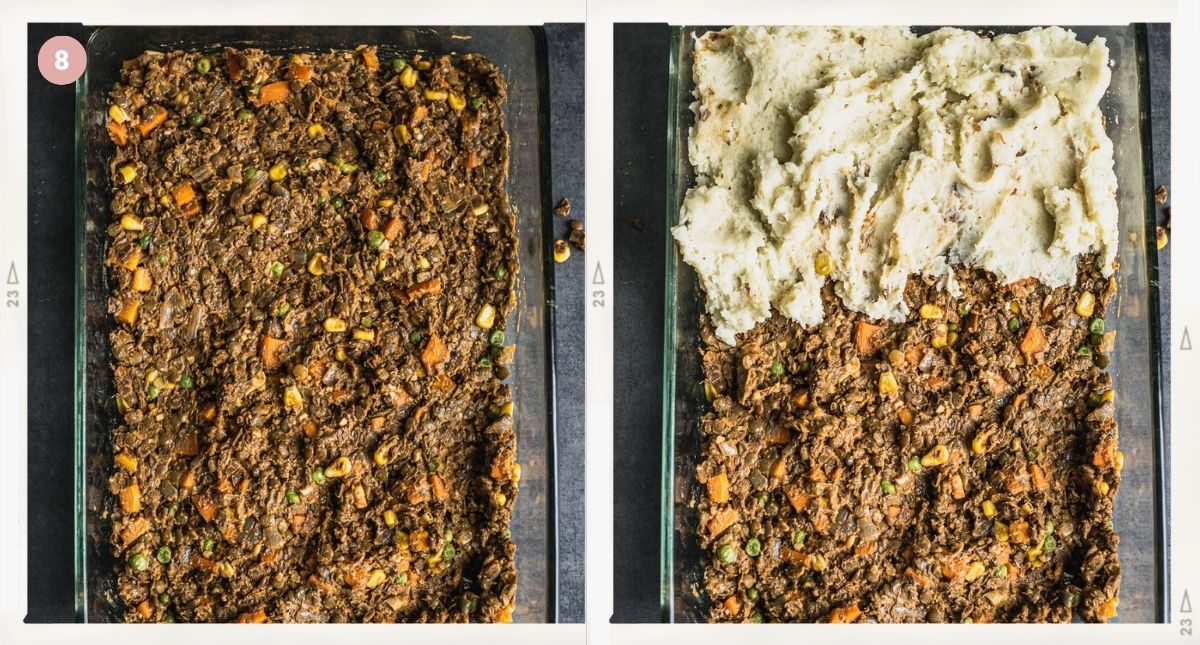
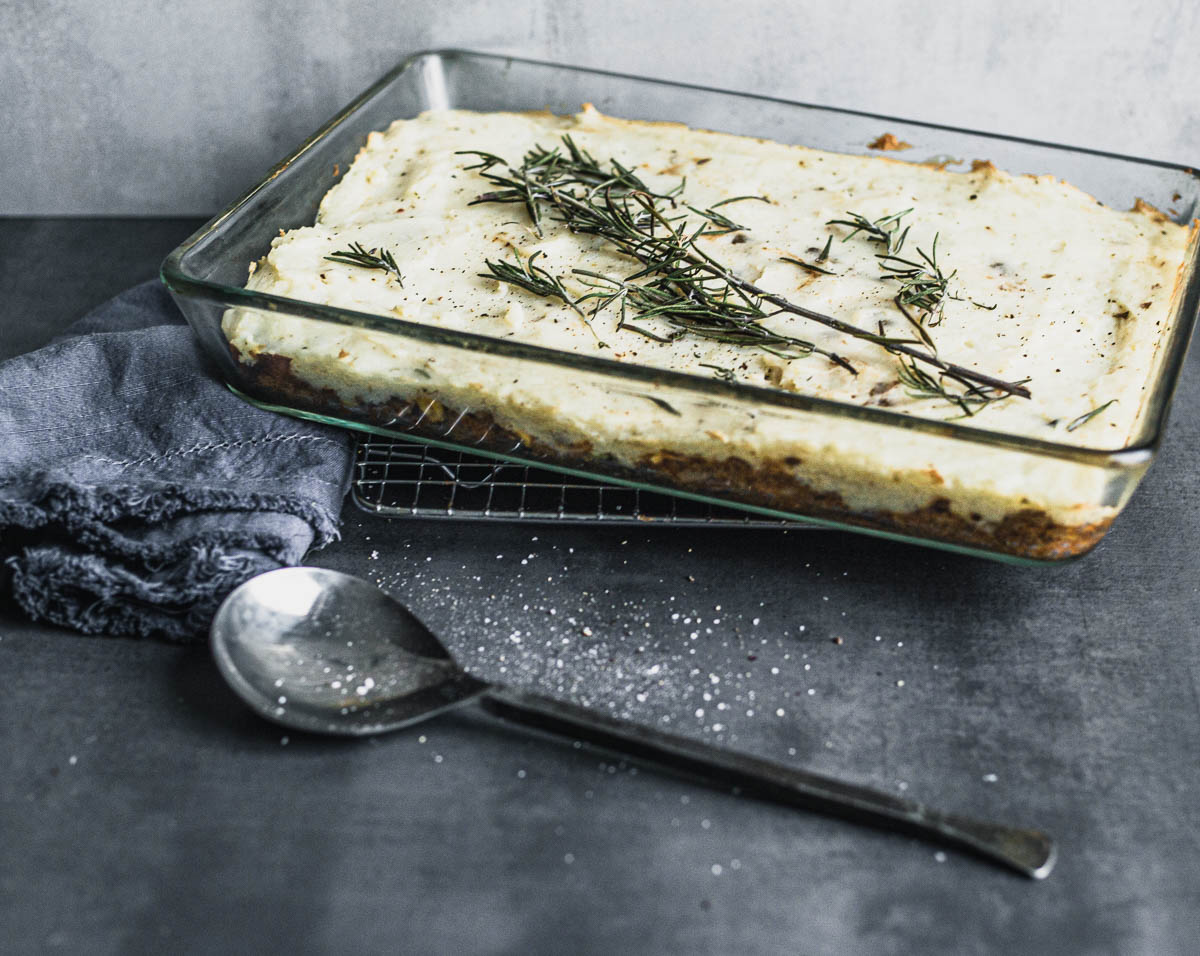
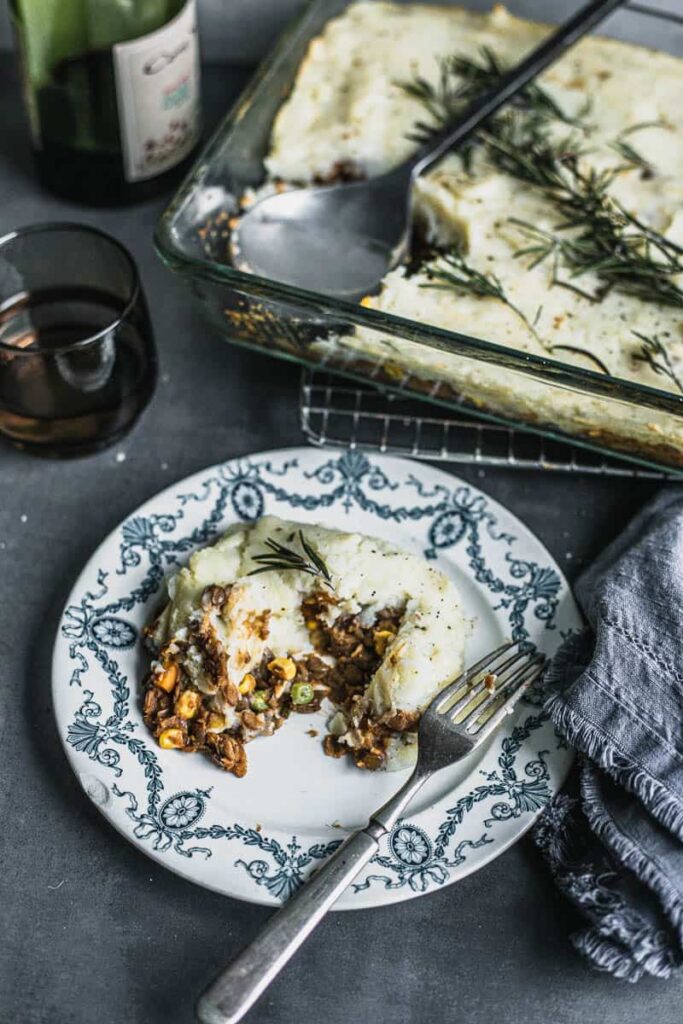
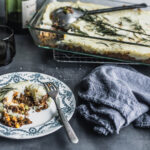
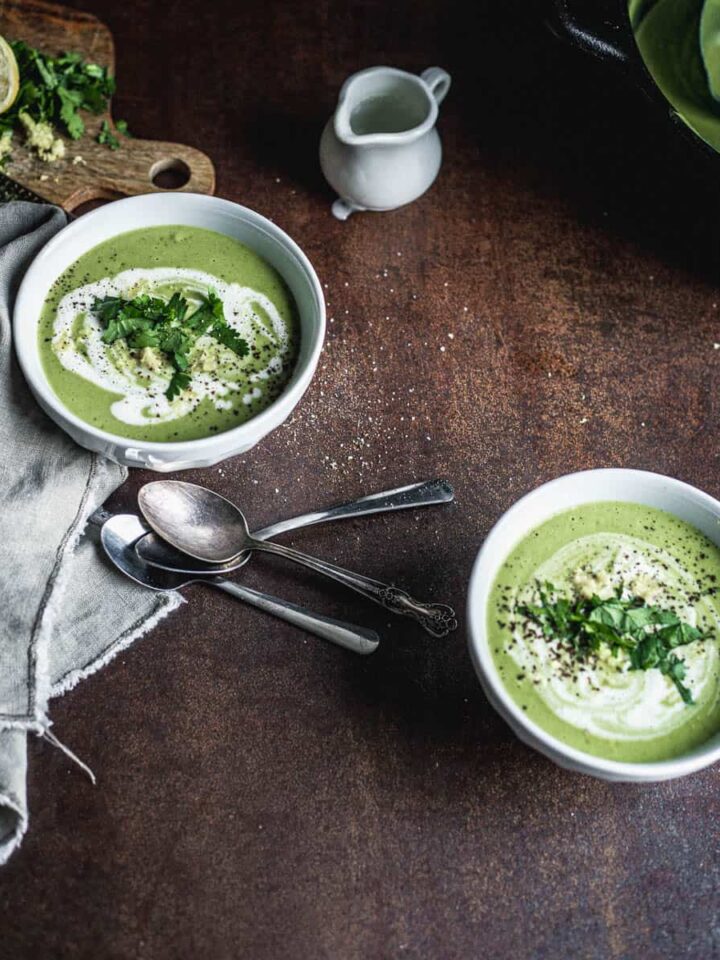
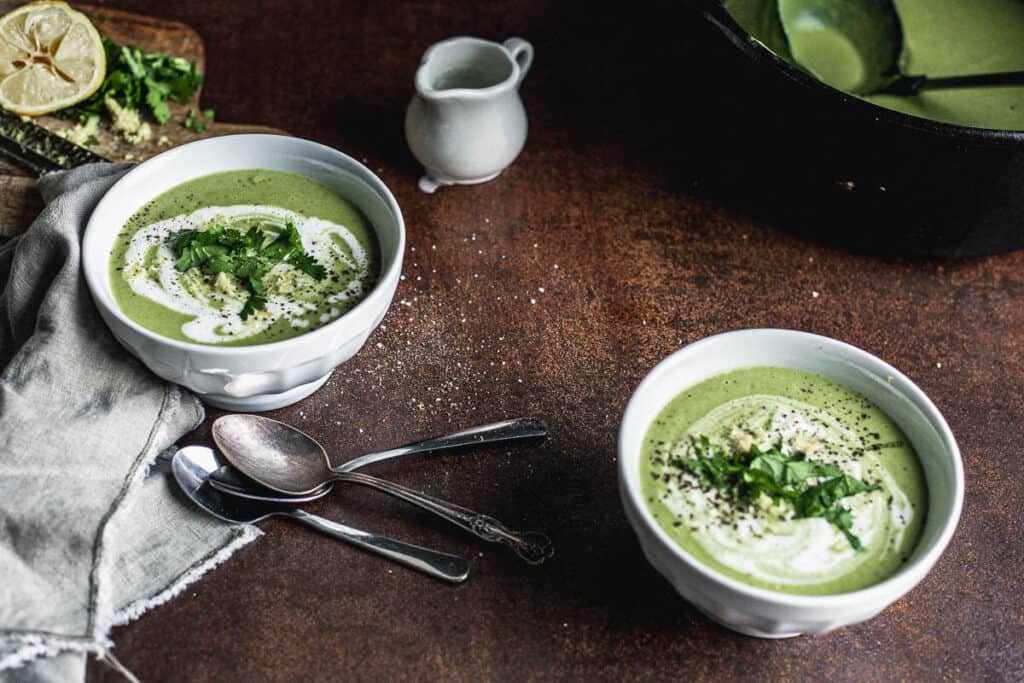
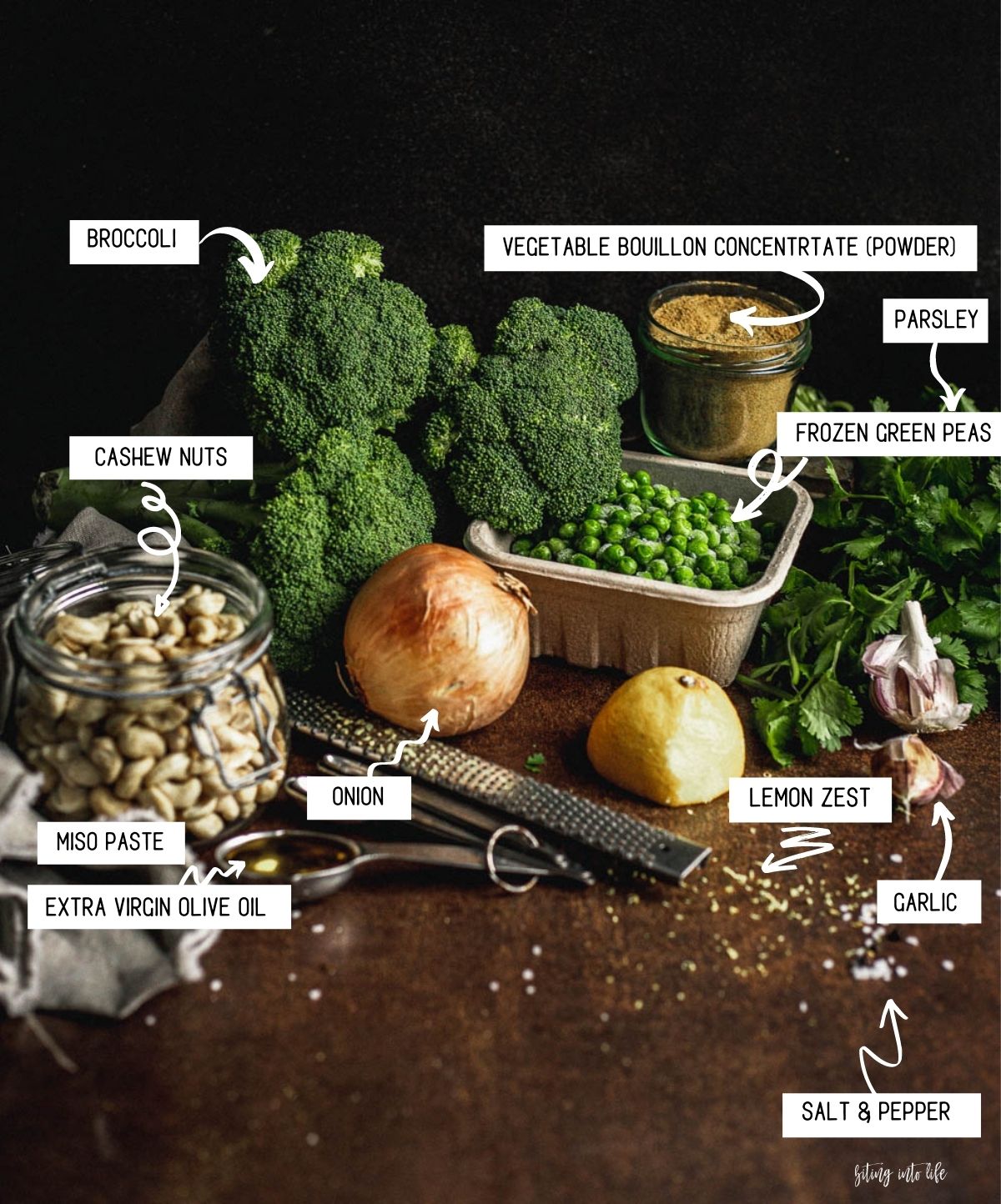

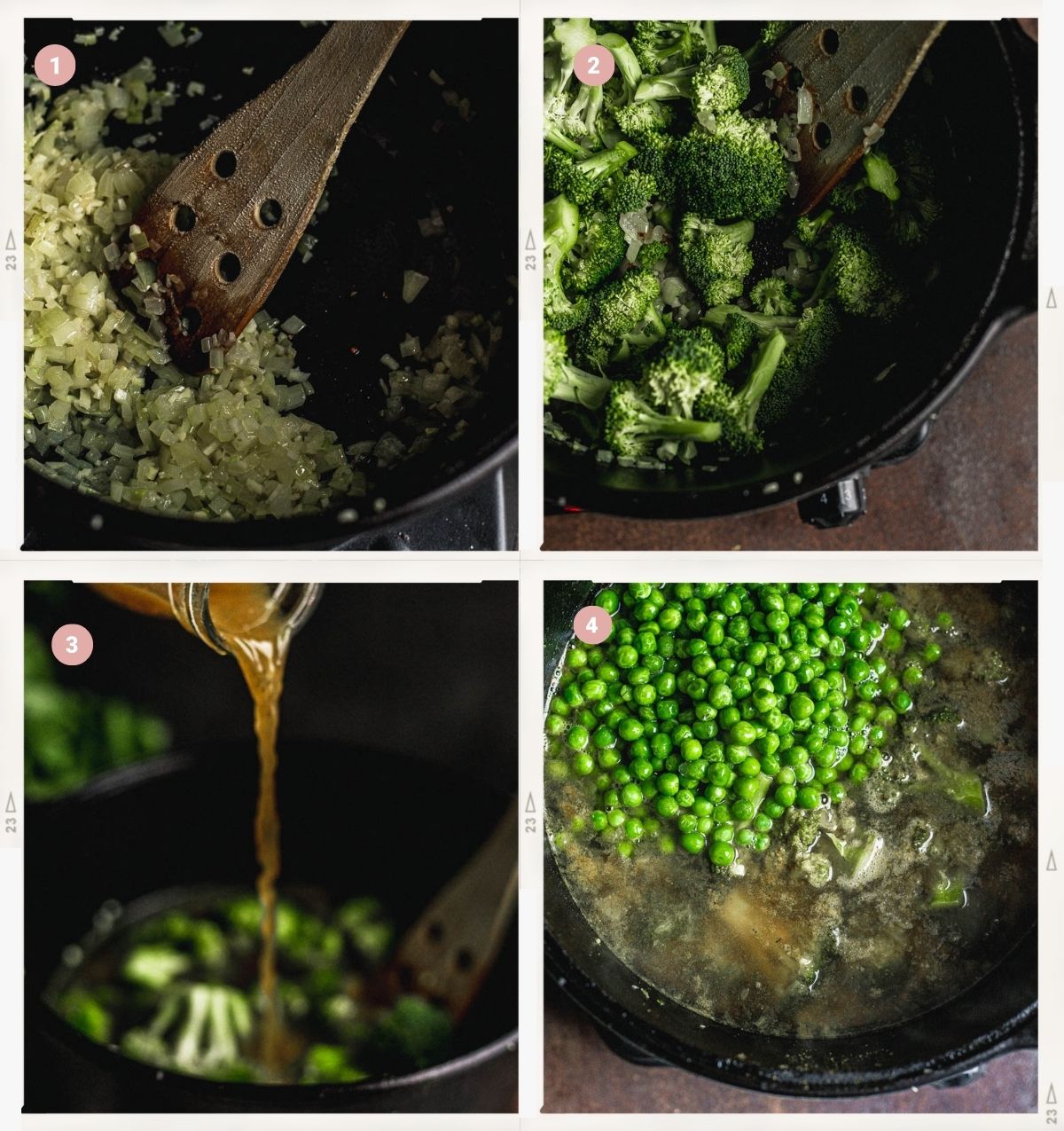
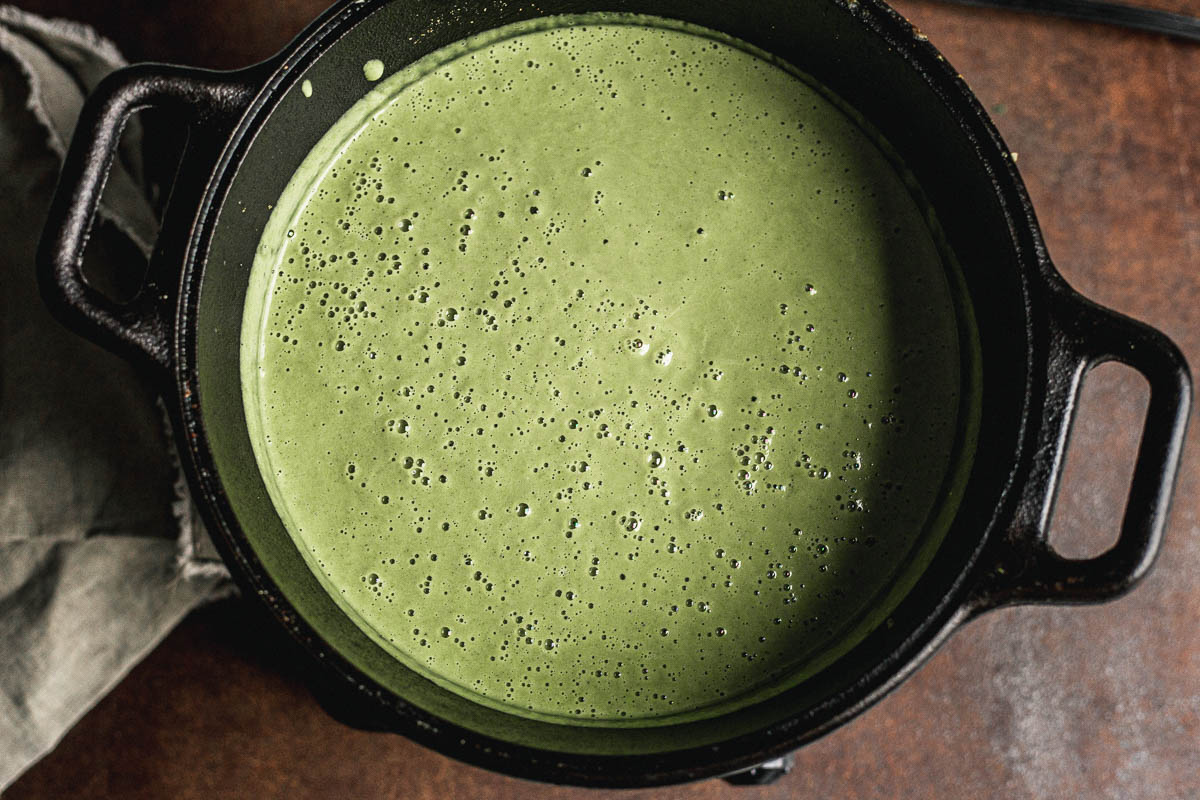
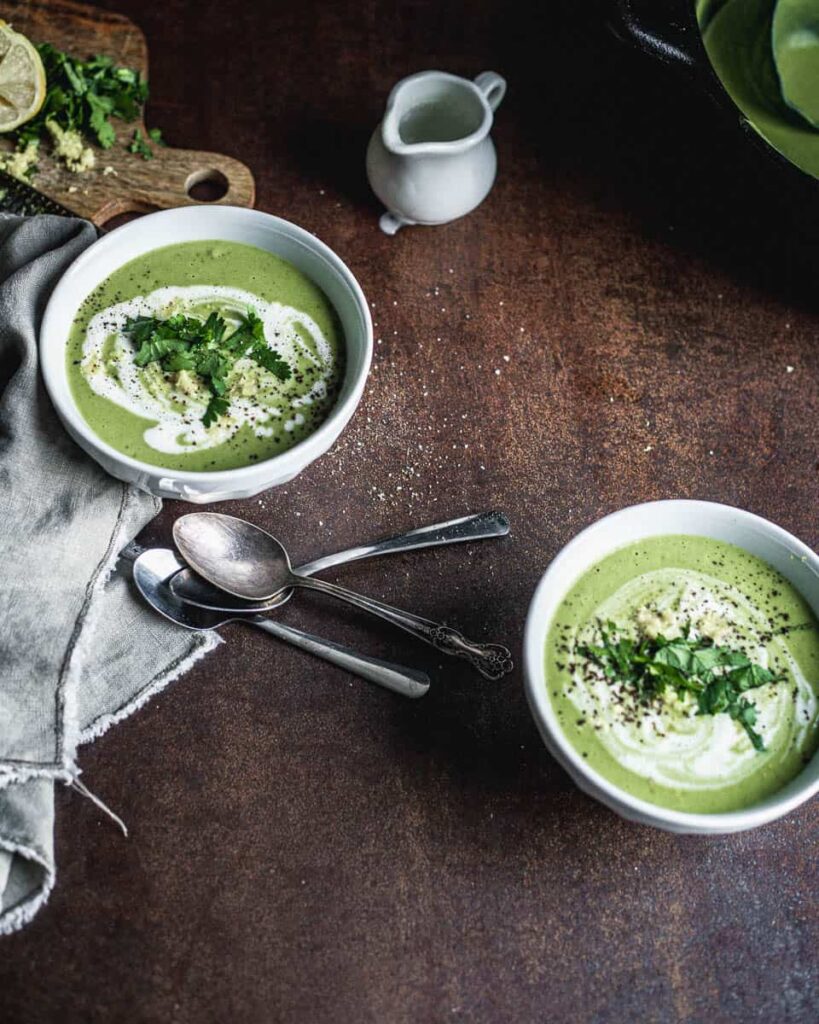
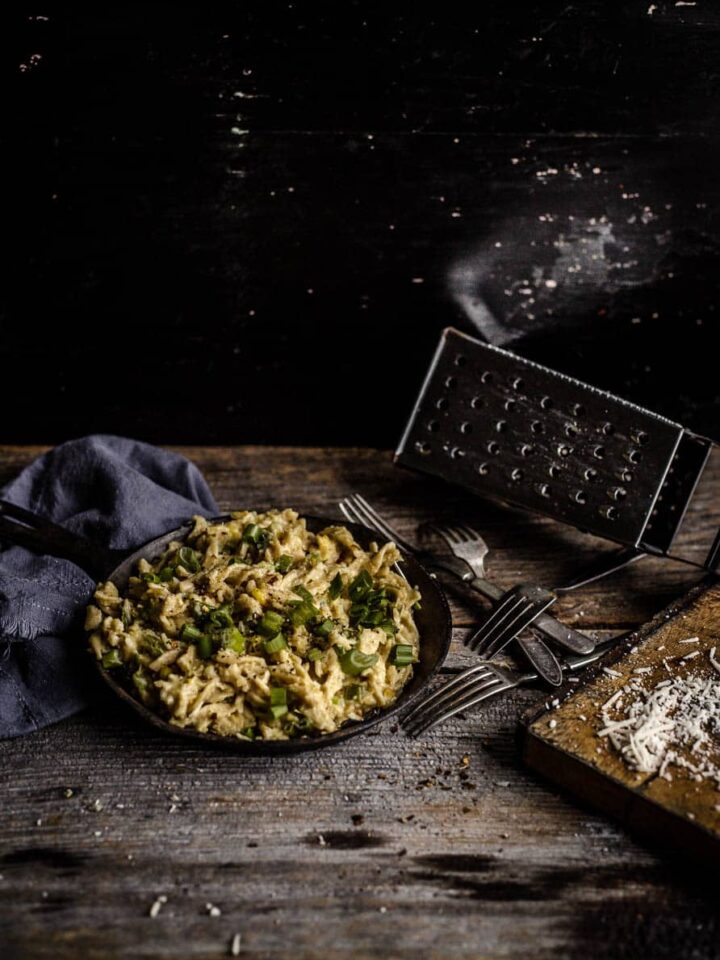
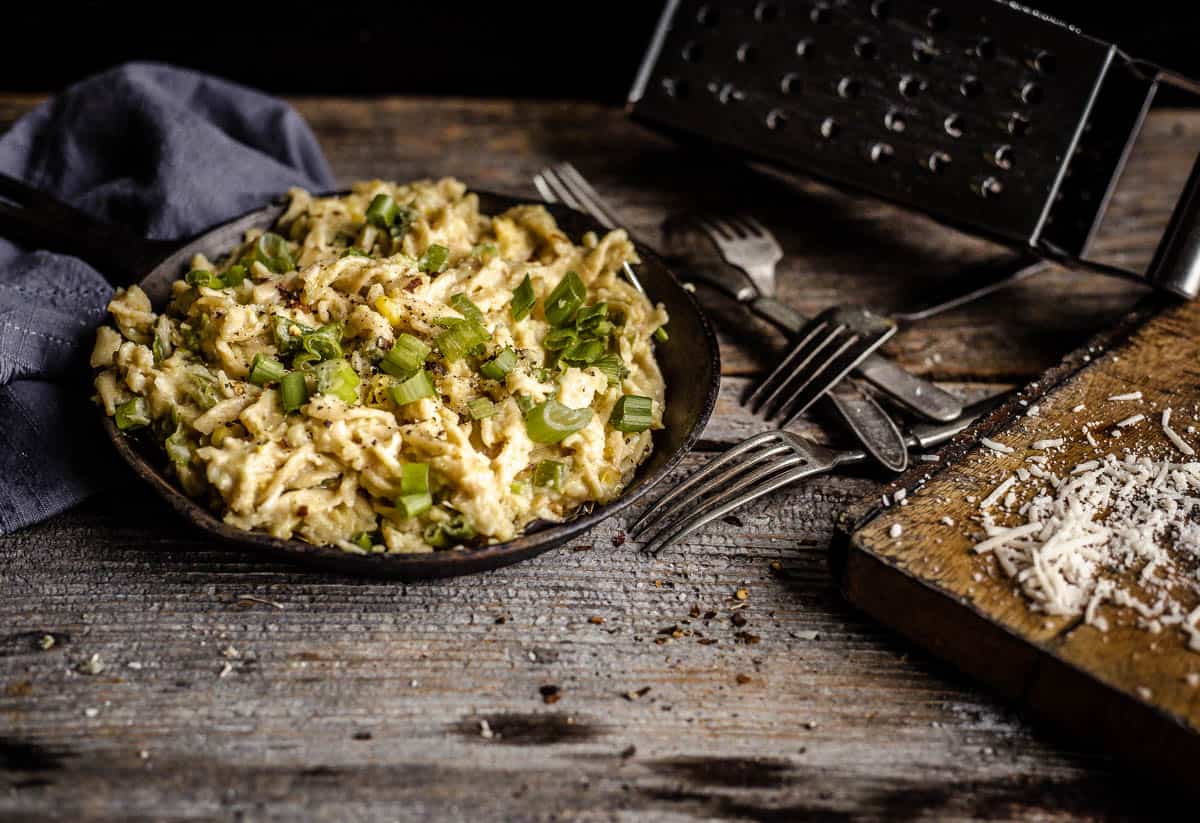

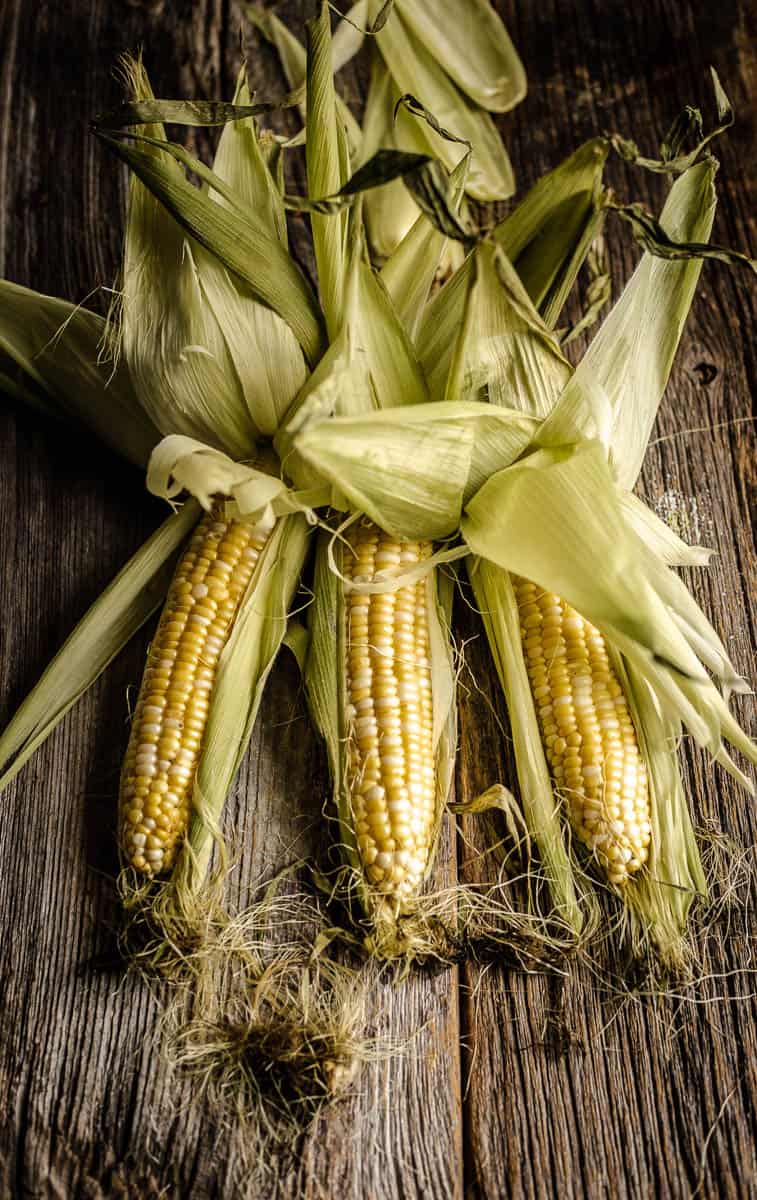
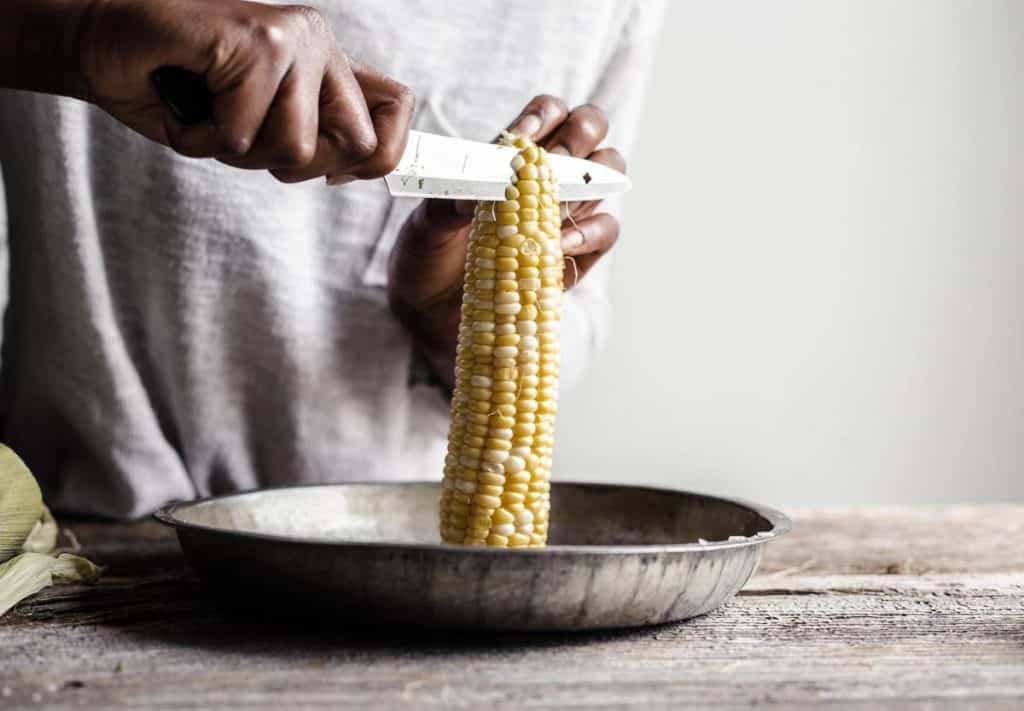
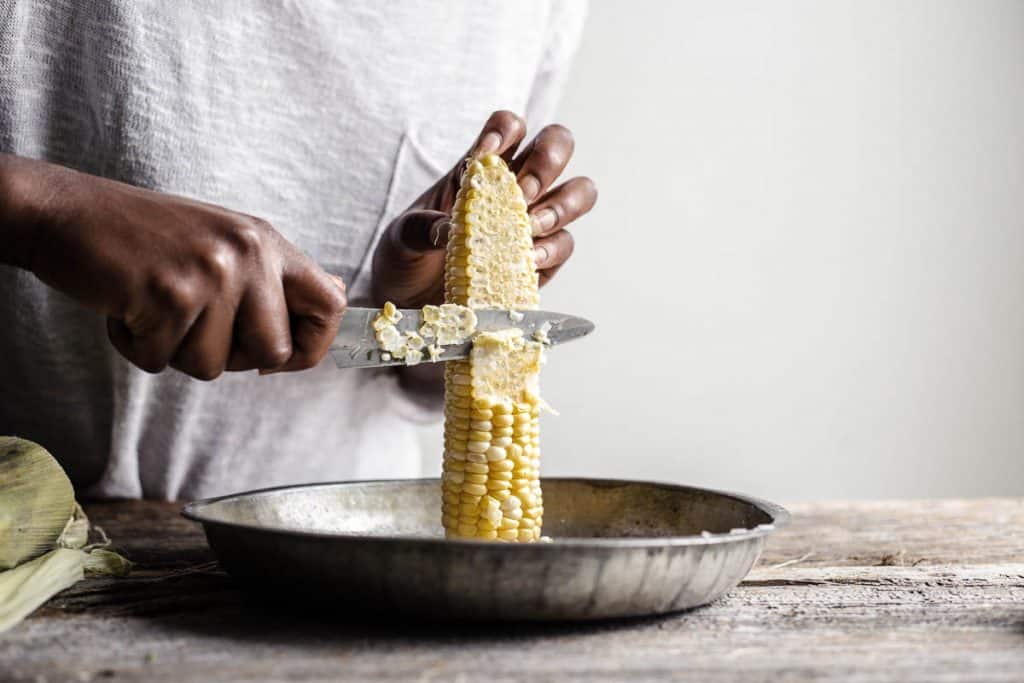
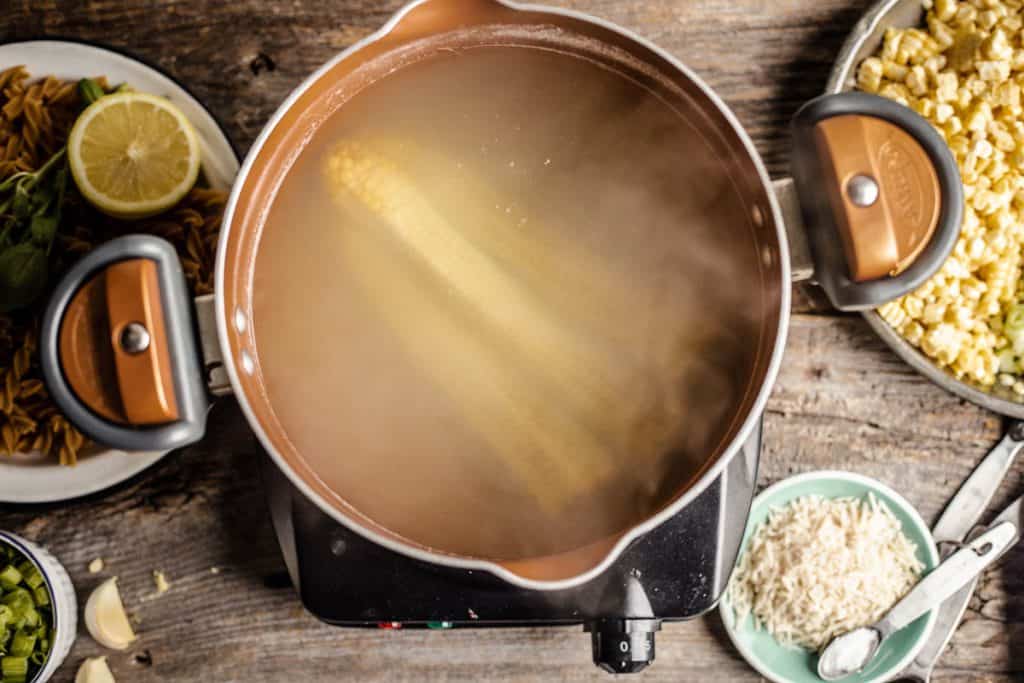
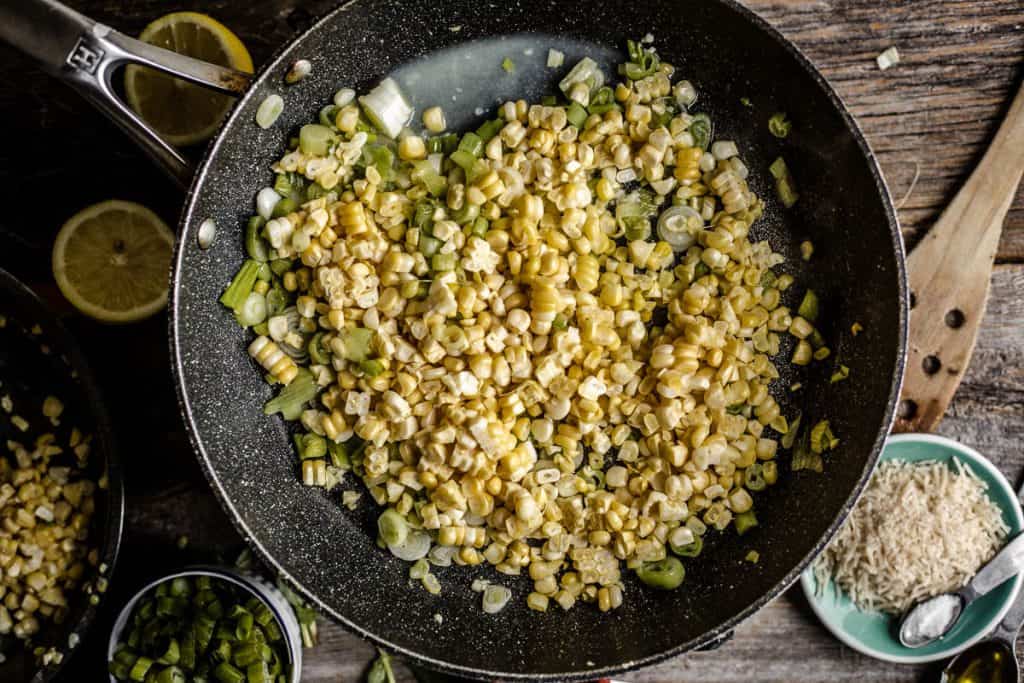
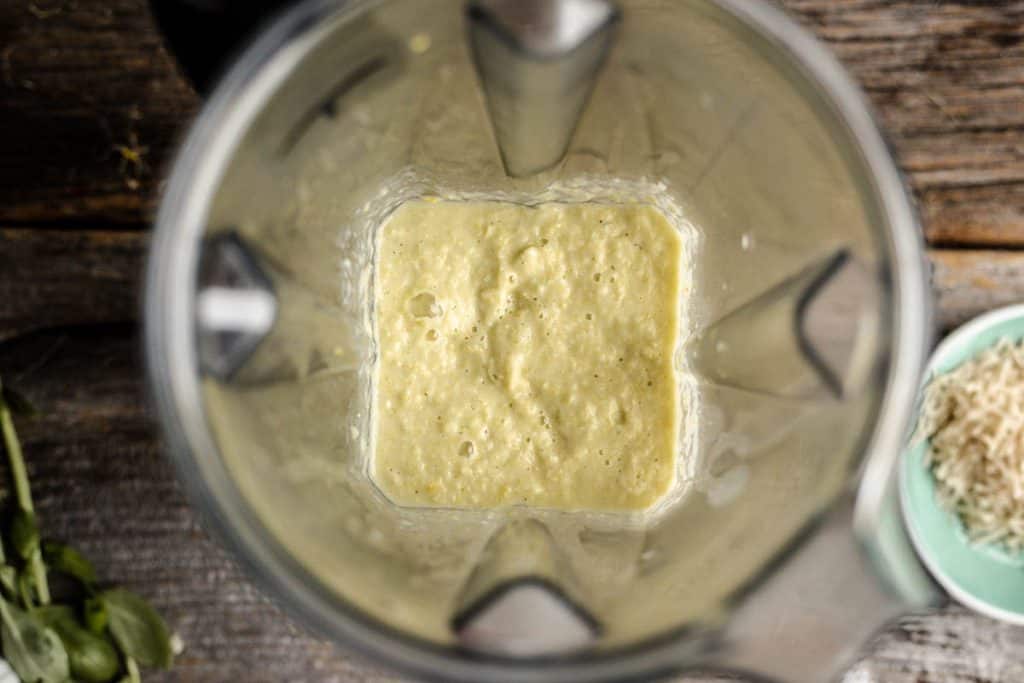
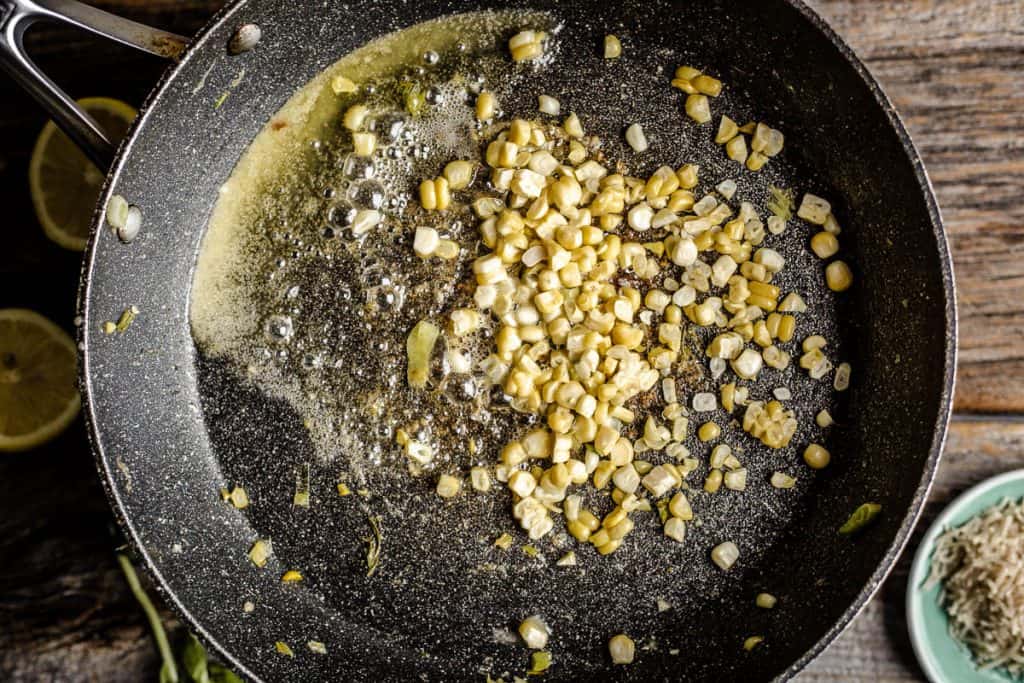
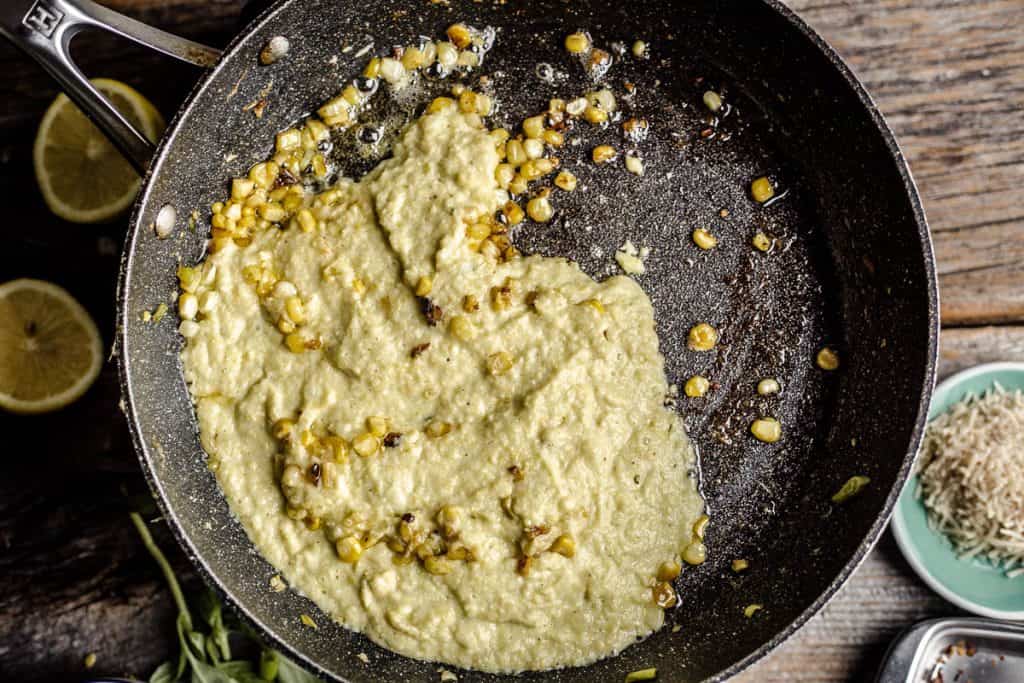
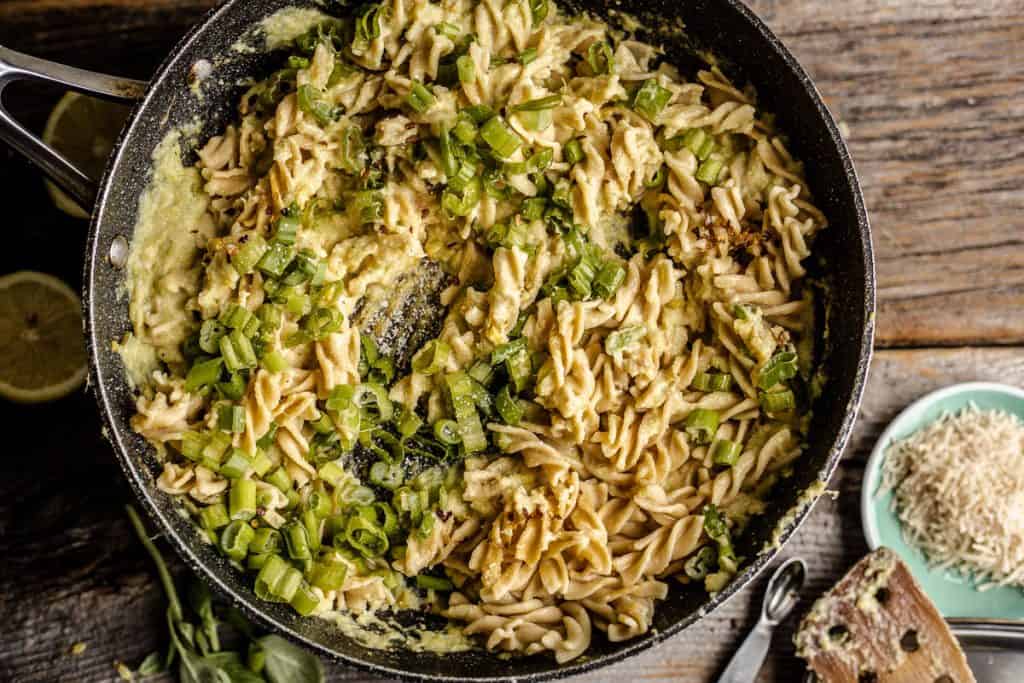
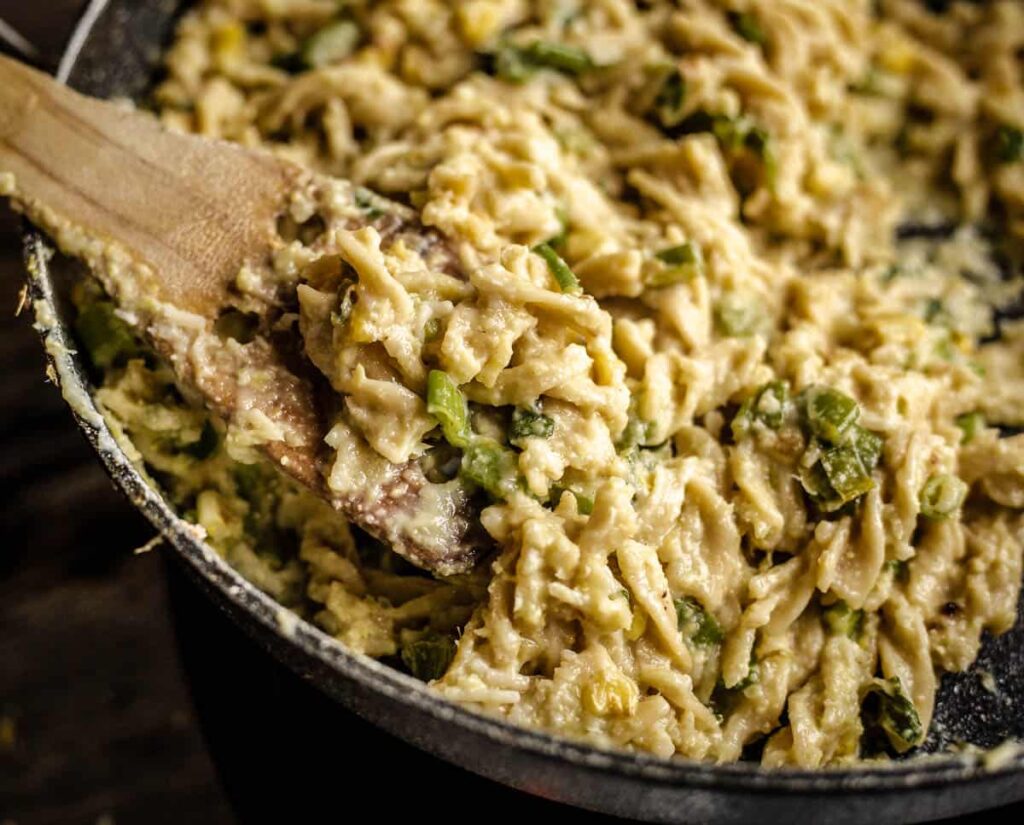
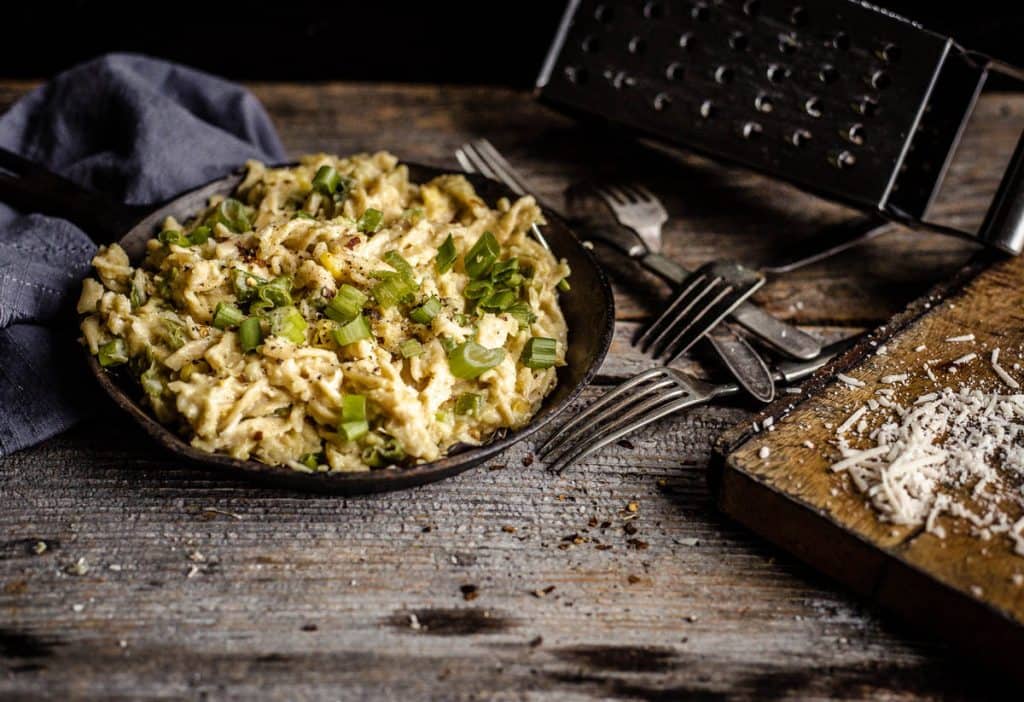
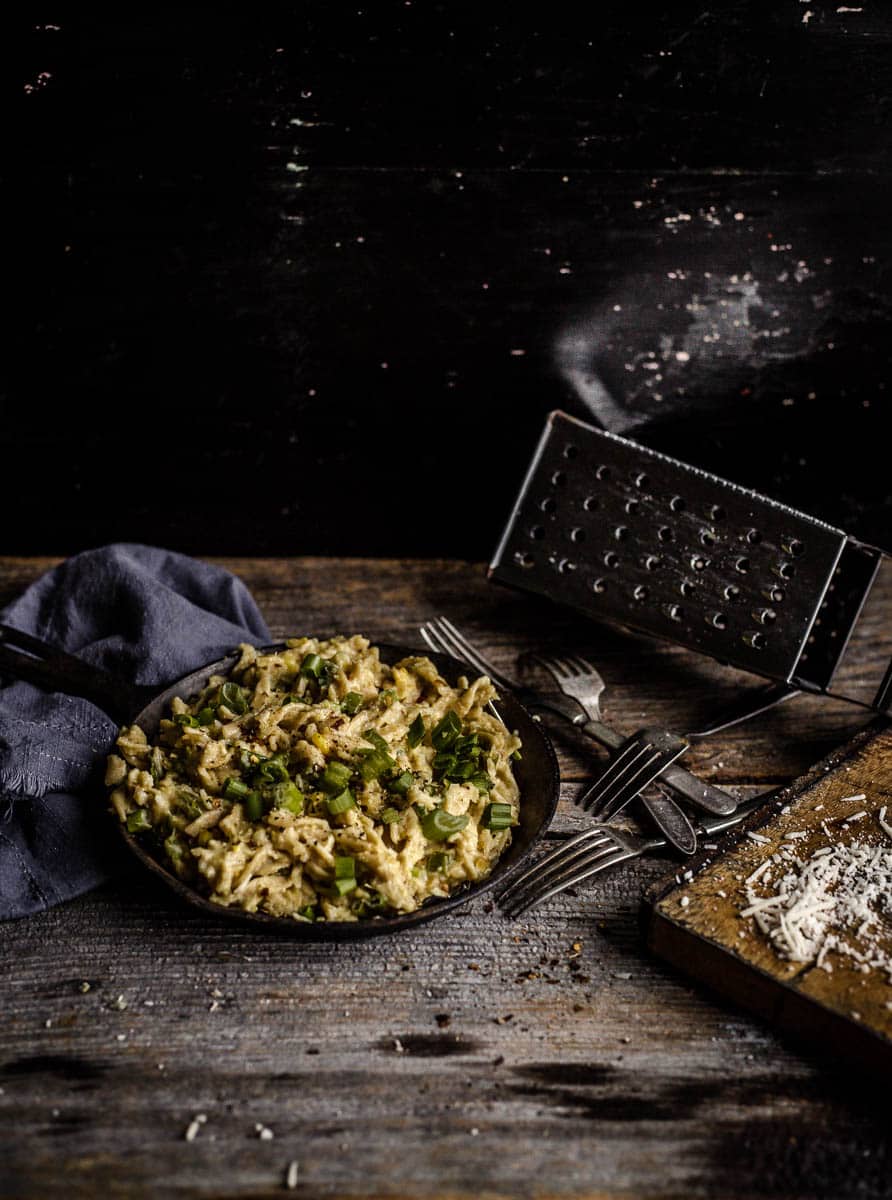
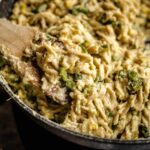
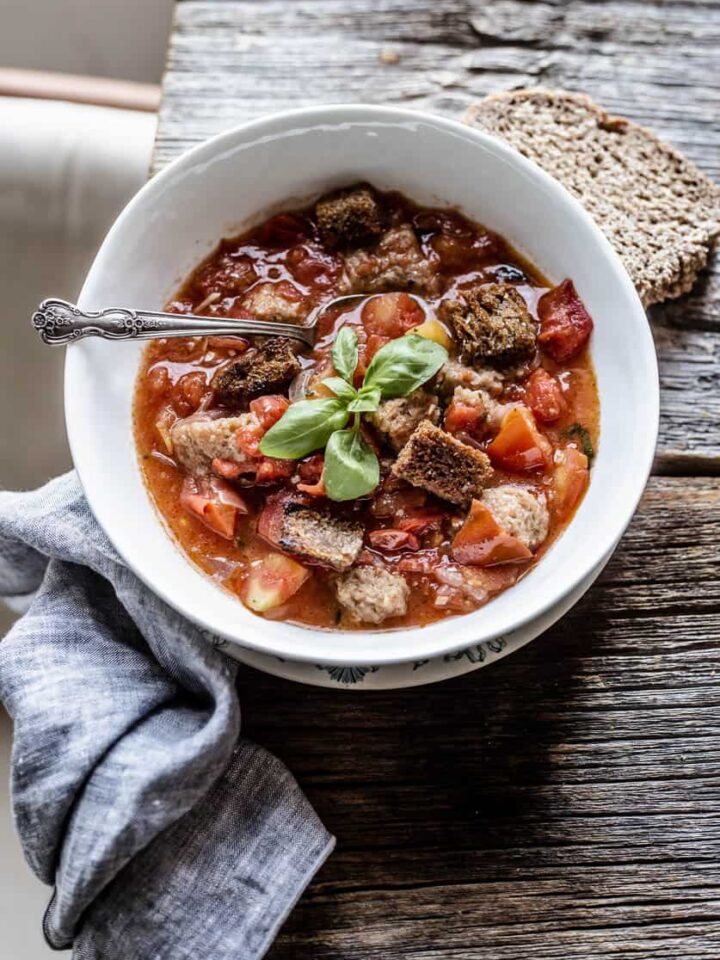
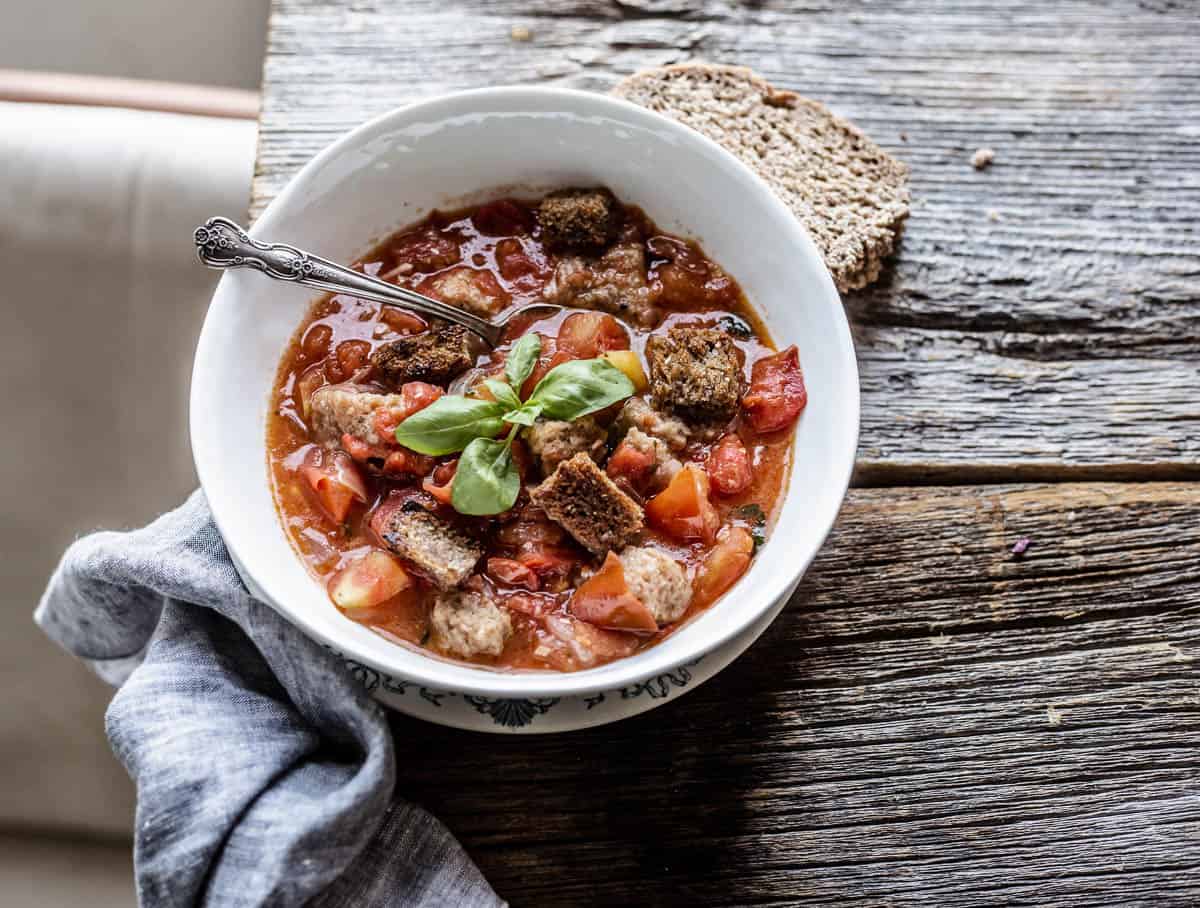

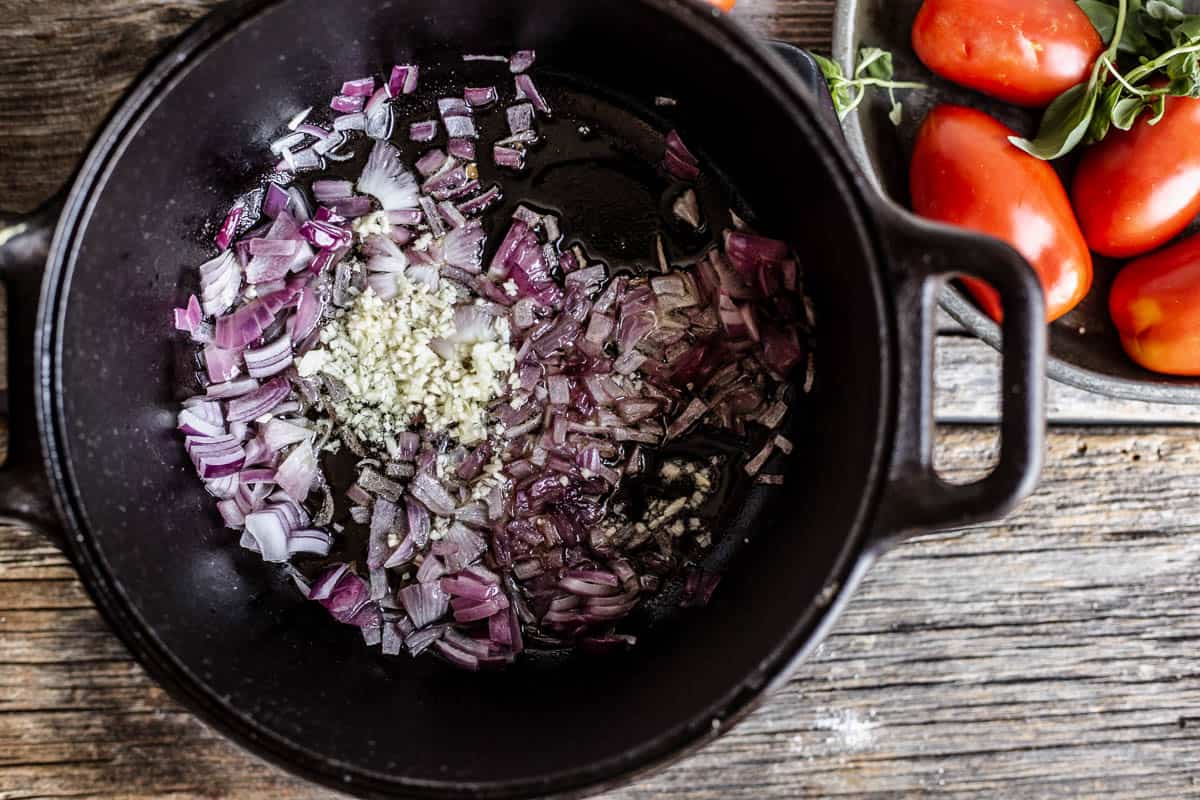
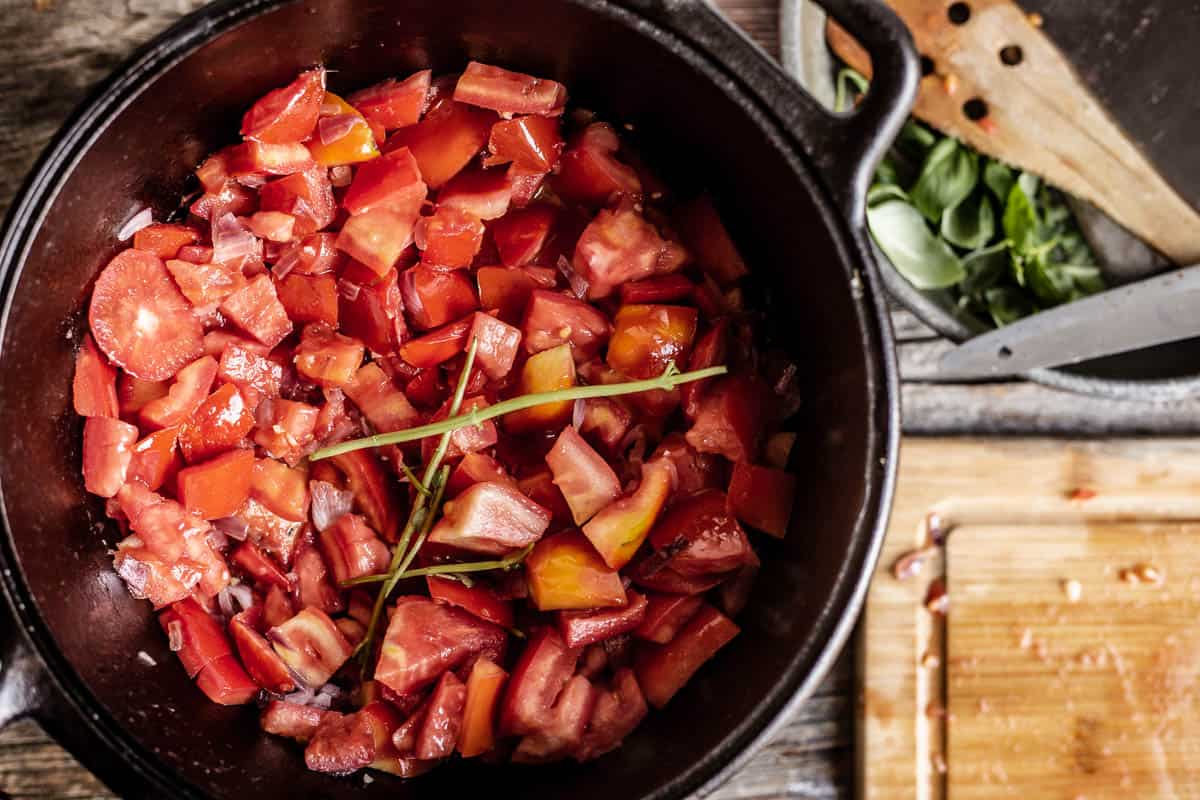
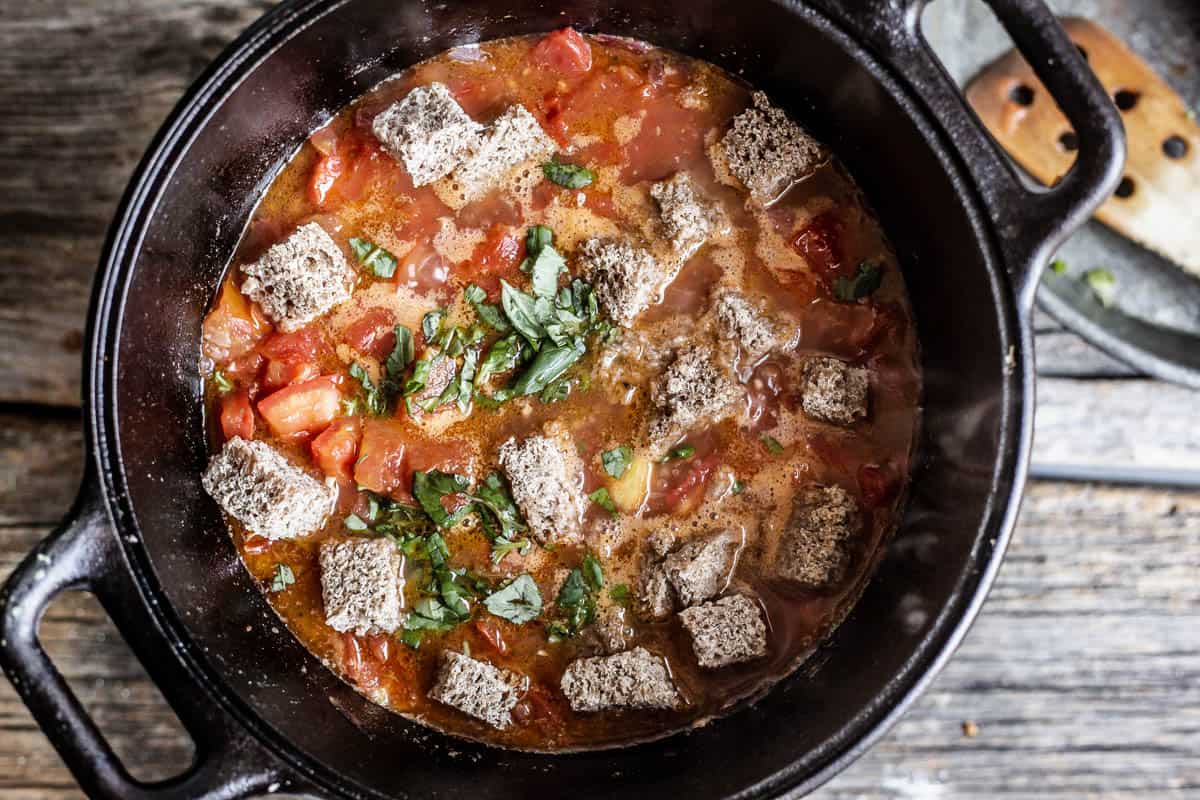
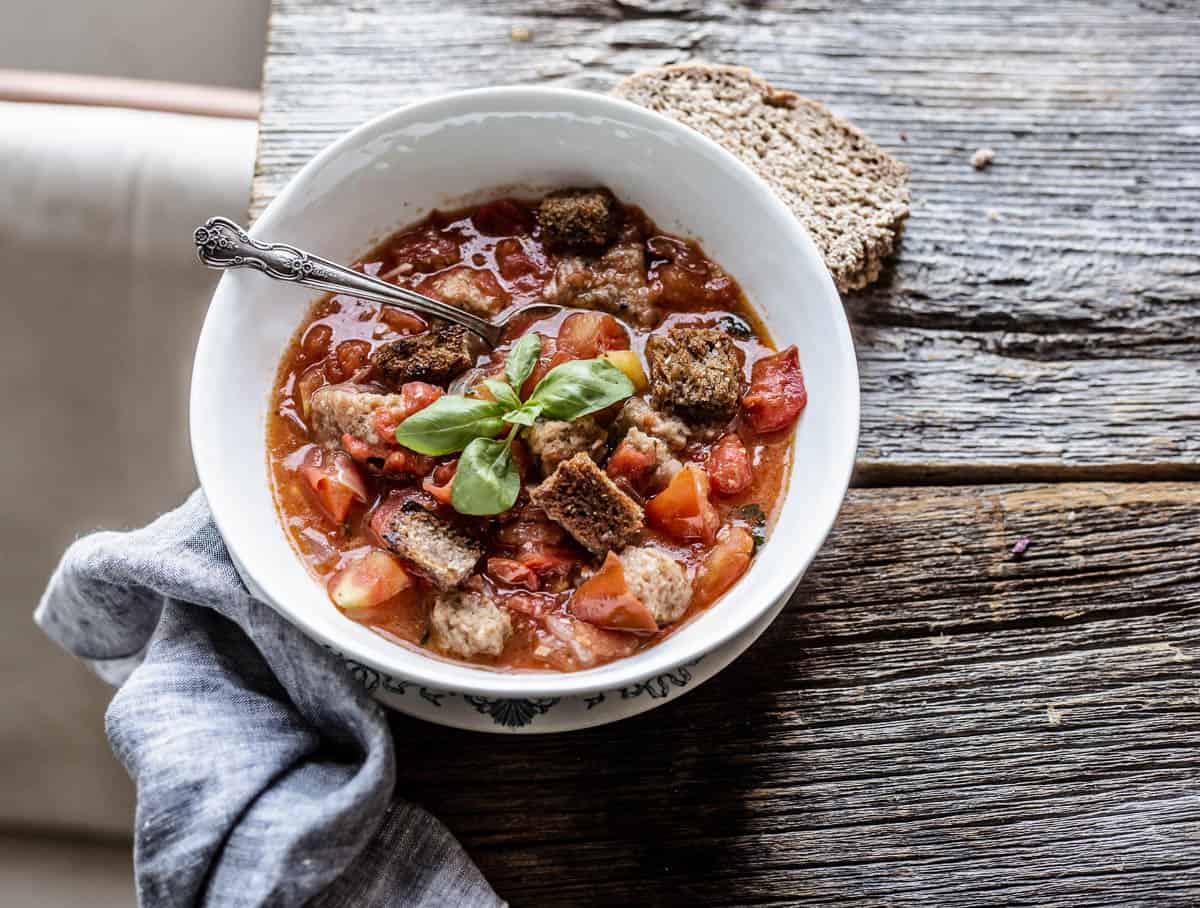
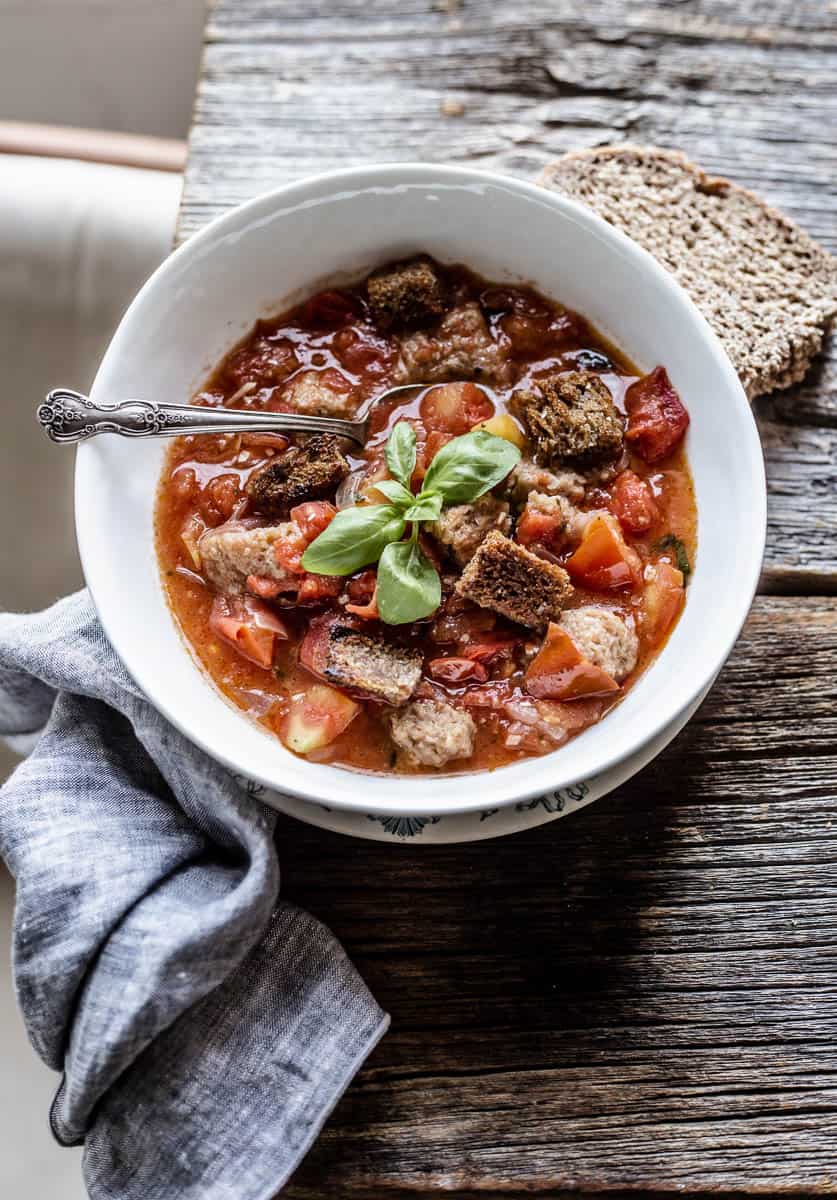
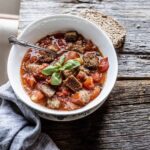
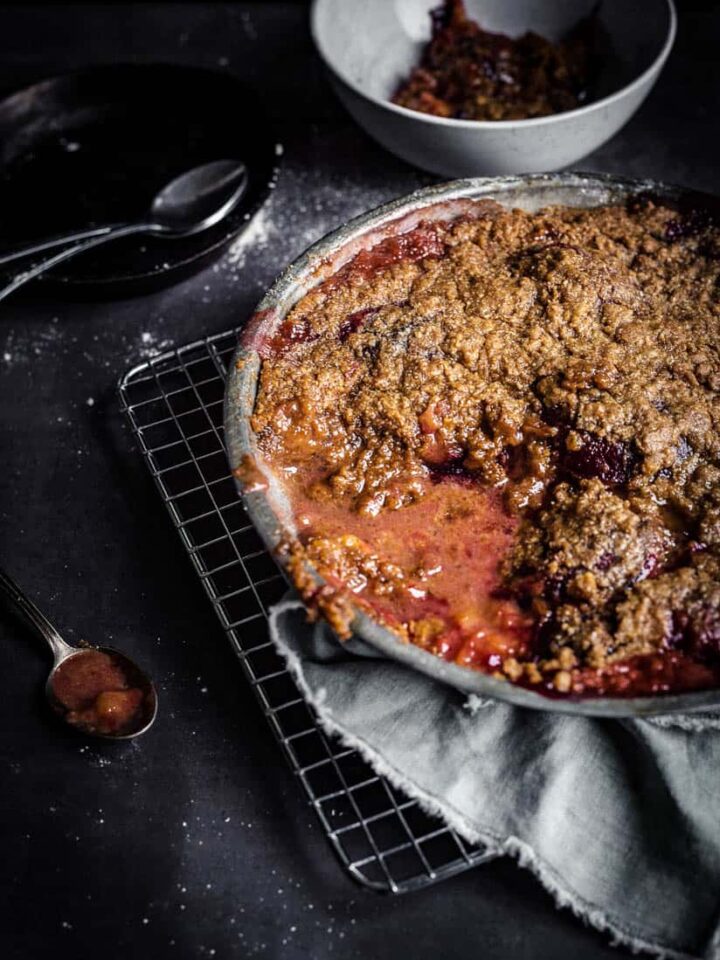
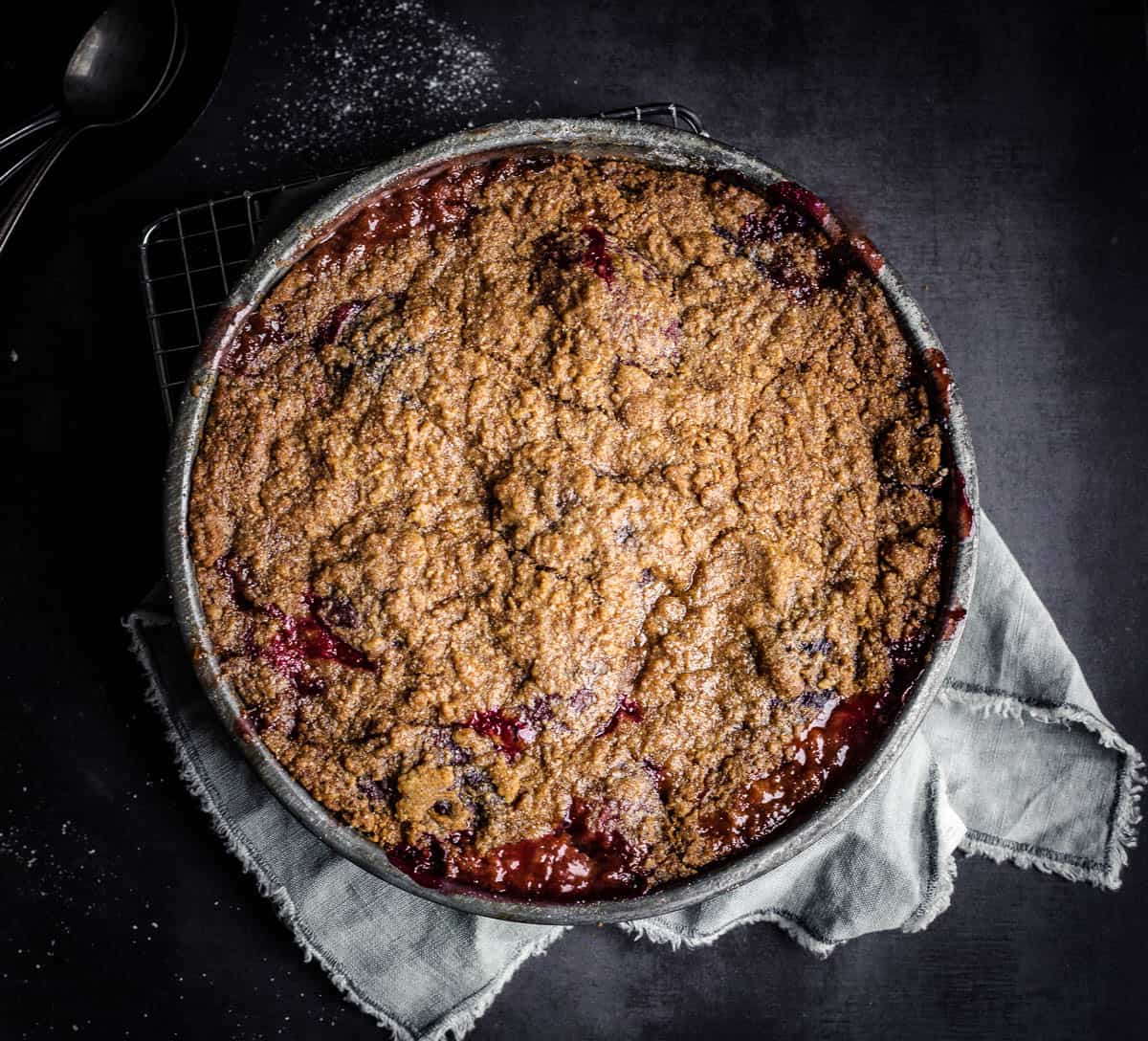

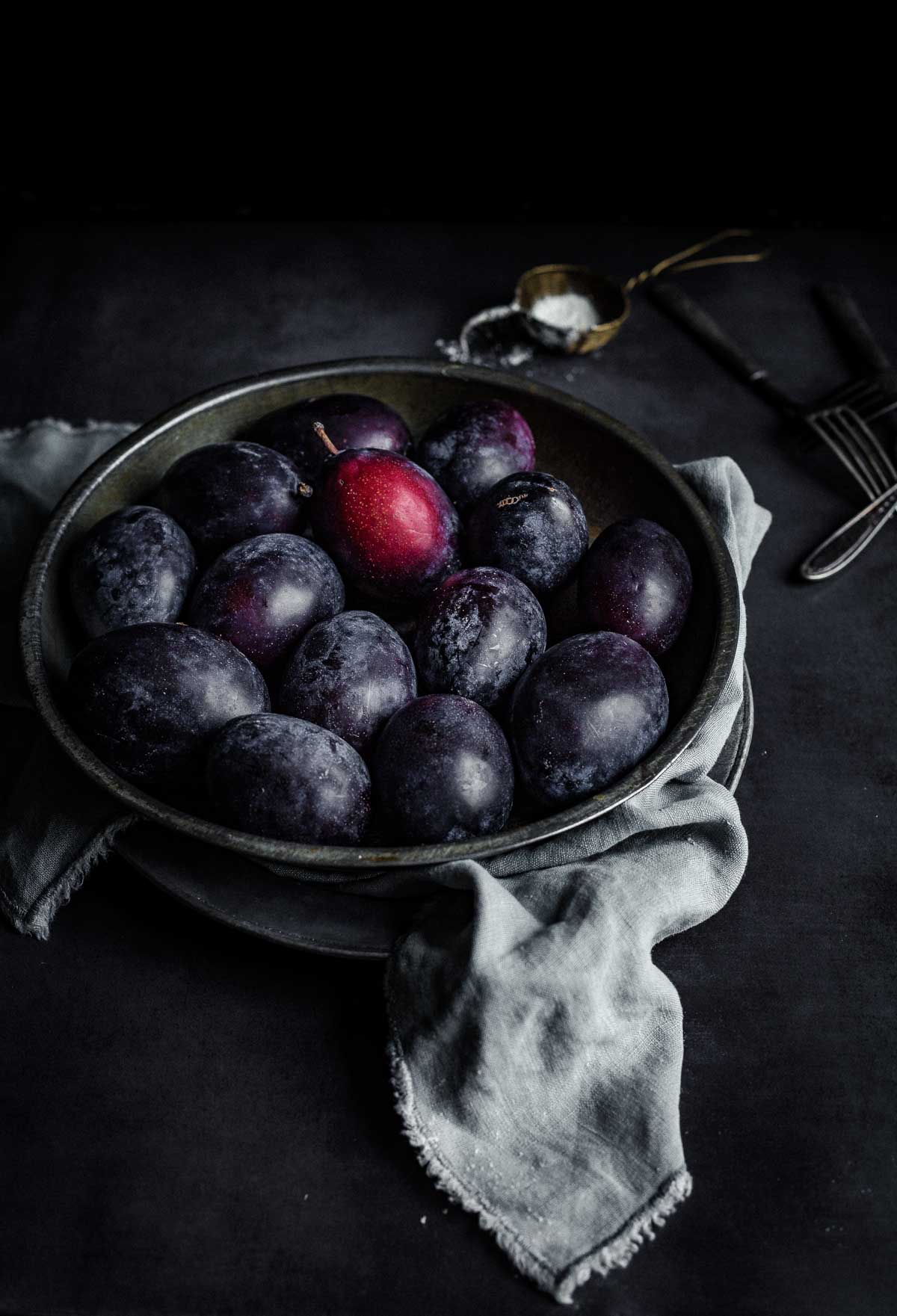
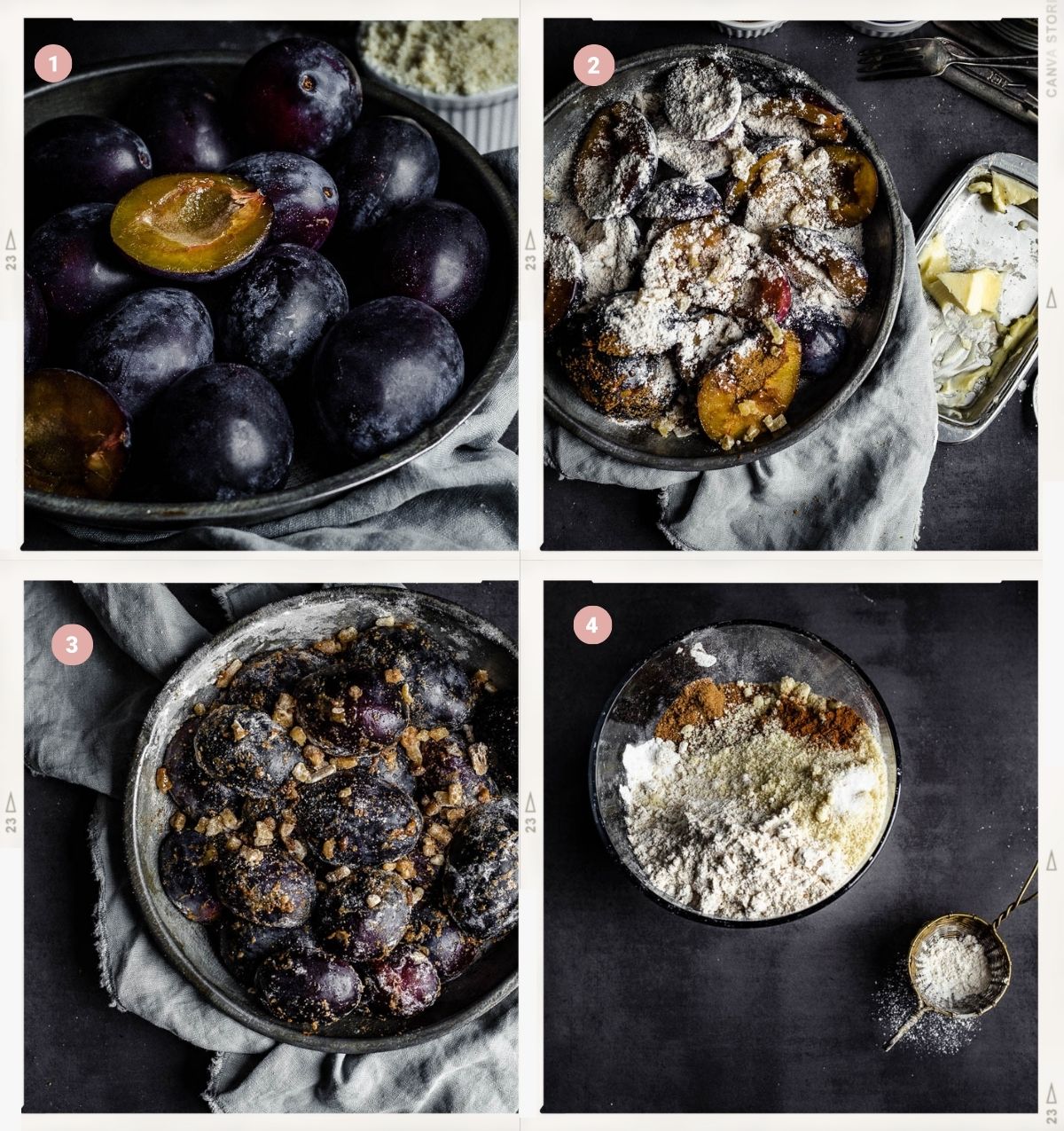
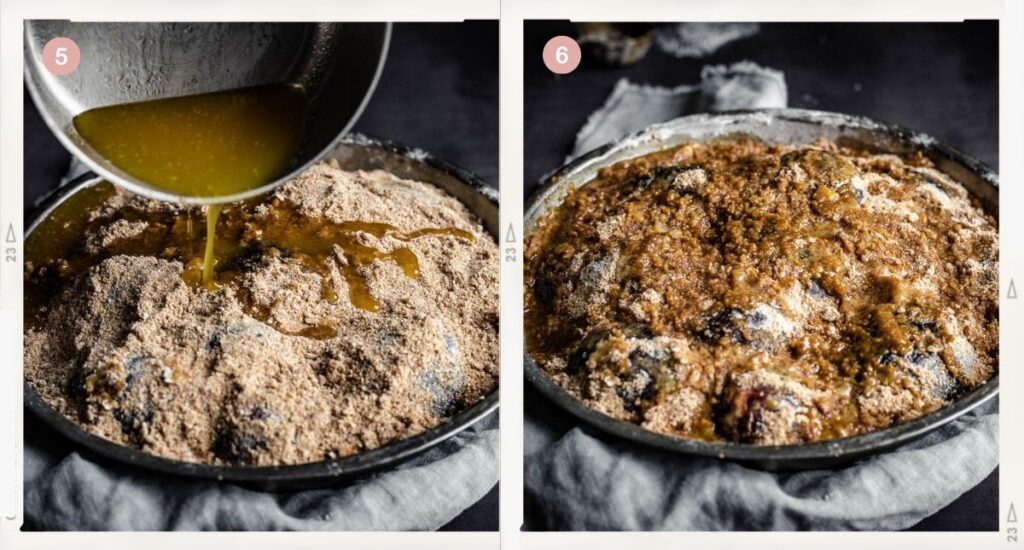
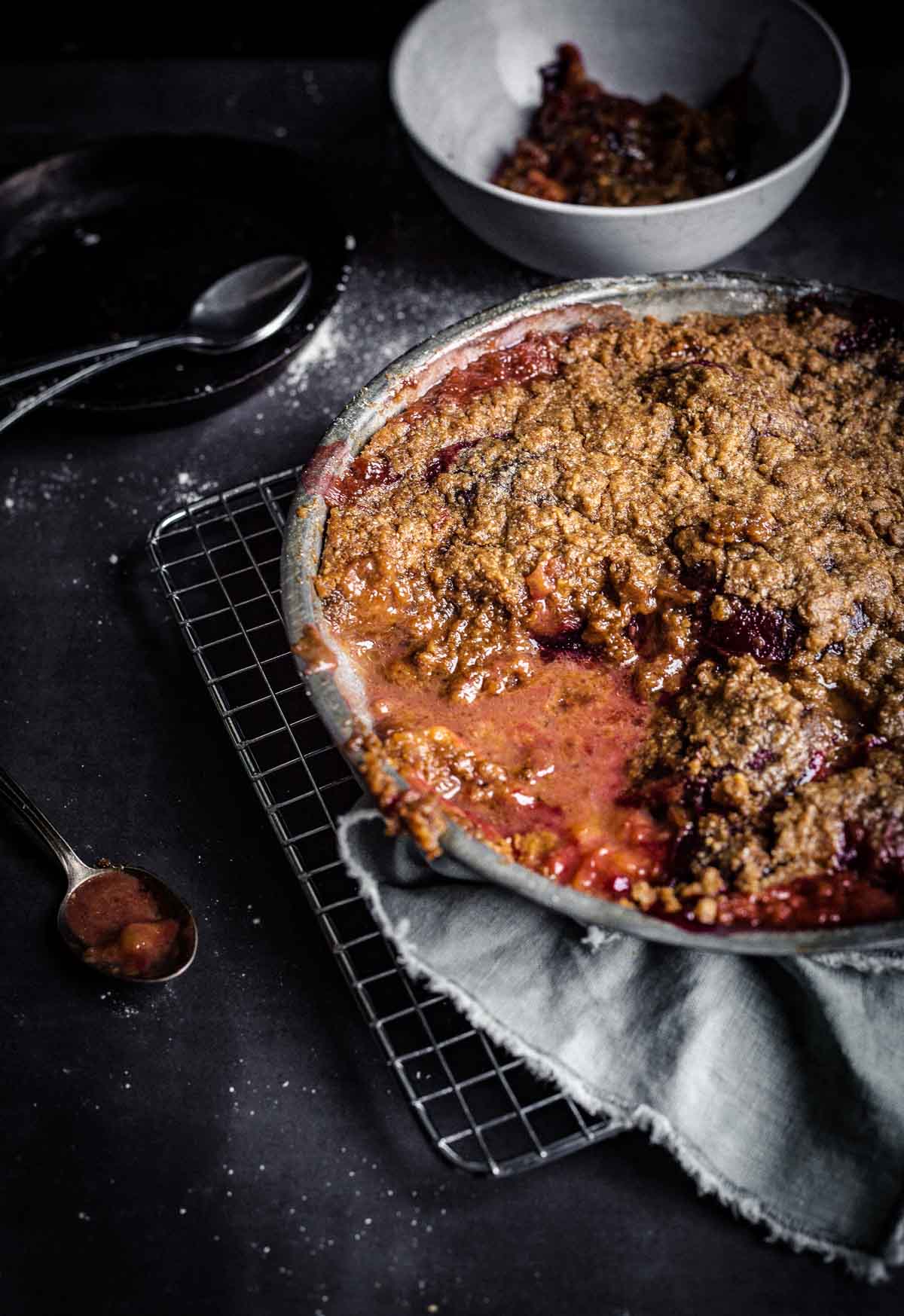






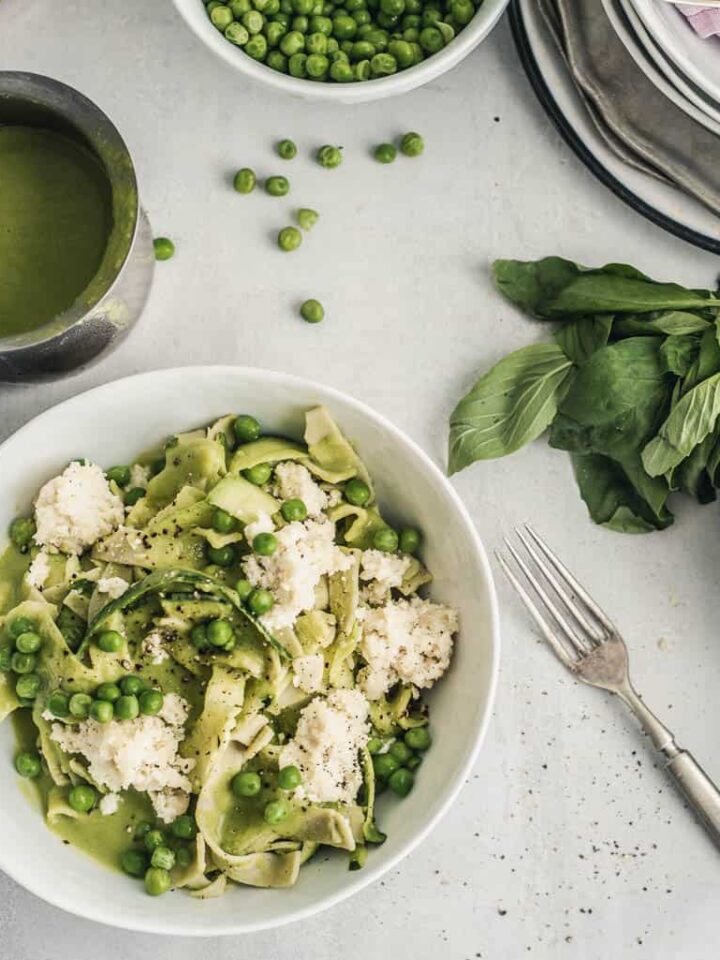
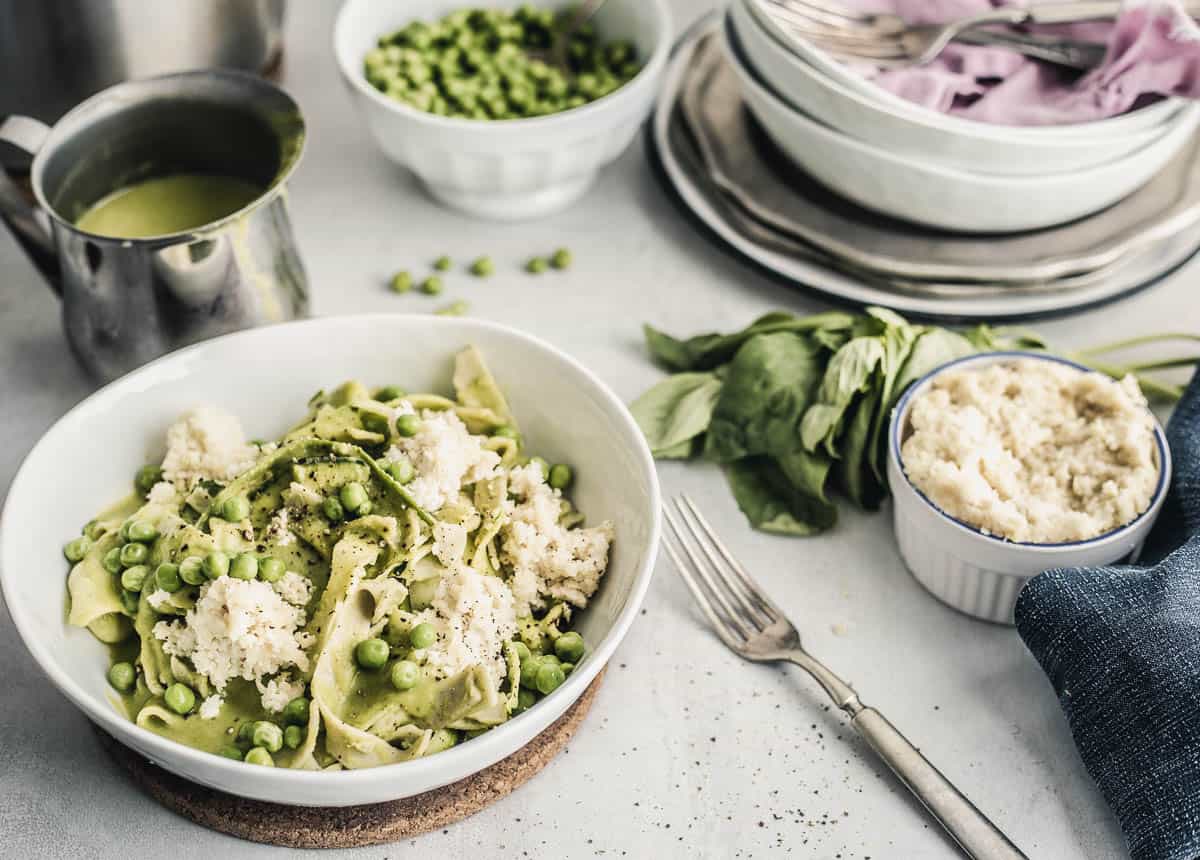
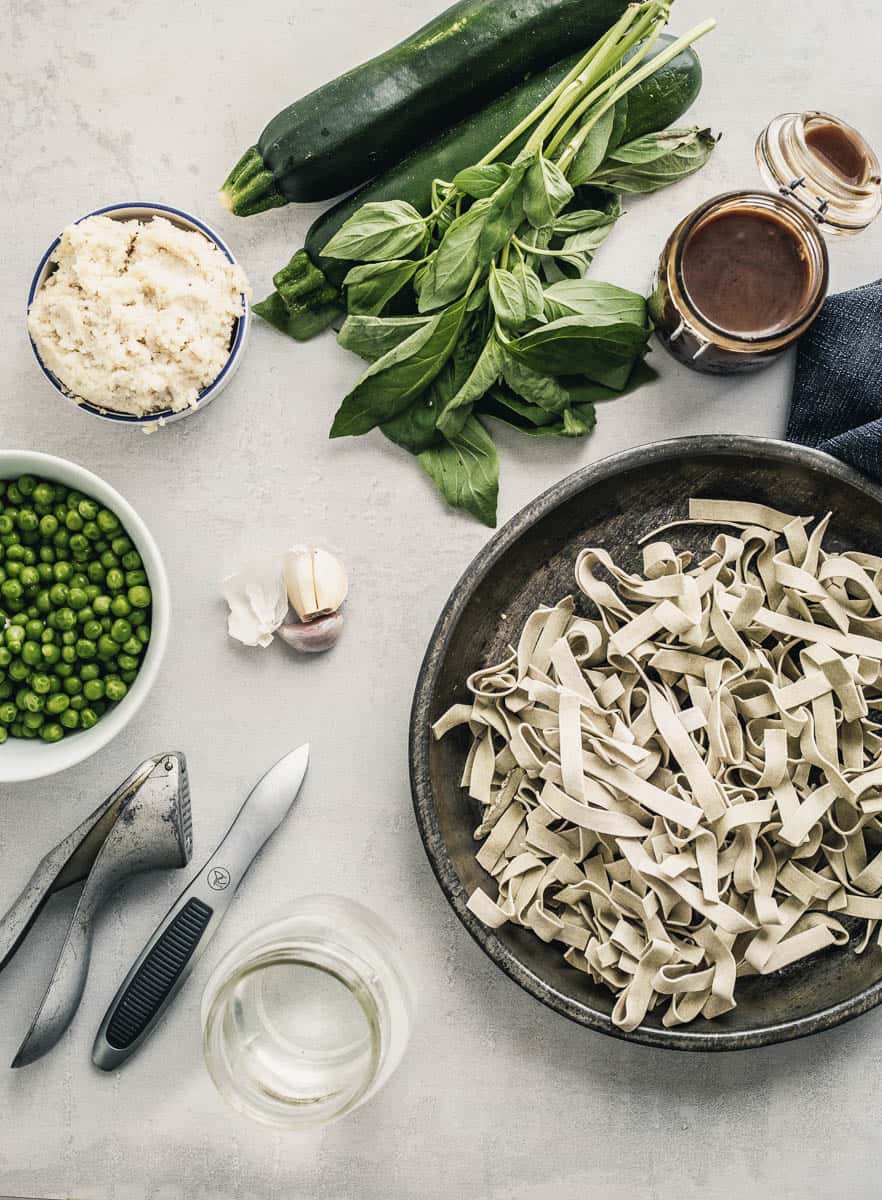
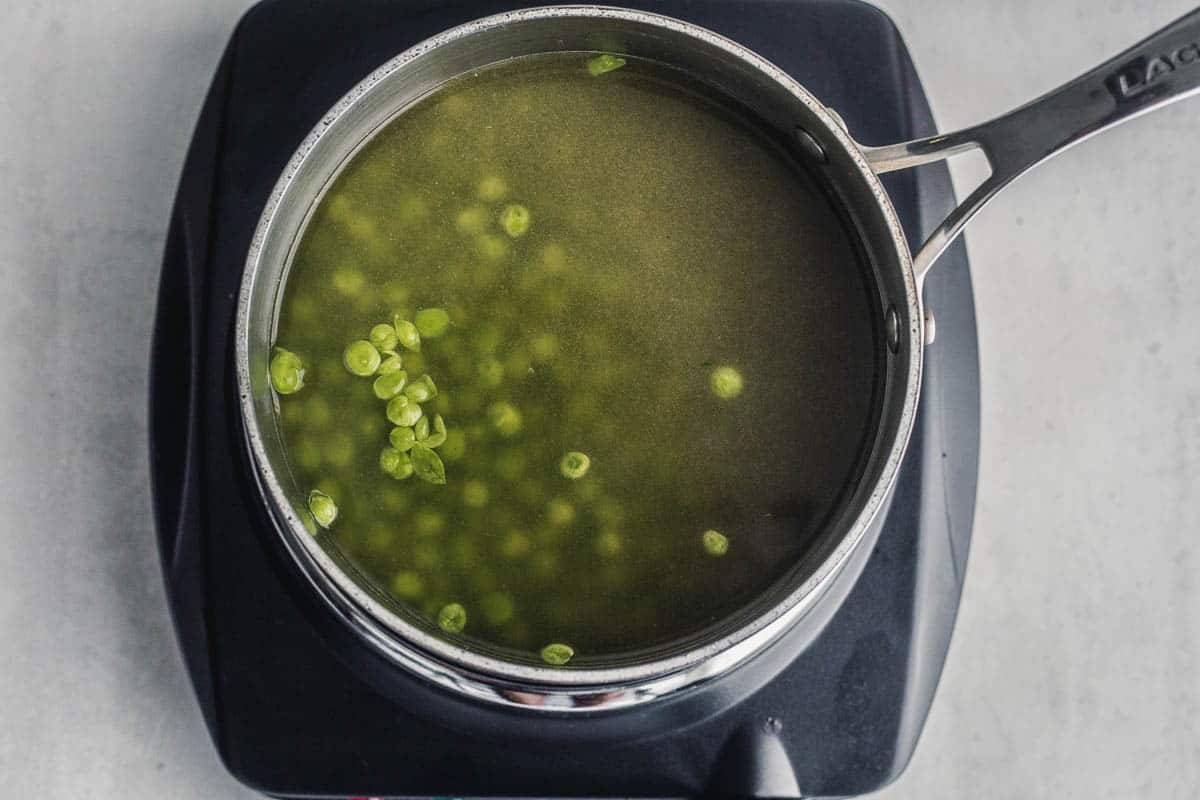
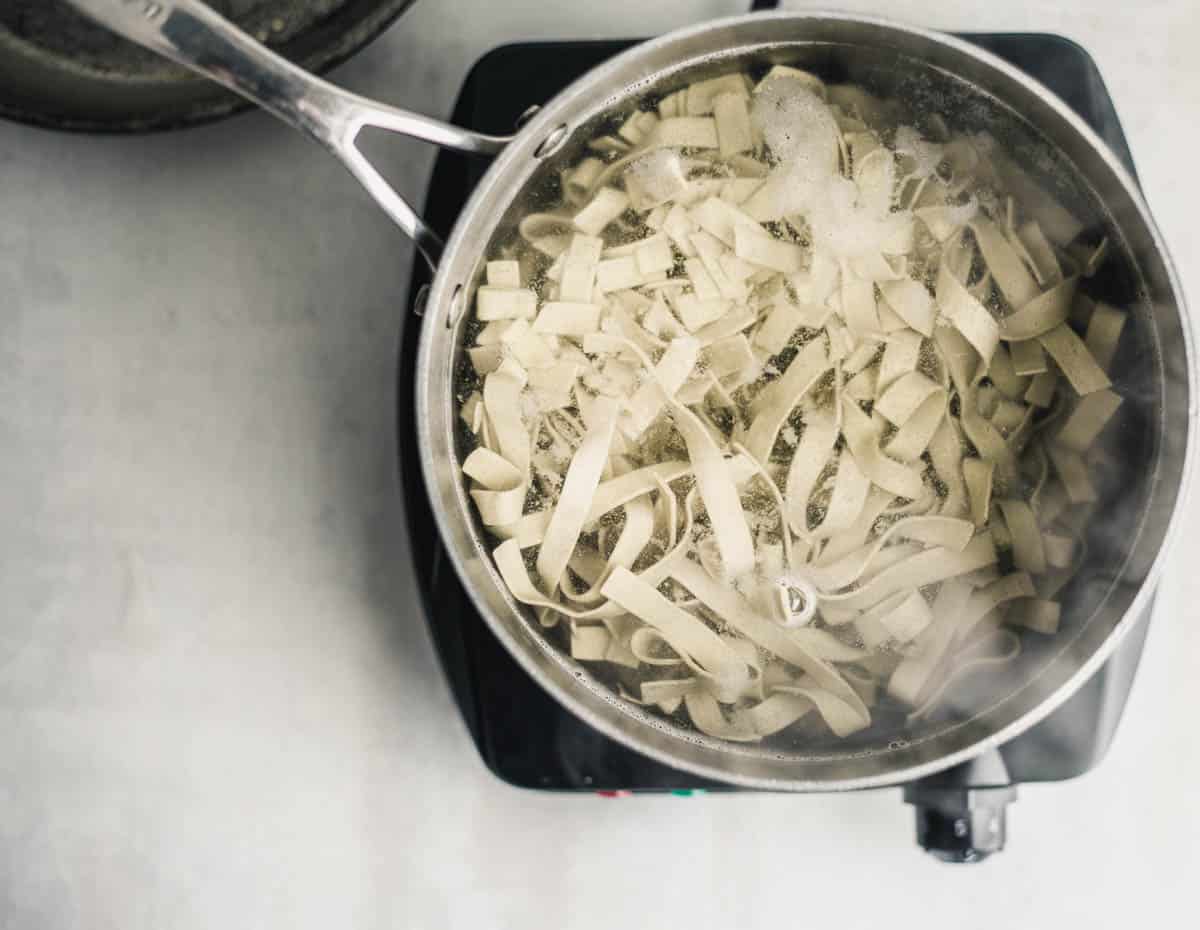
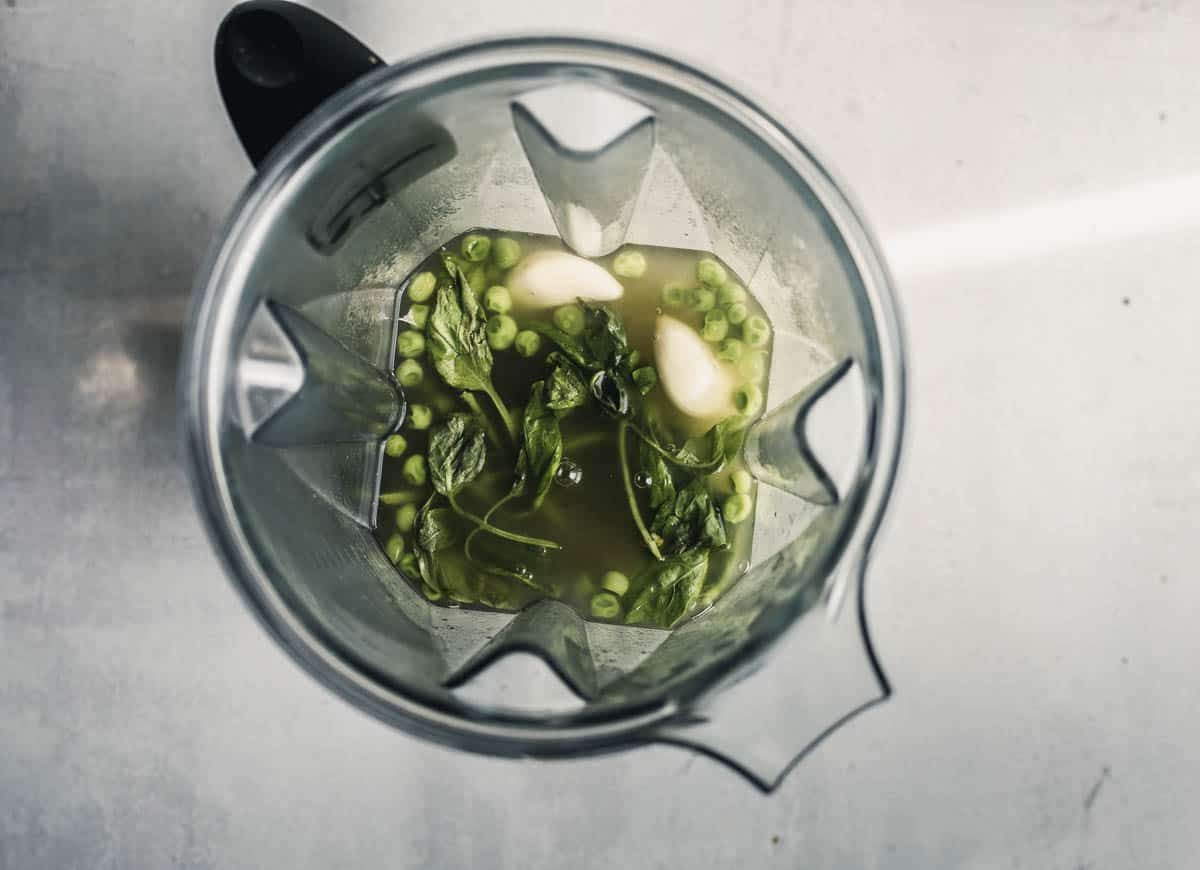
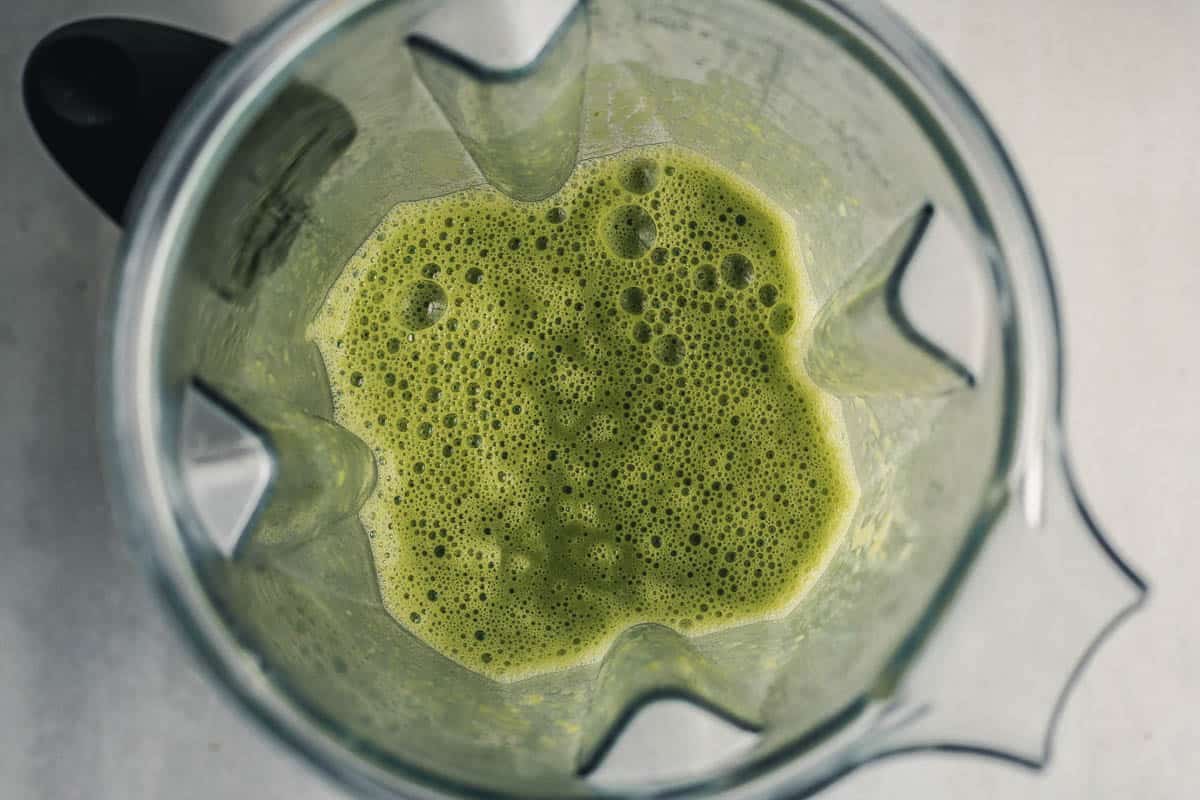
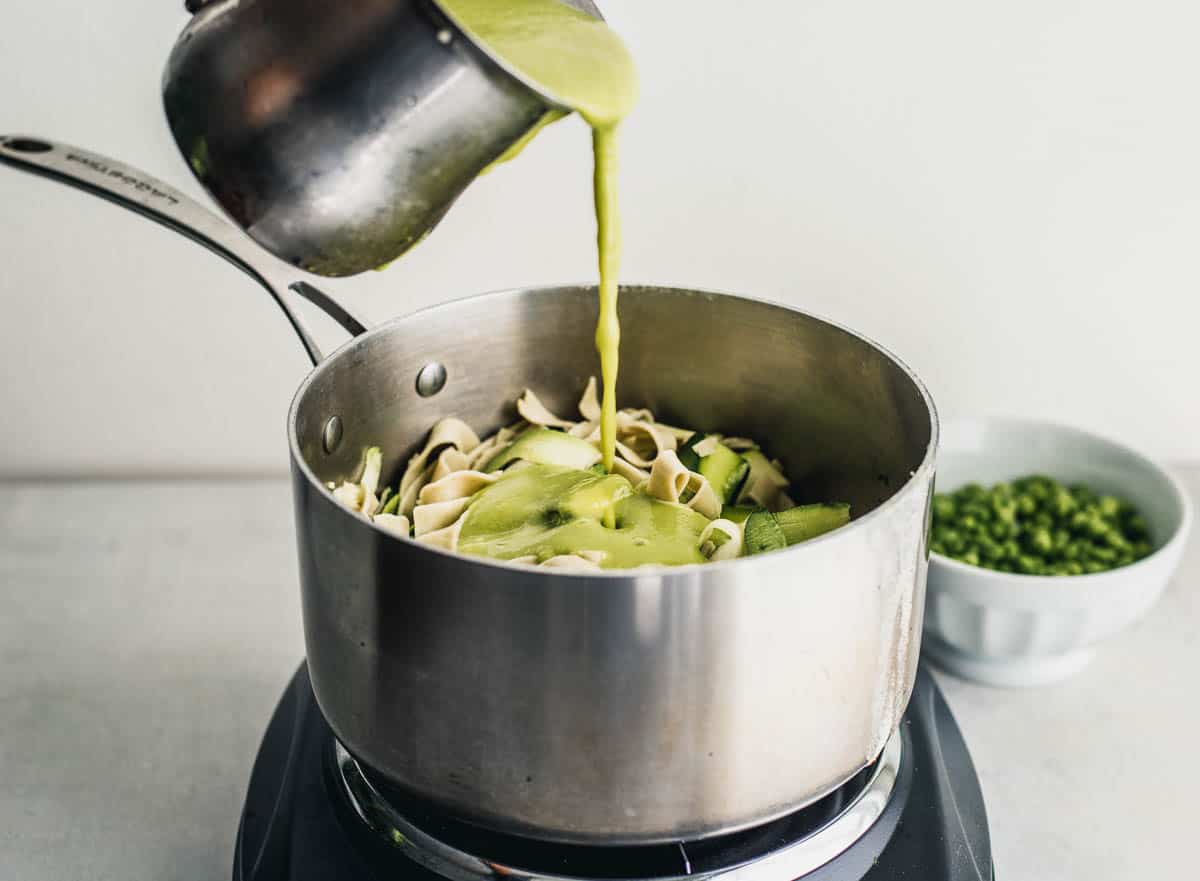
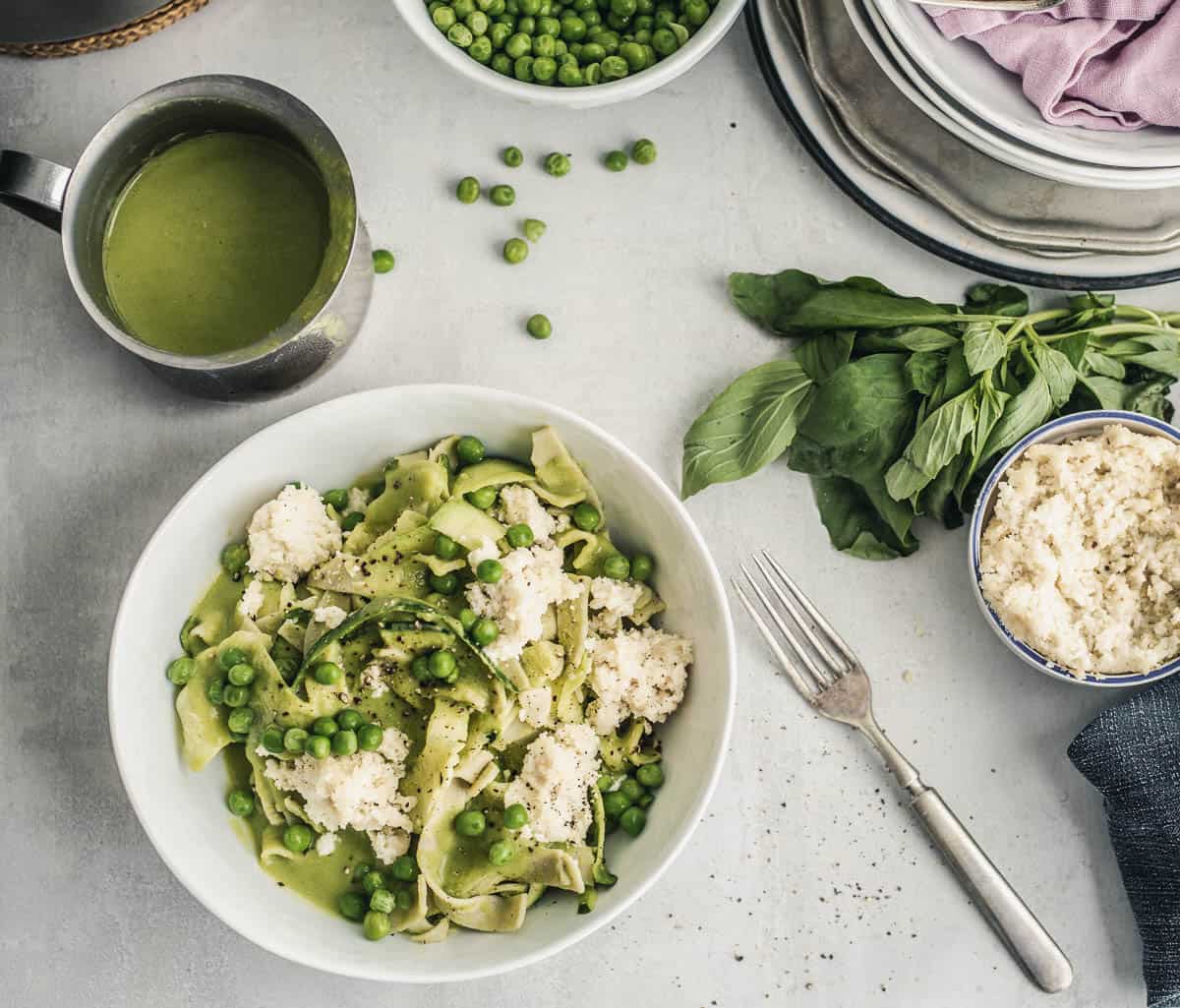
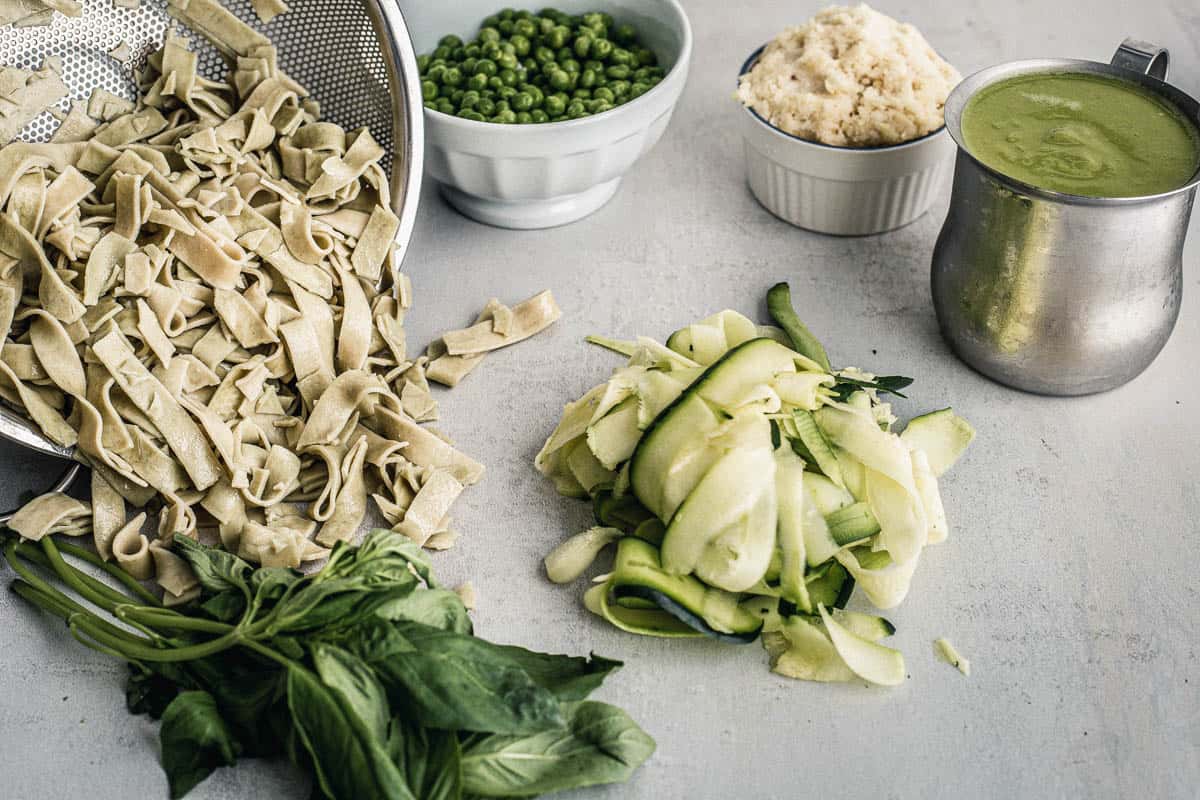
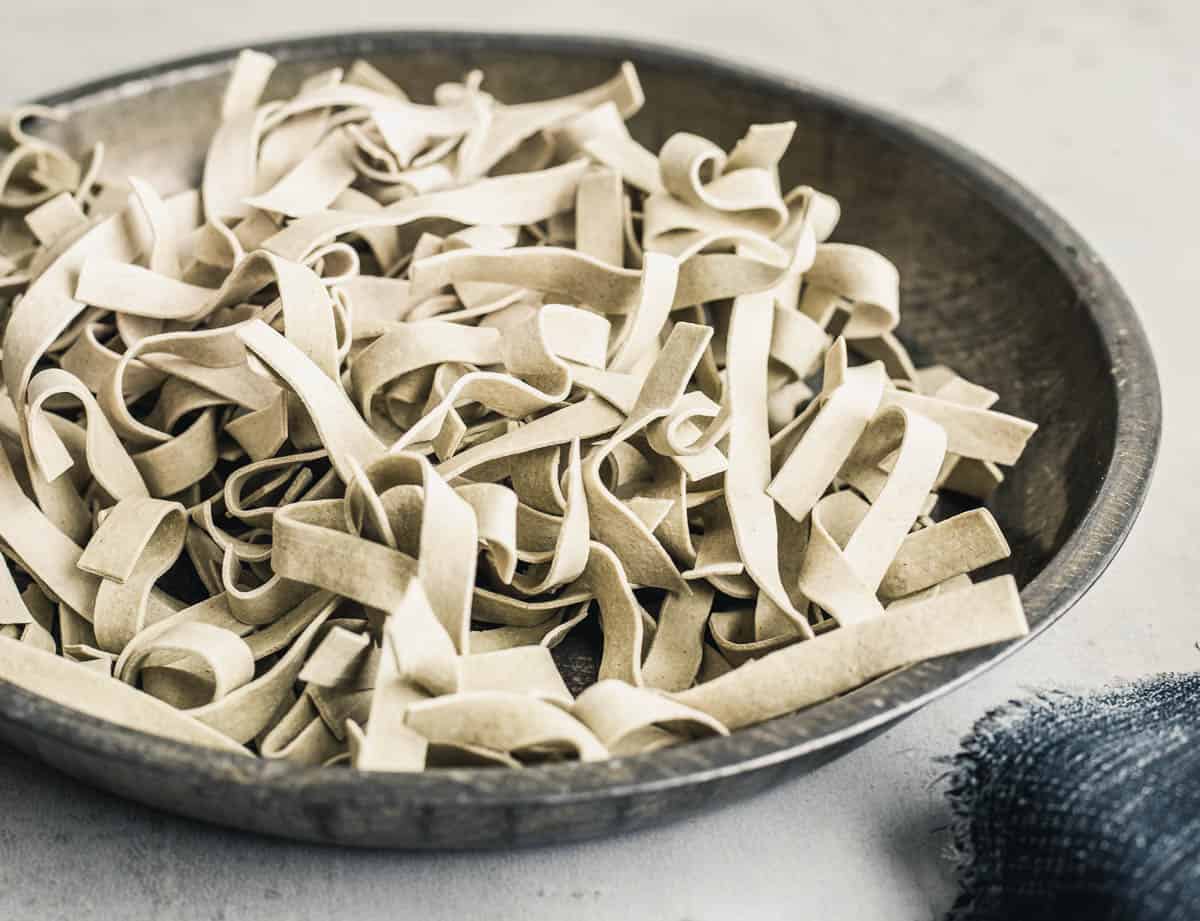
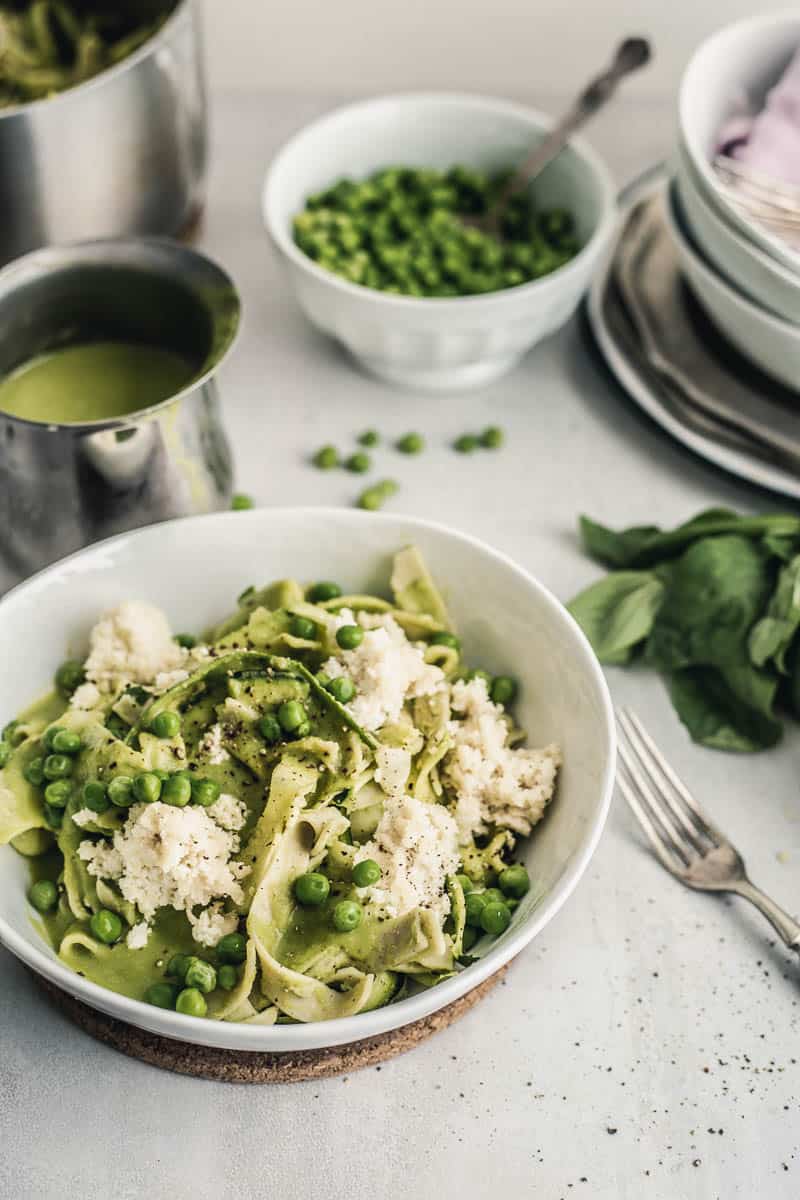
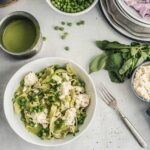


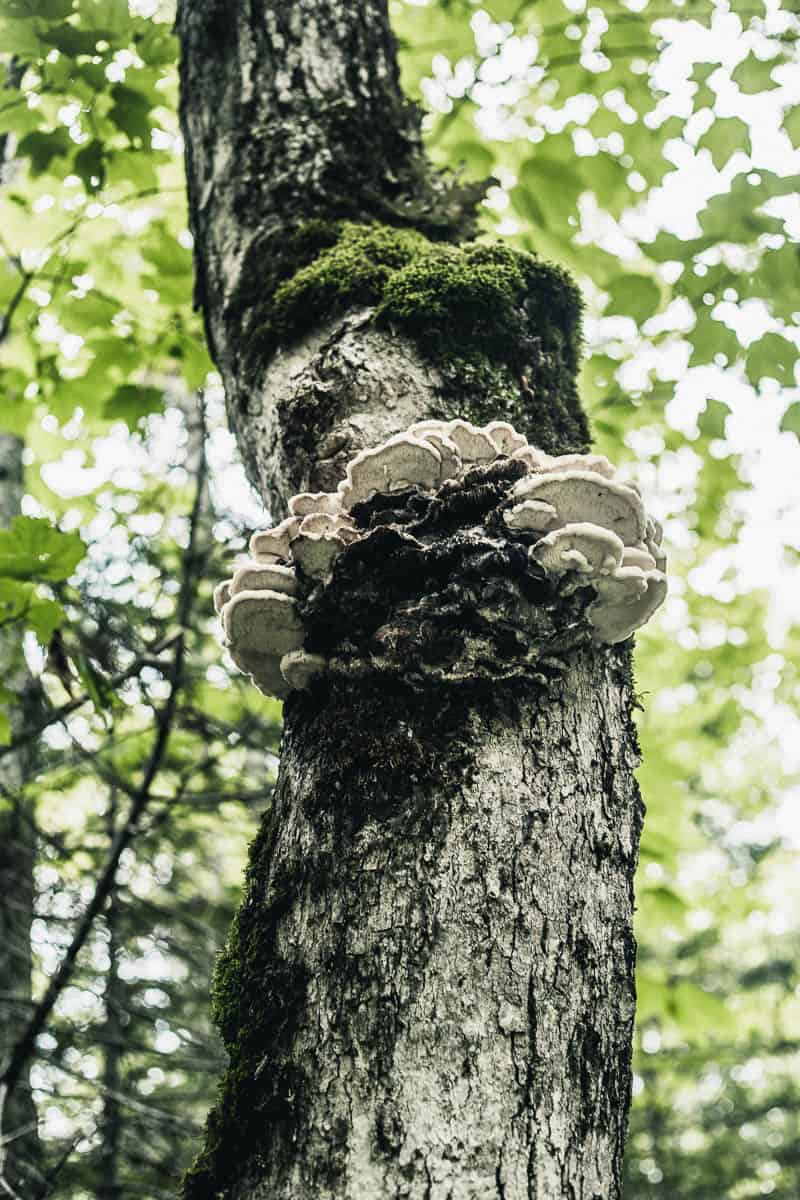










![A man, dressed in a dark blue shirt, holds a spoon in his left hand and pours brown sauce into a white enamel mug that he's holding in his right hand]](https://bitingintolife.net/wp-content/uploads/2020/07/Demi-Glace-11-720x960.jpg)


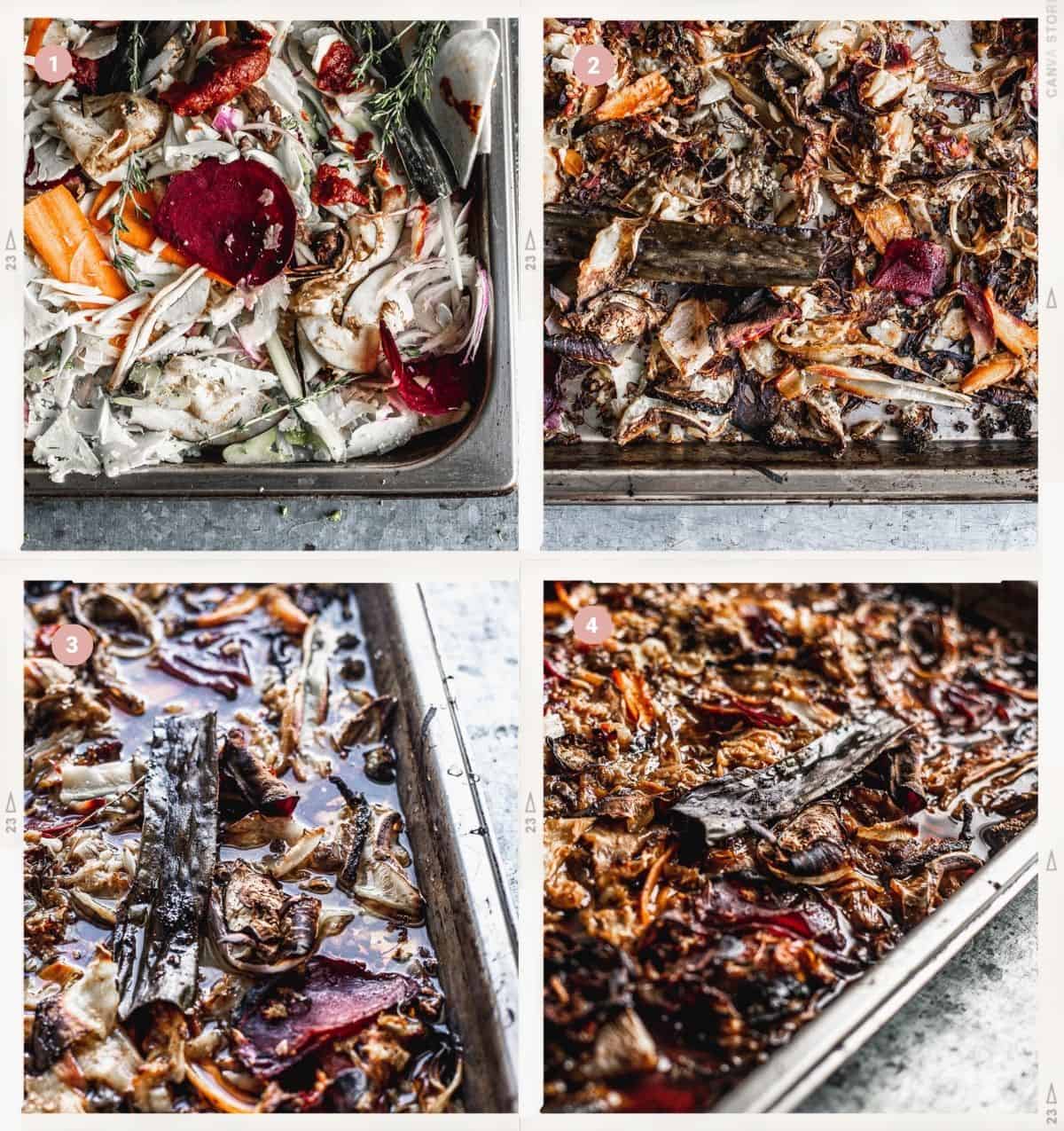
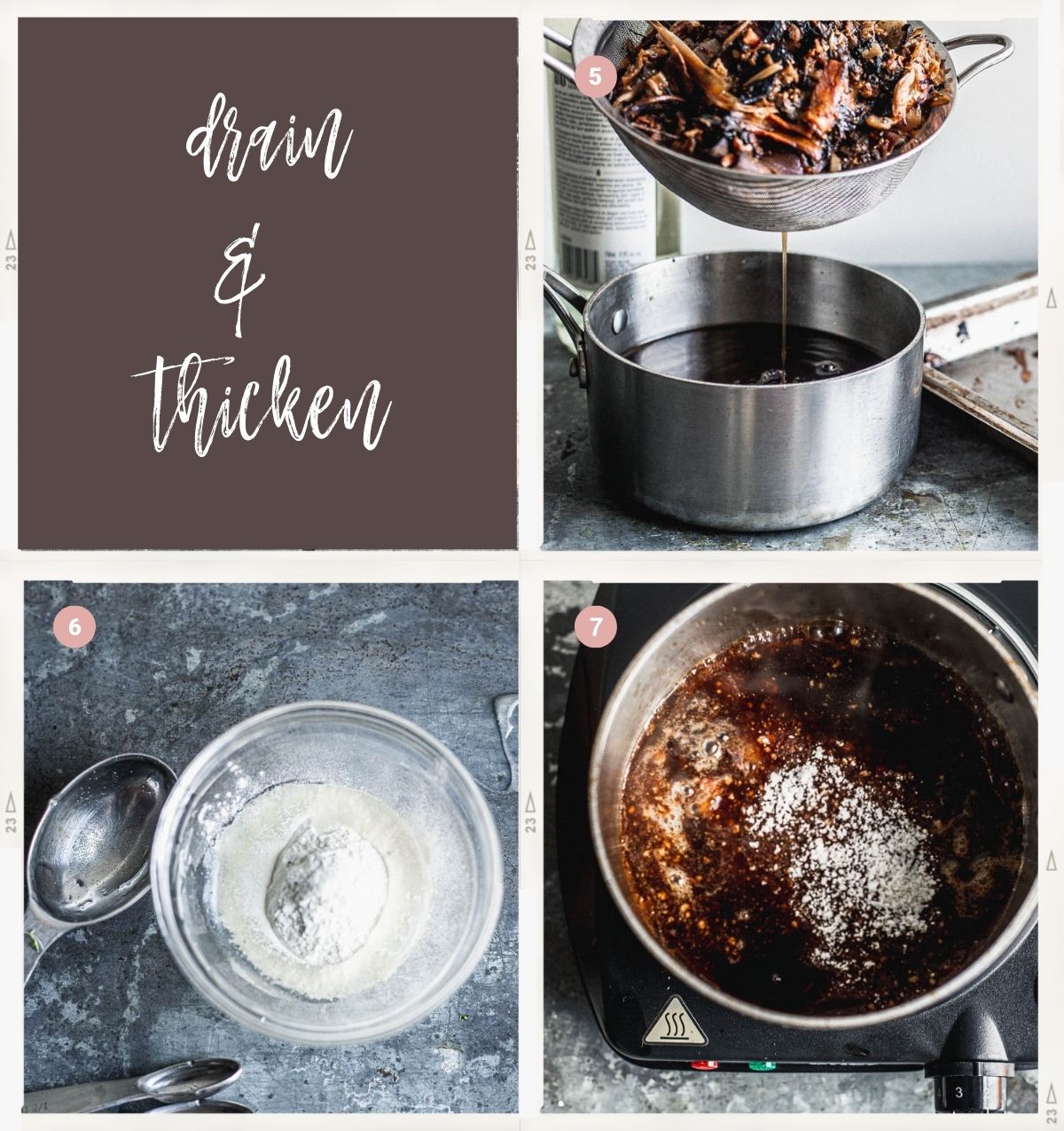
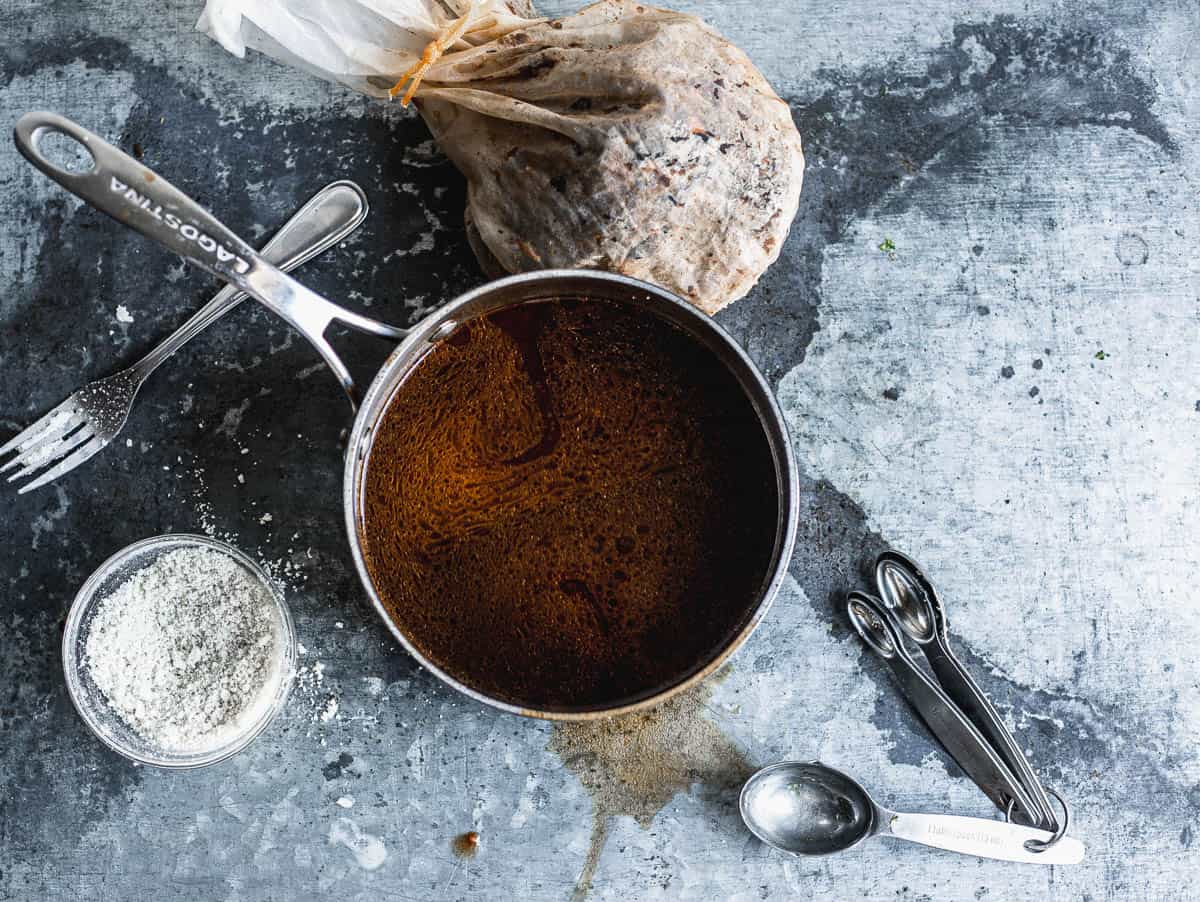
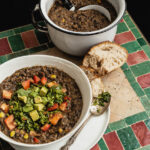

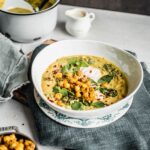
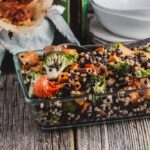
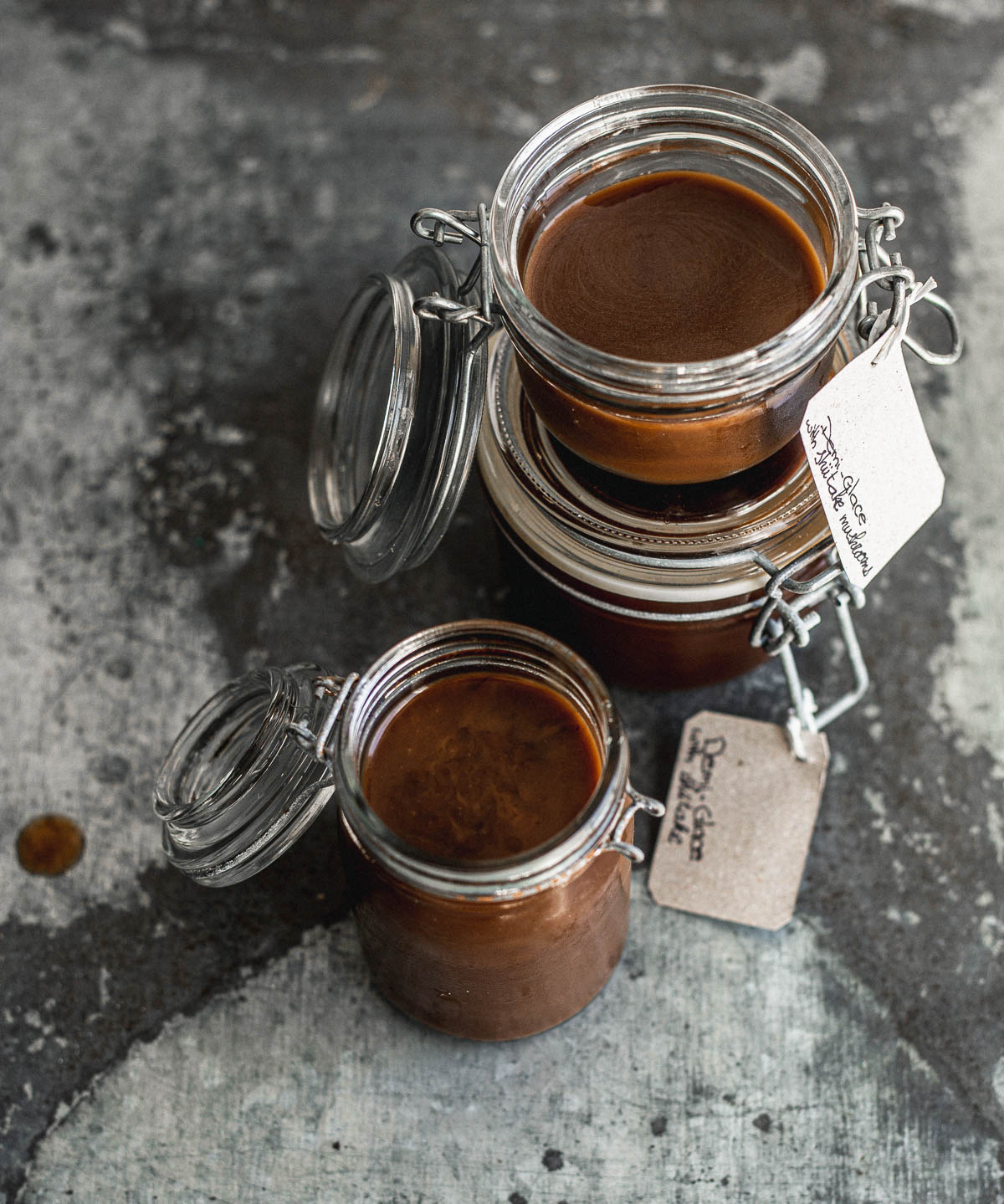
![A man, dressed in a dark blue shirt, holds a spoon in his left hand and pours brown sauce into a white enamel mug that he's holding in his right hand]](https://bitingintolife.net/wp-content/uploads/2020/07/Demi-Glace-11-150x150.jpg)
